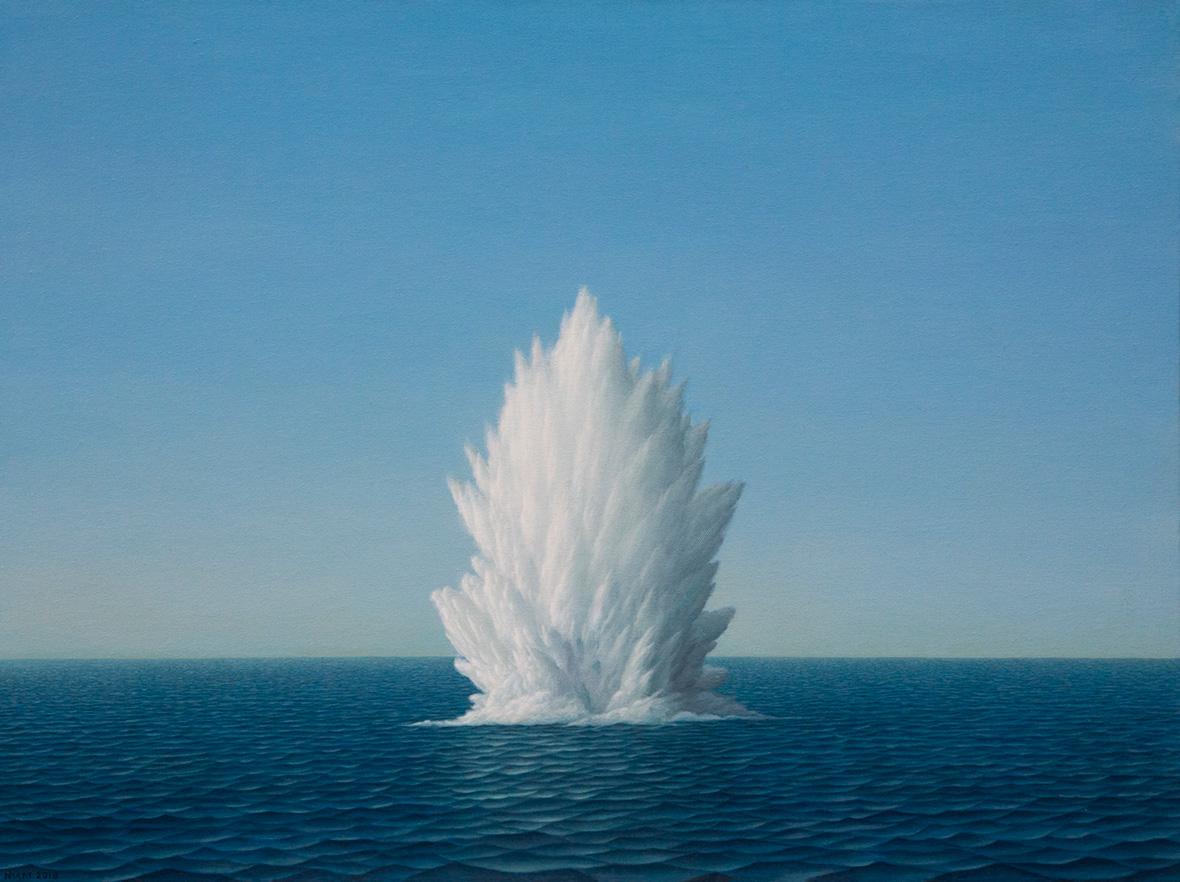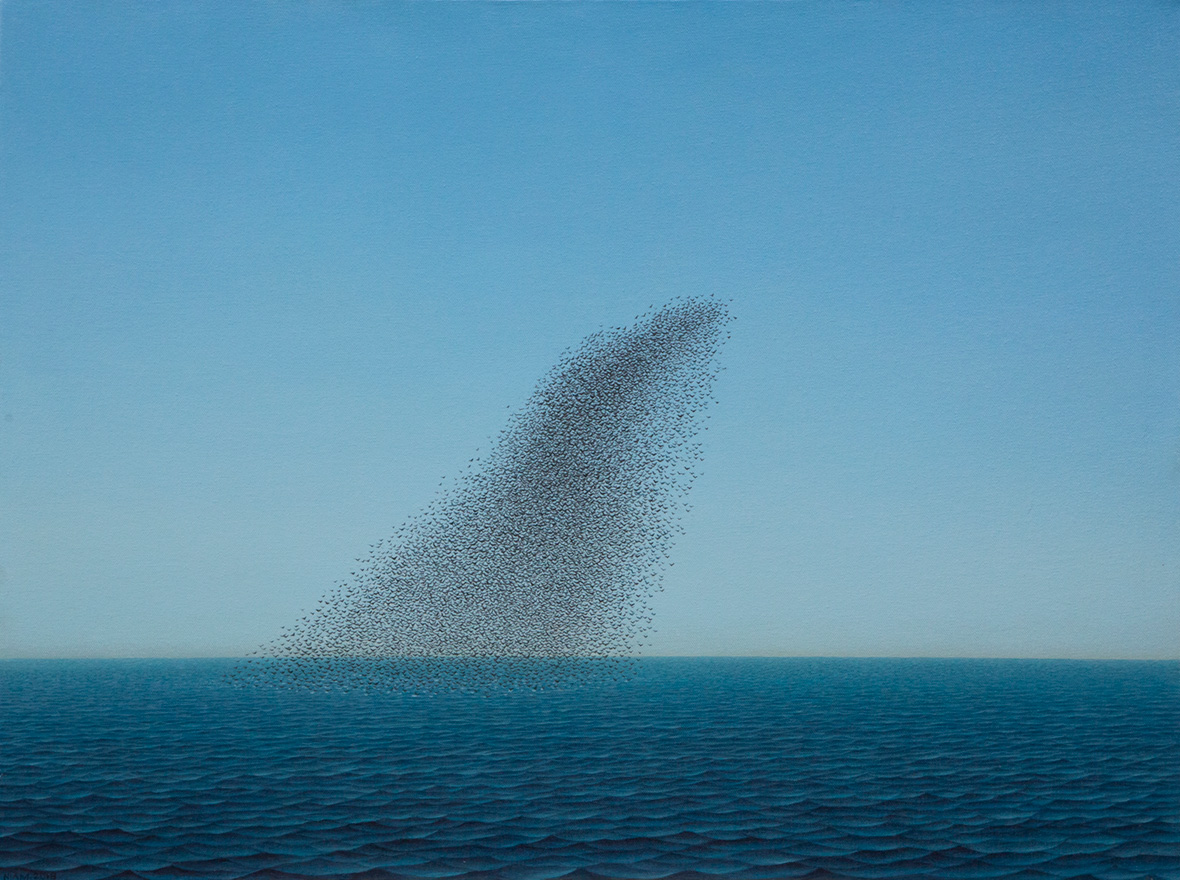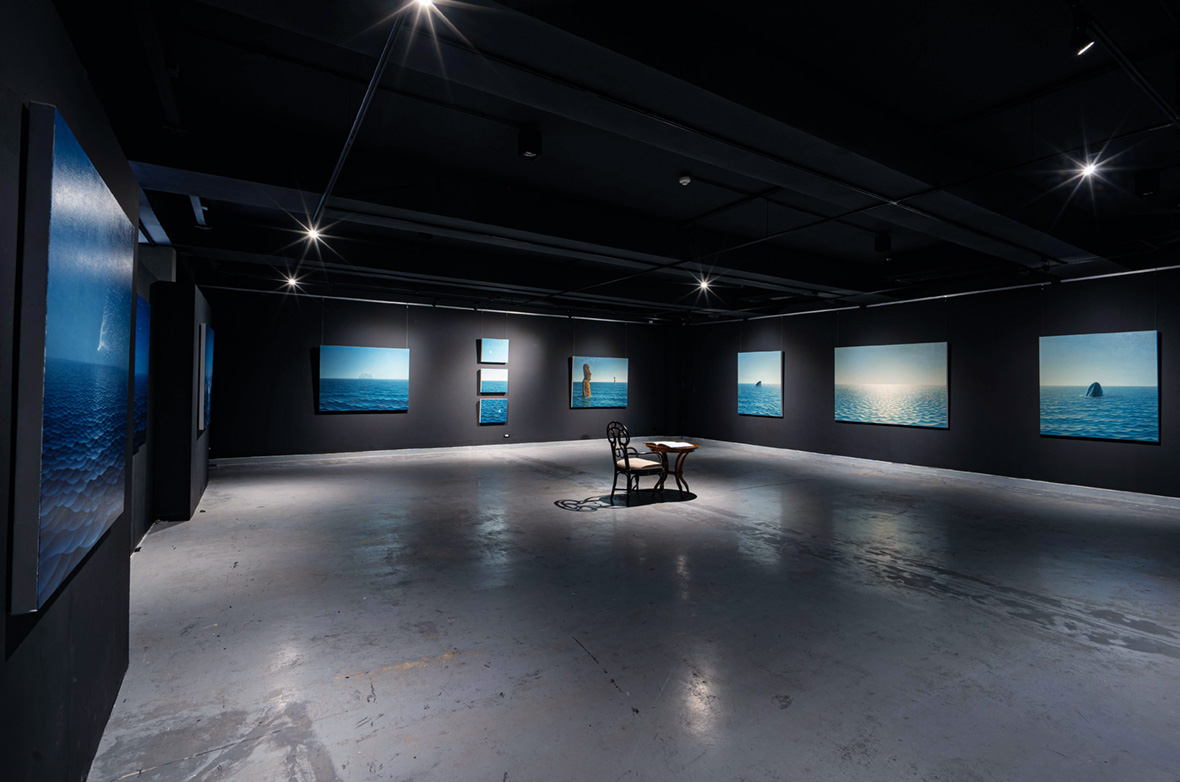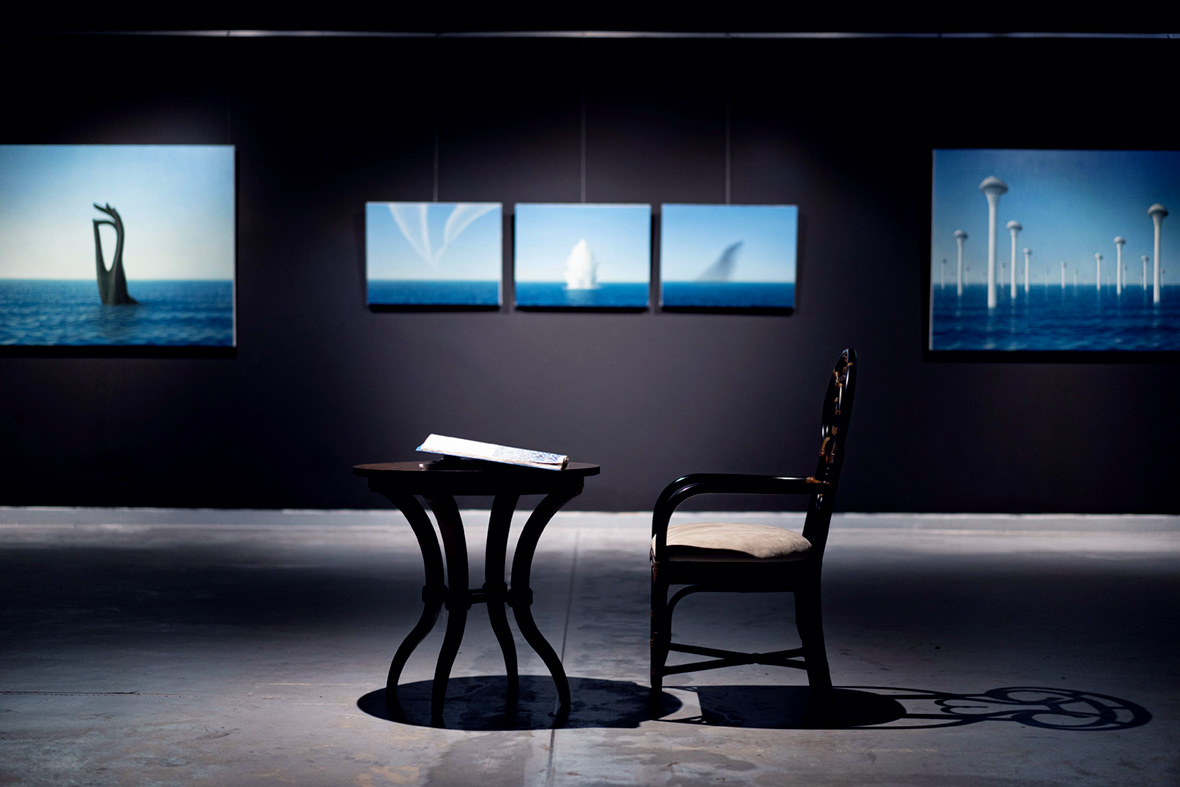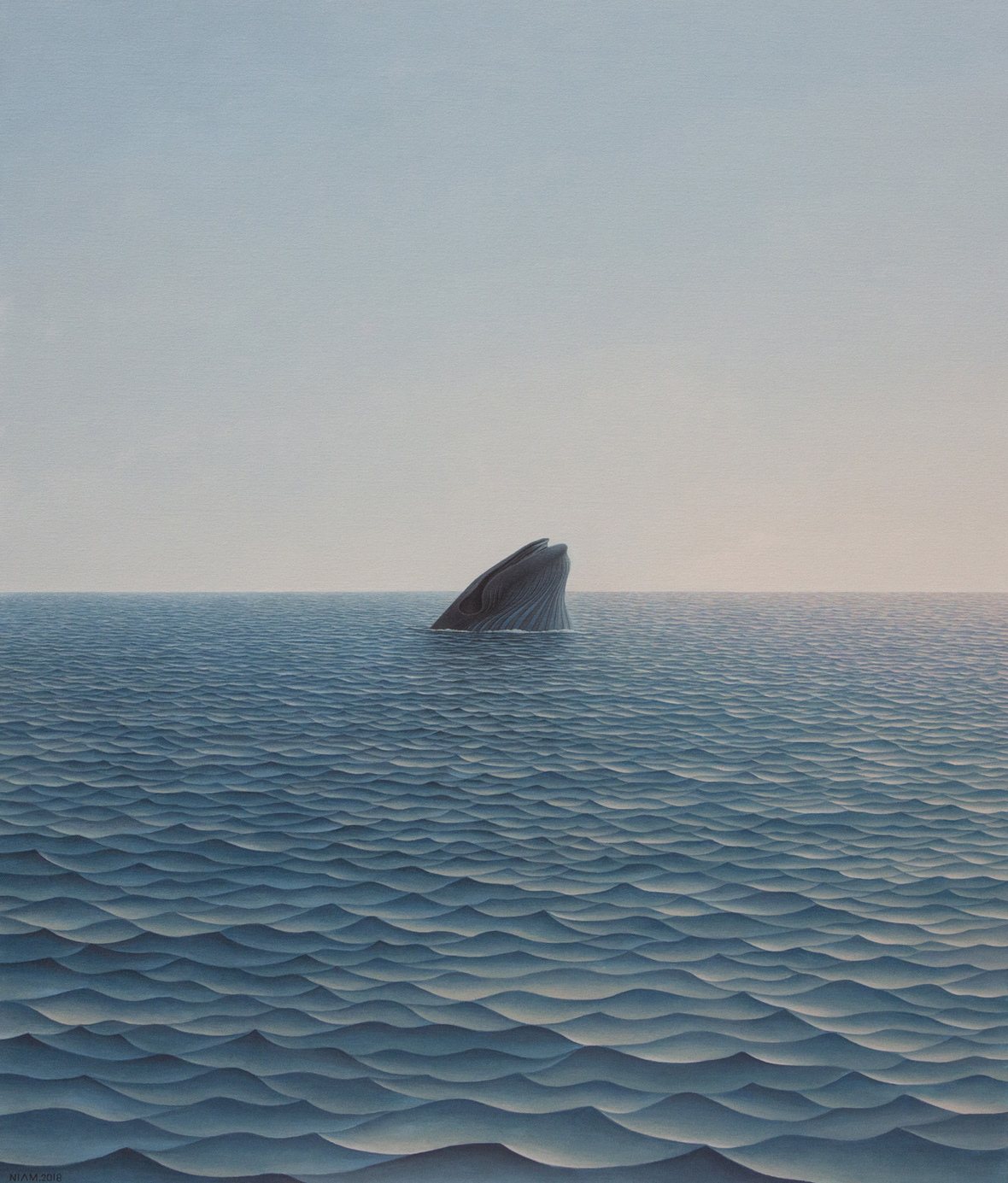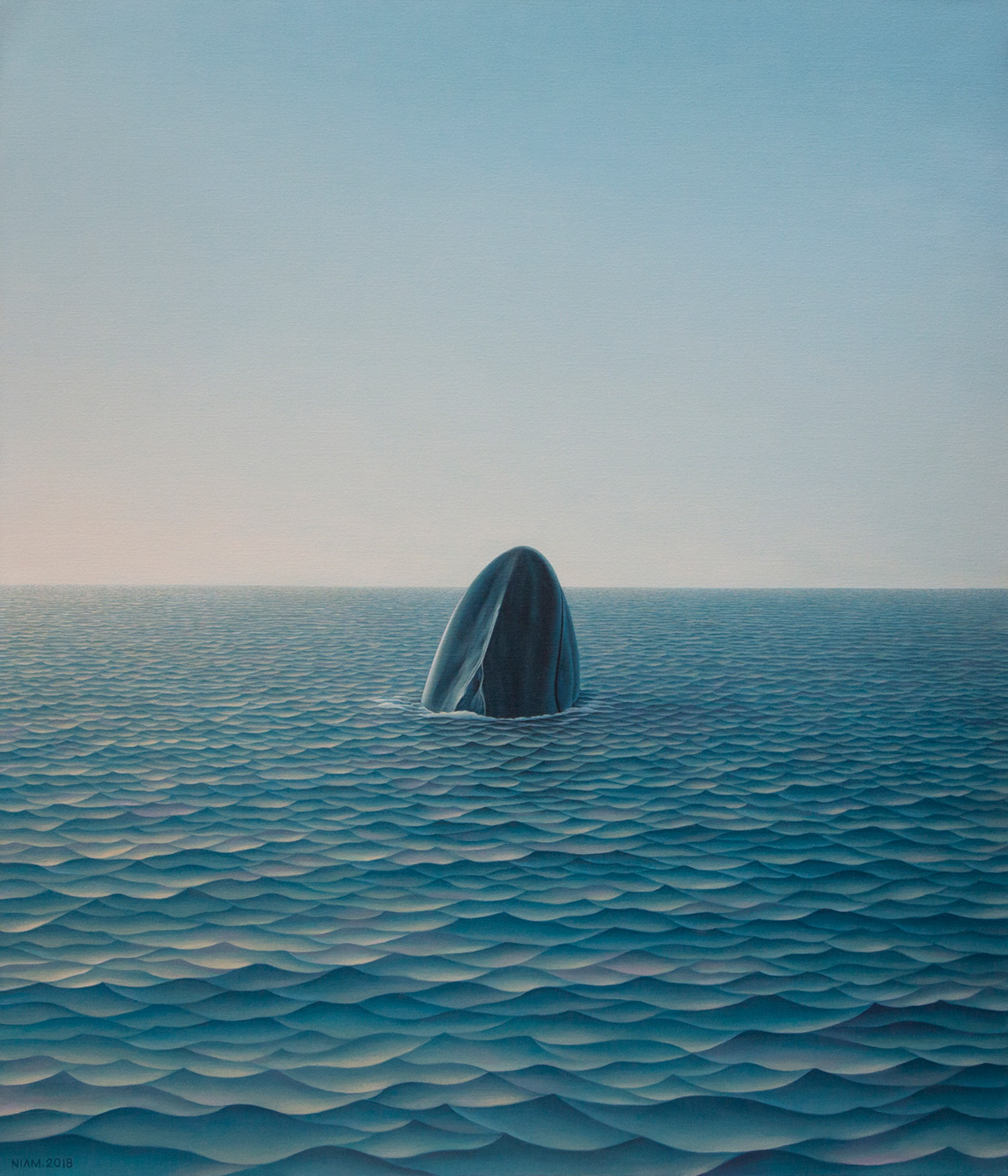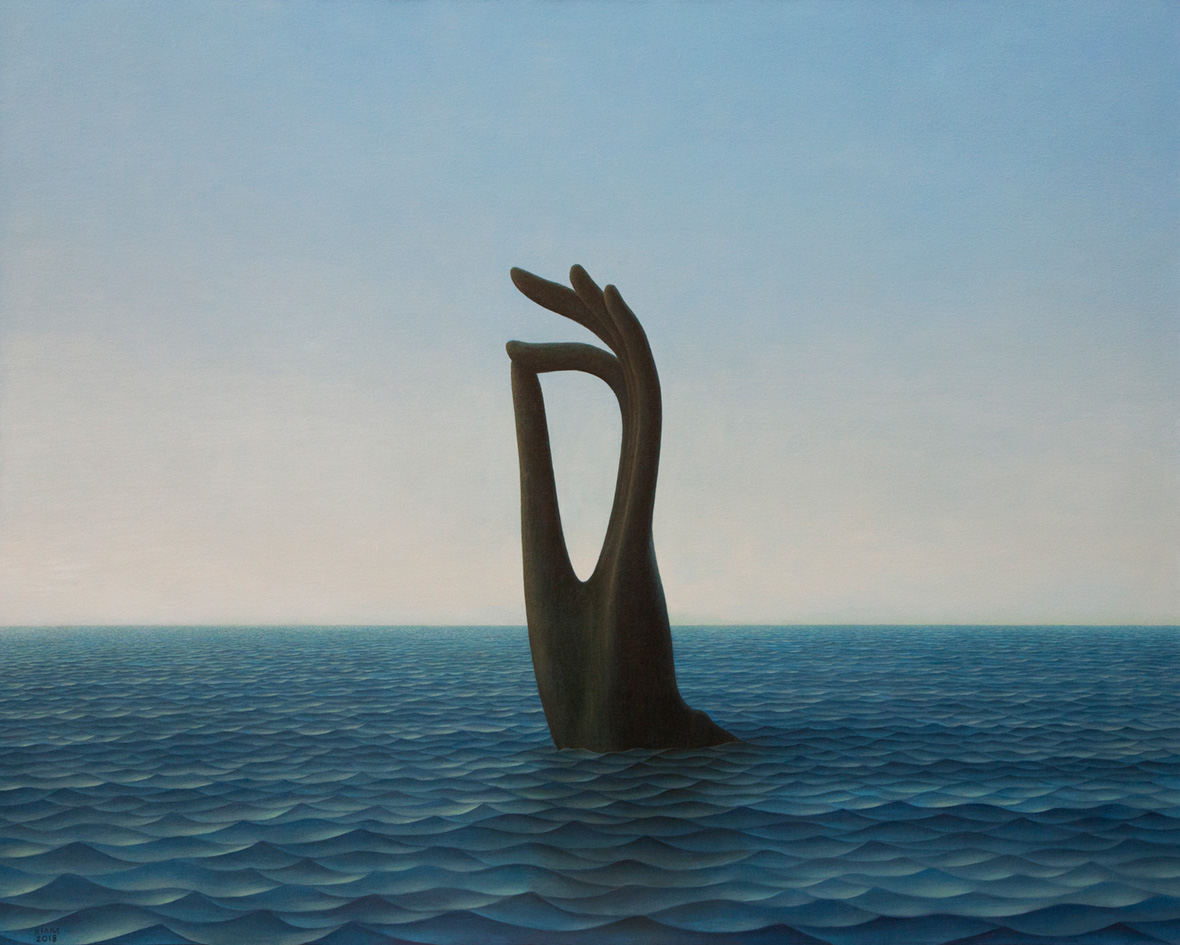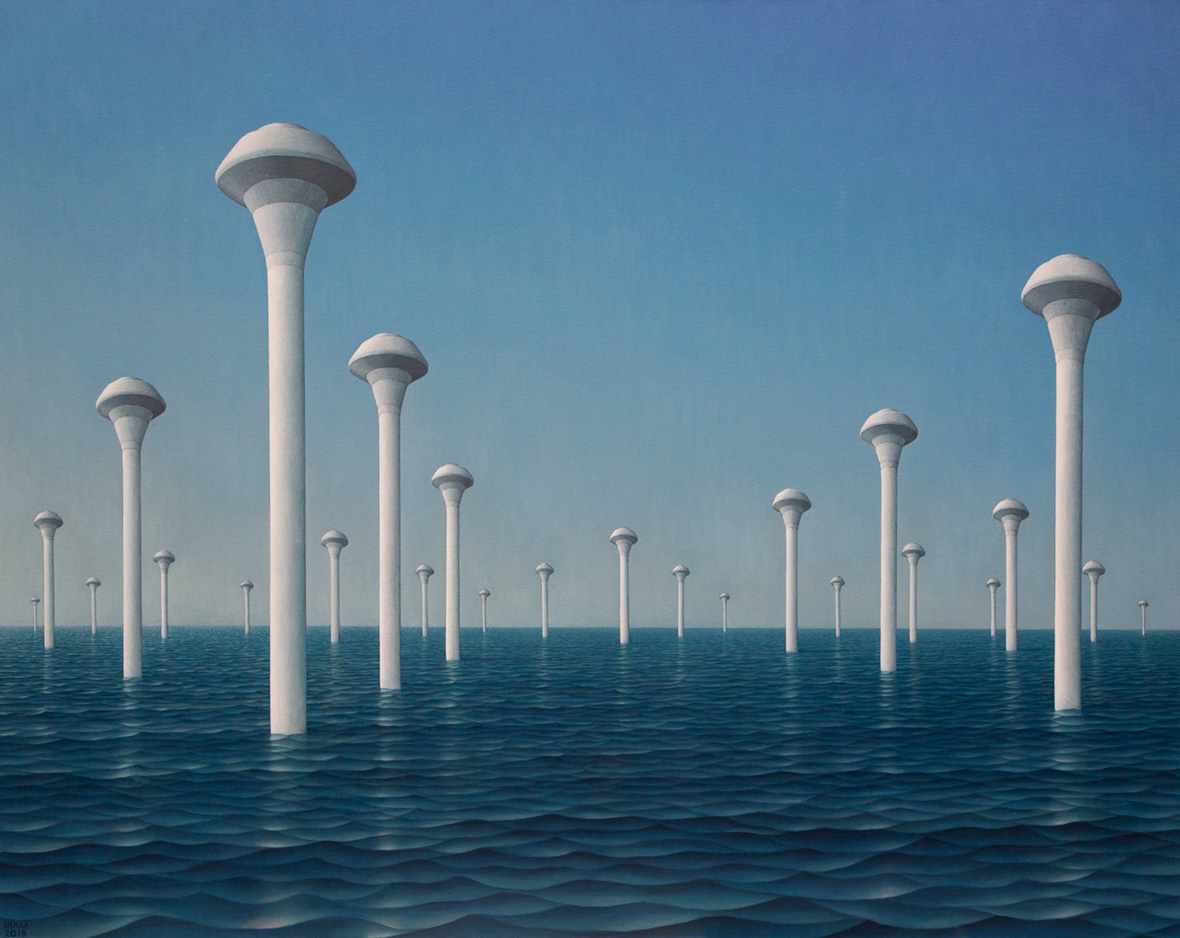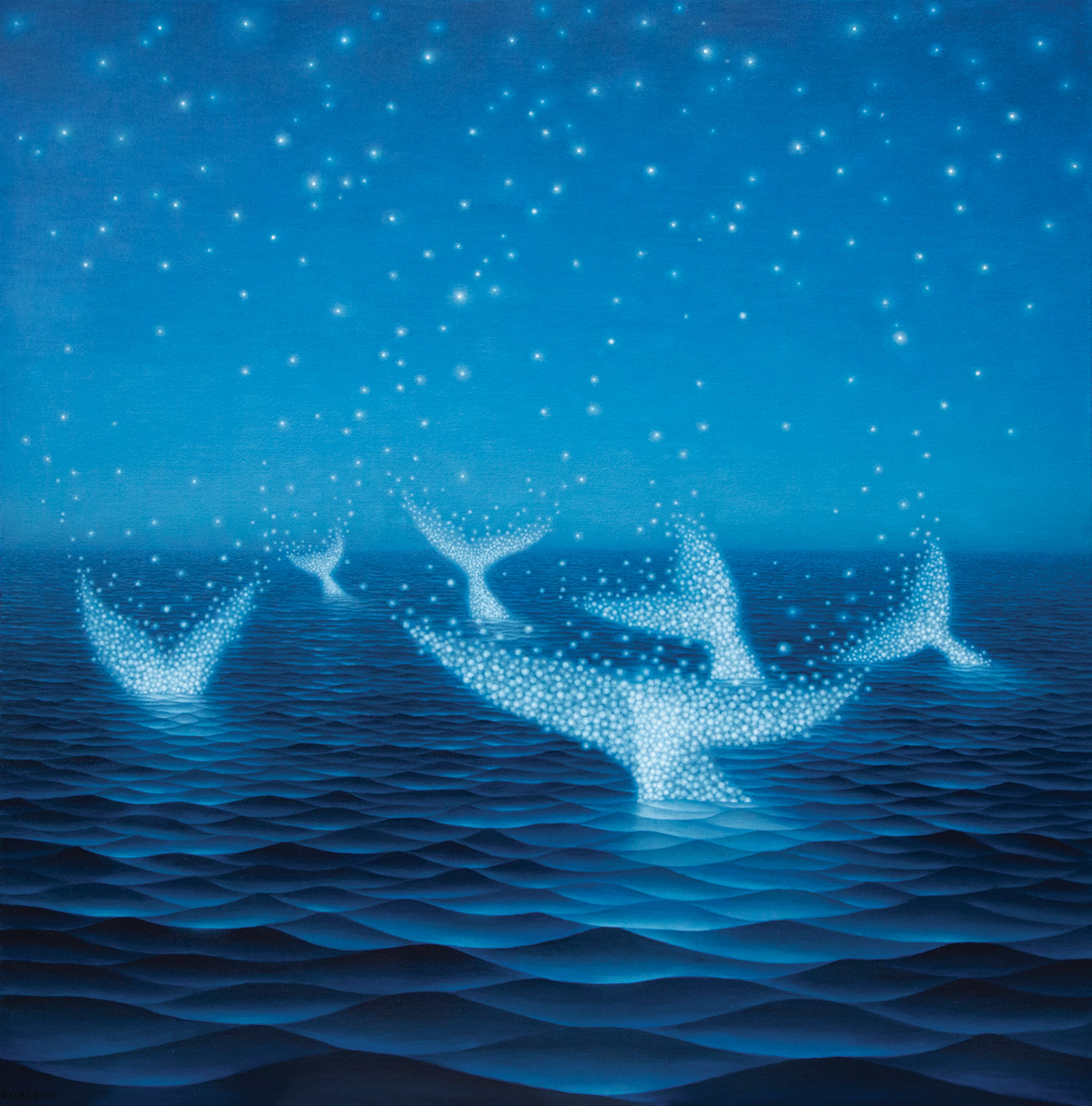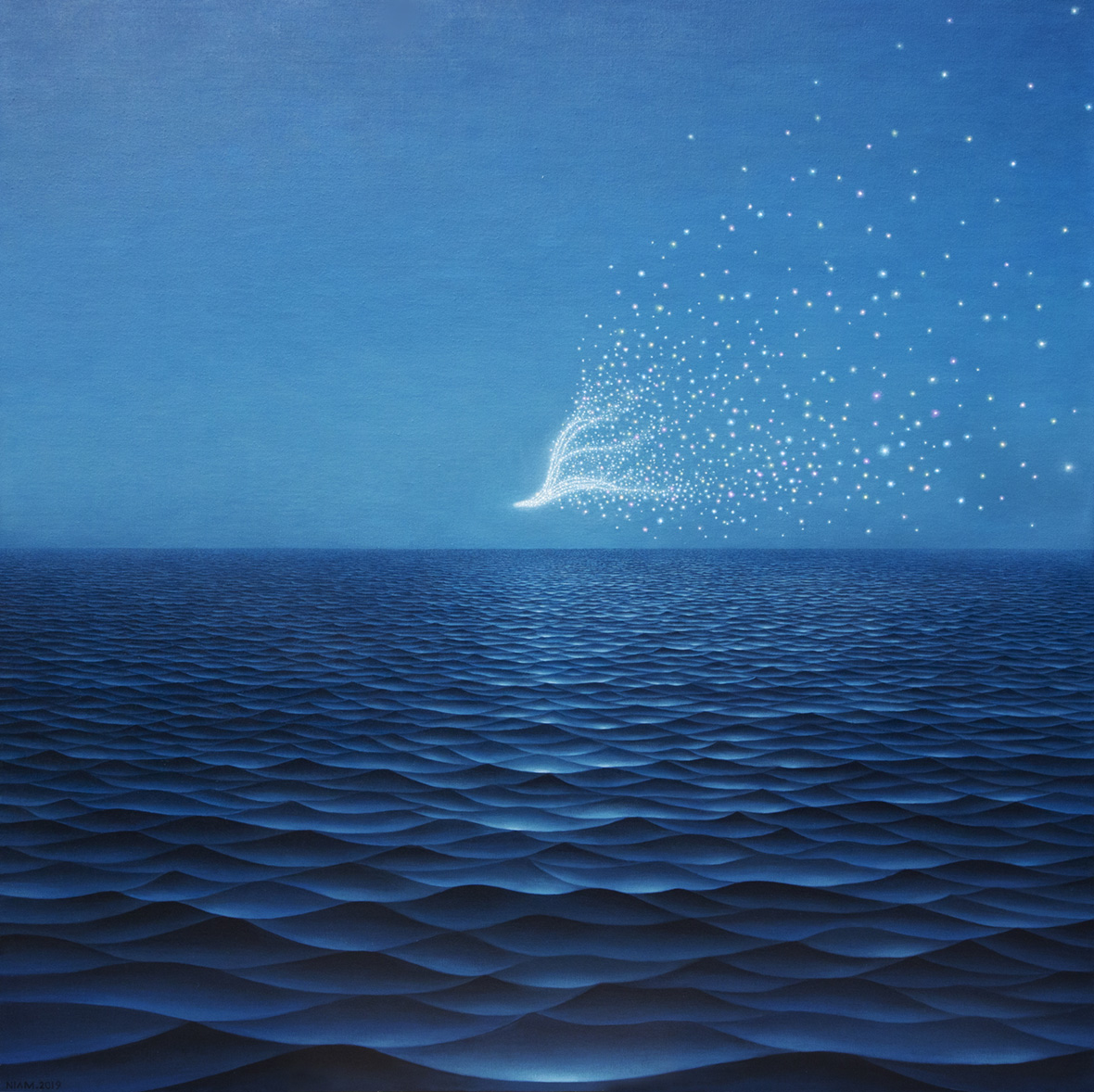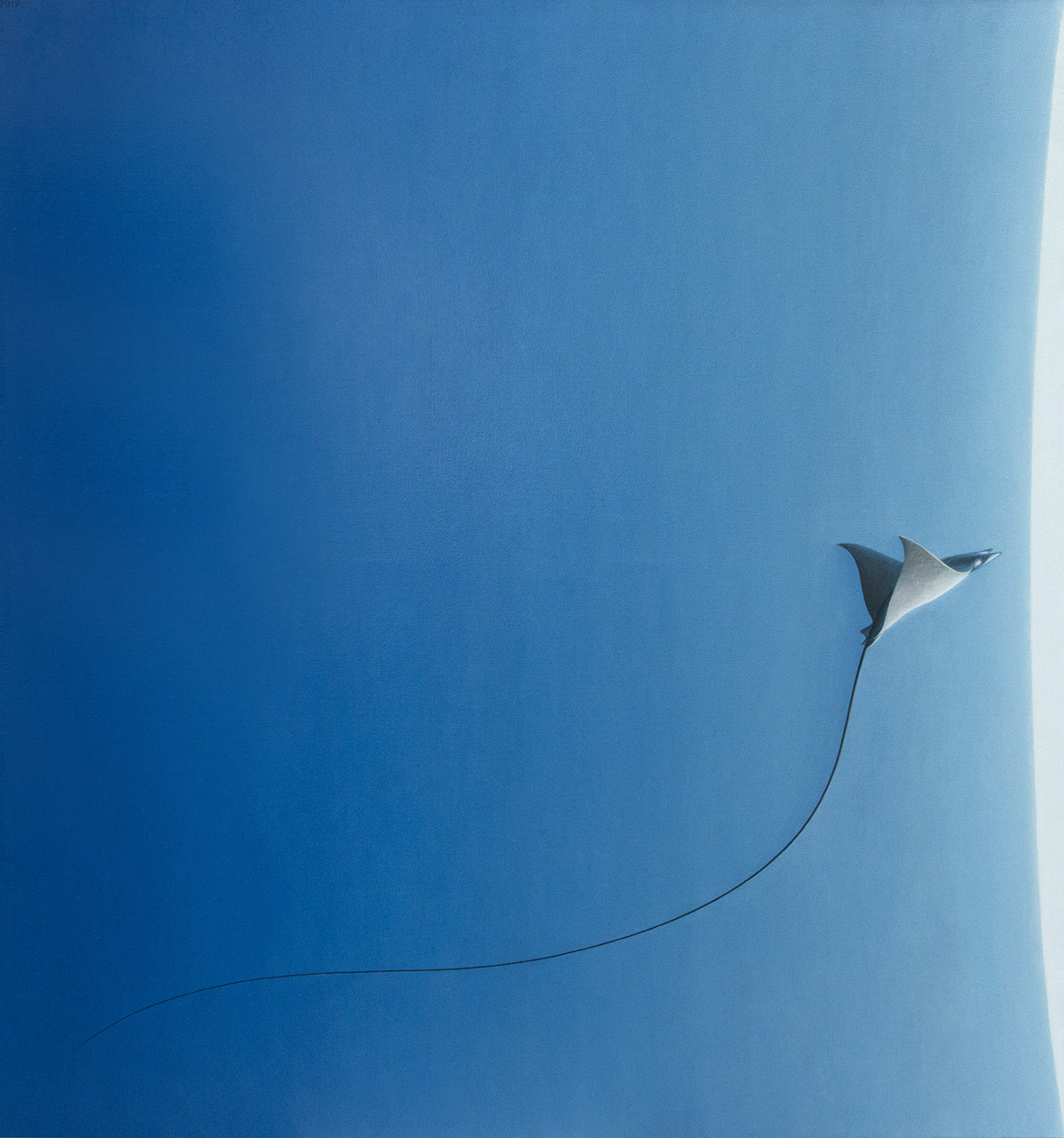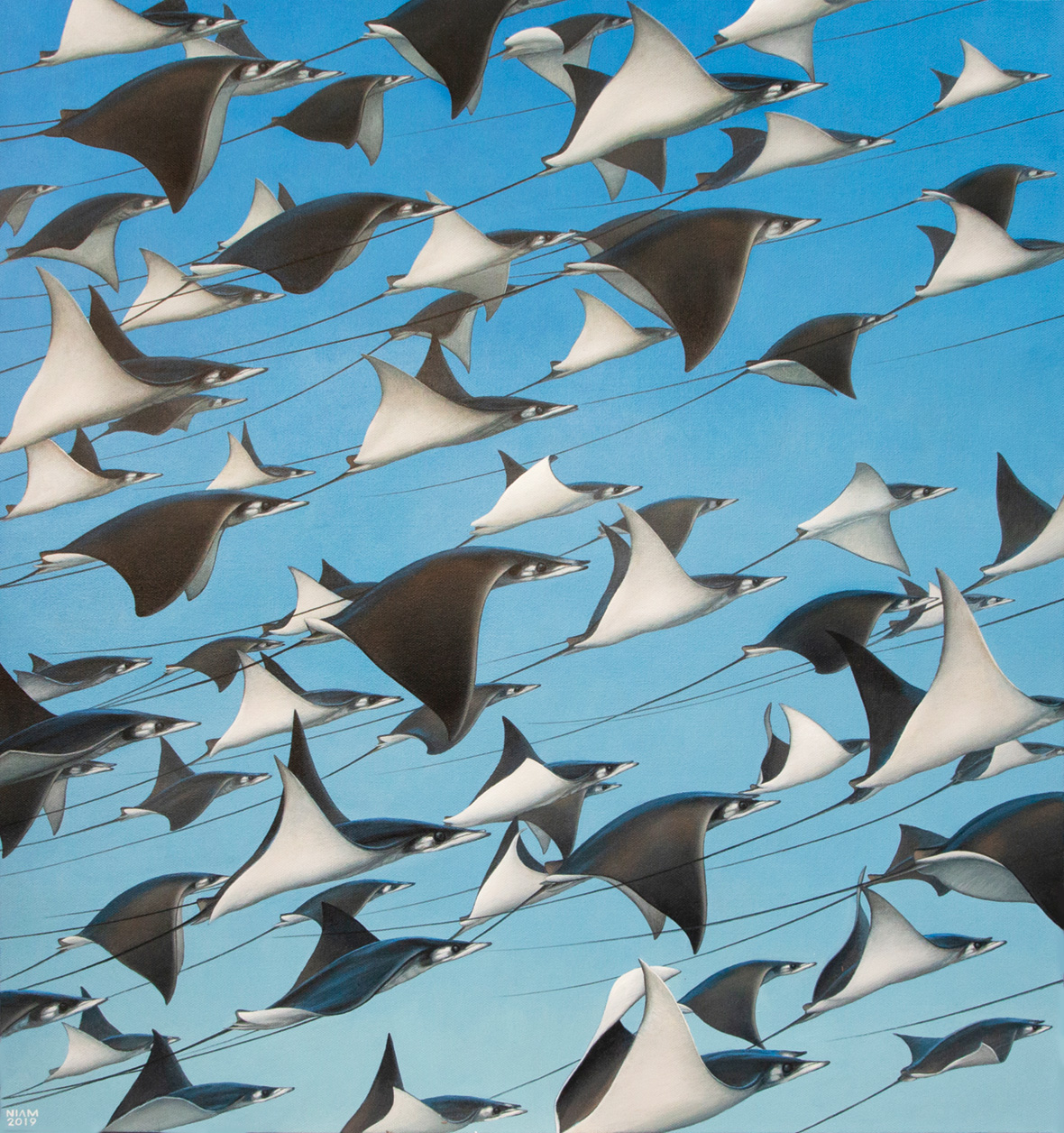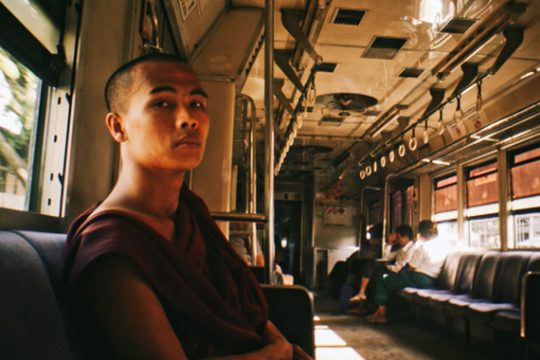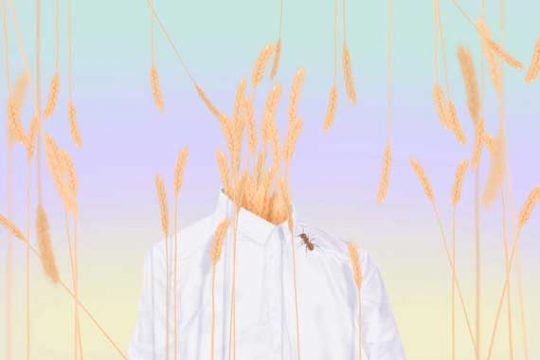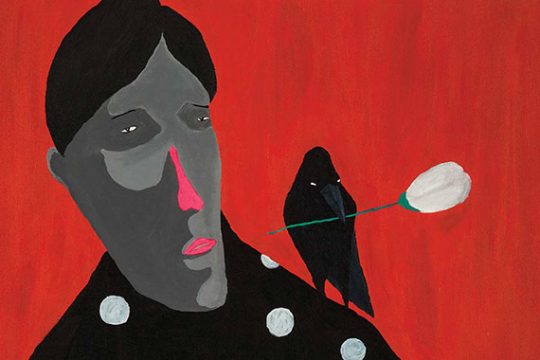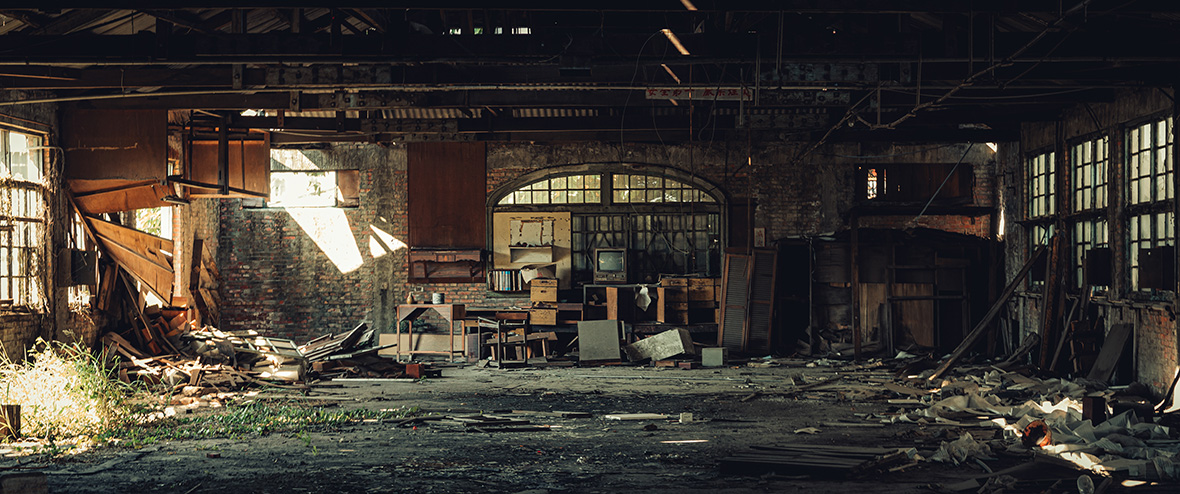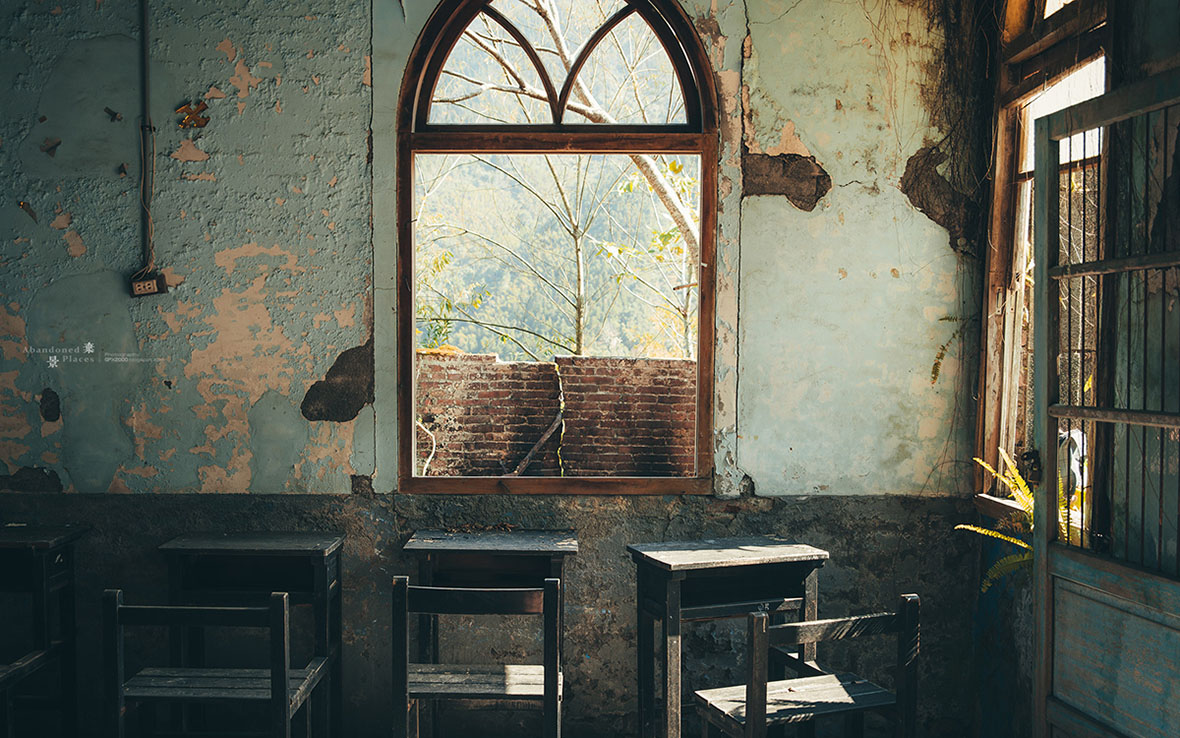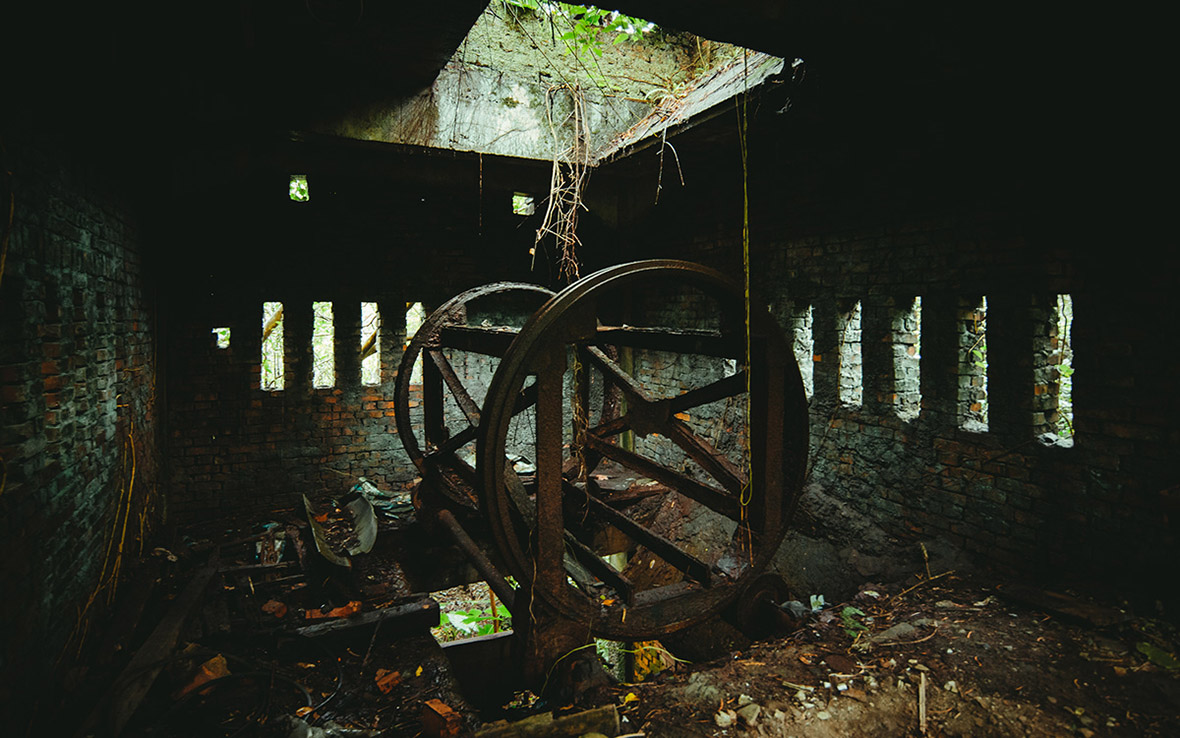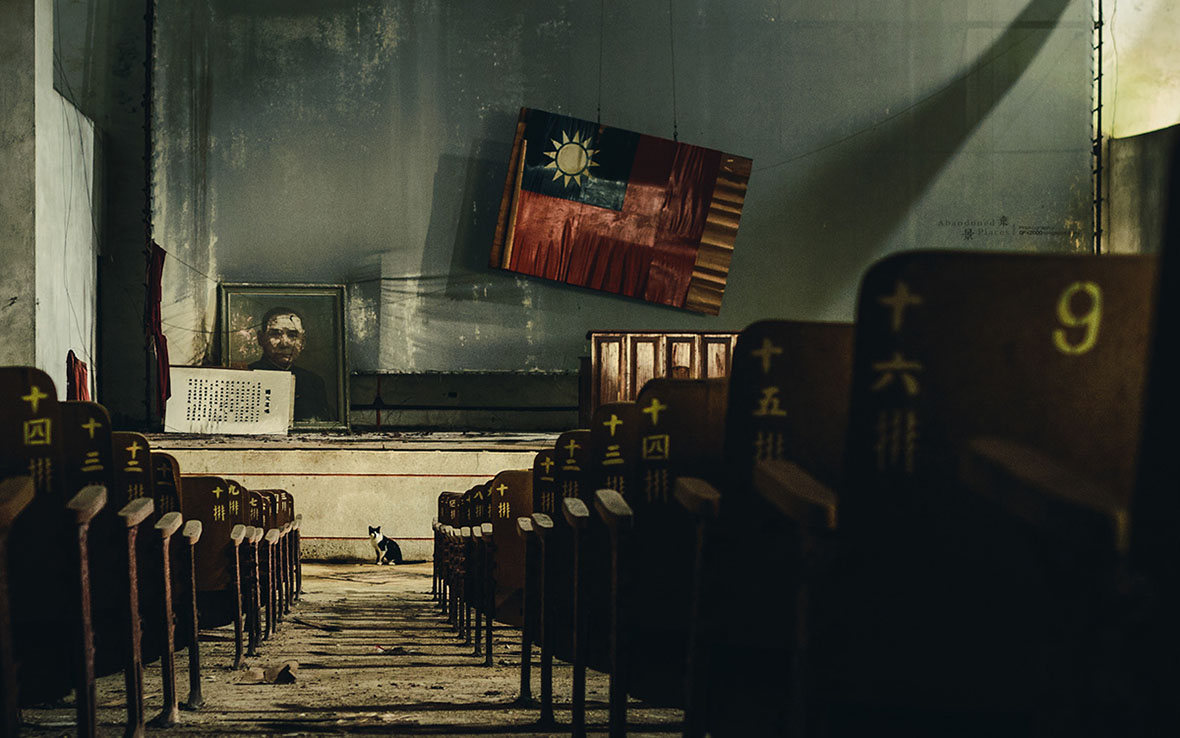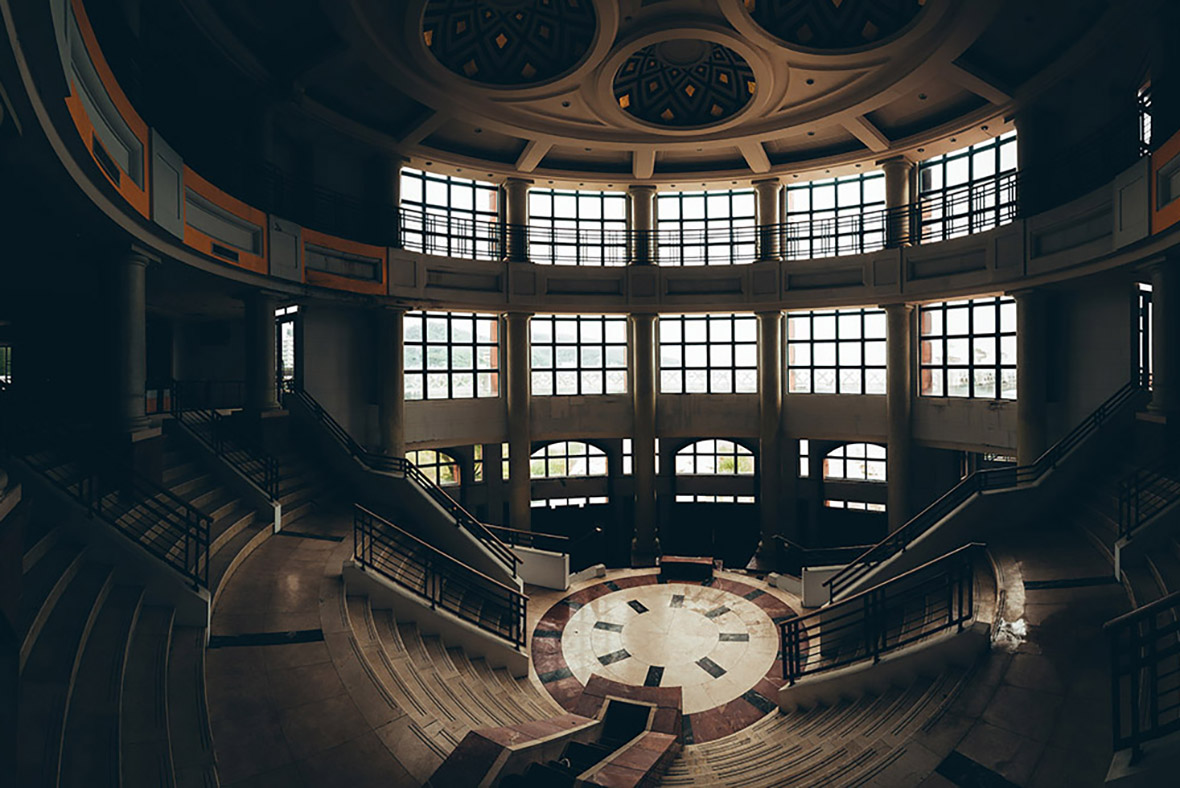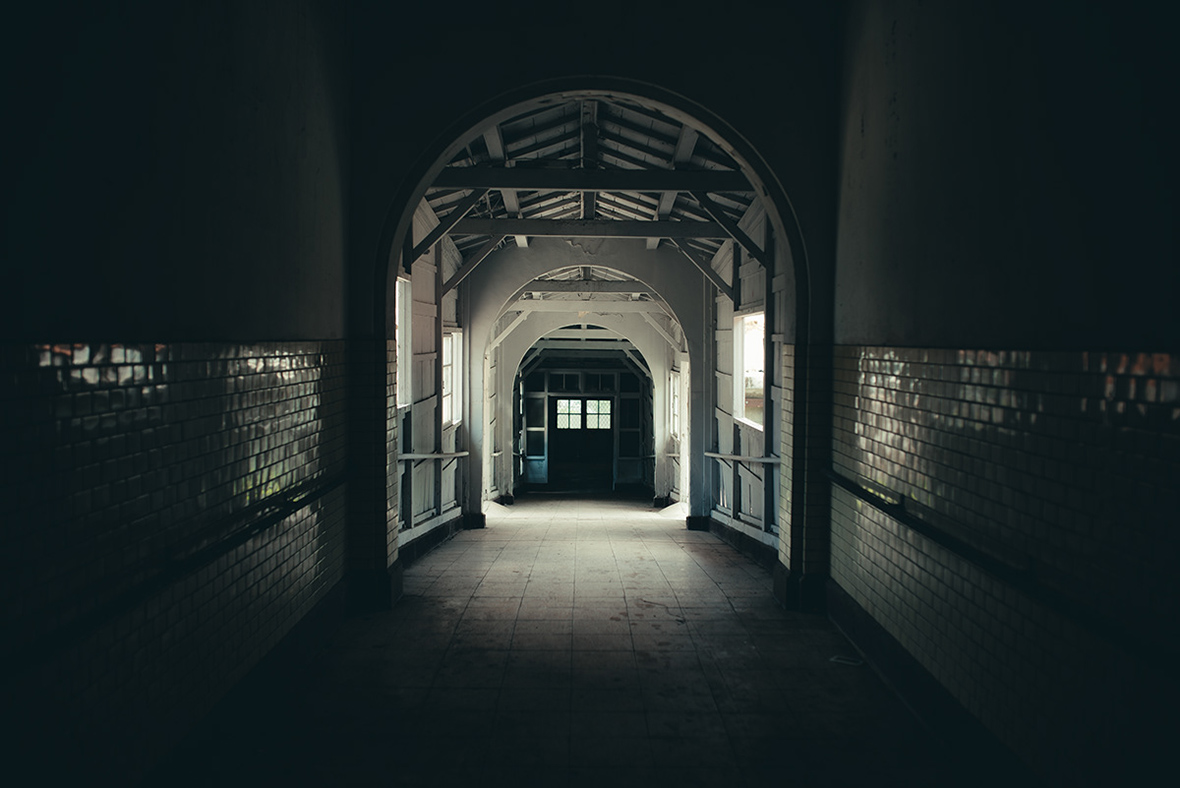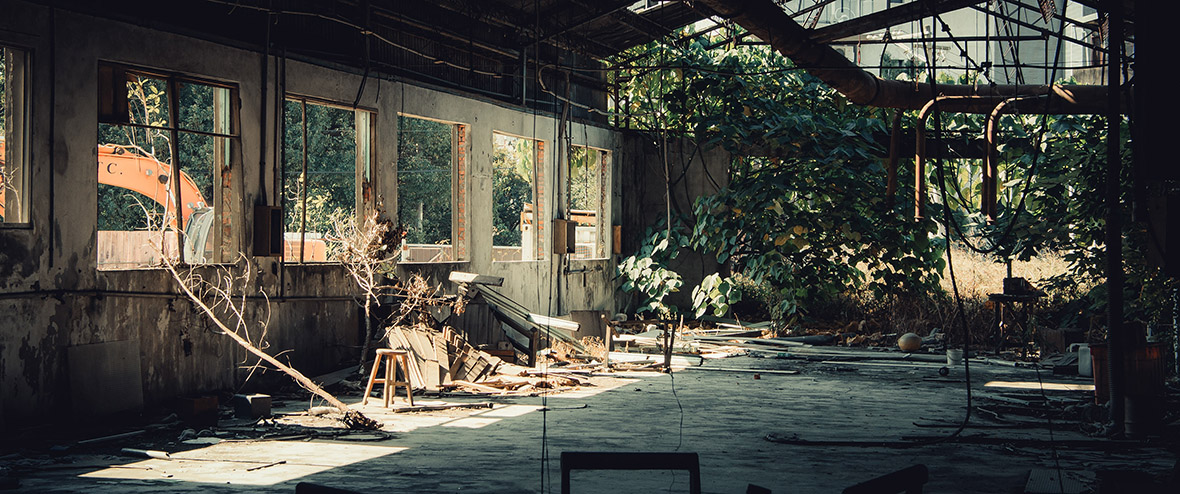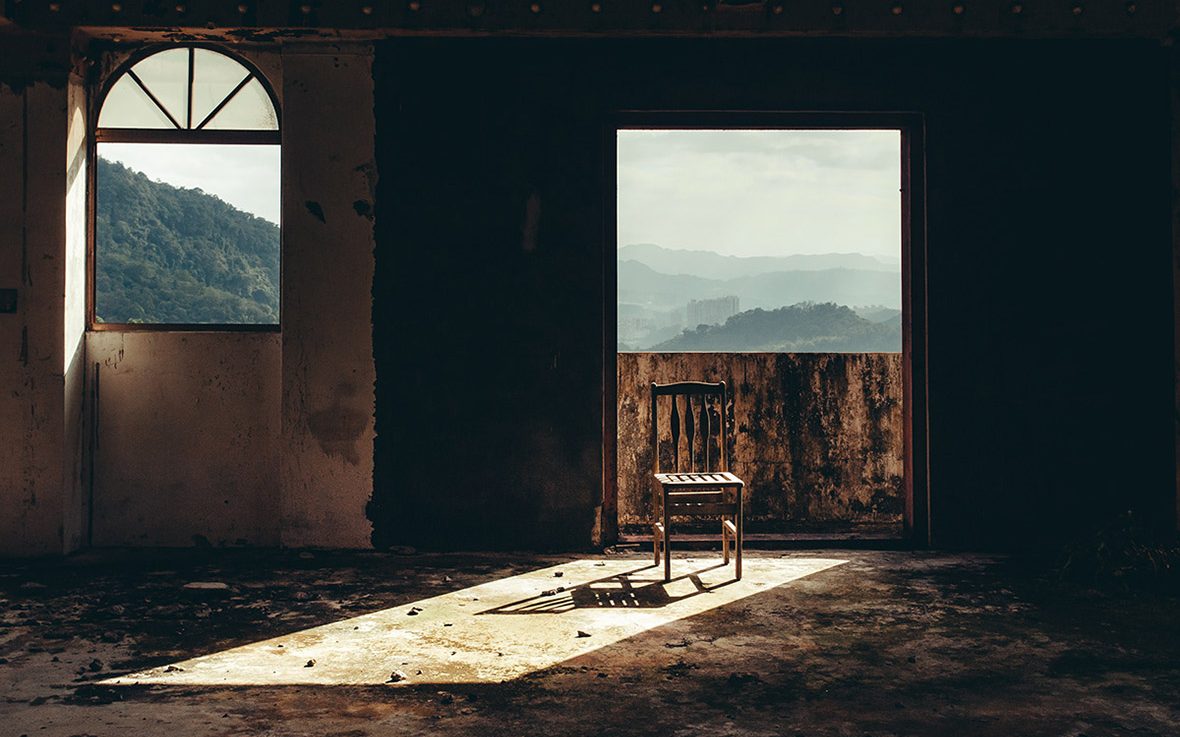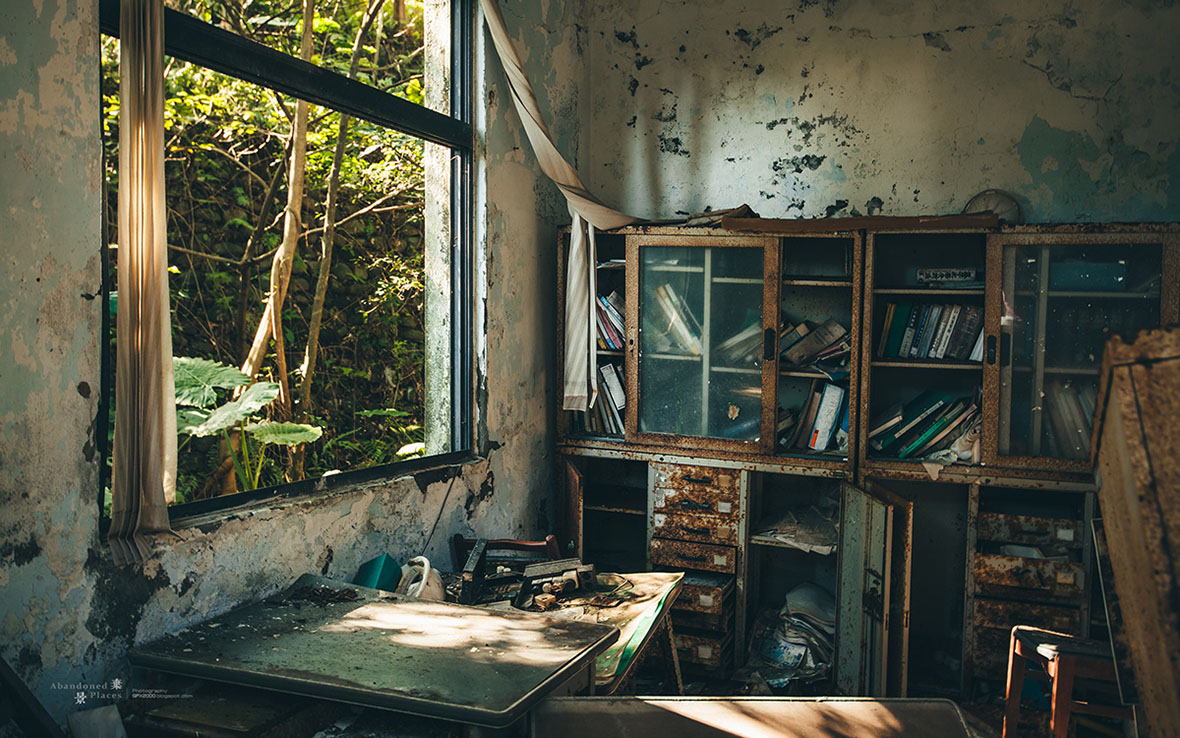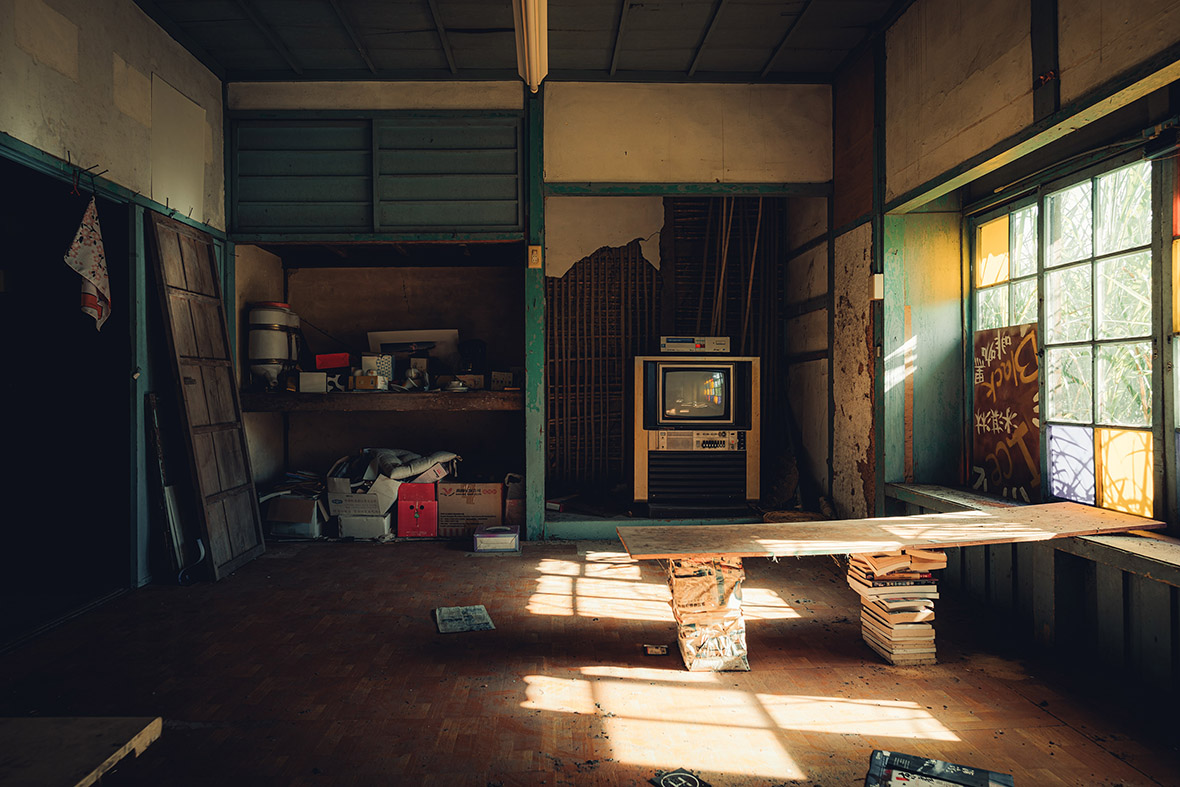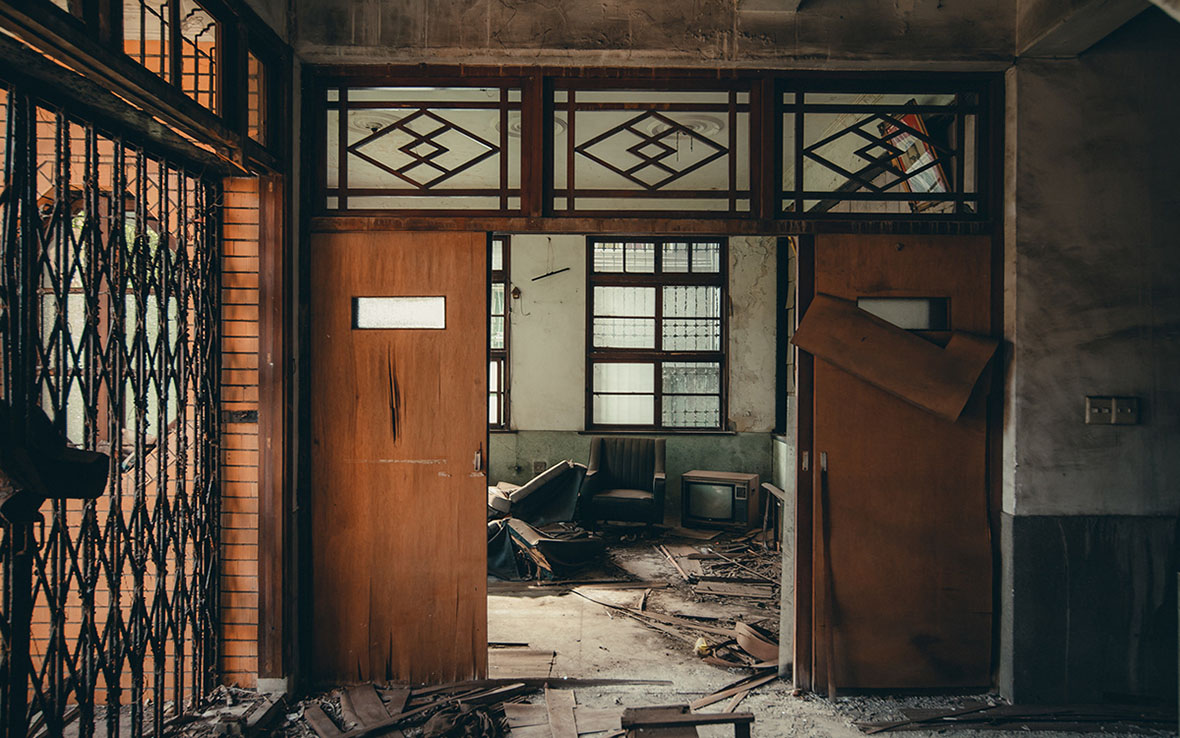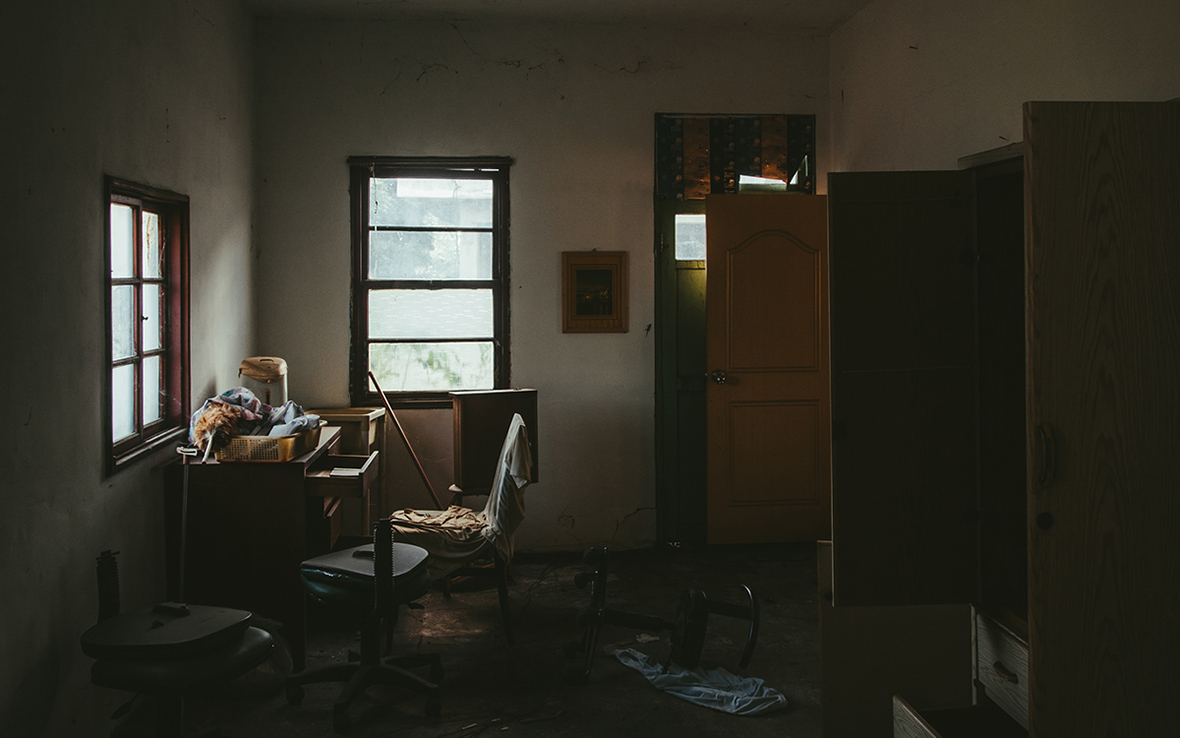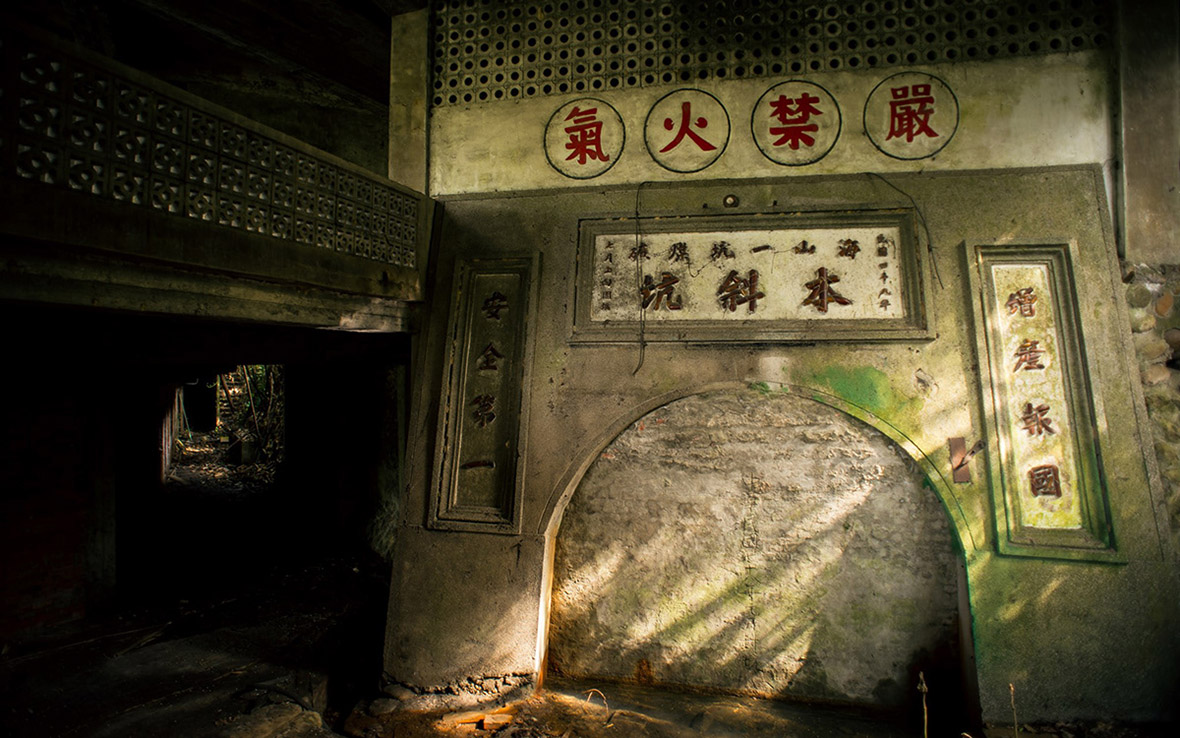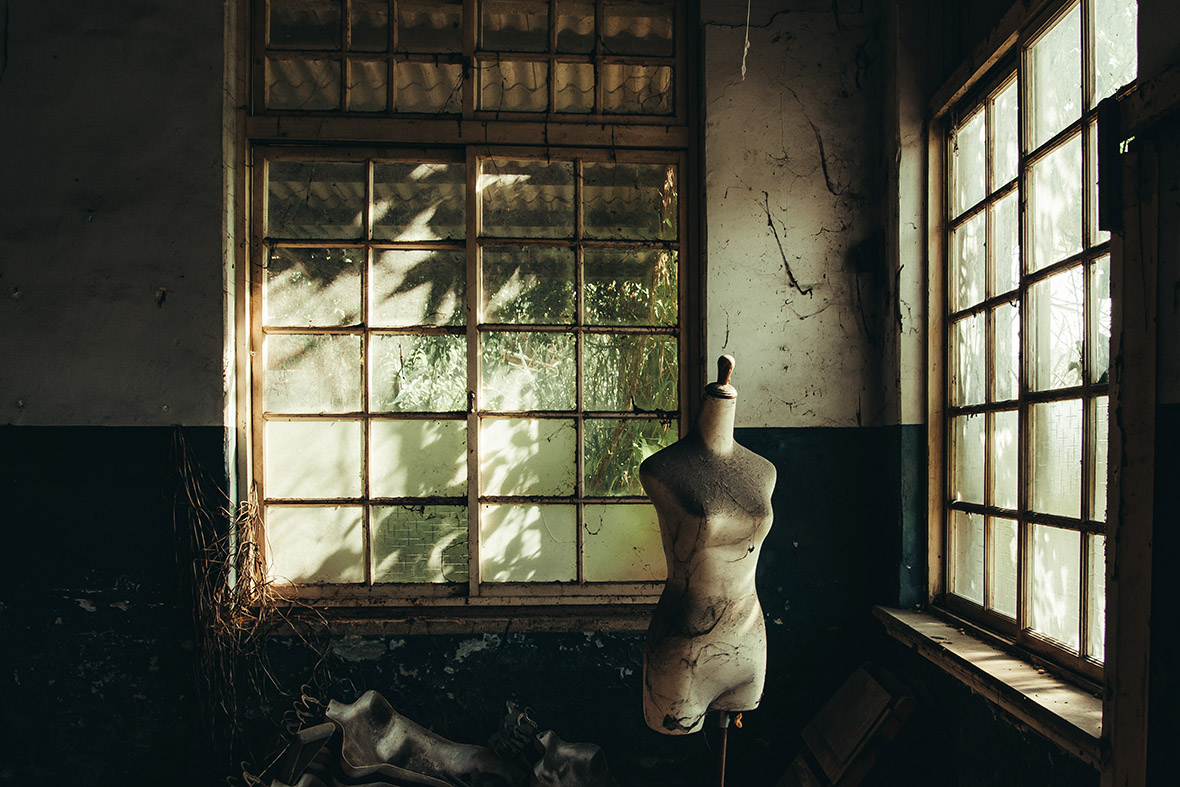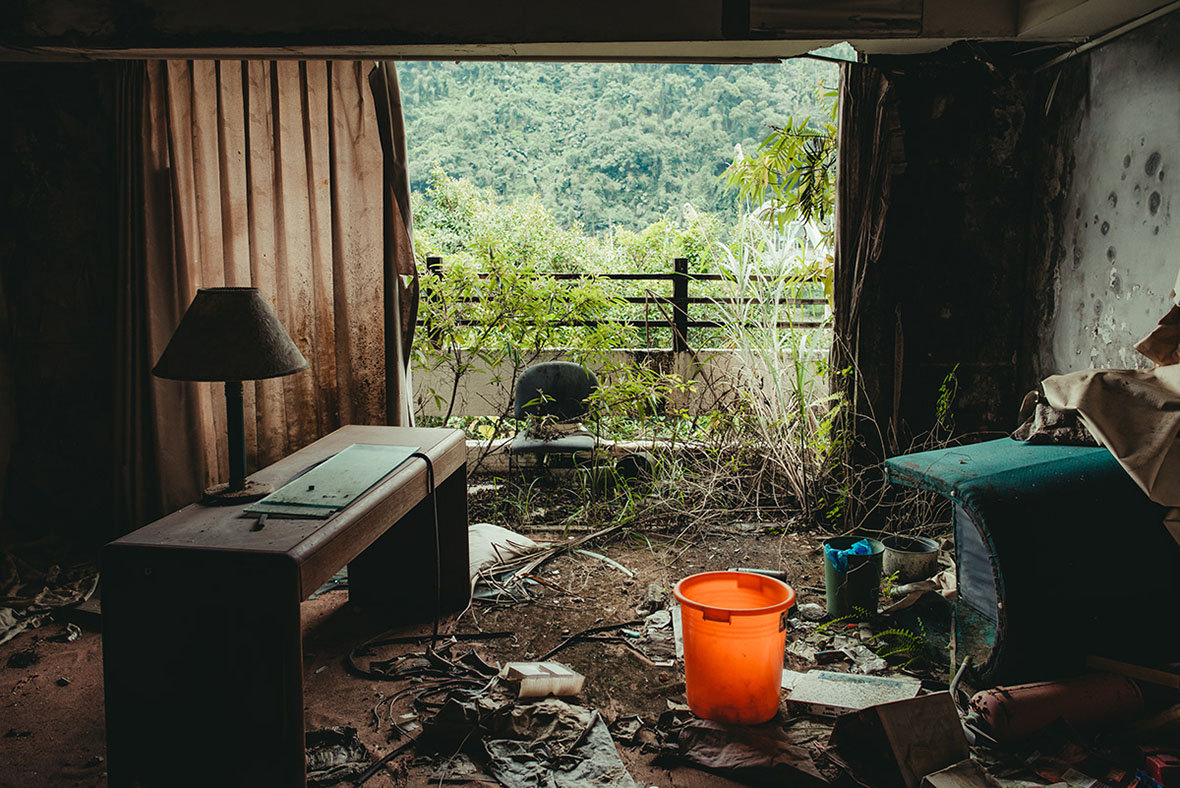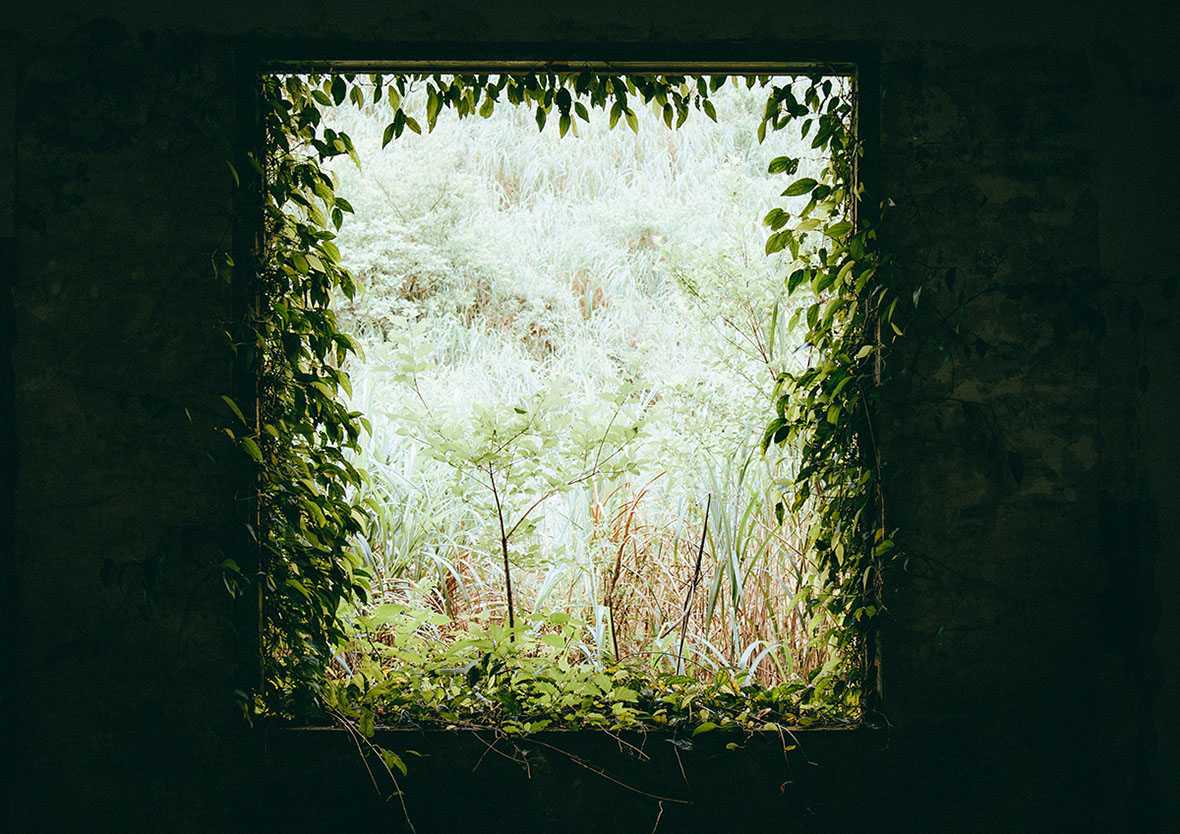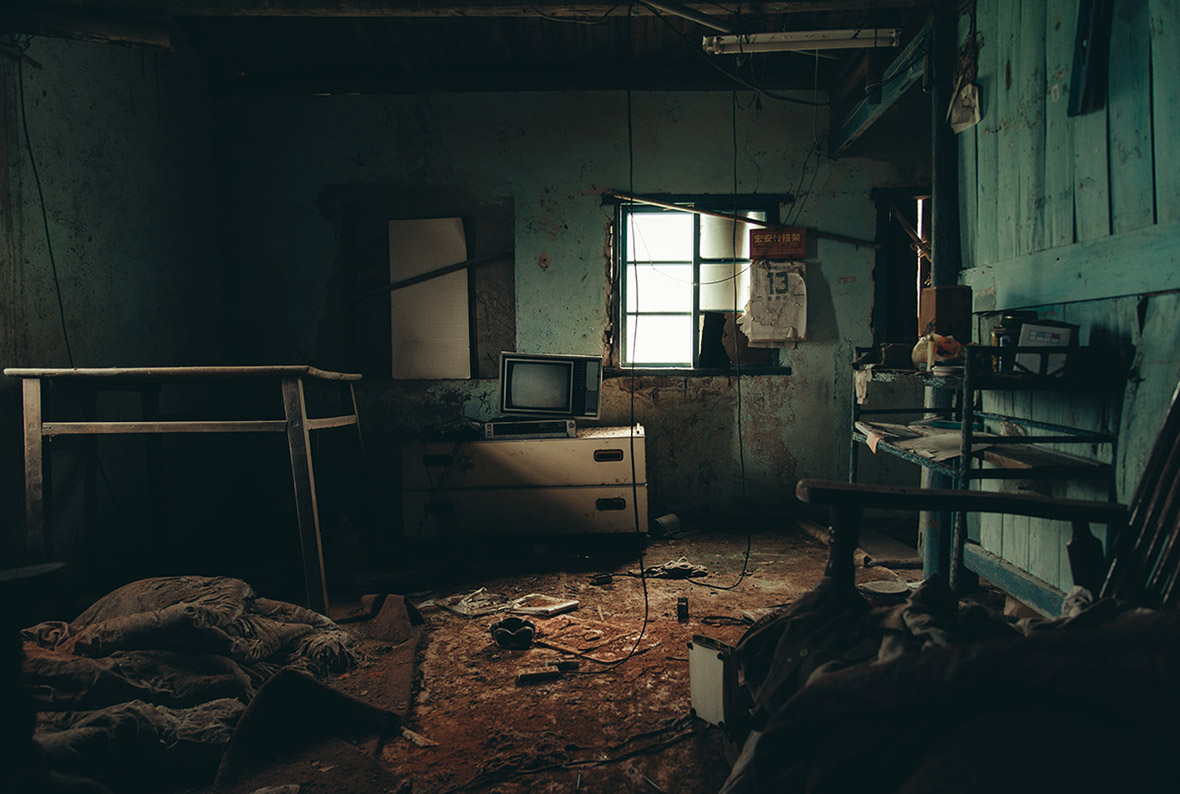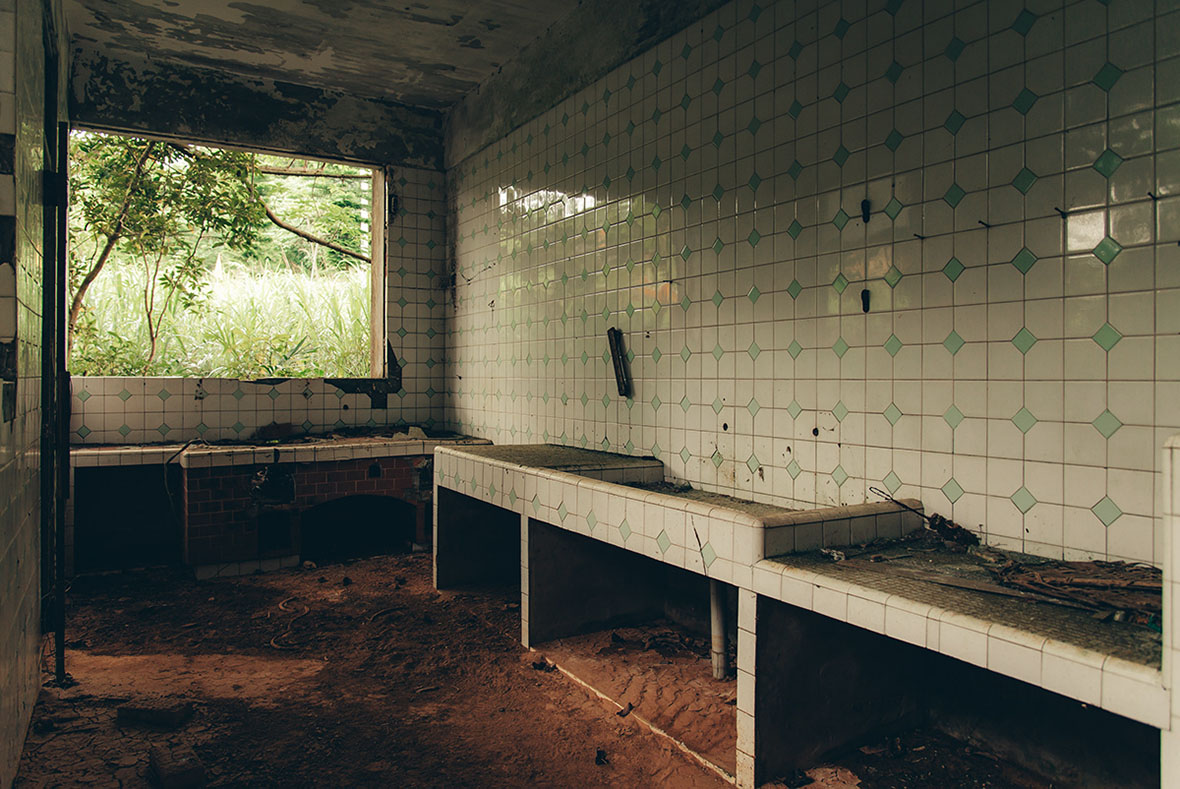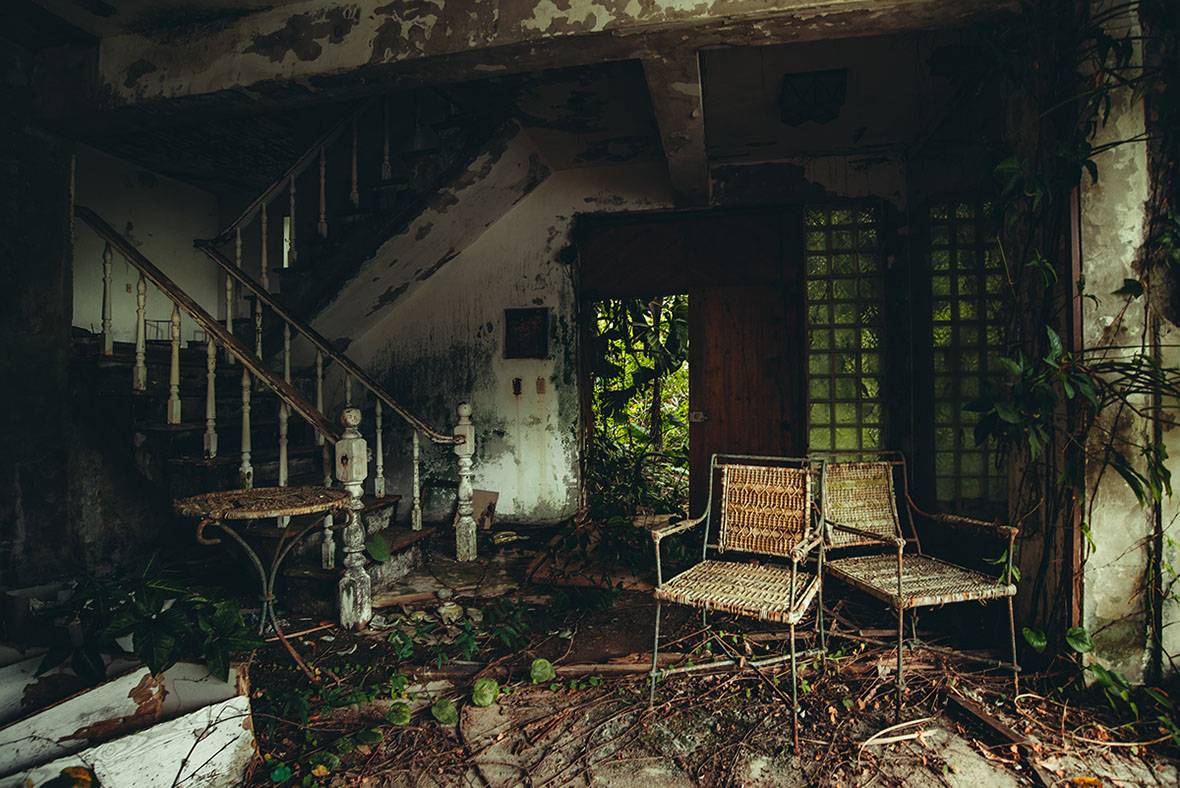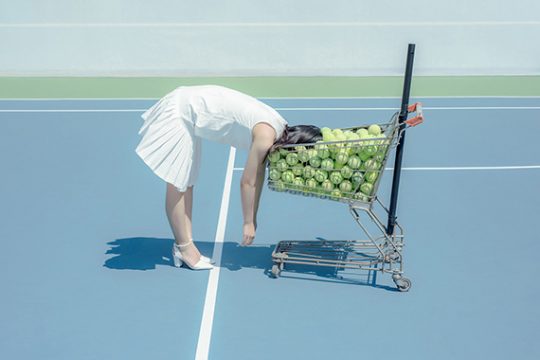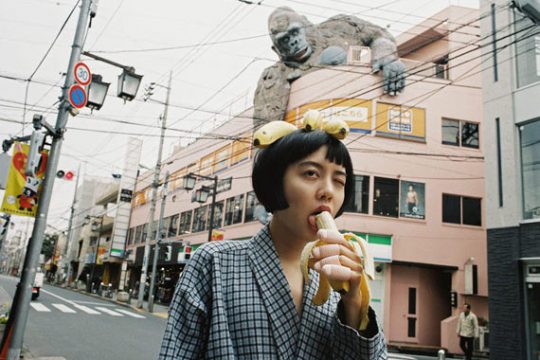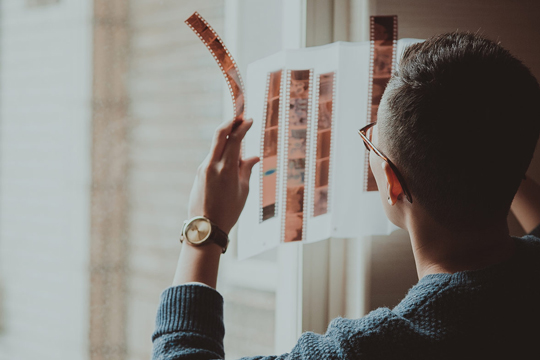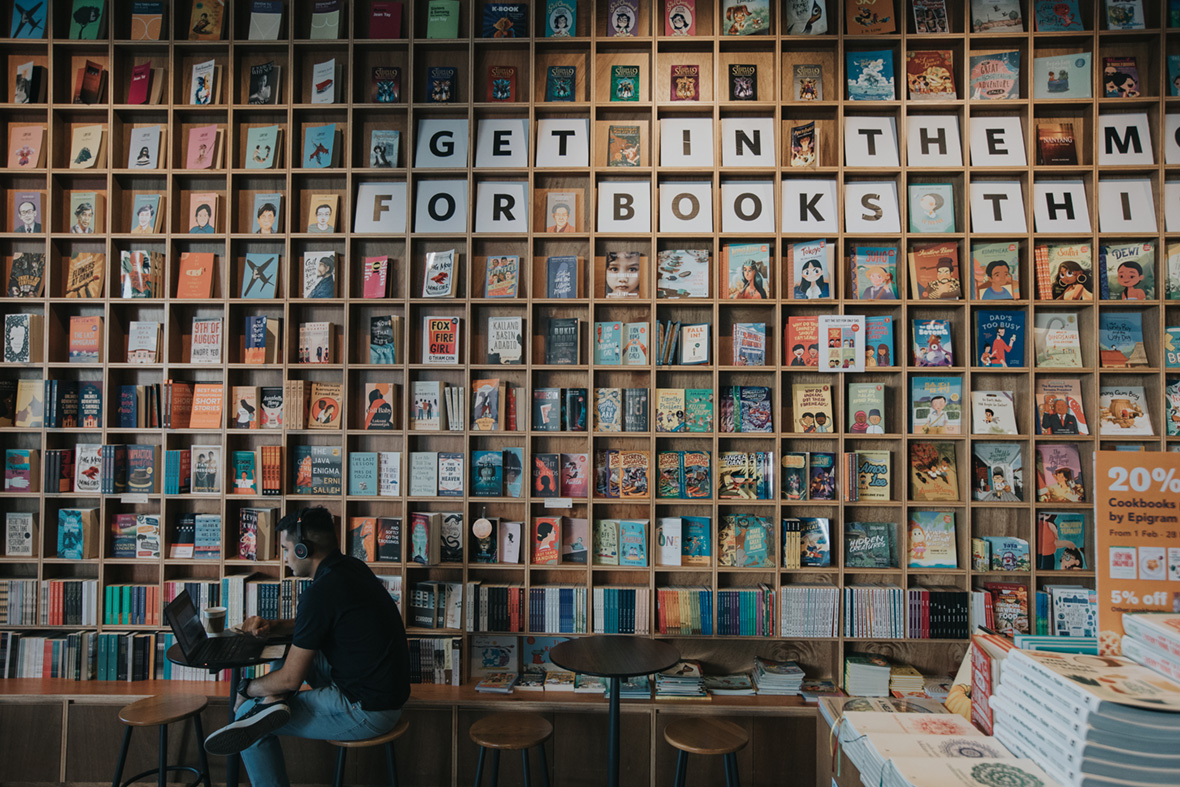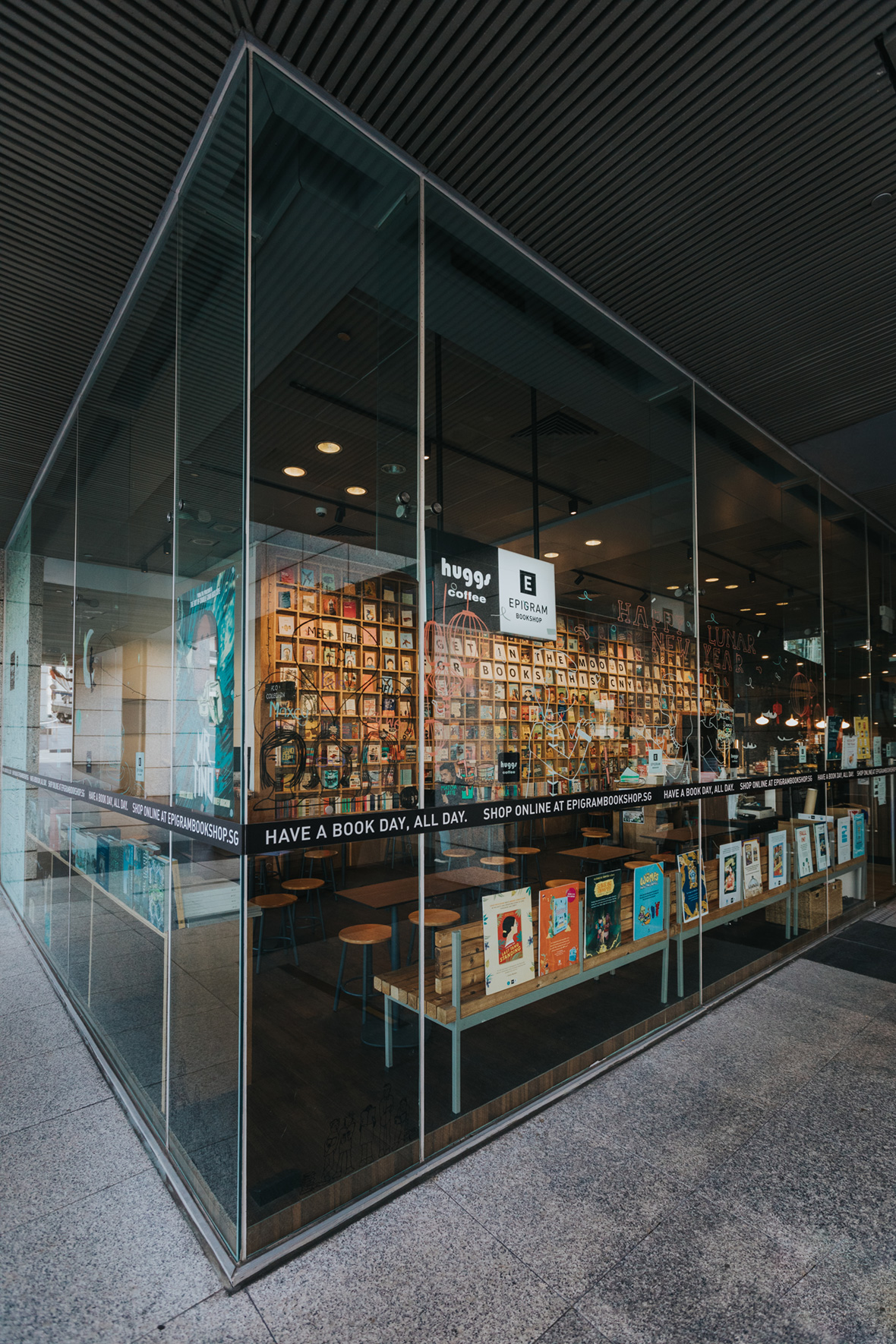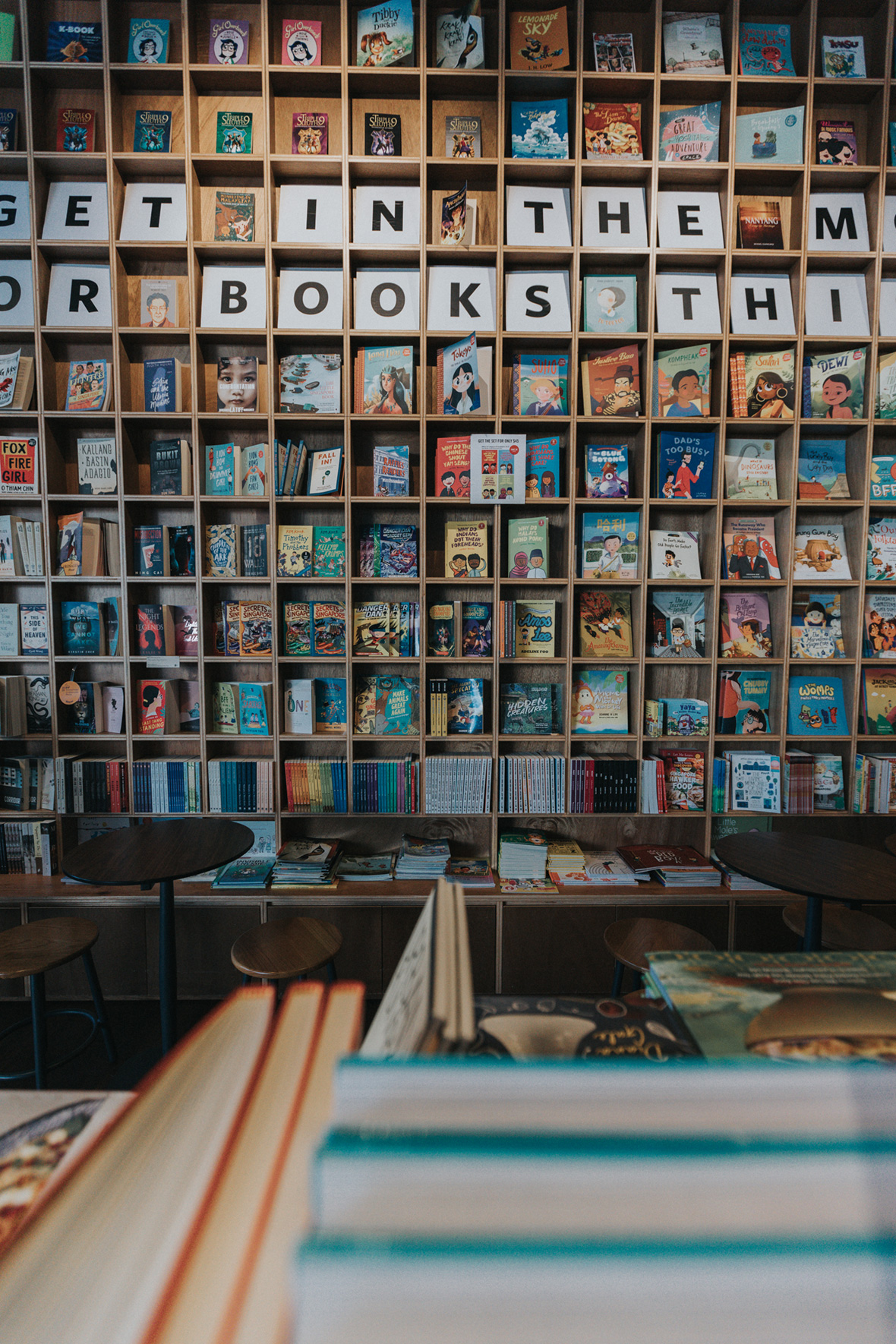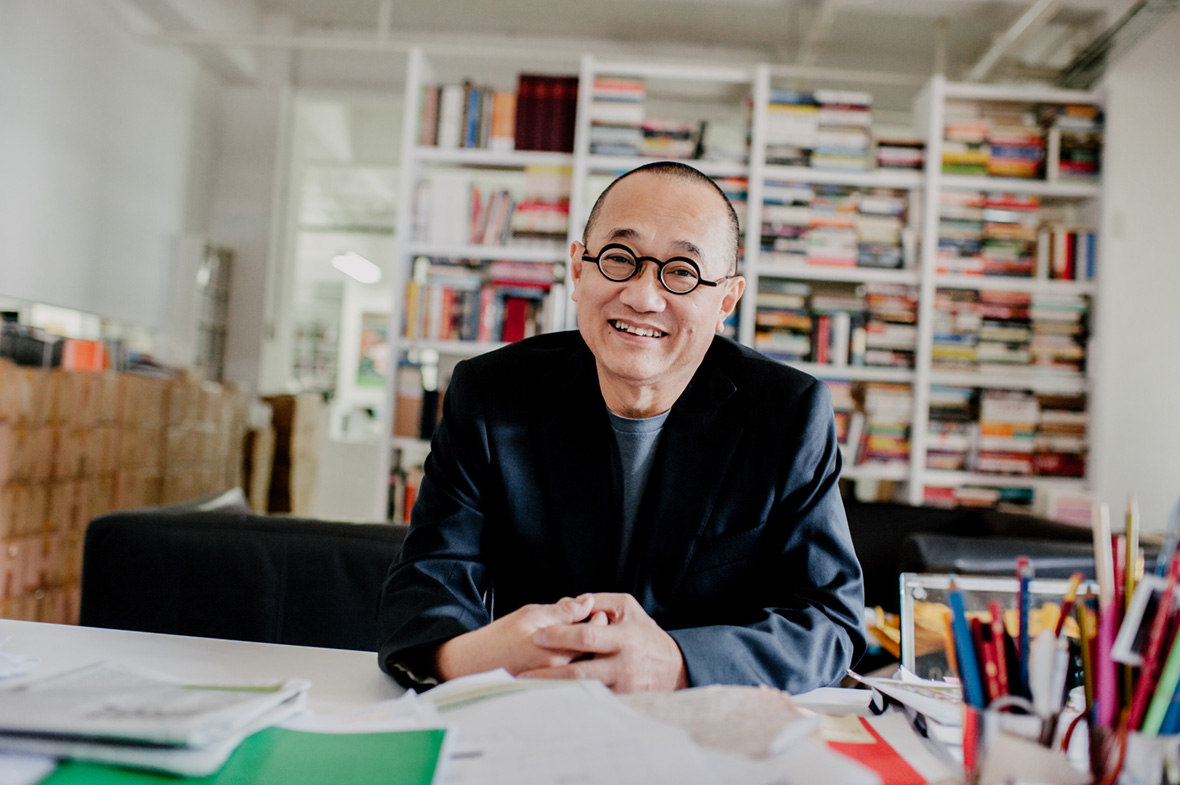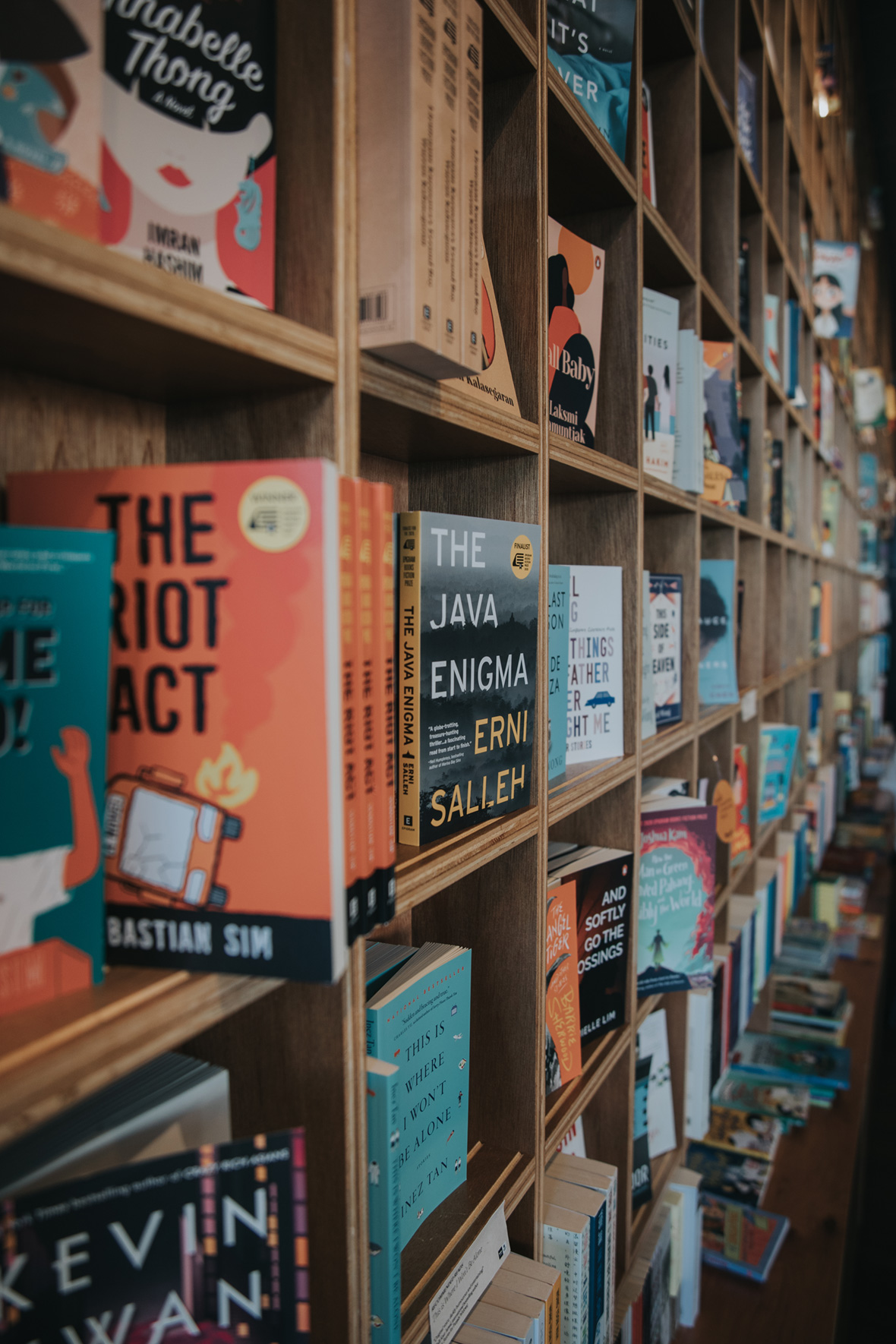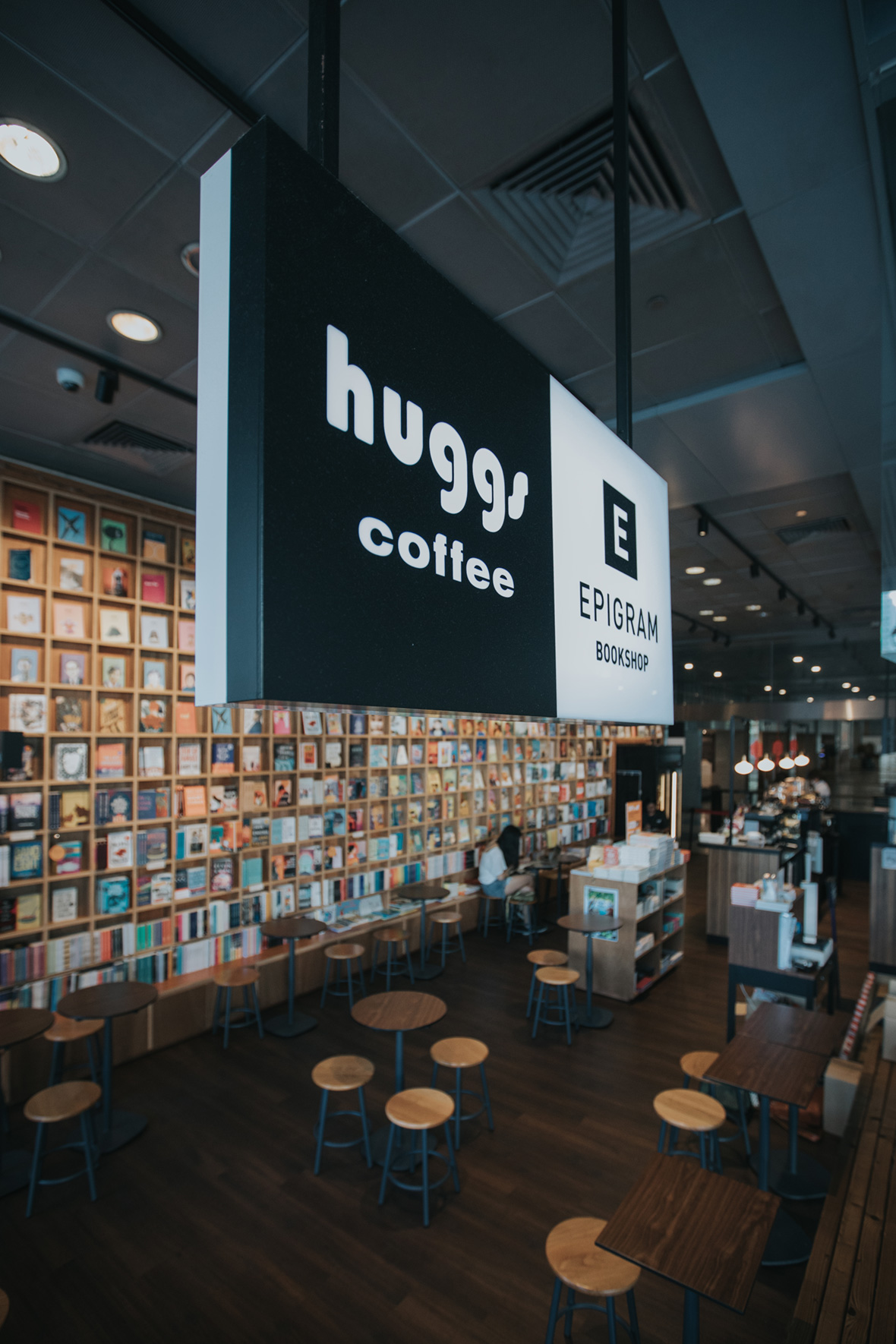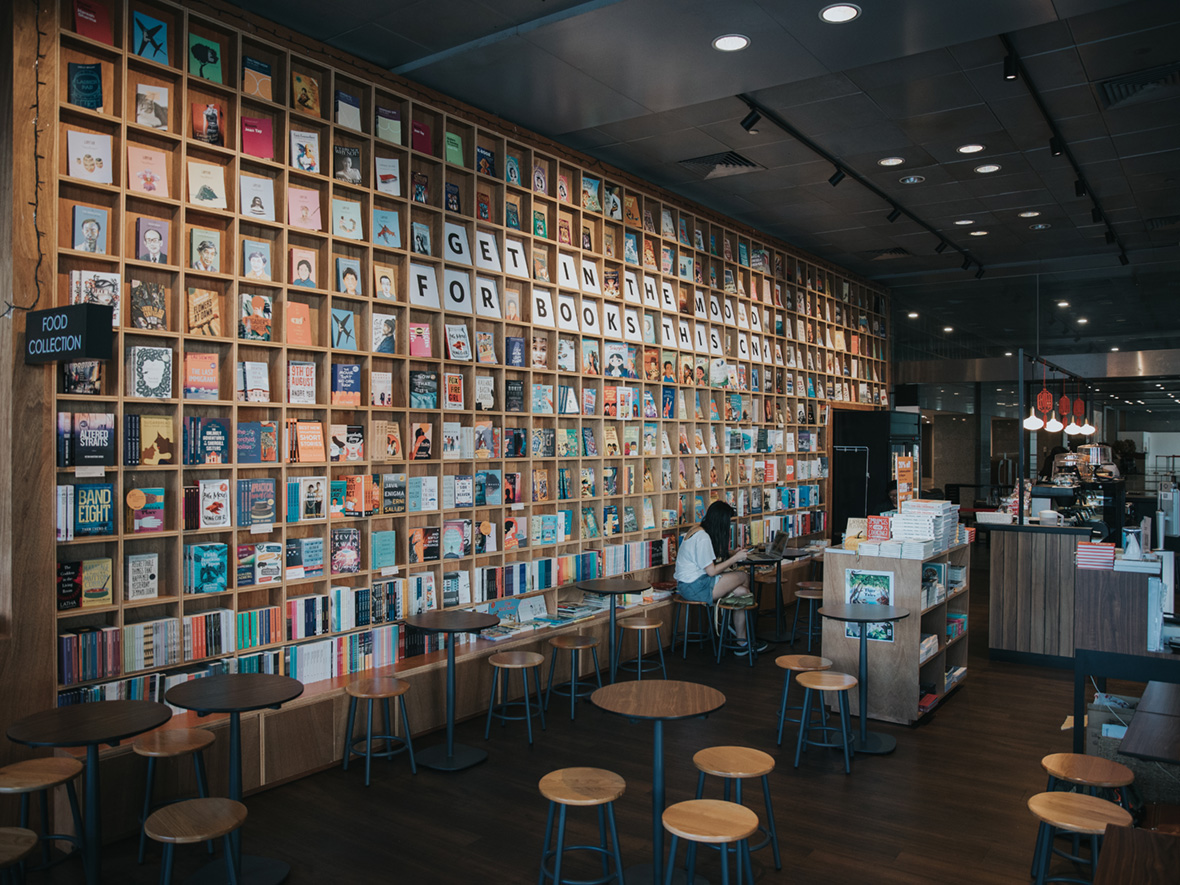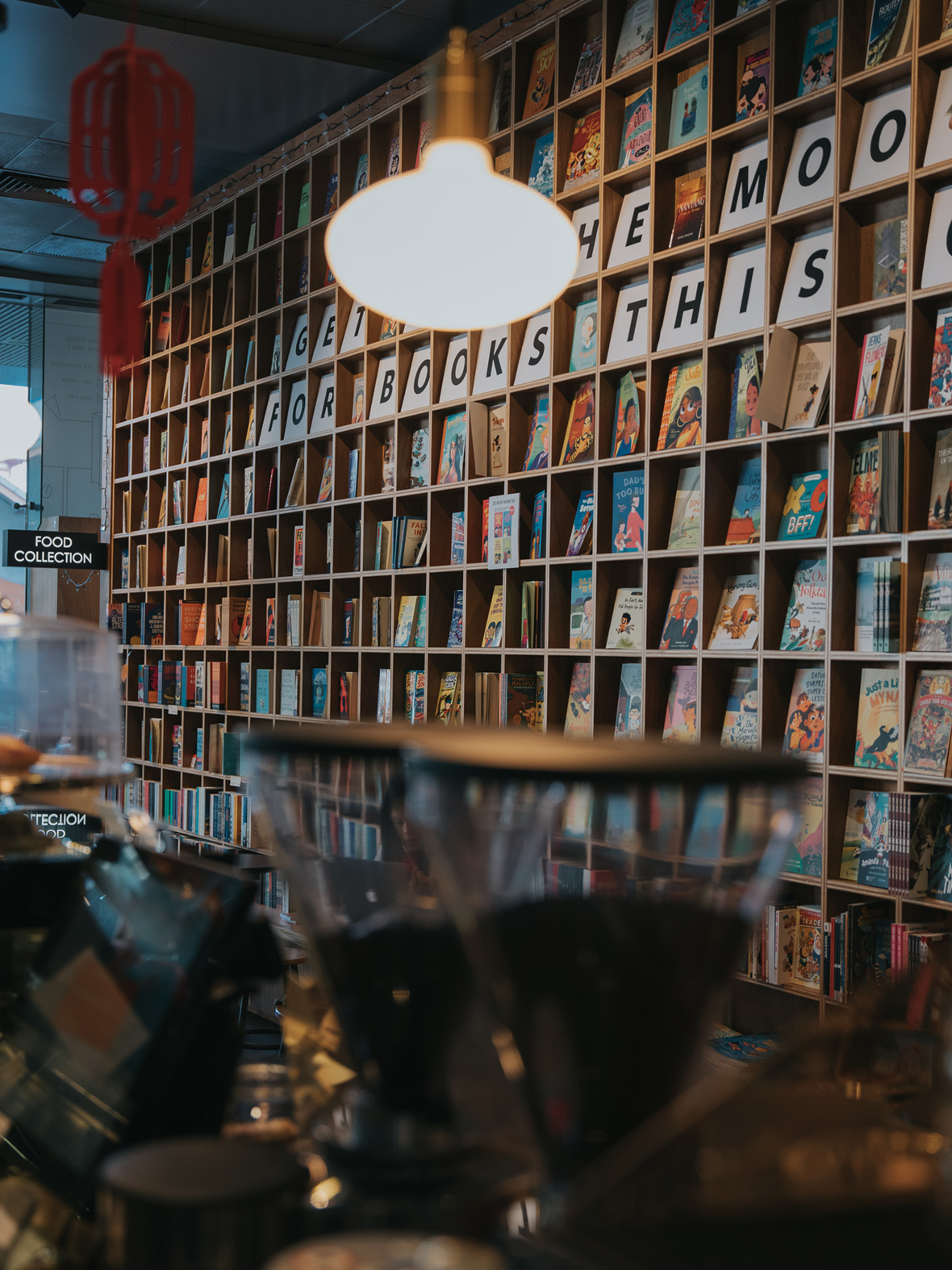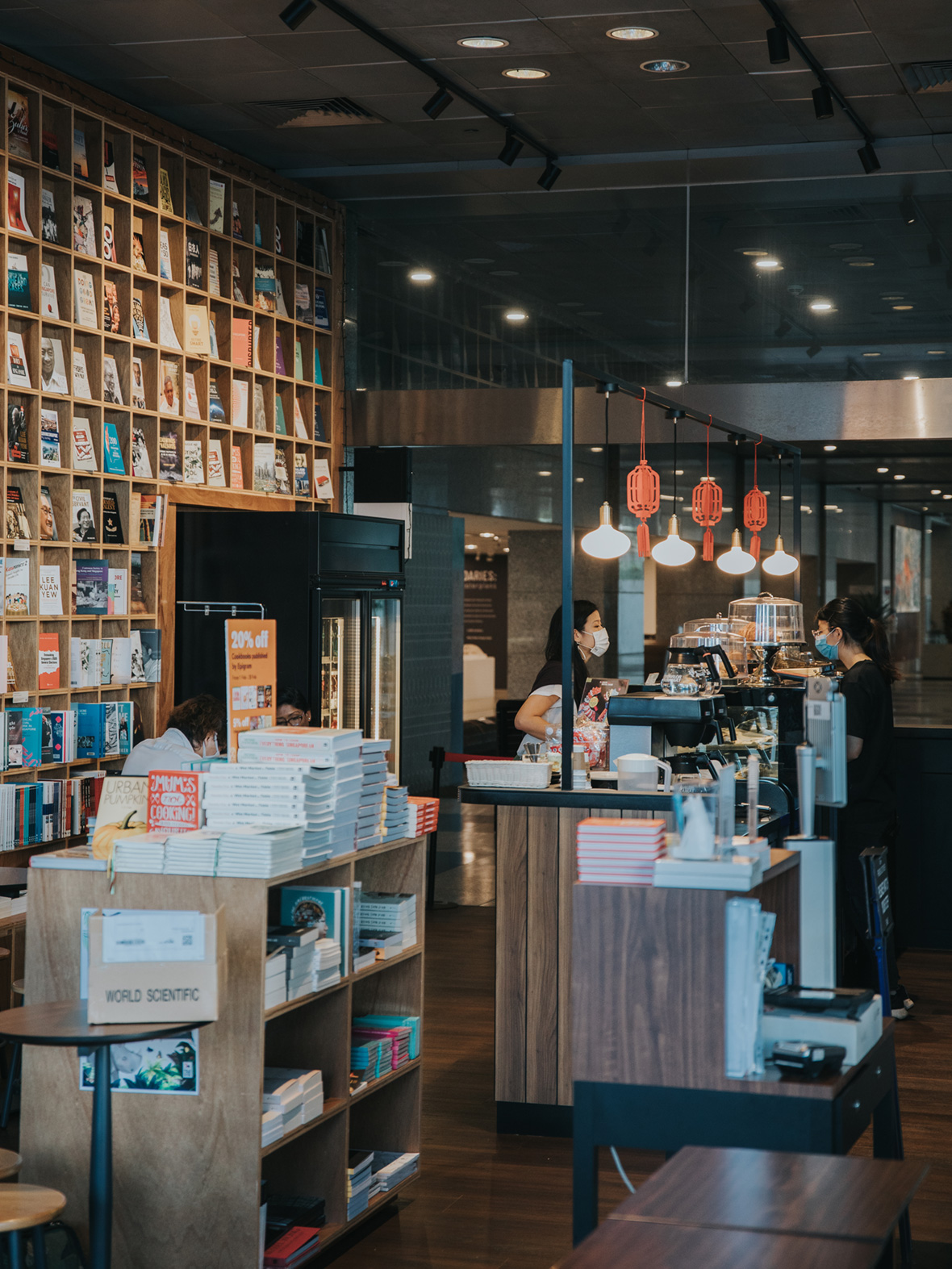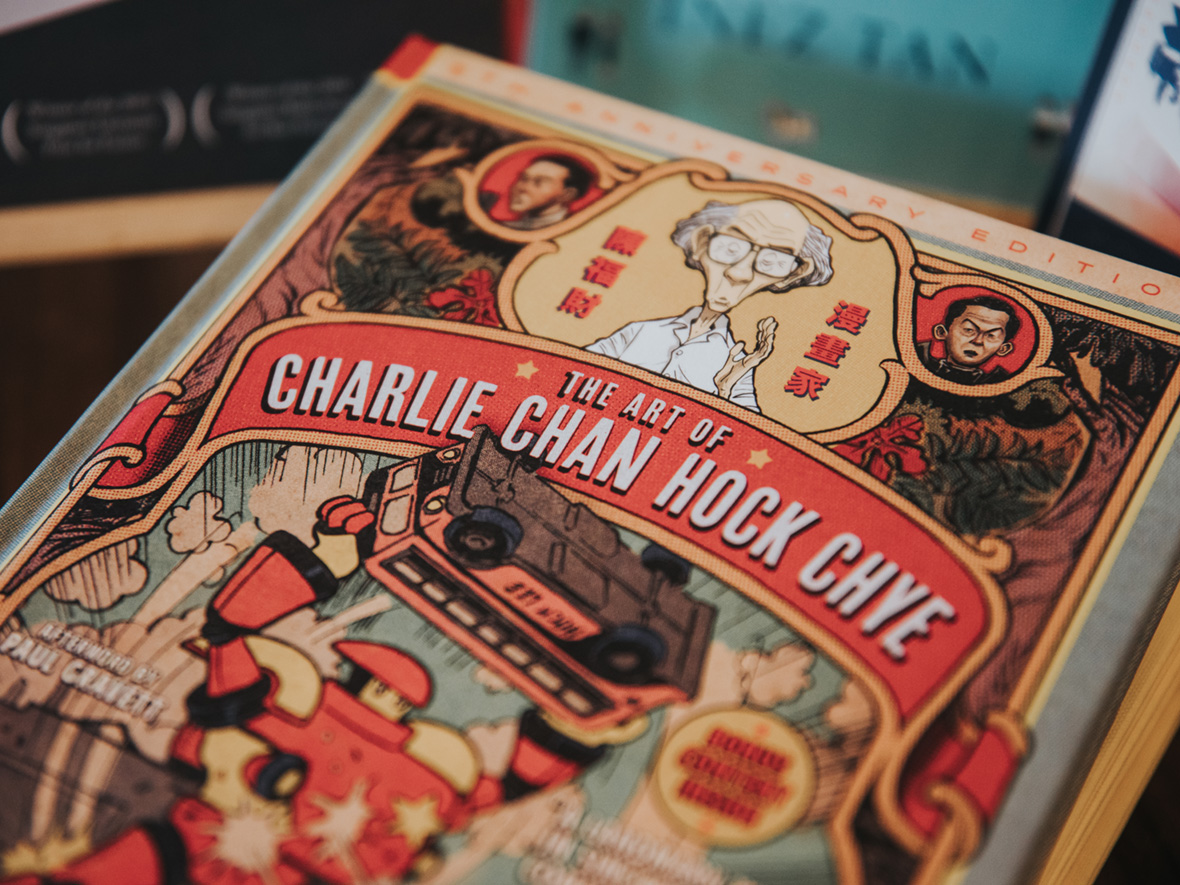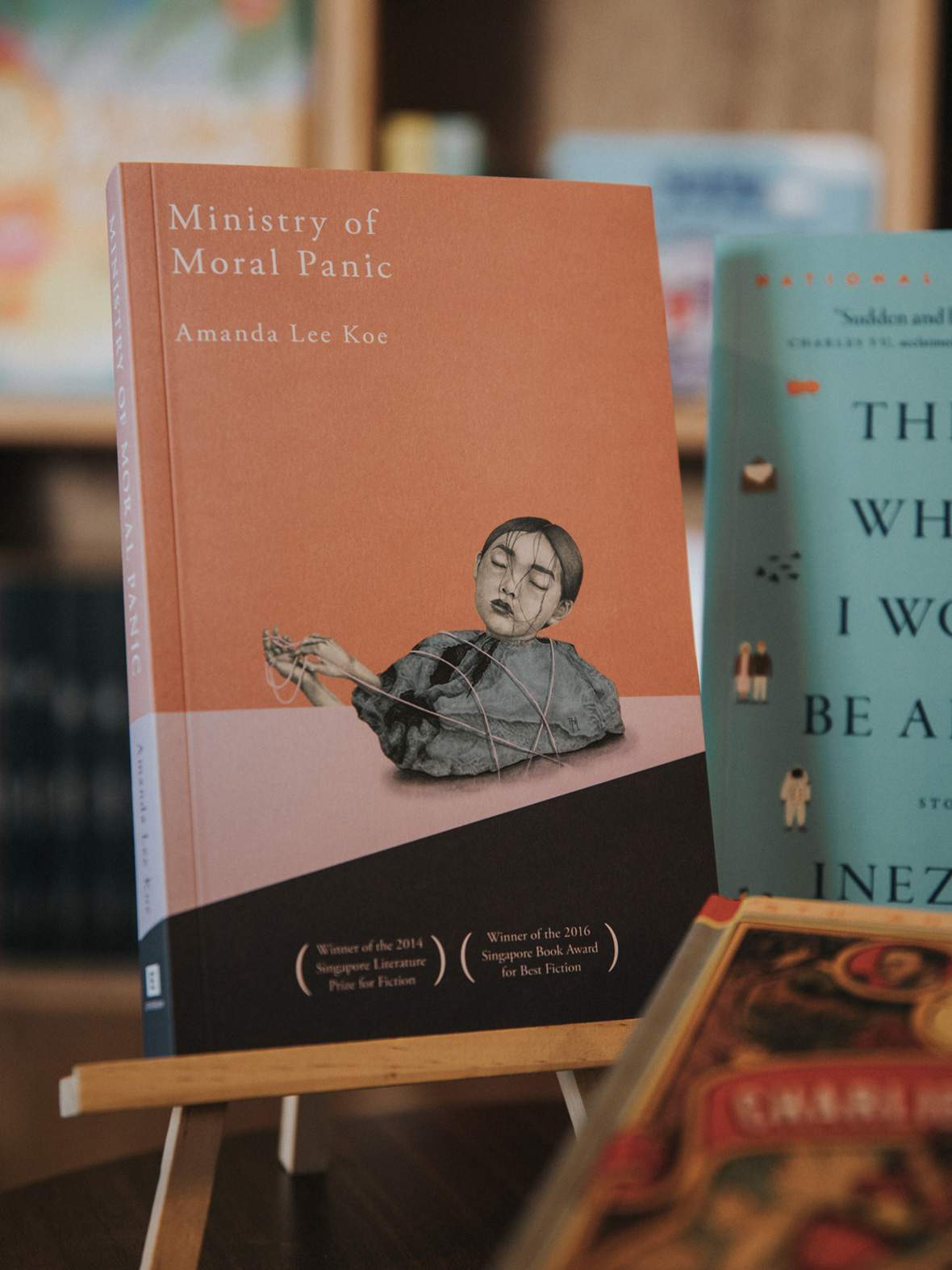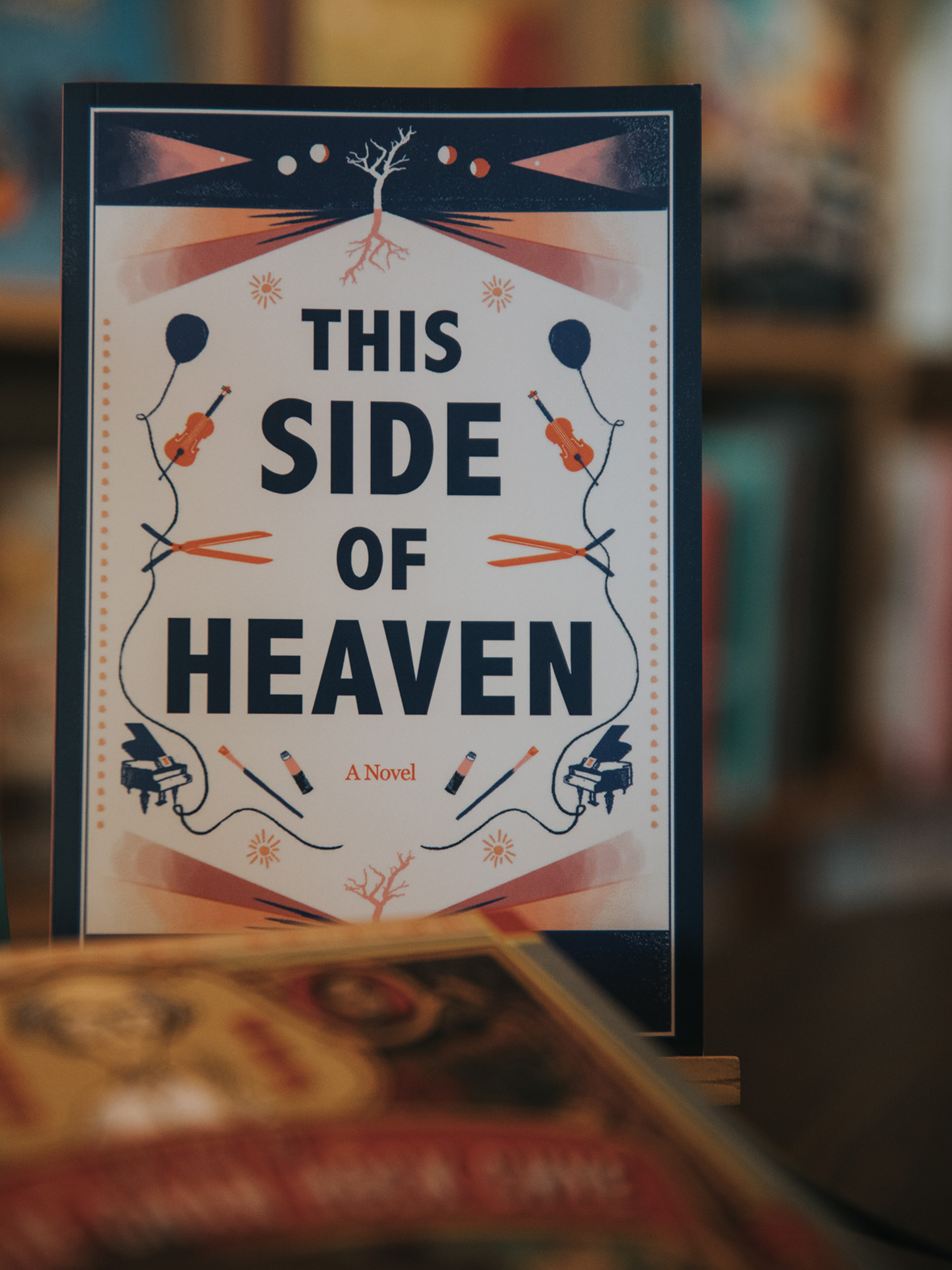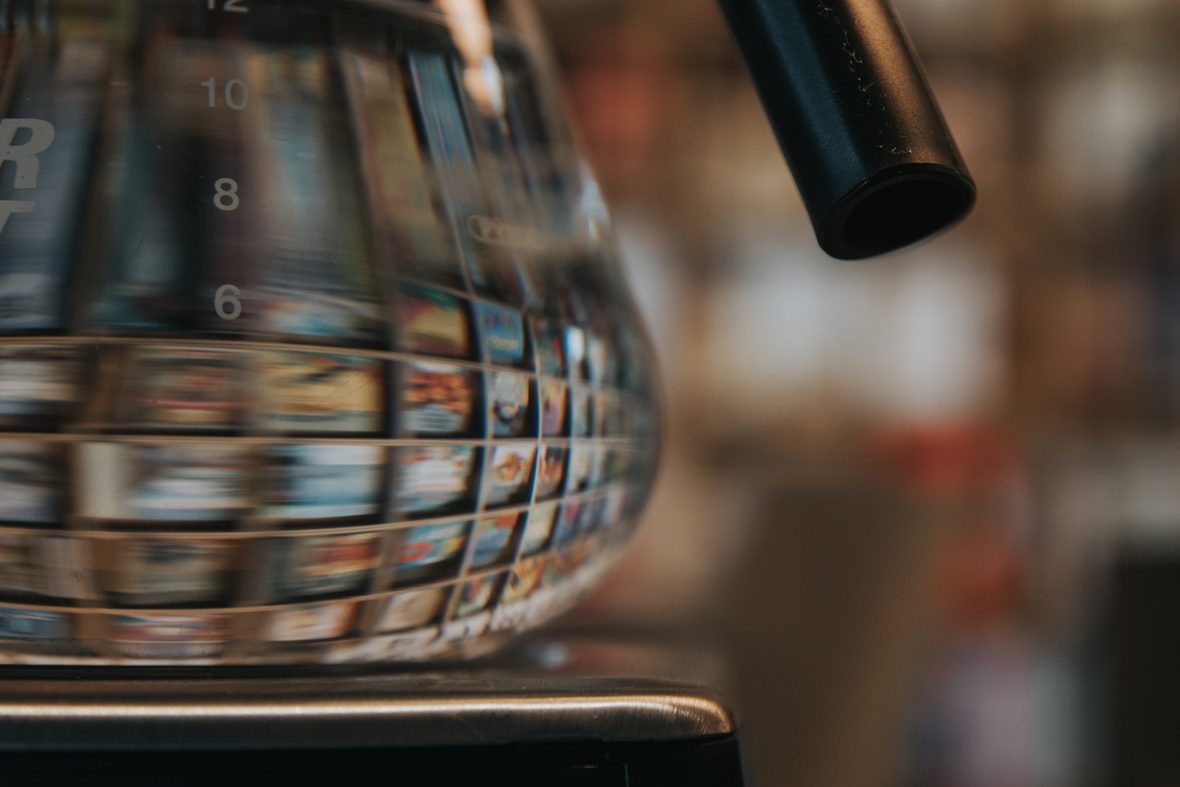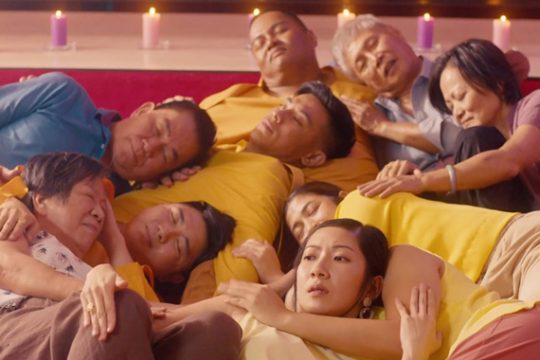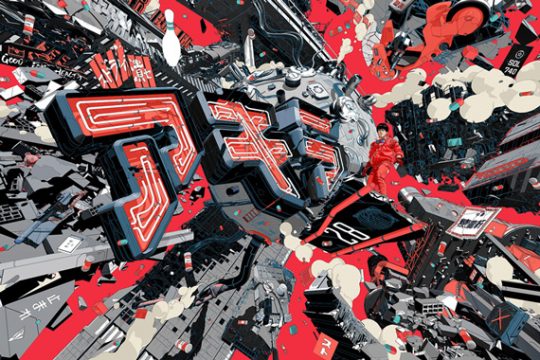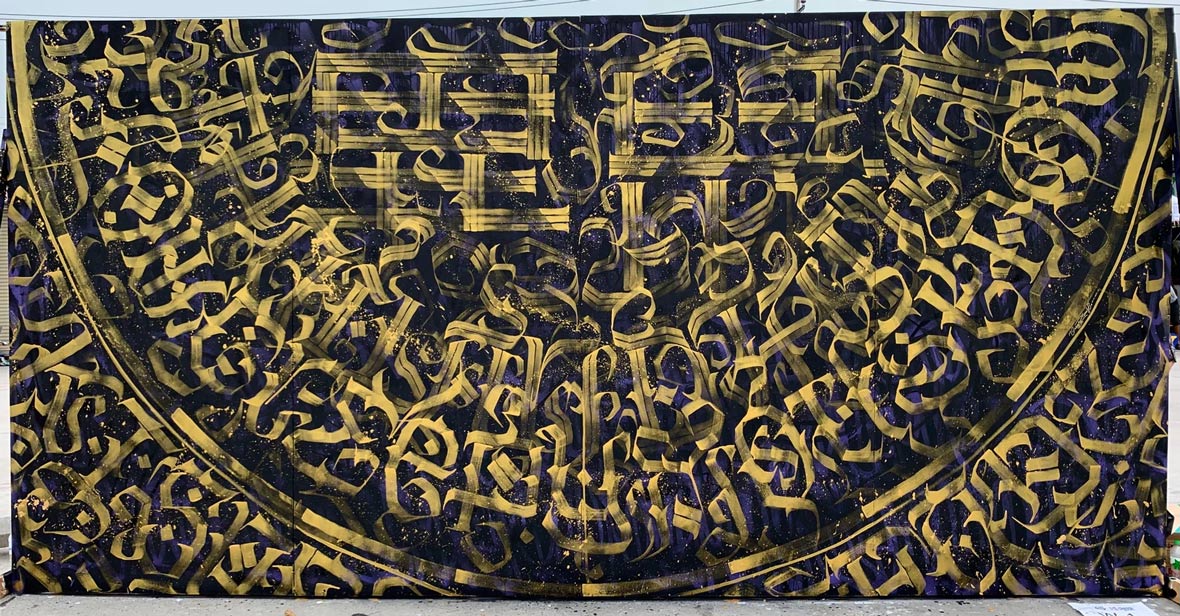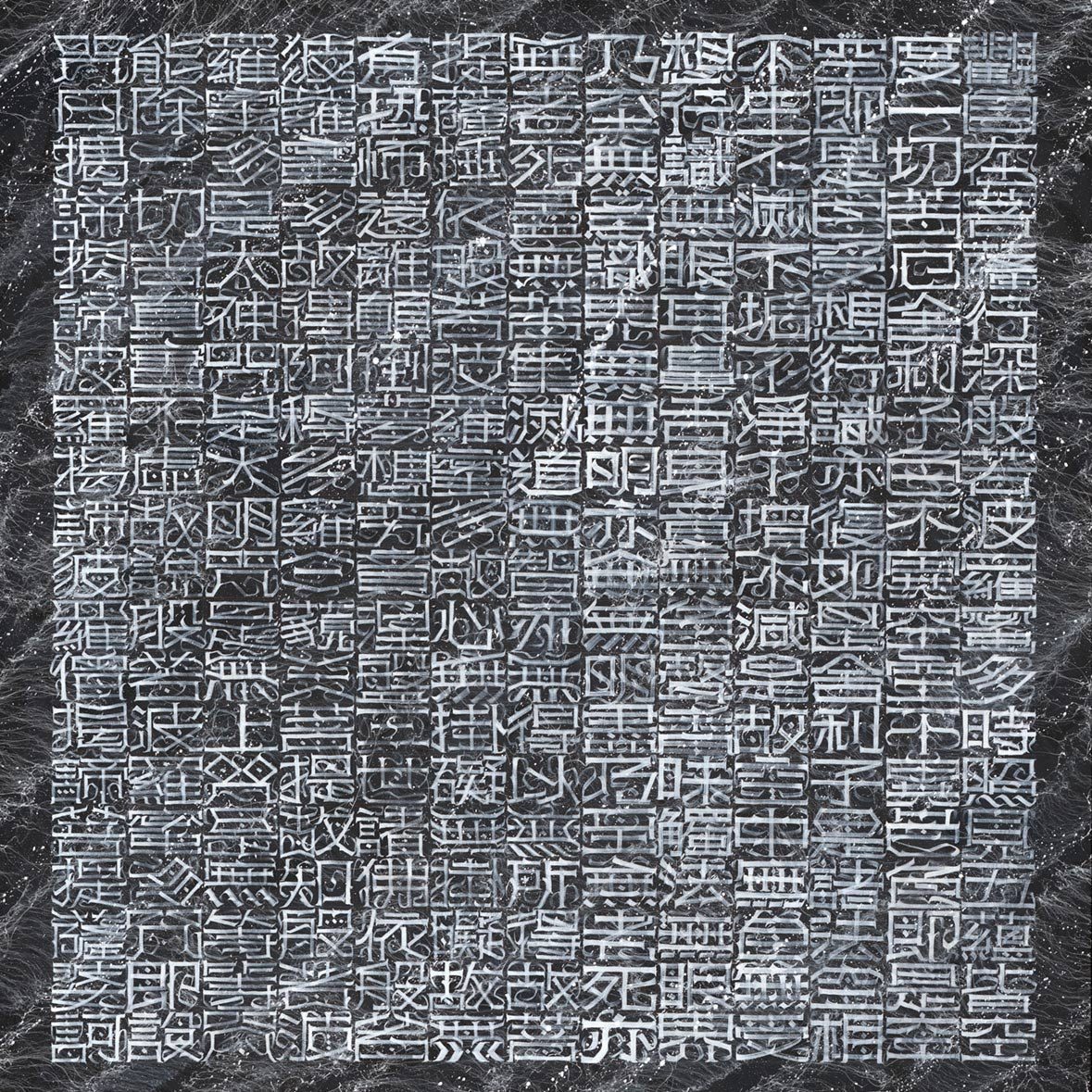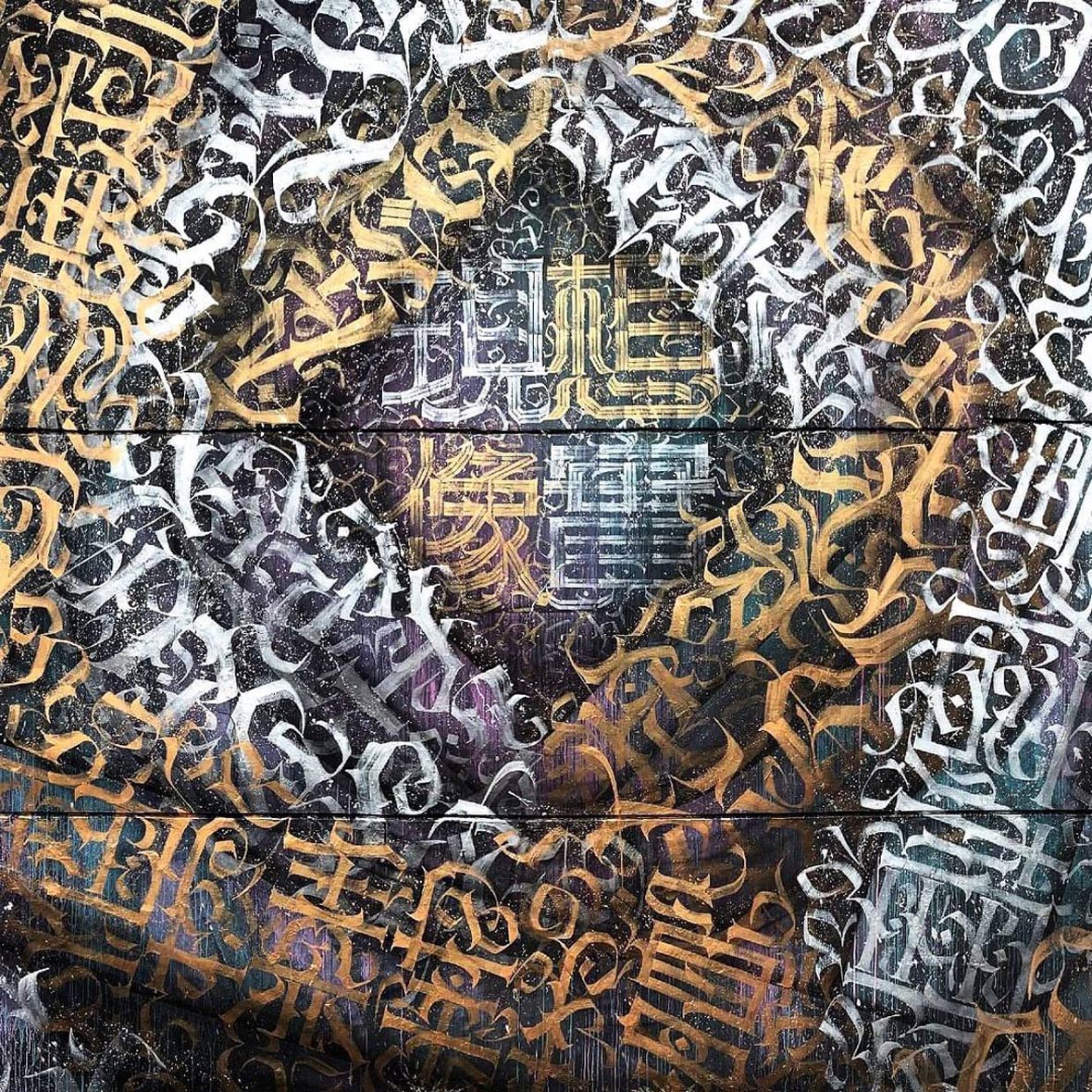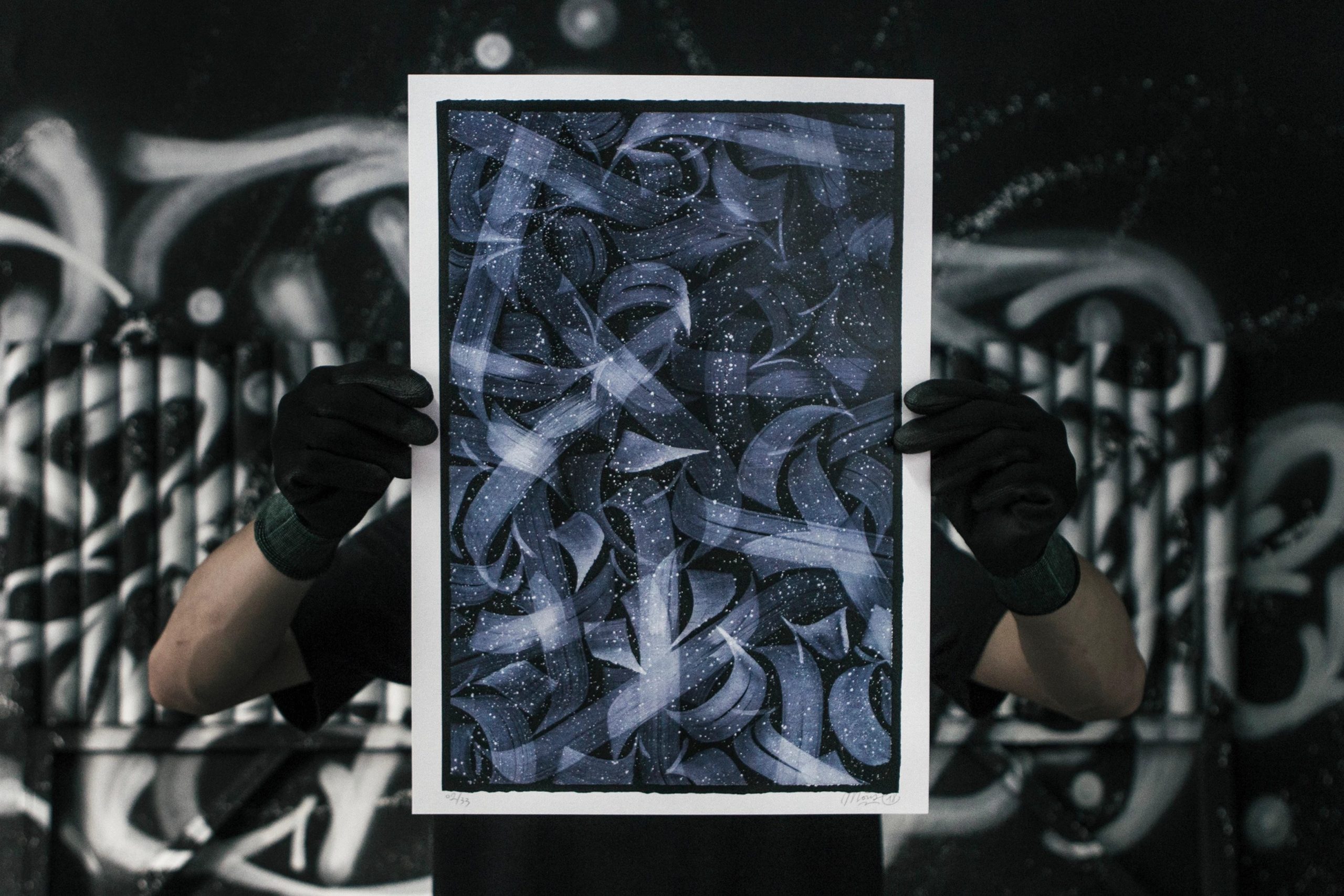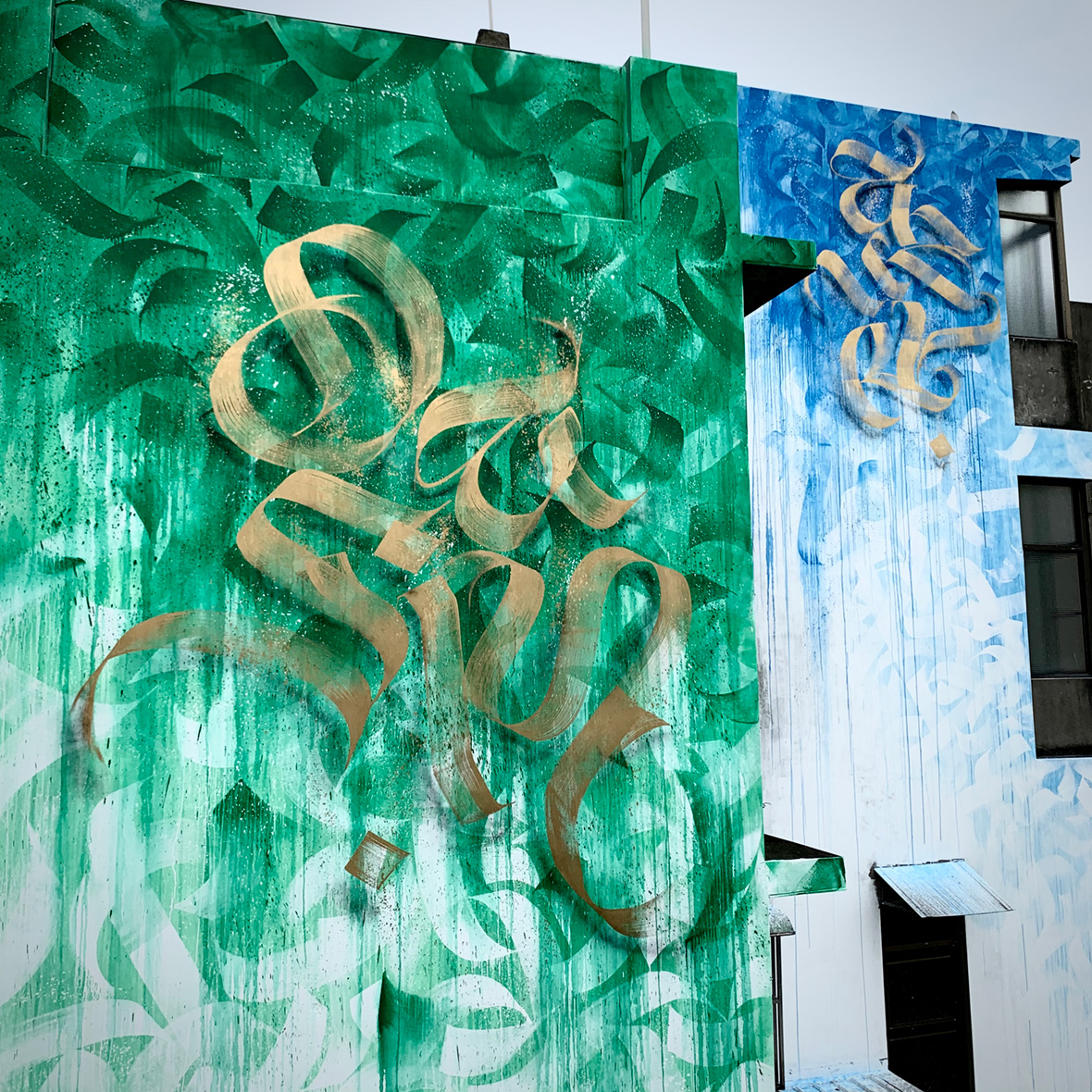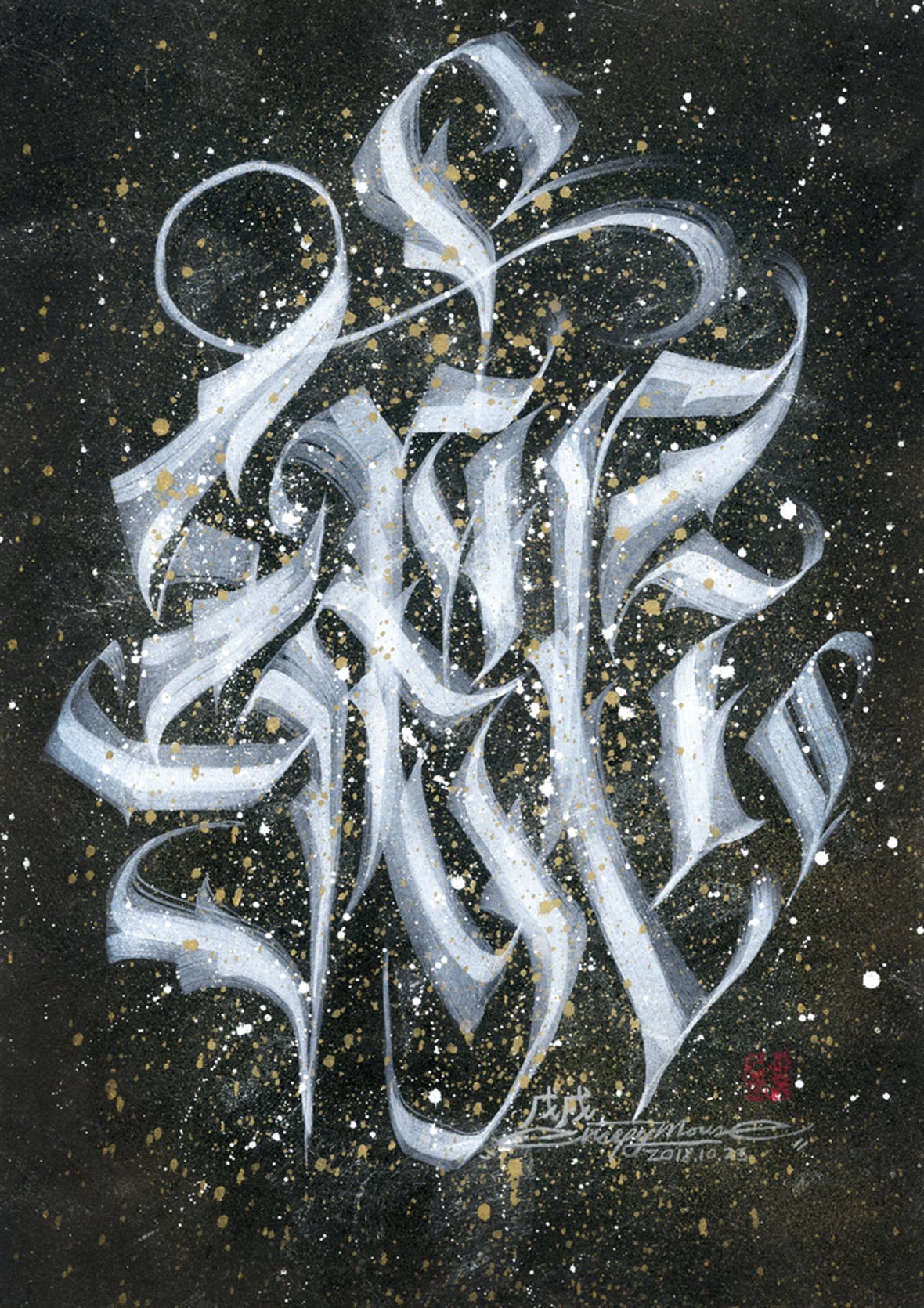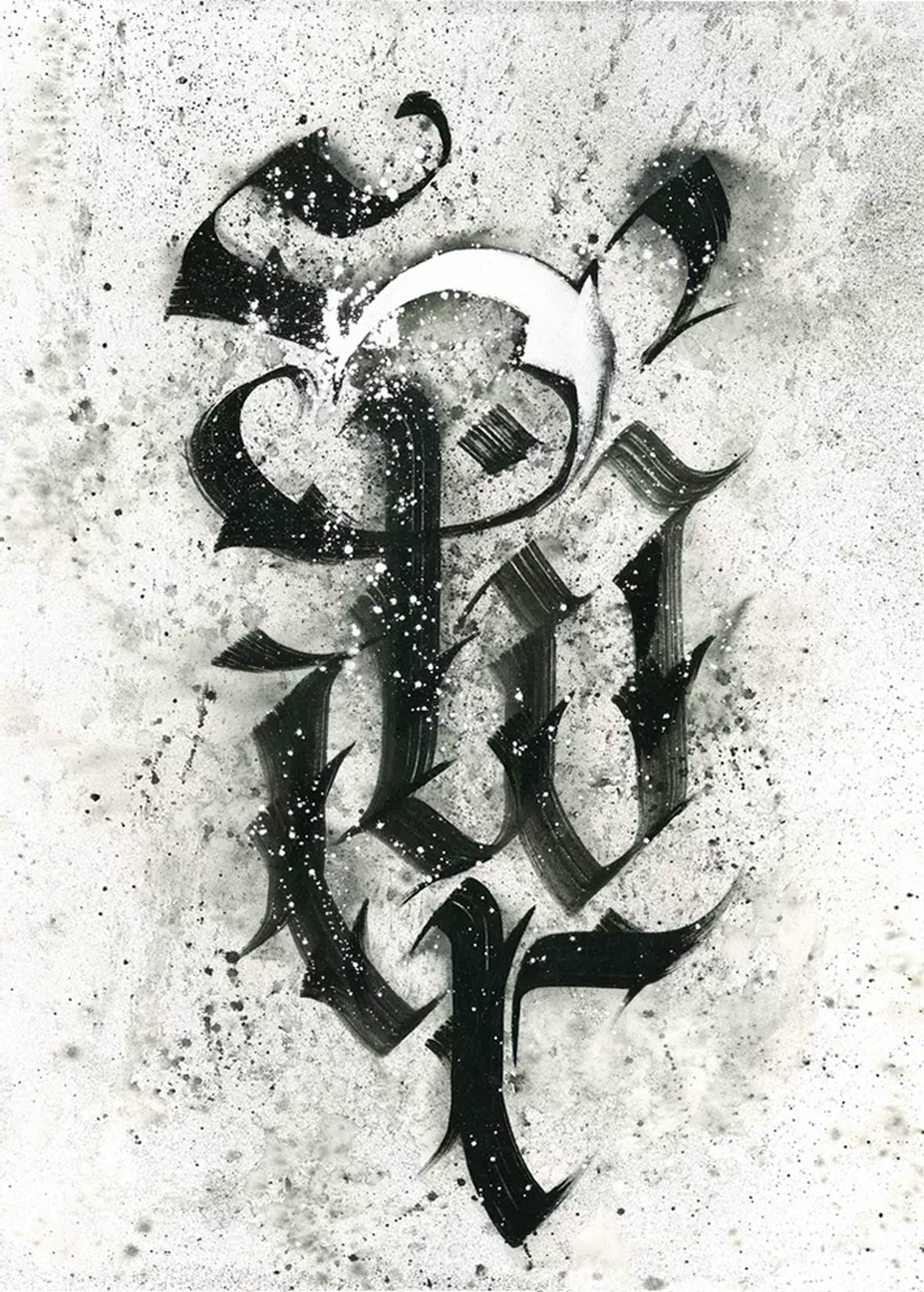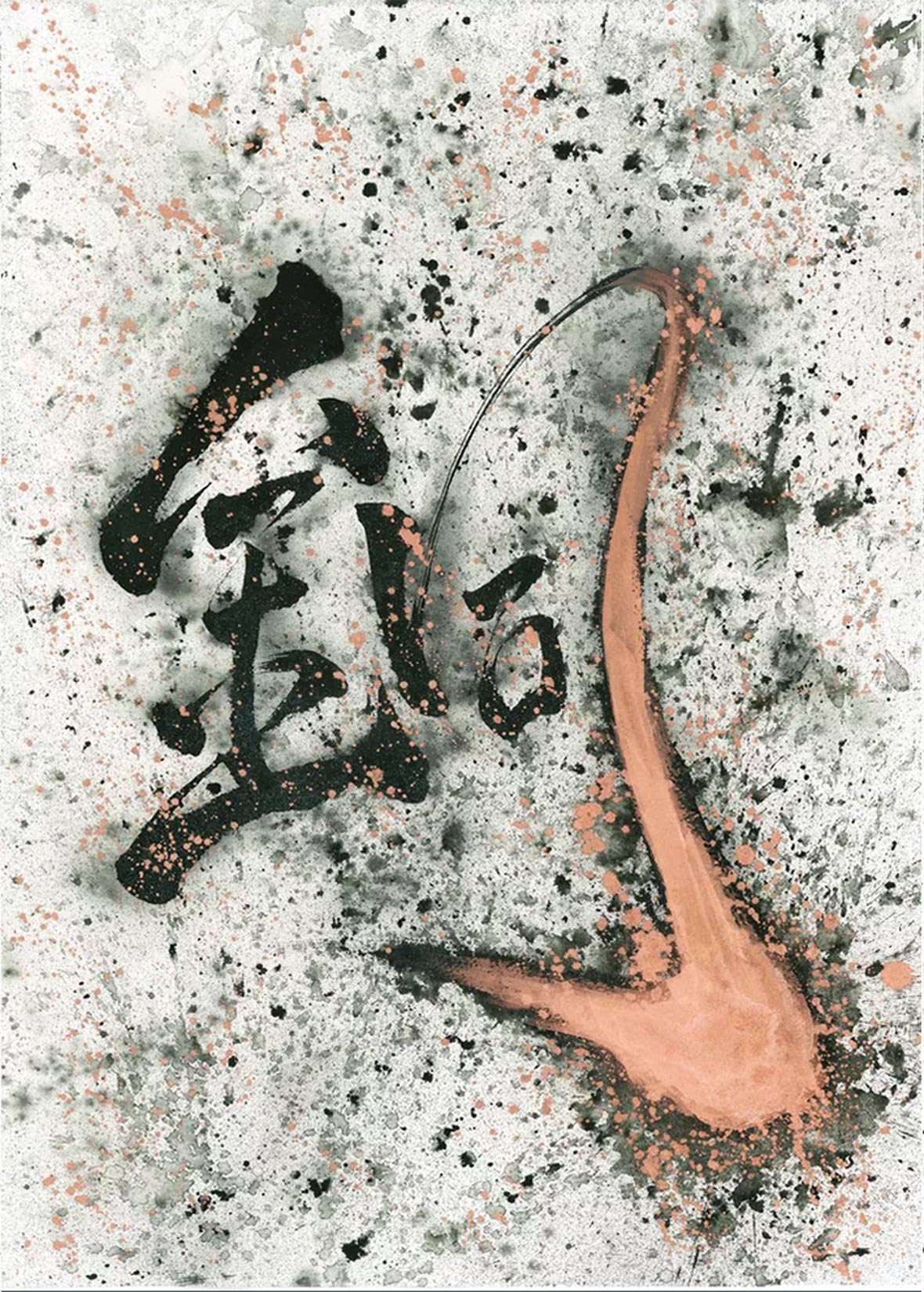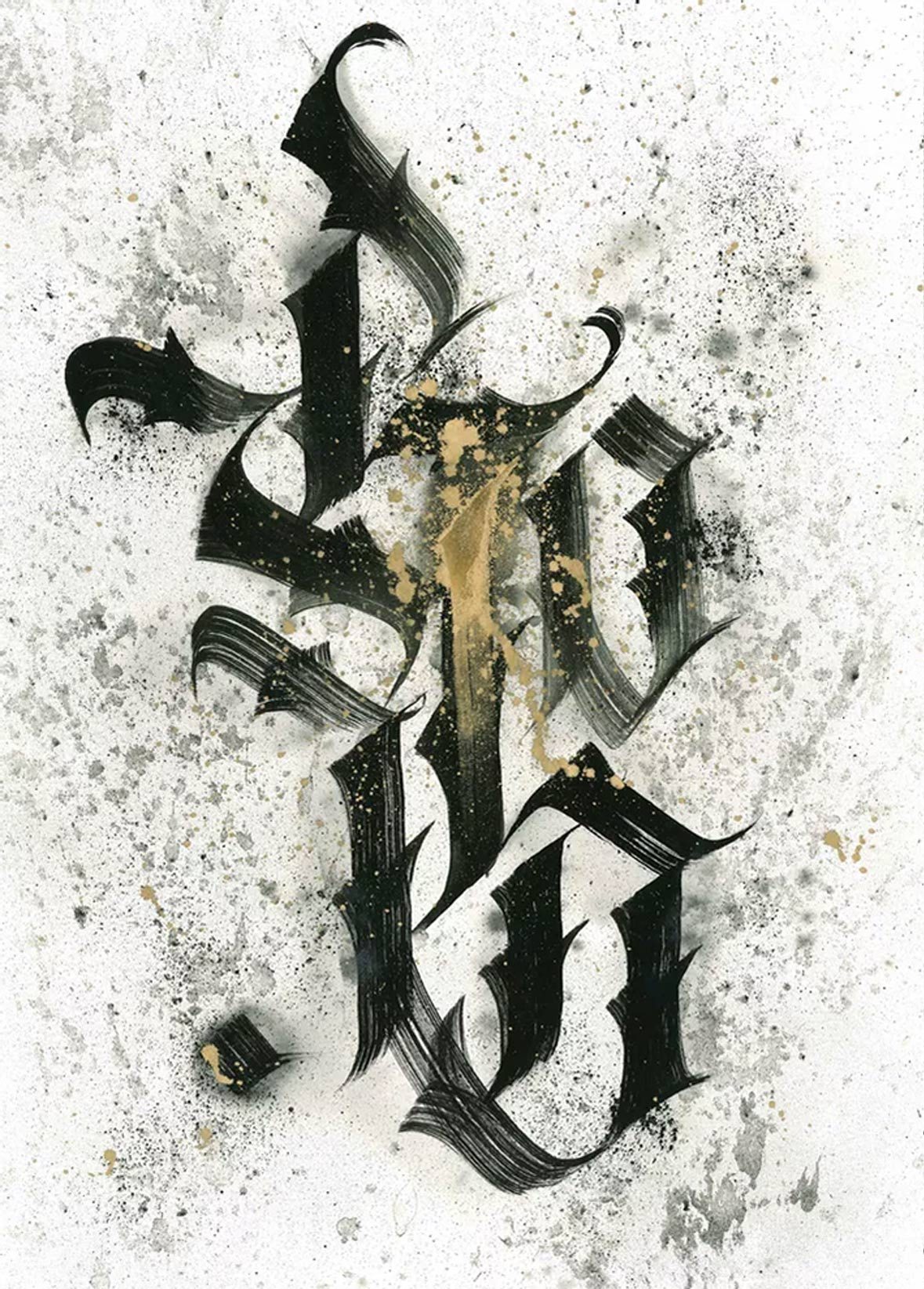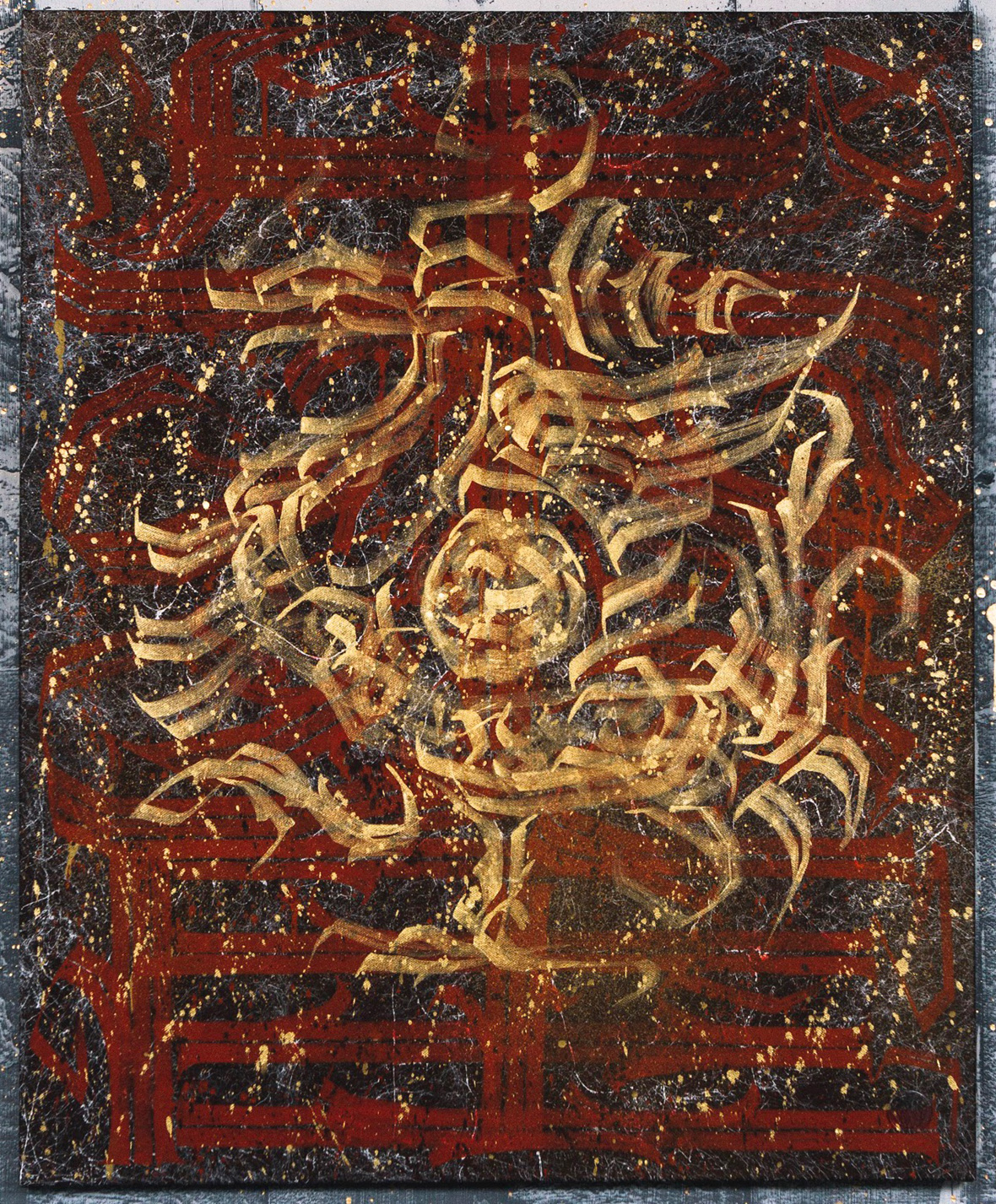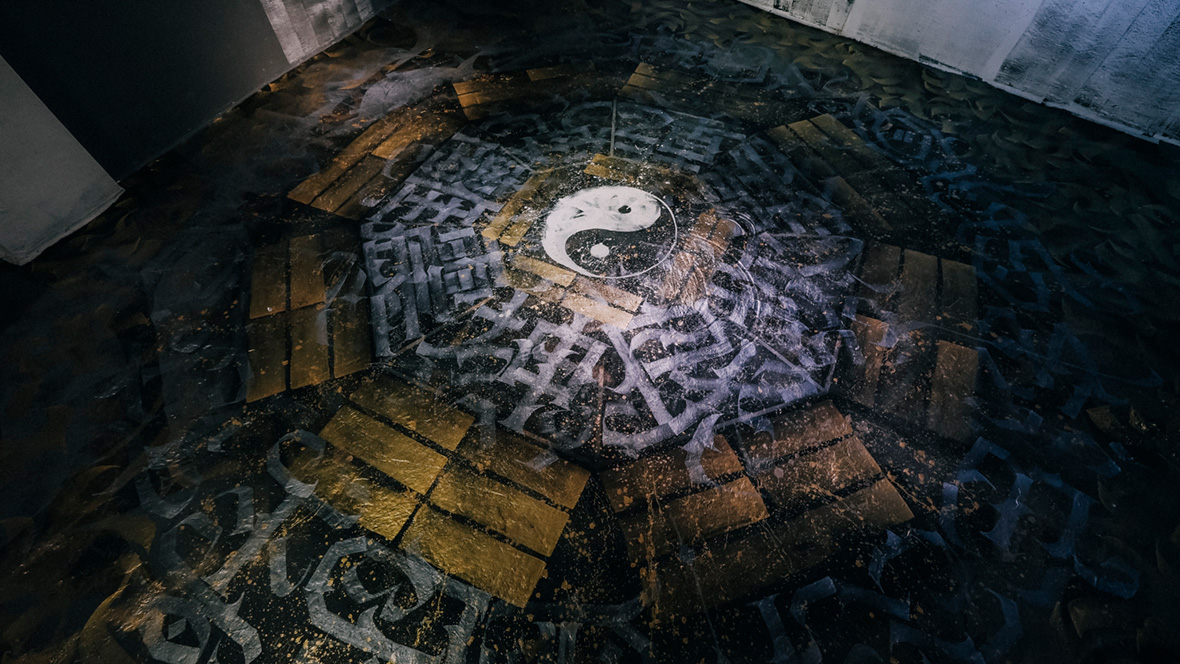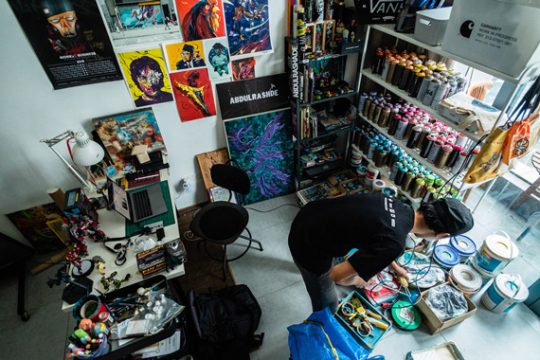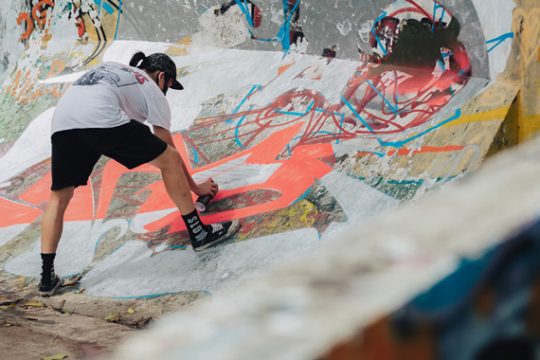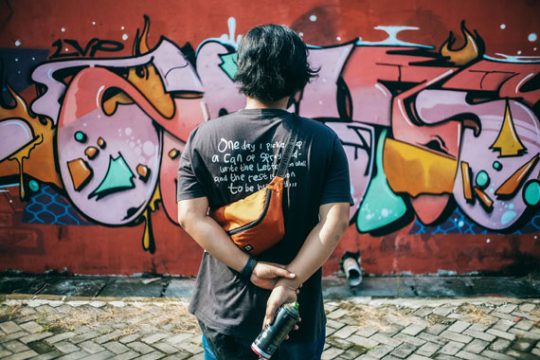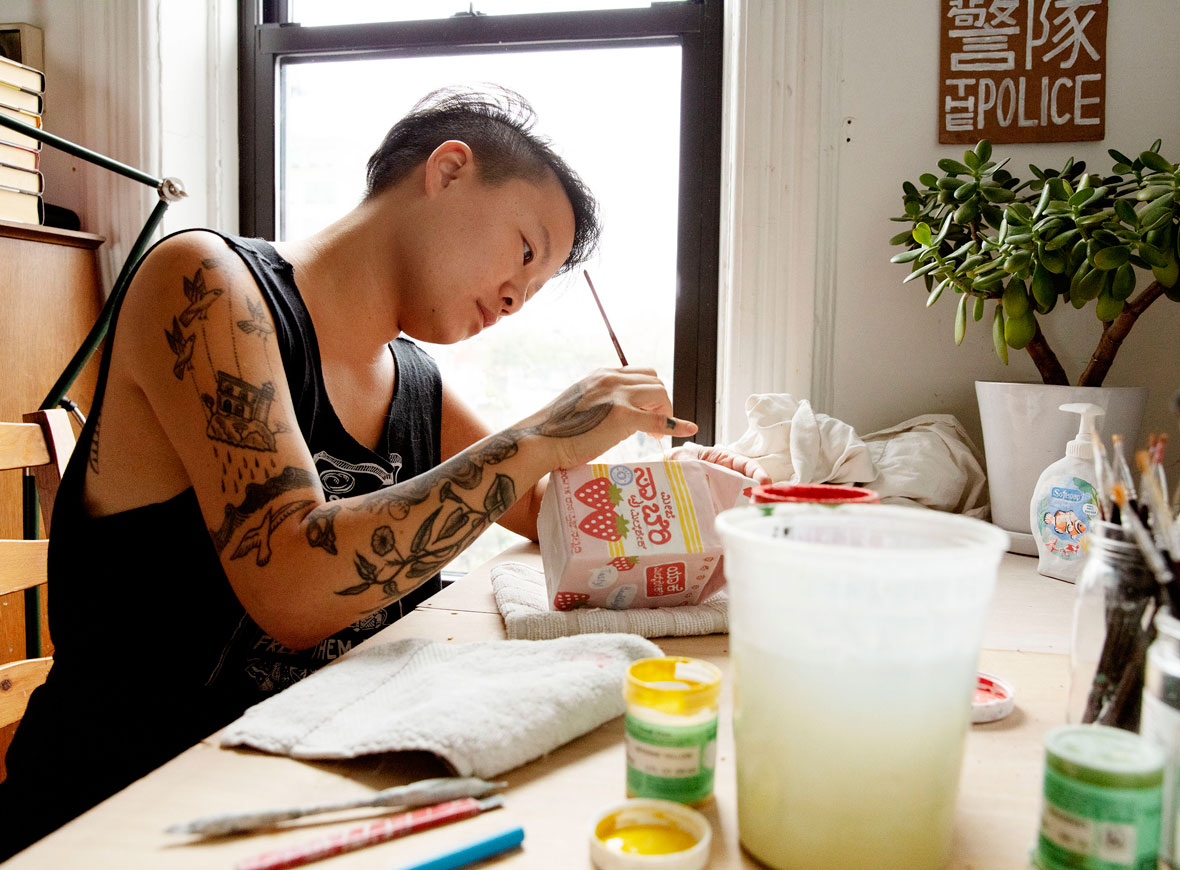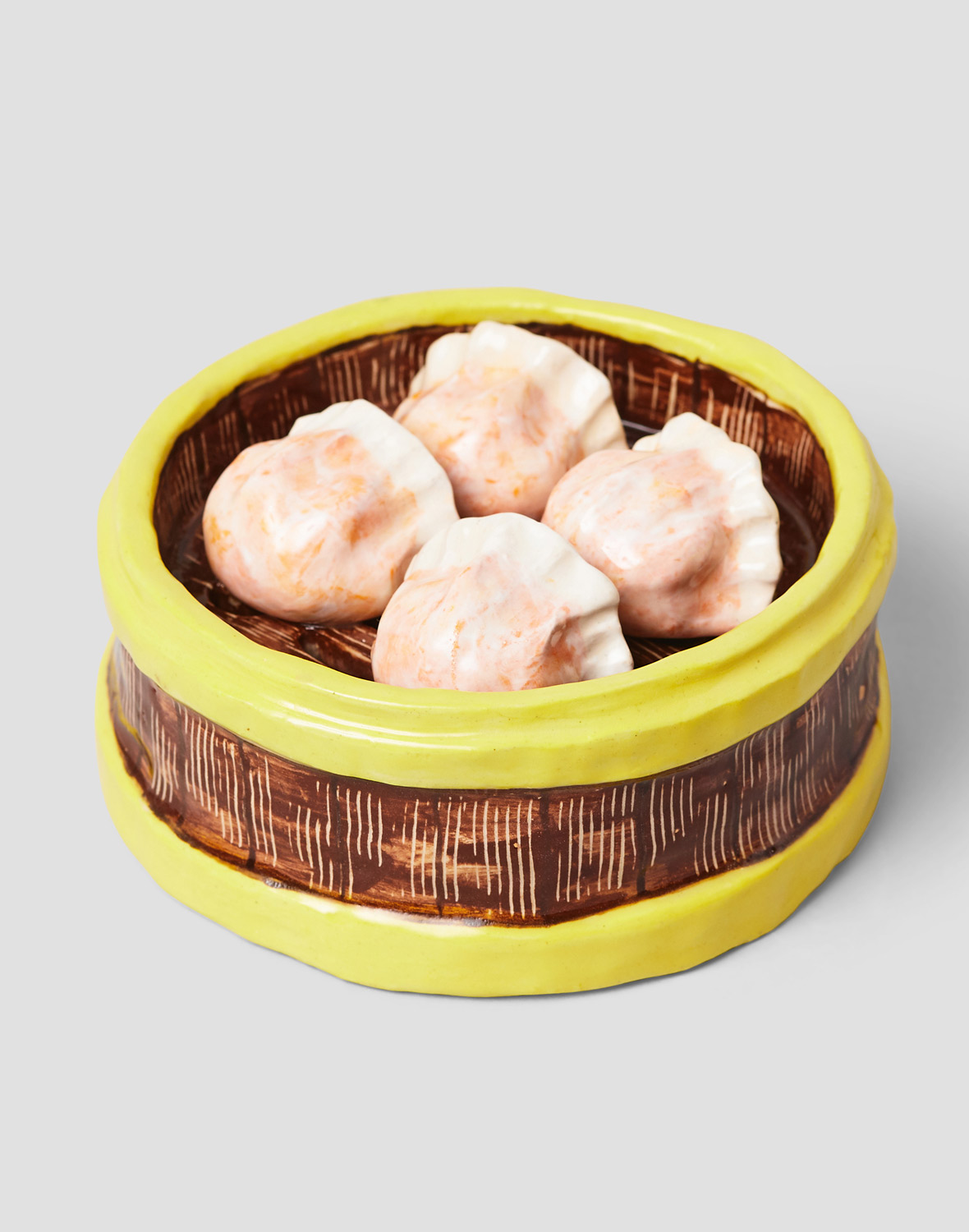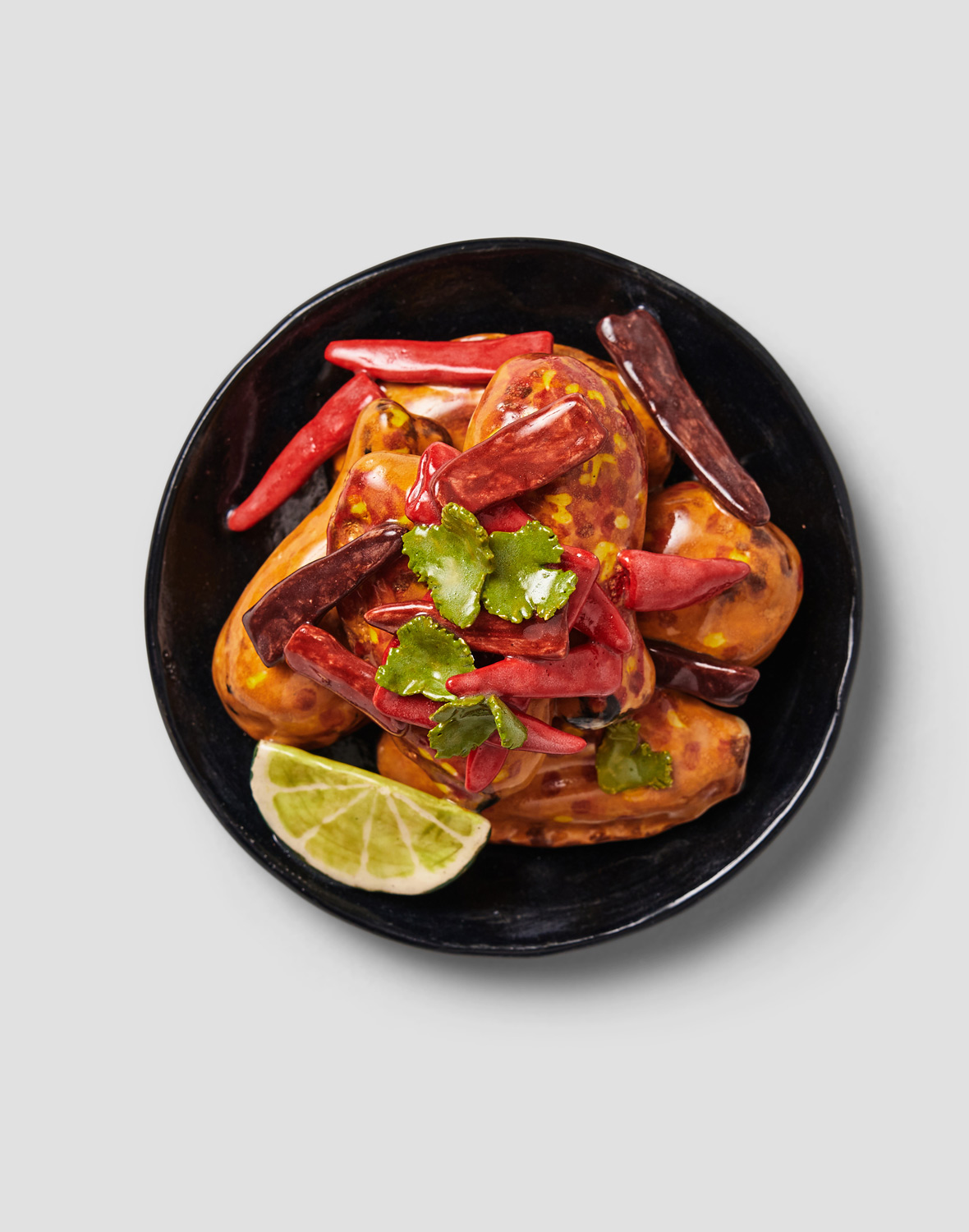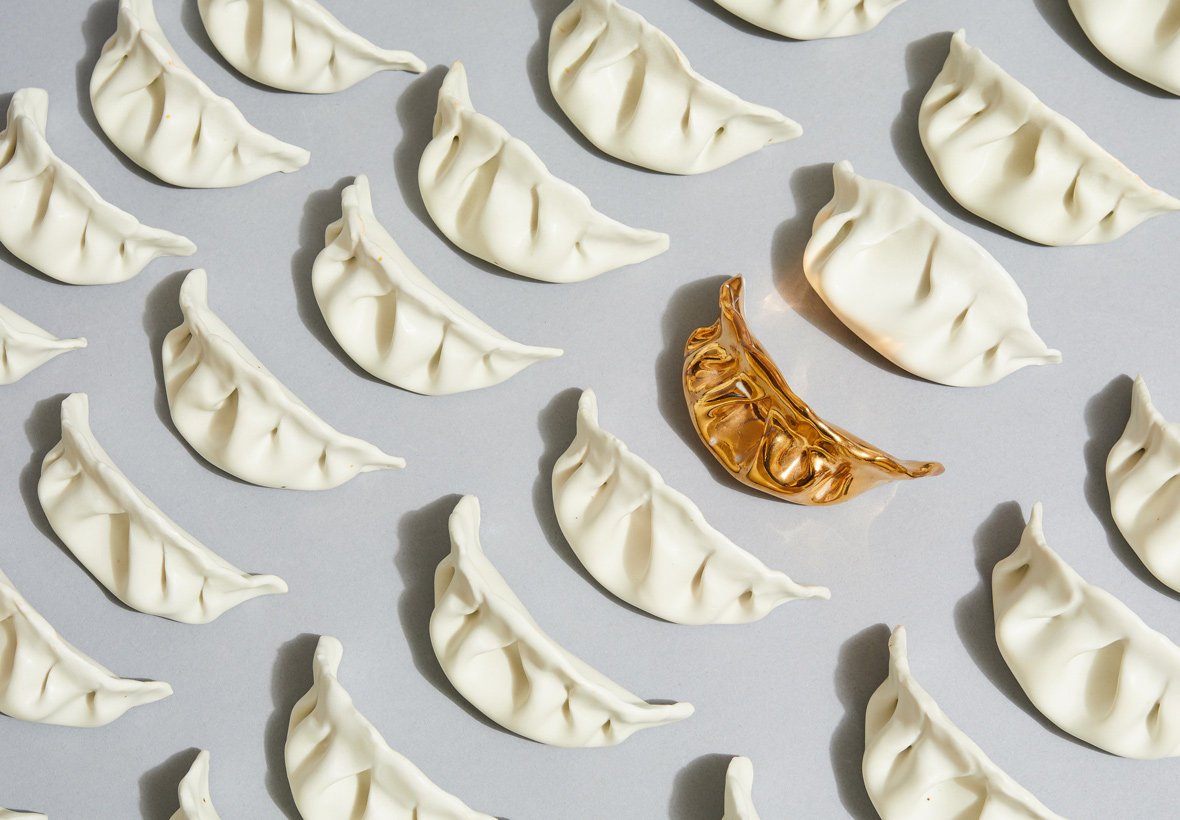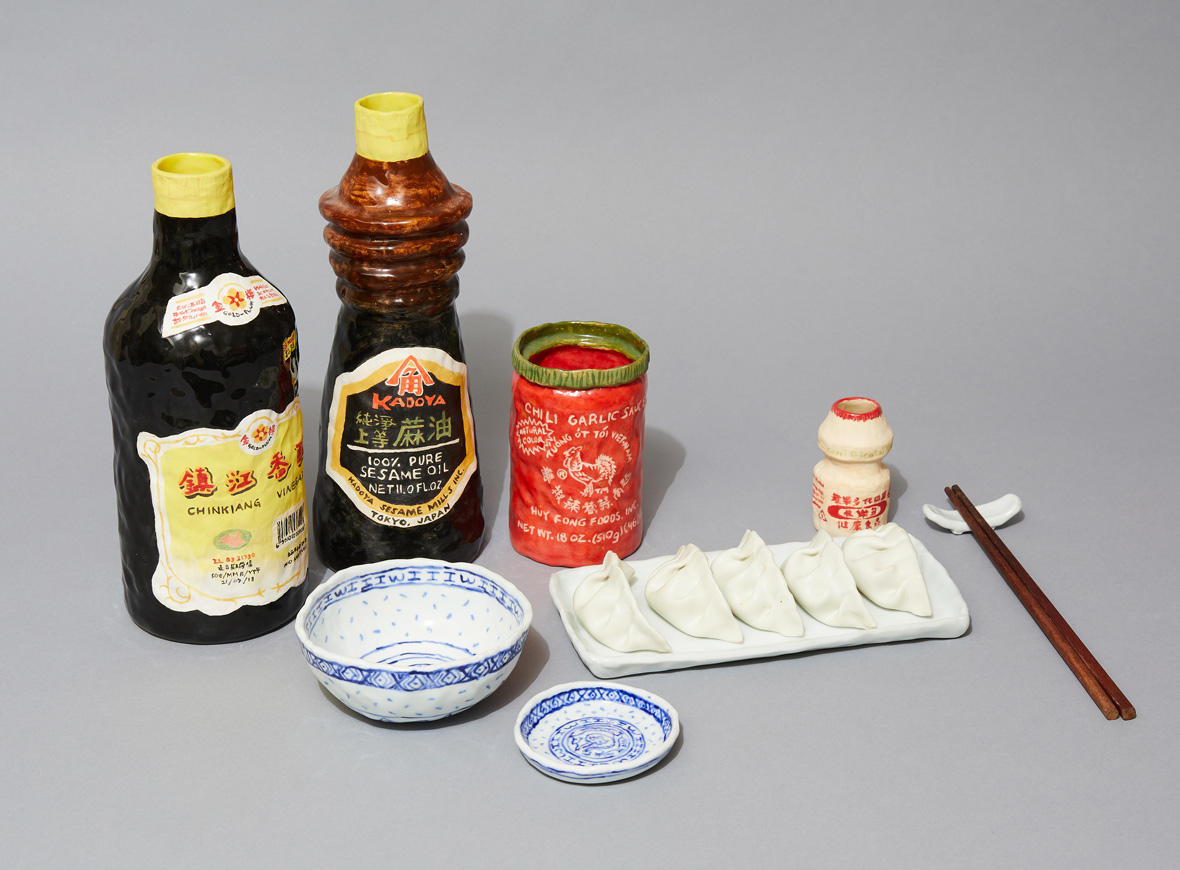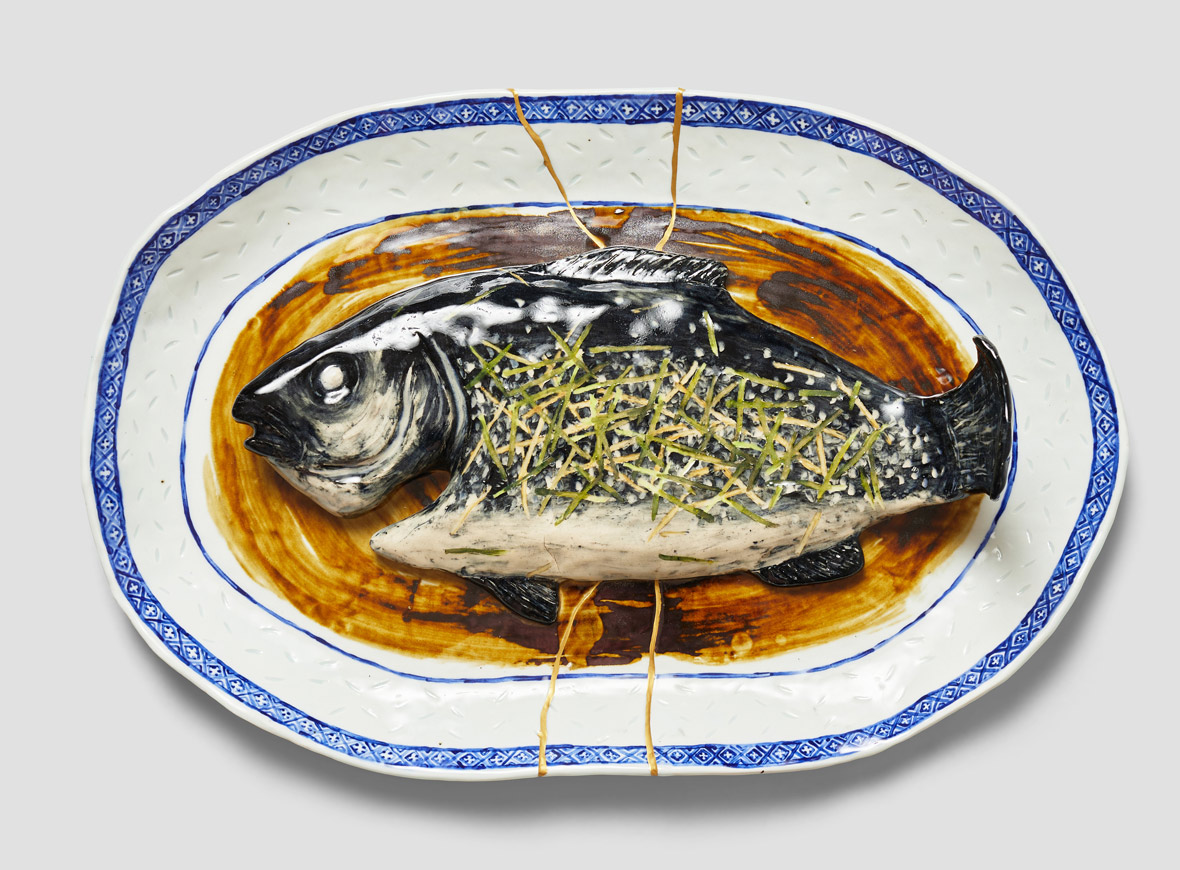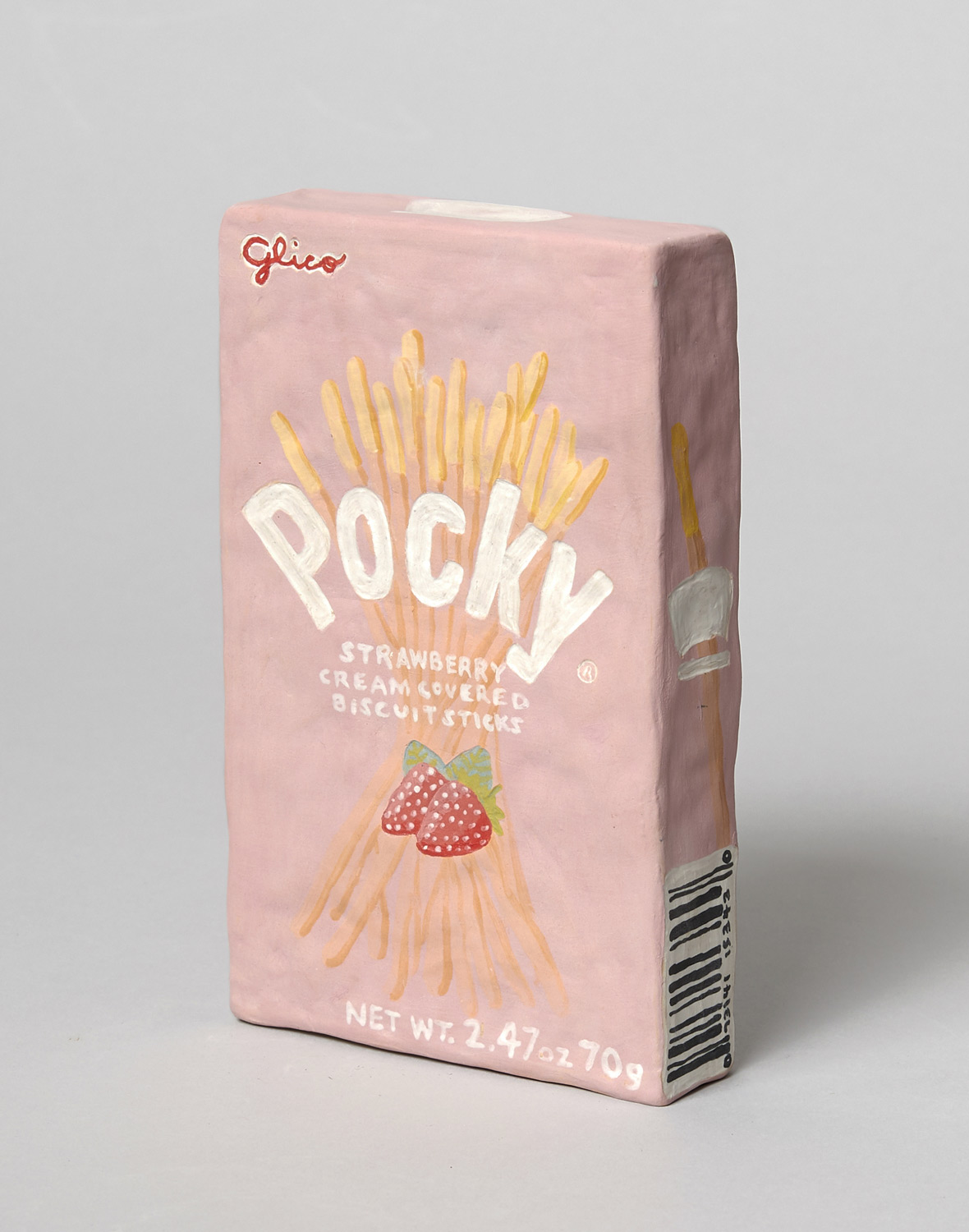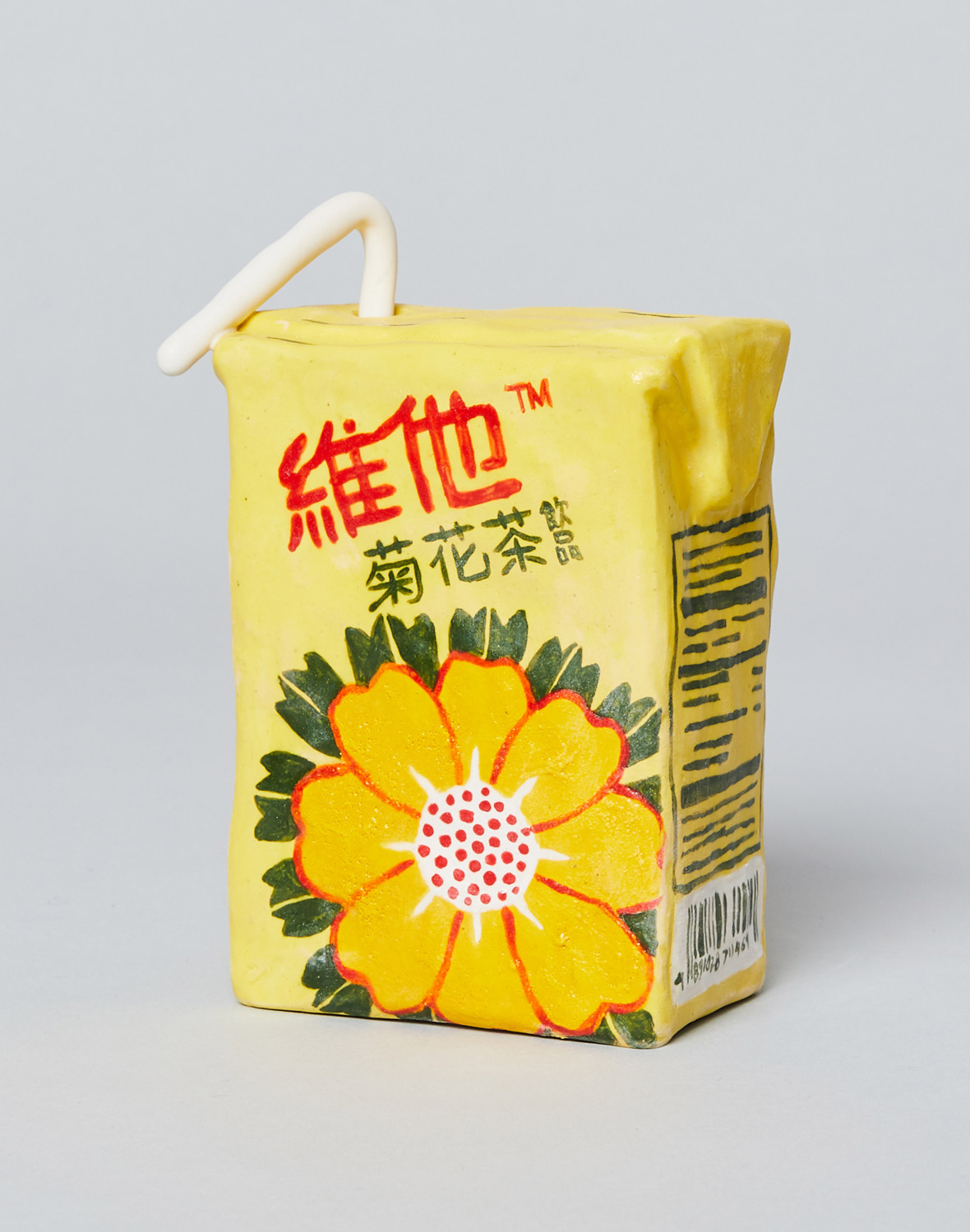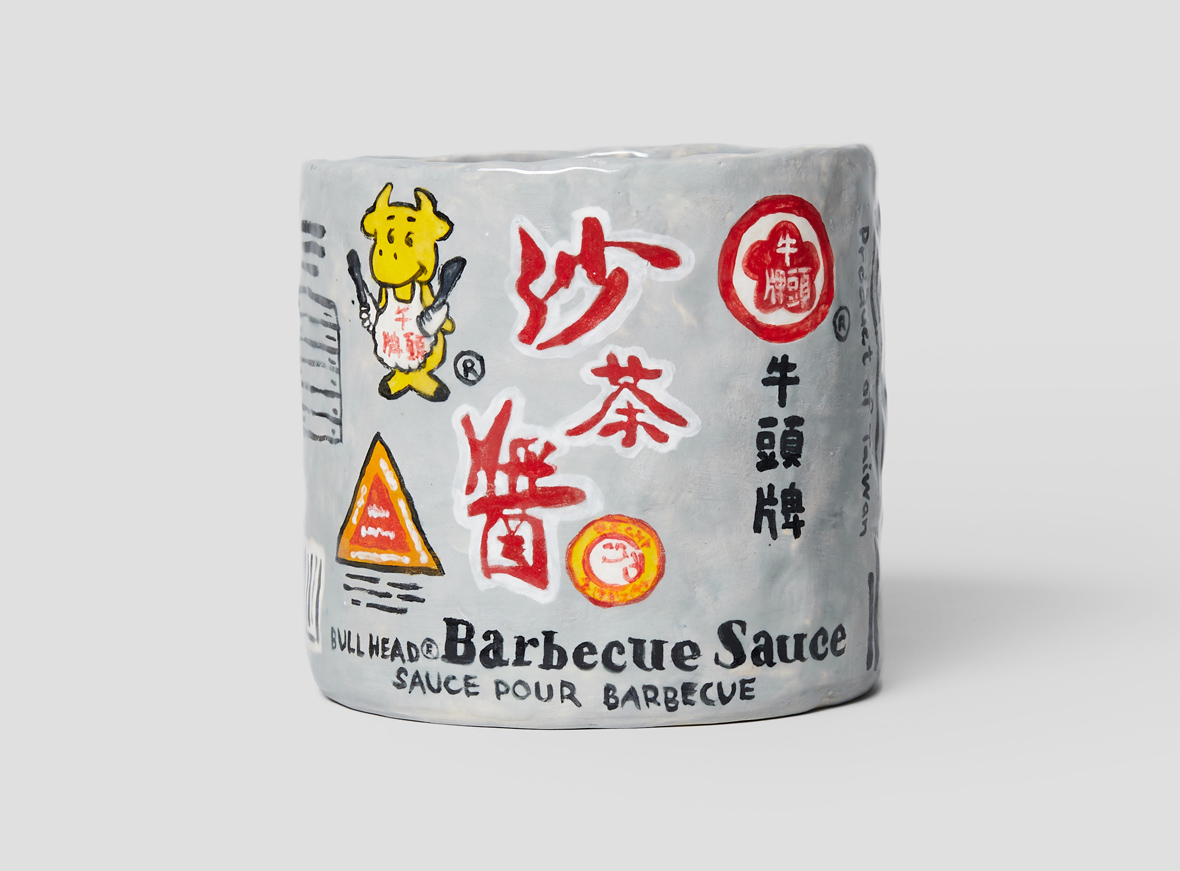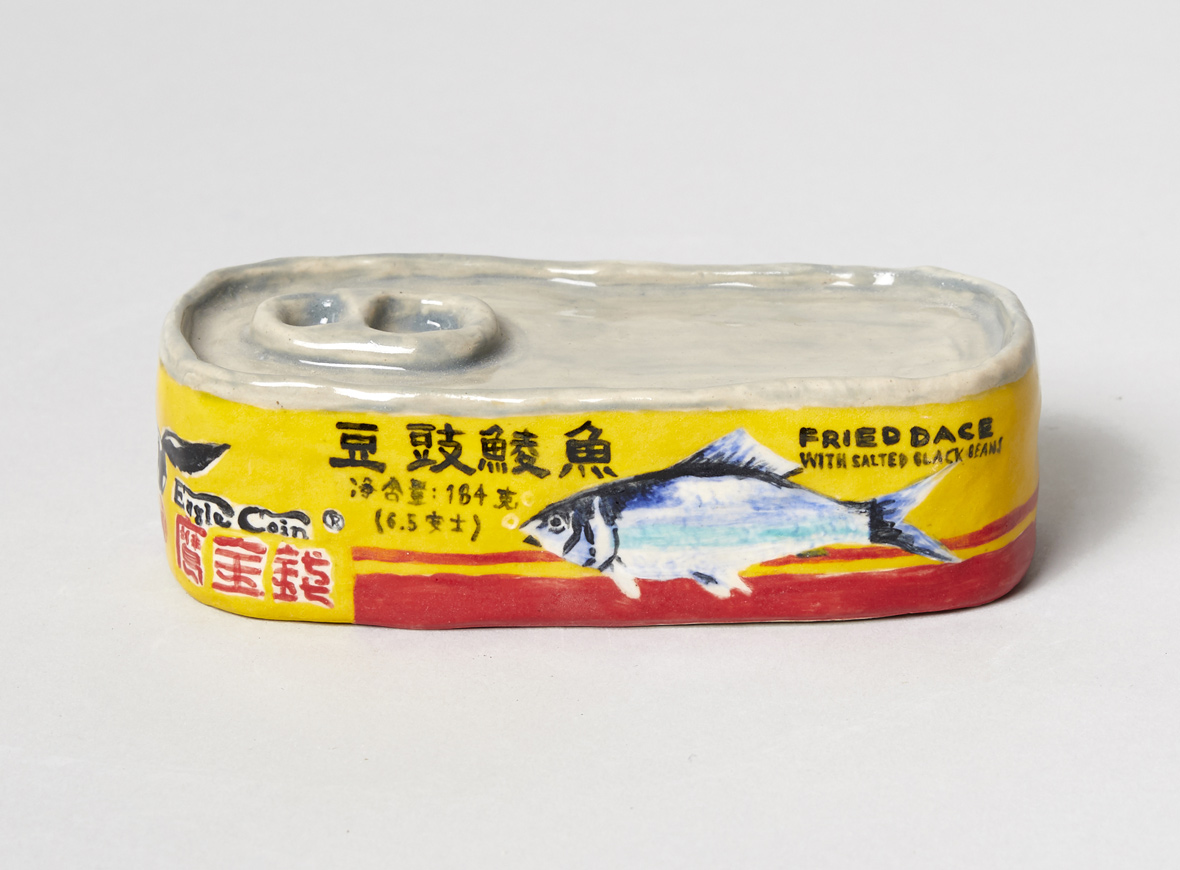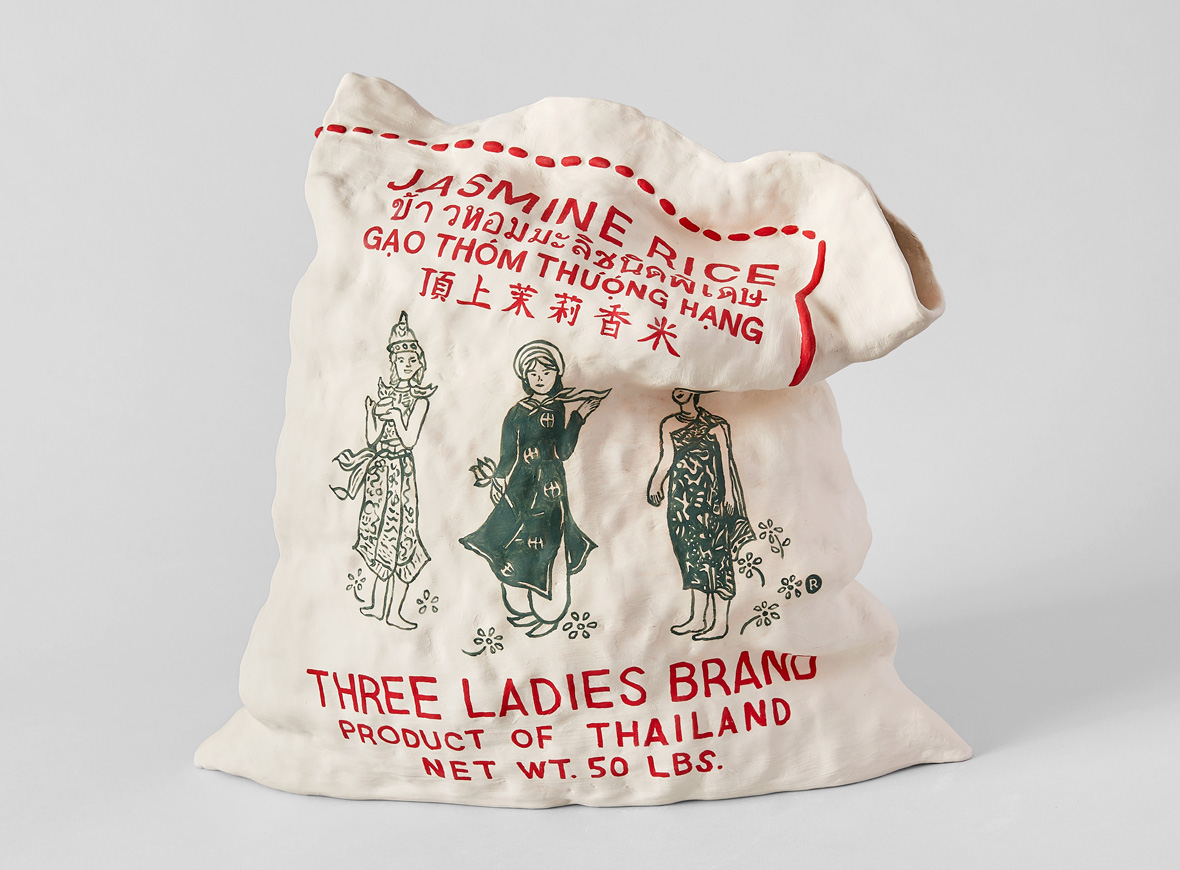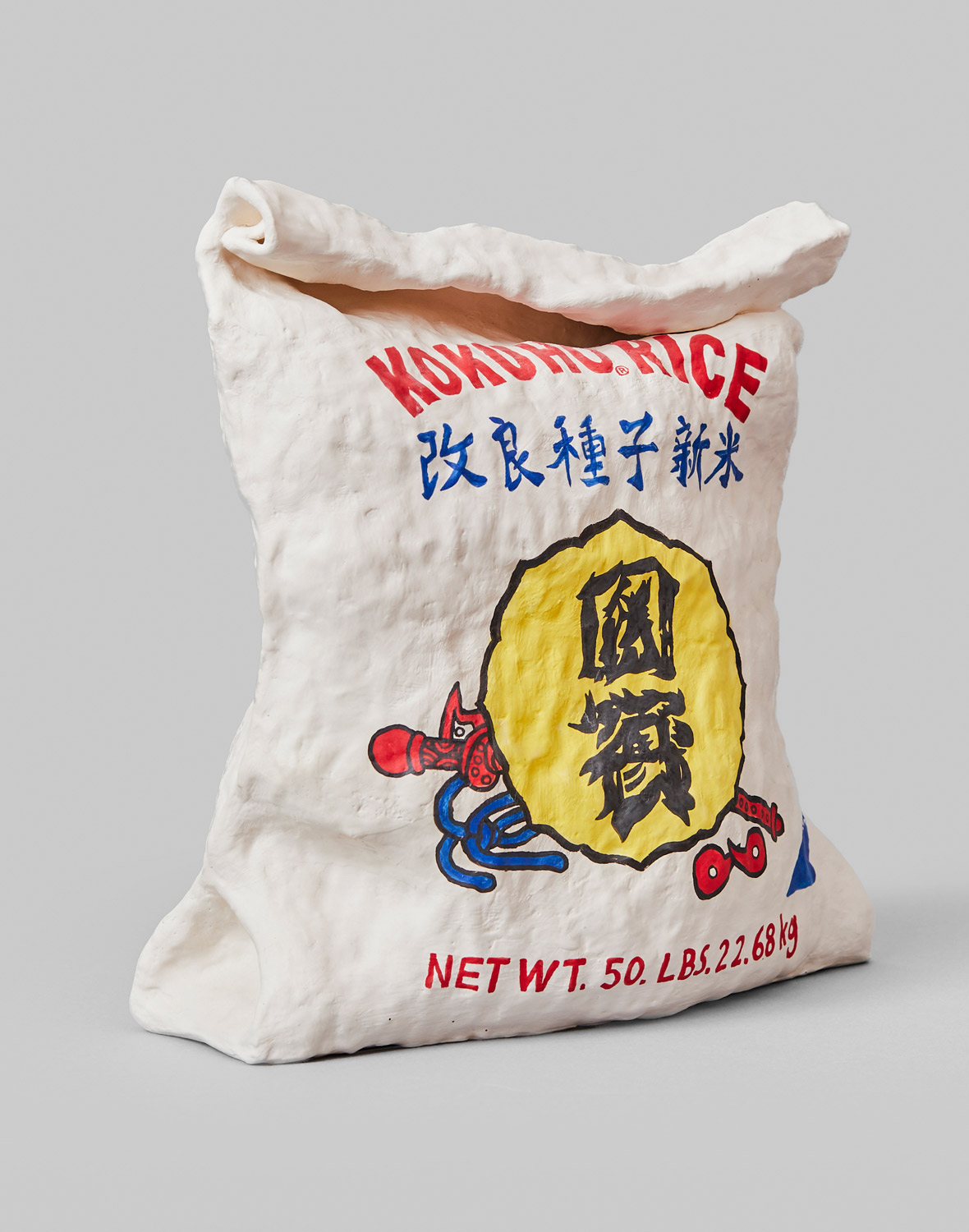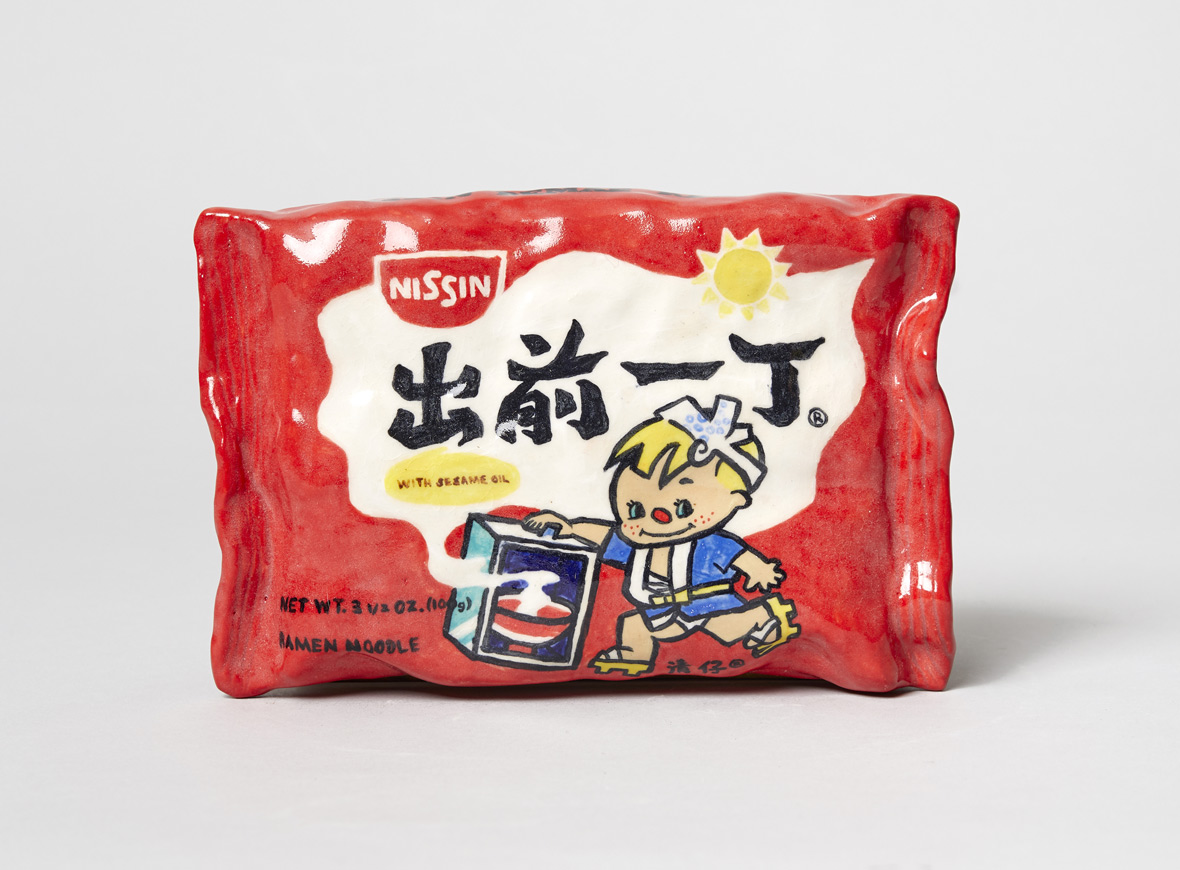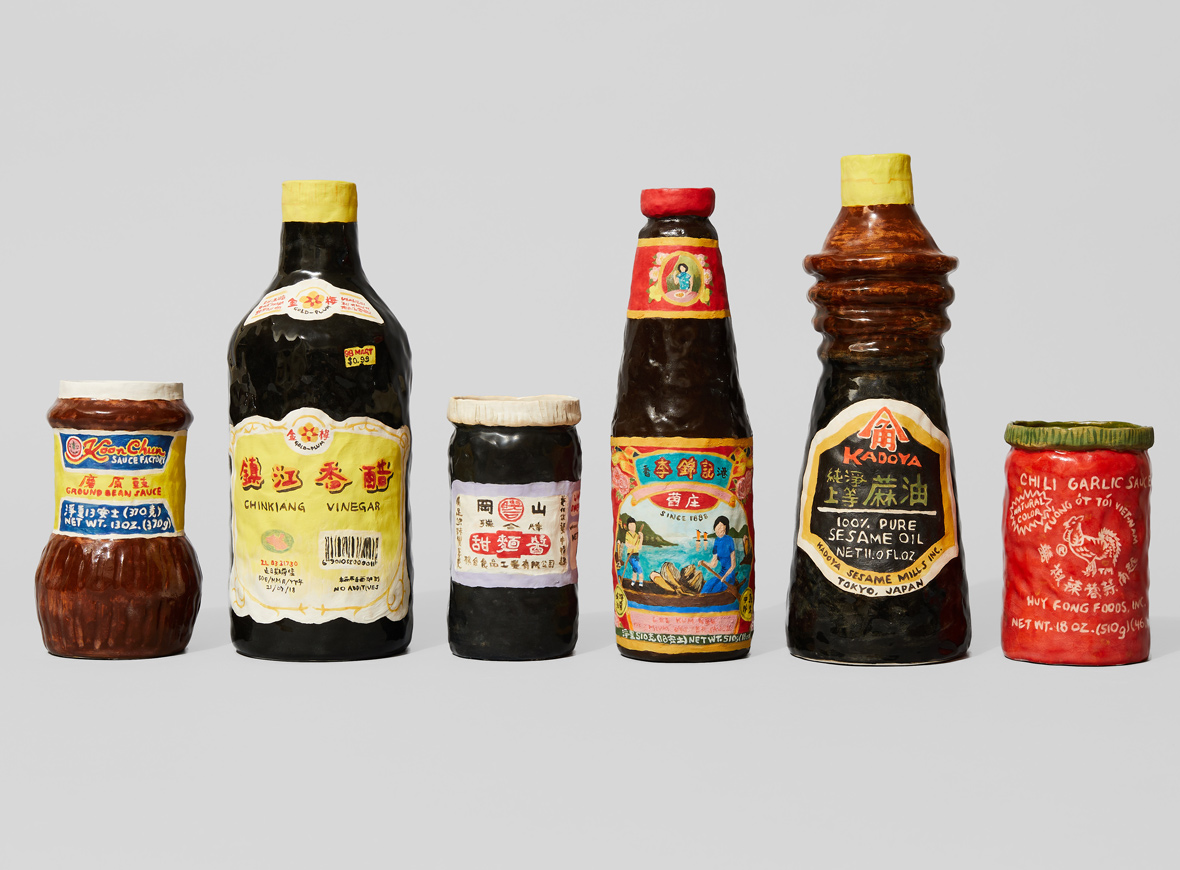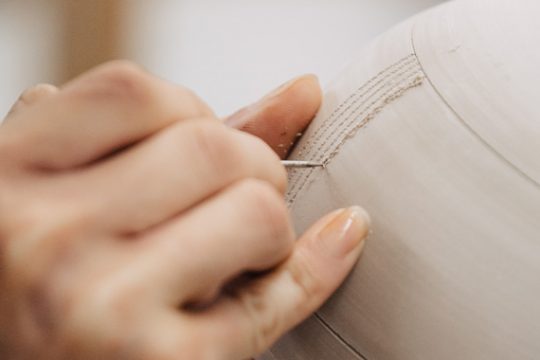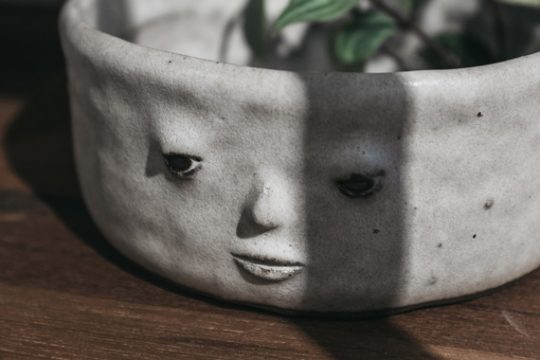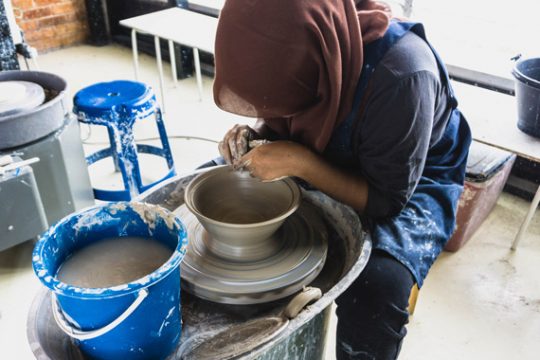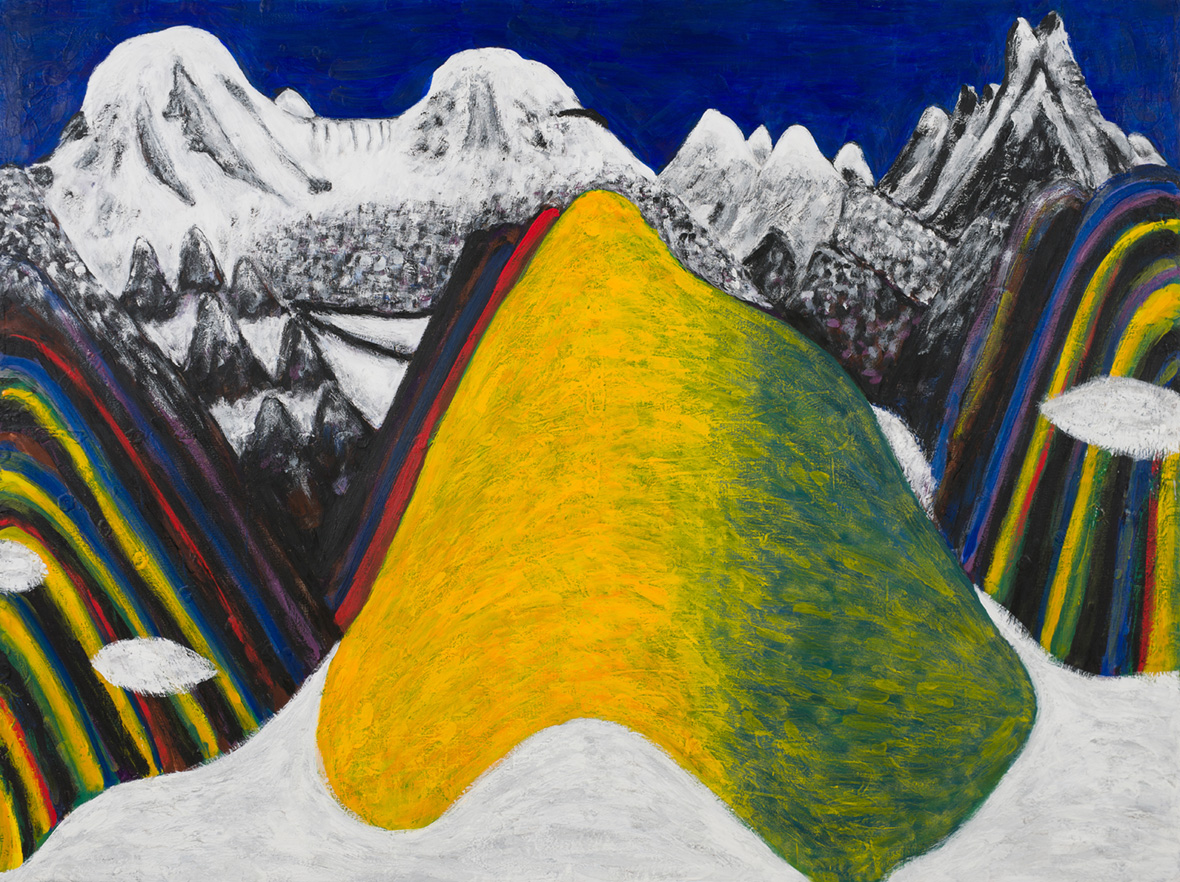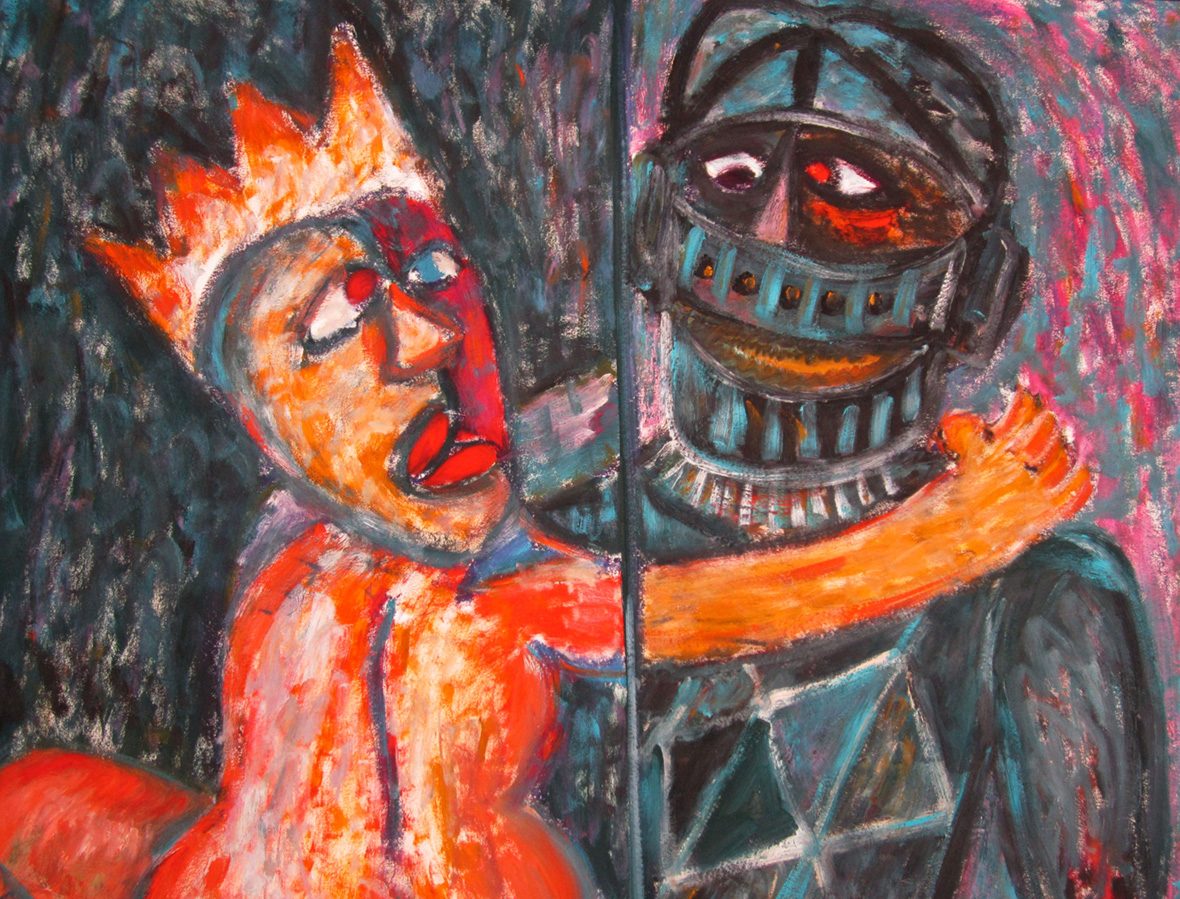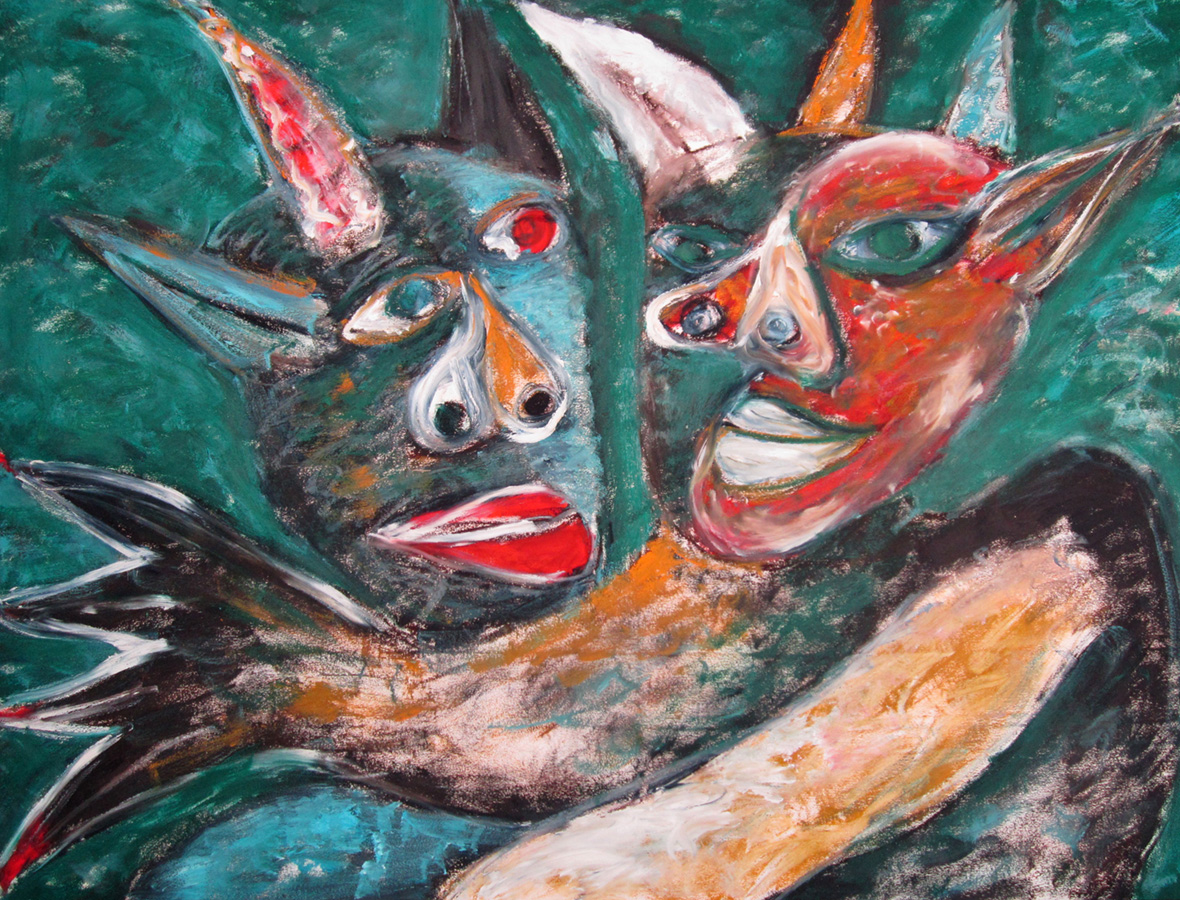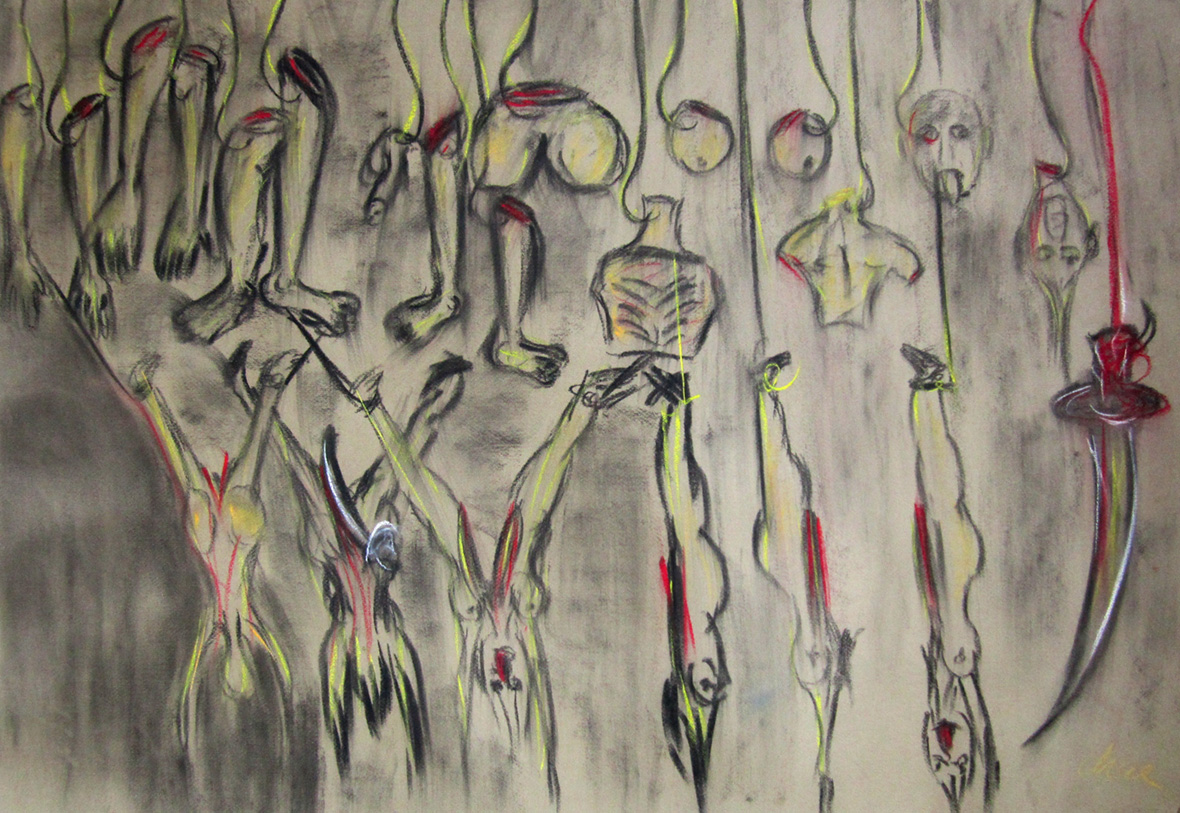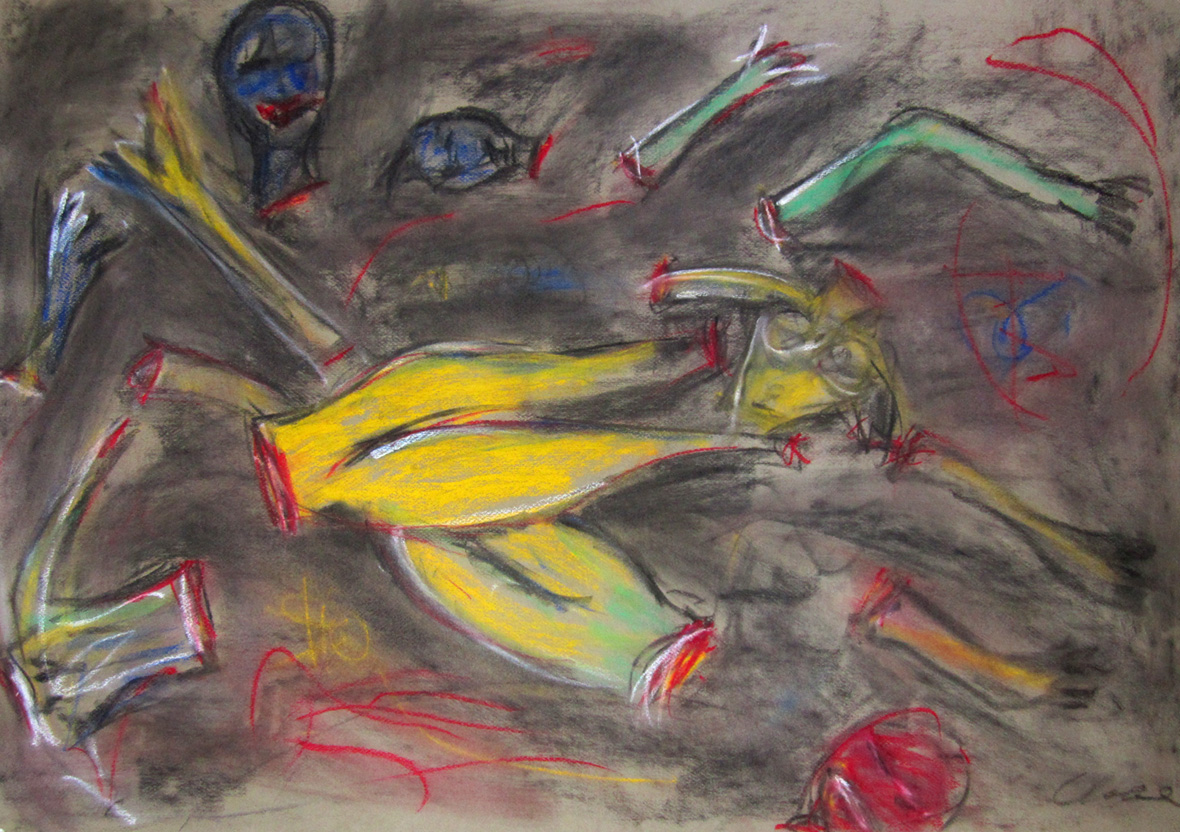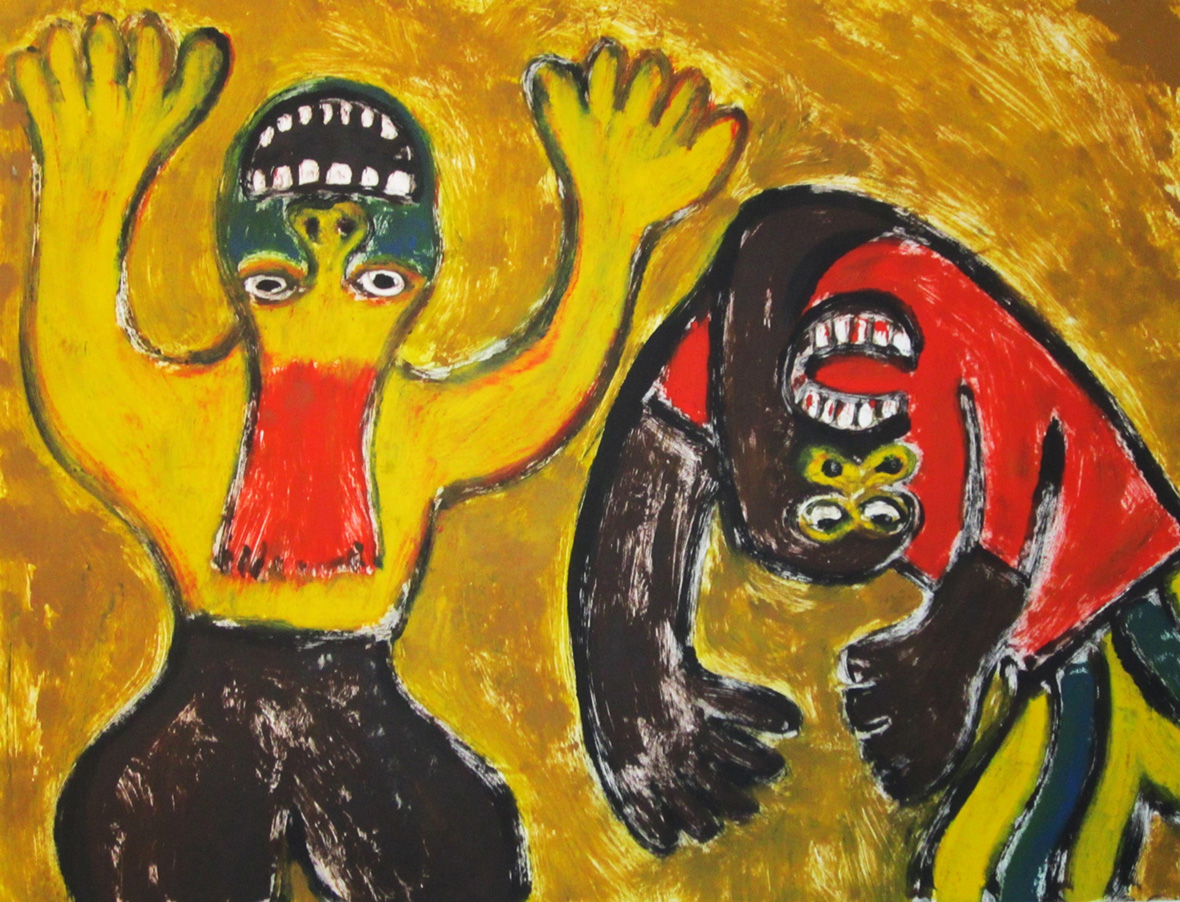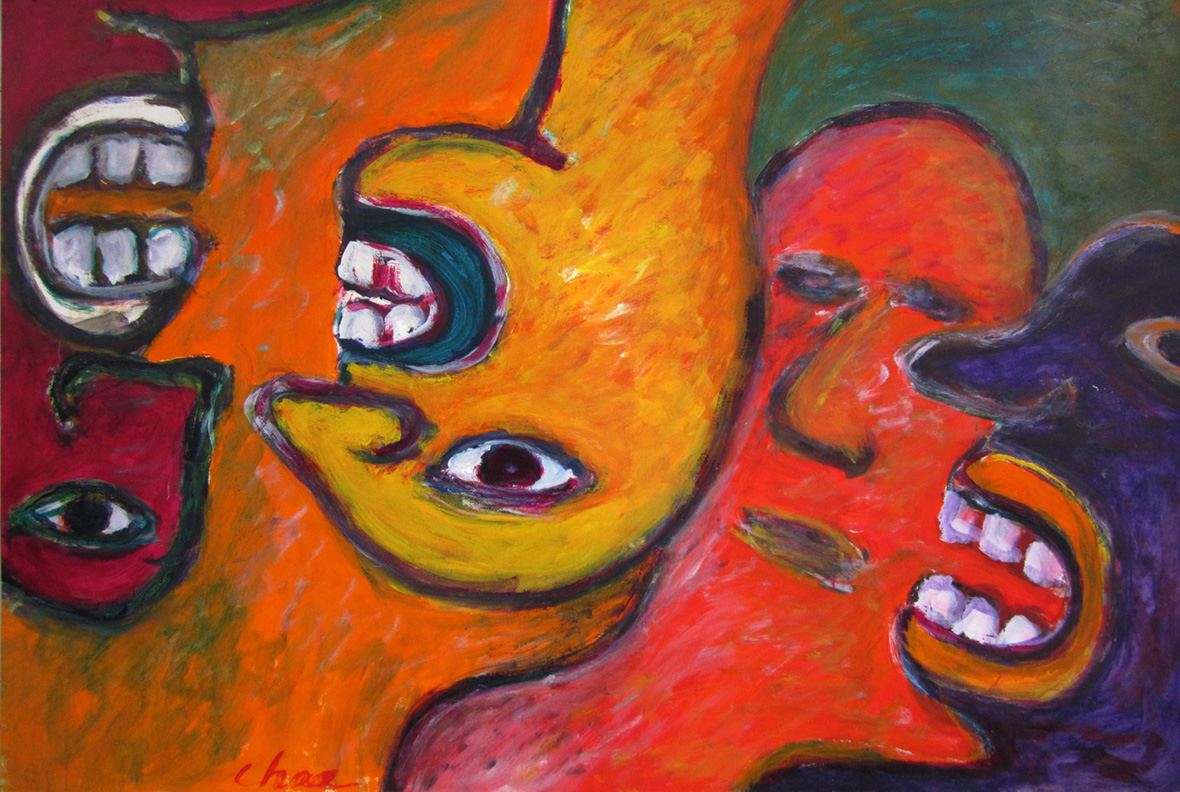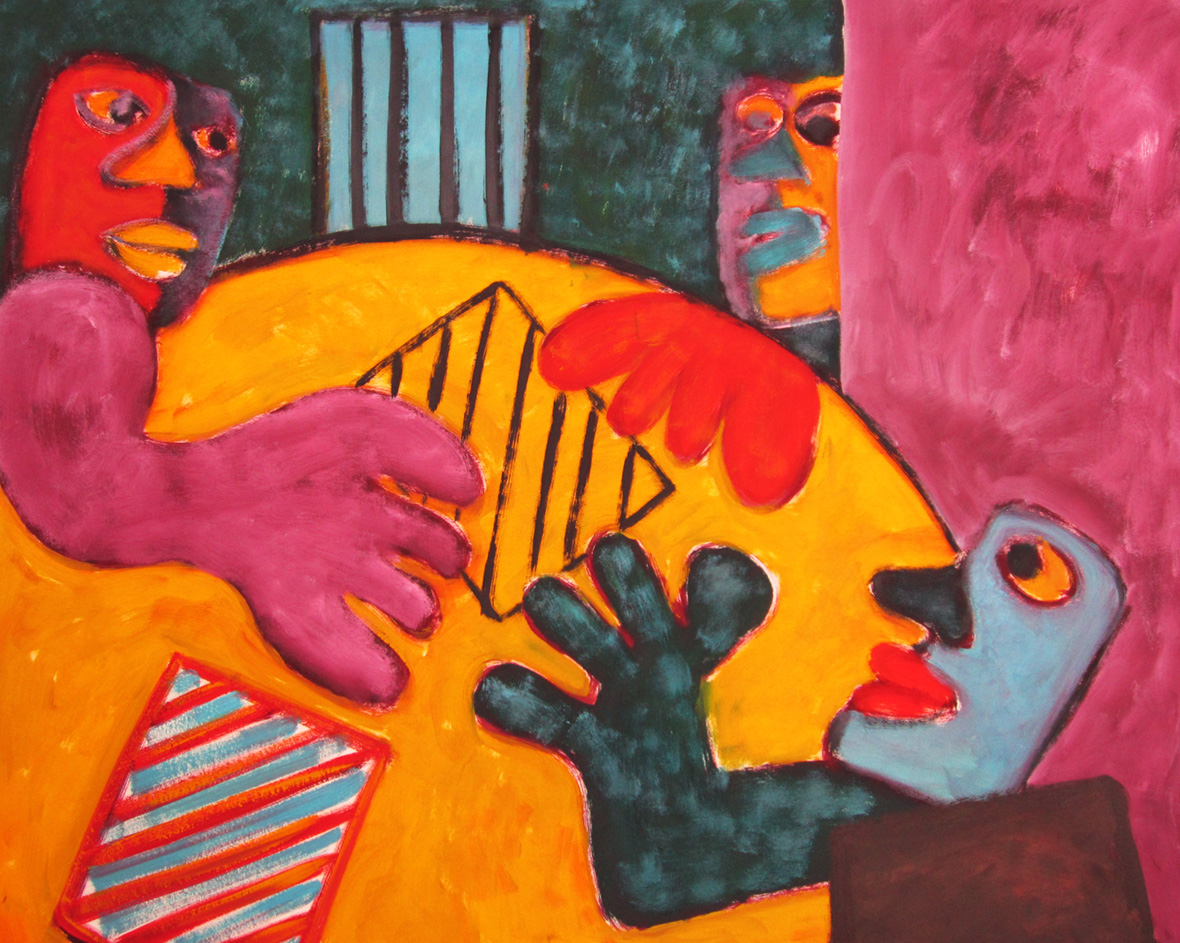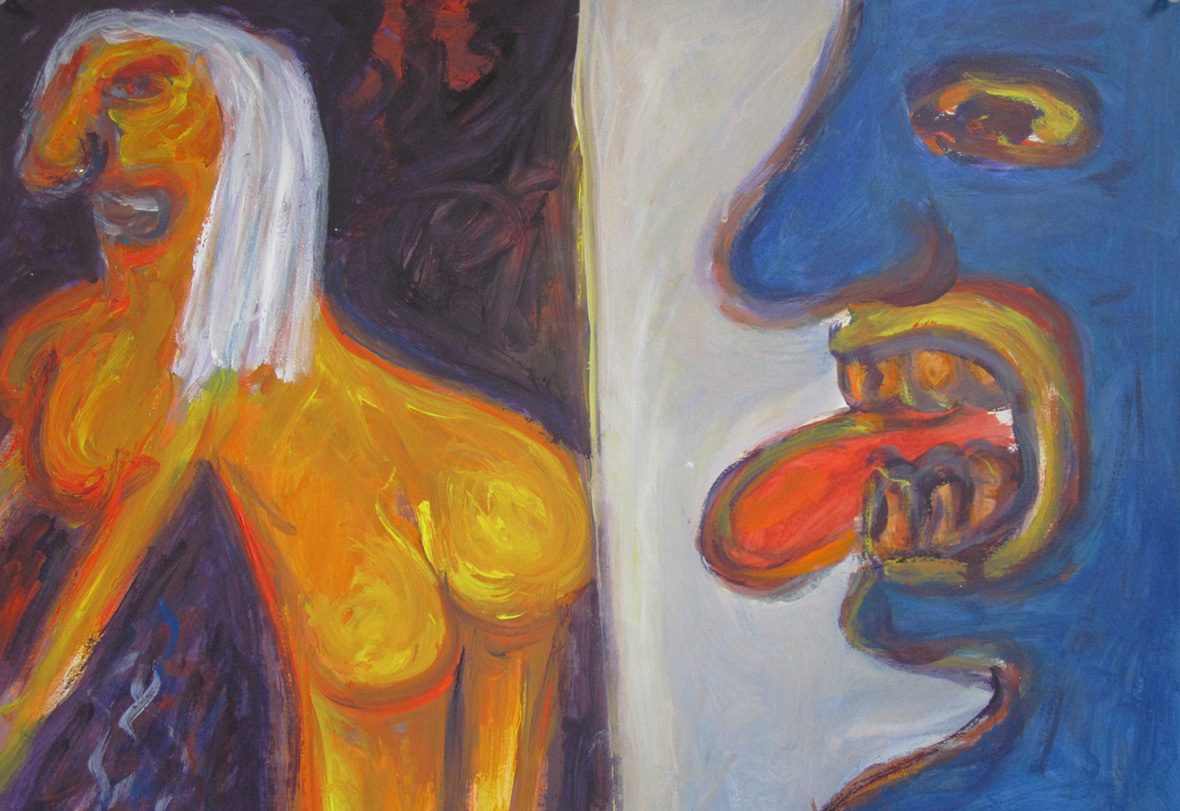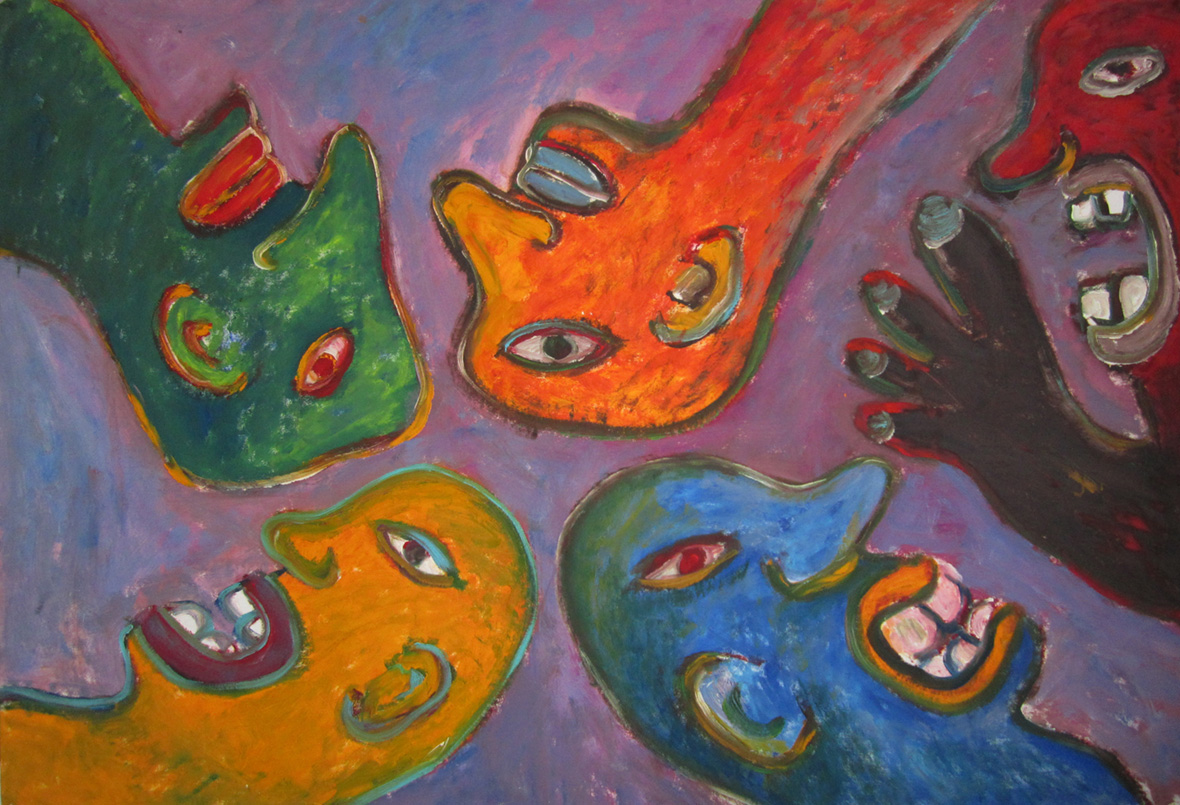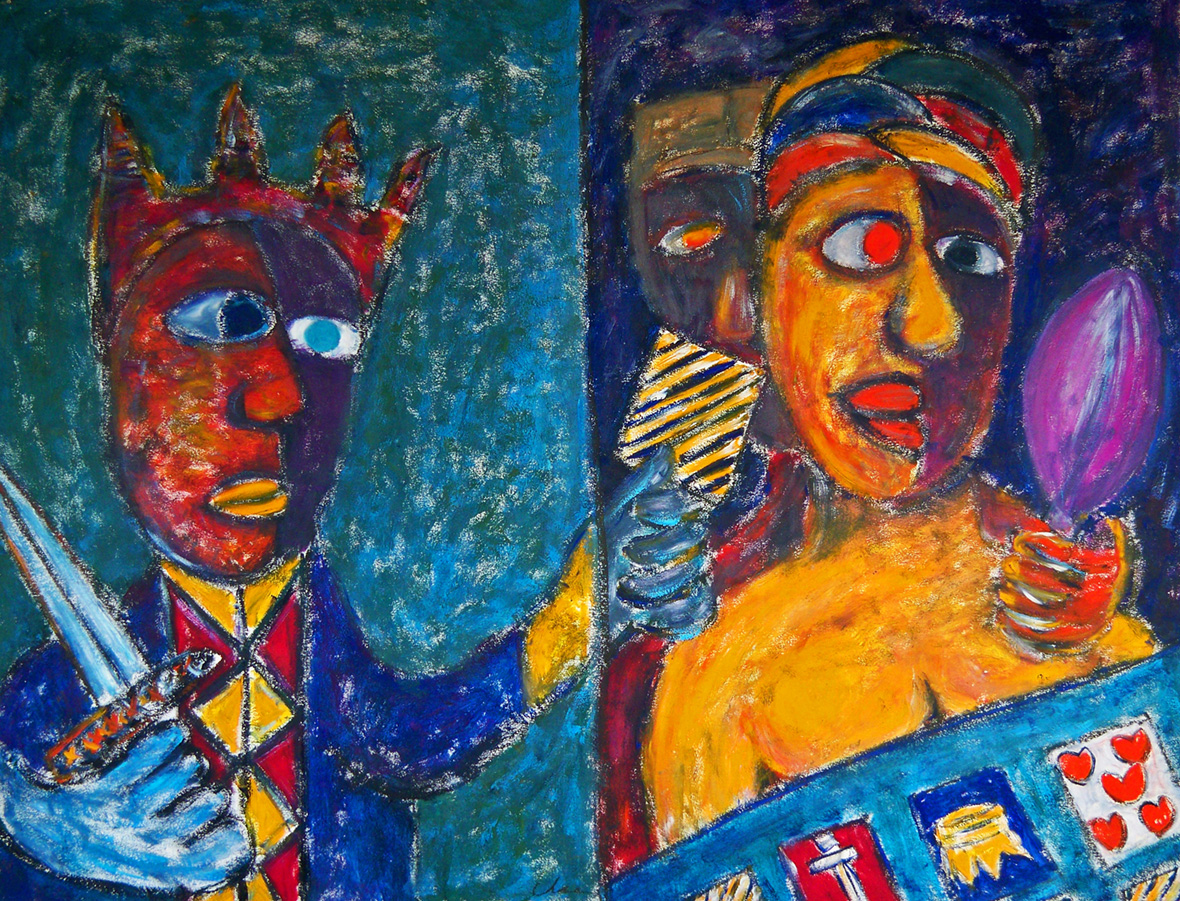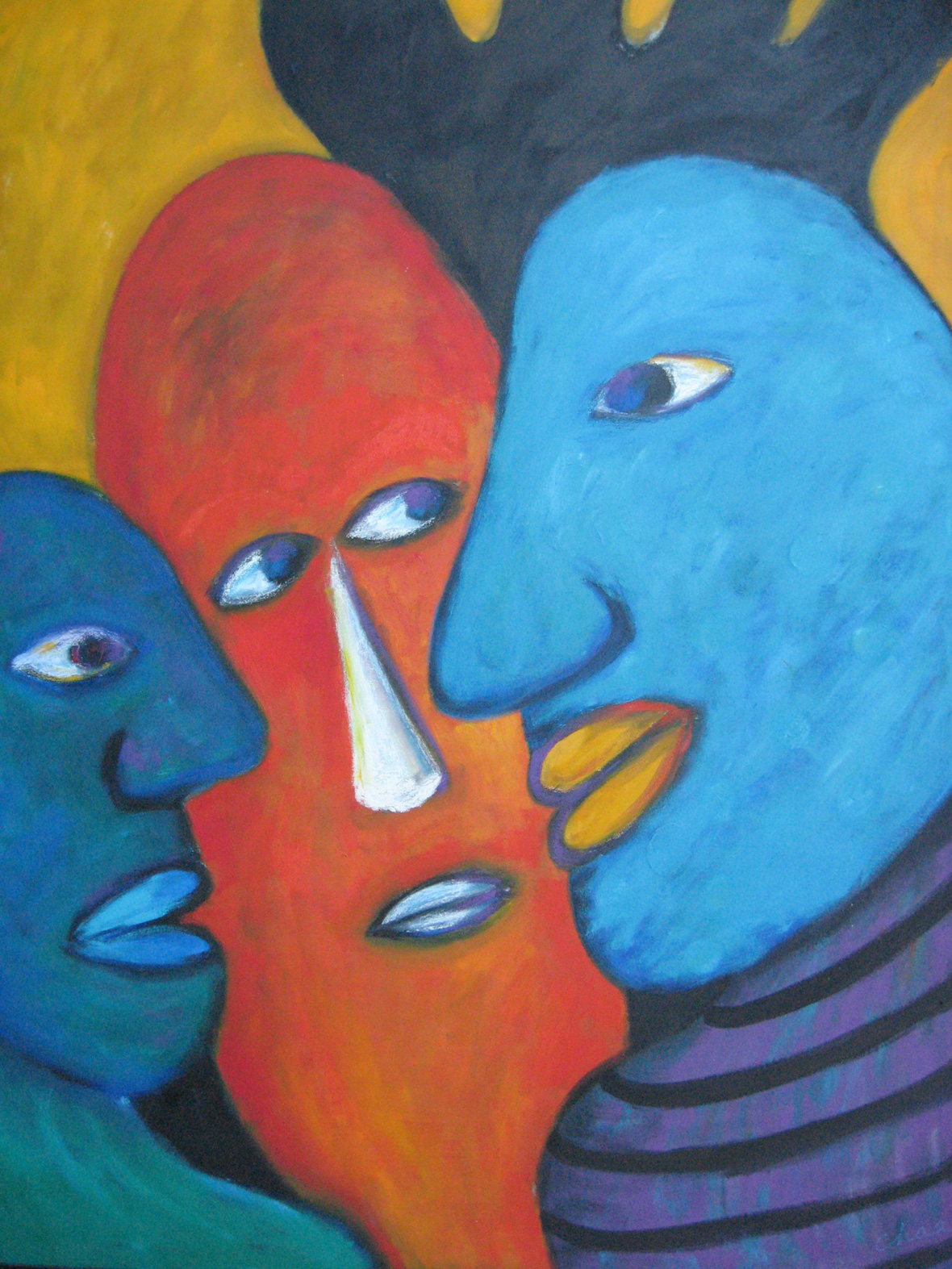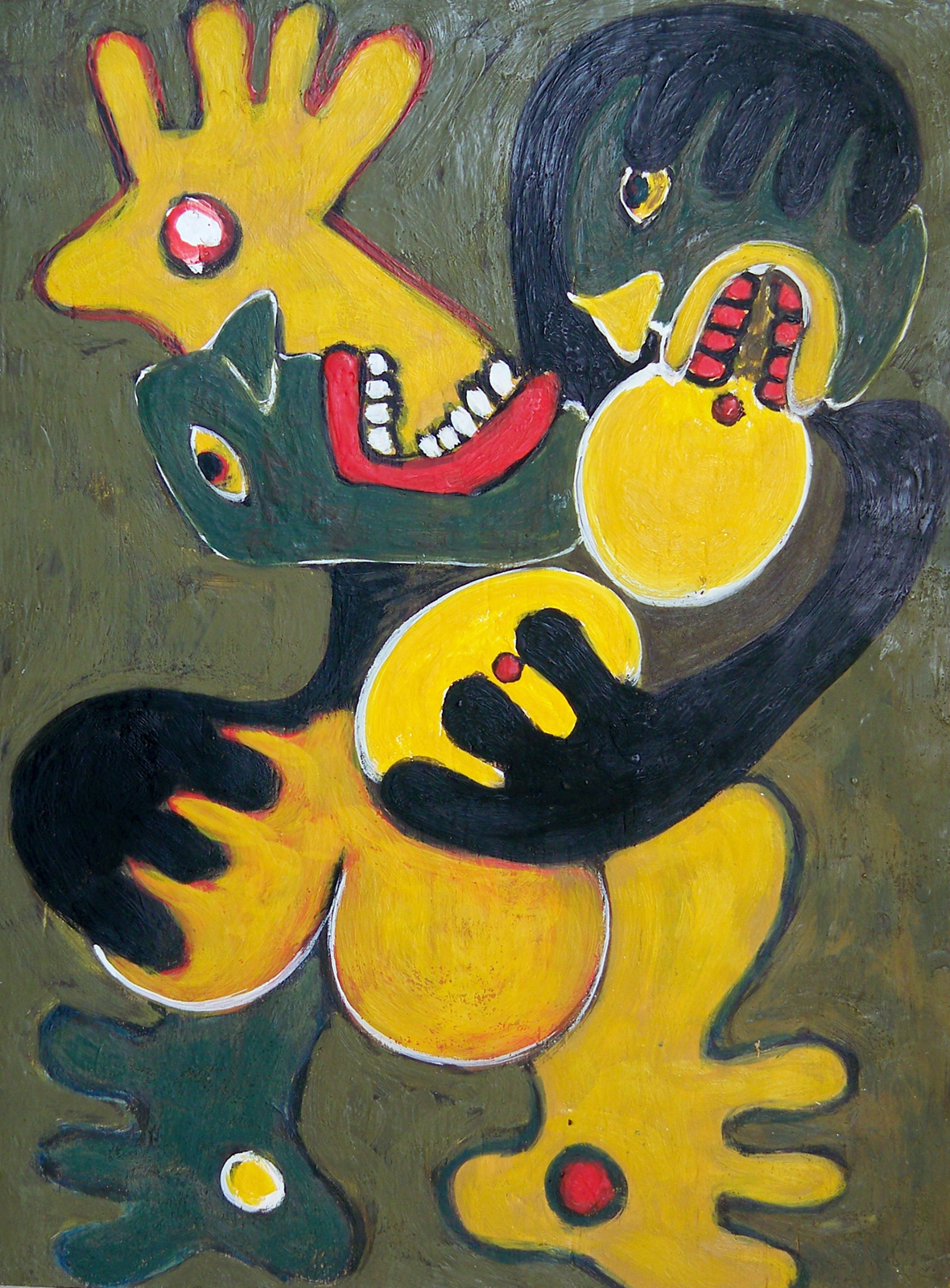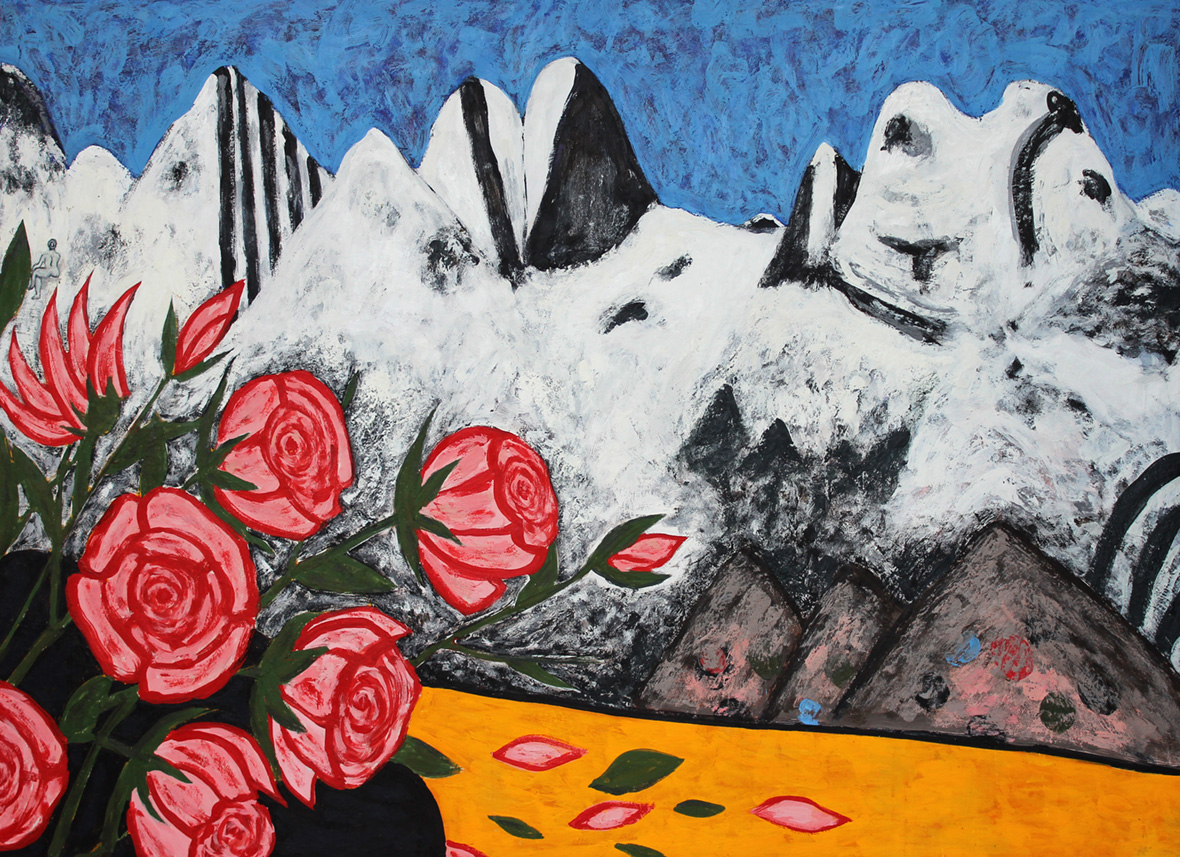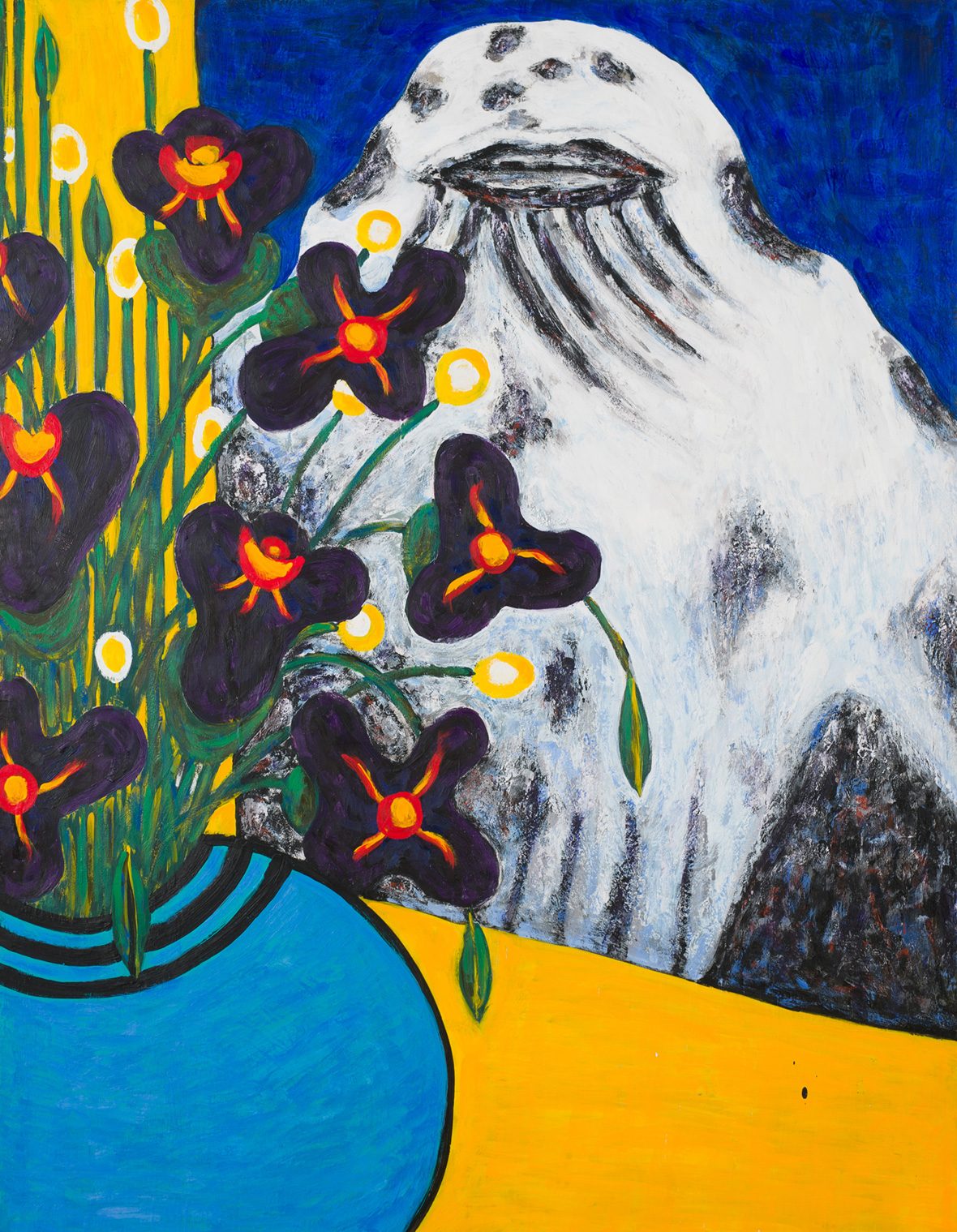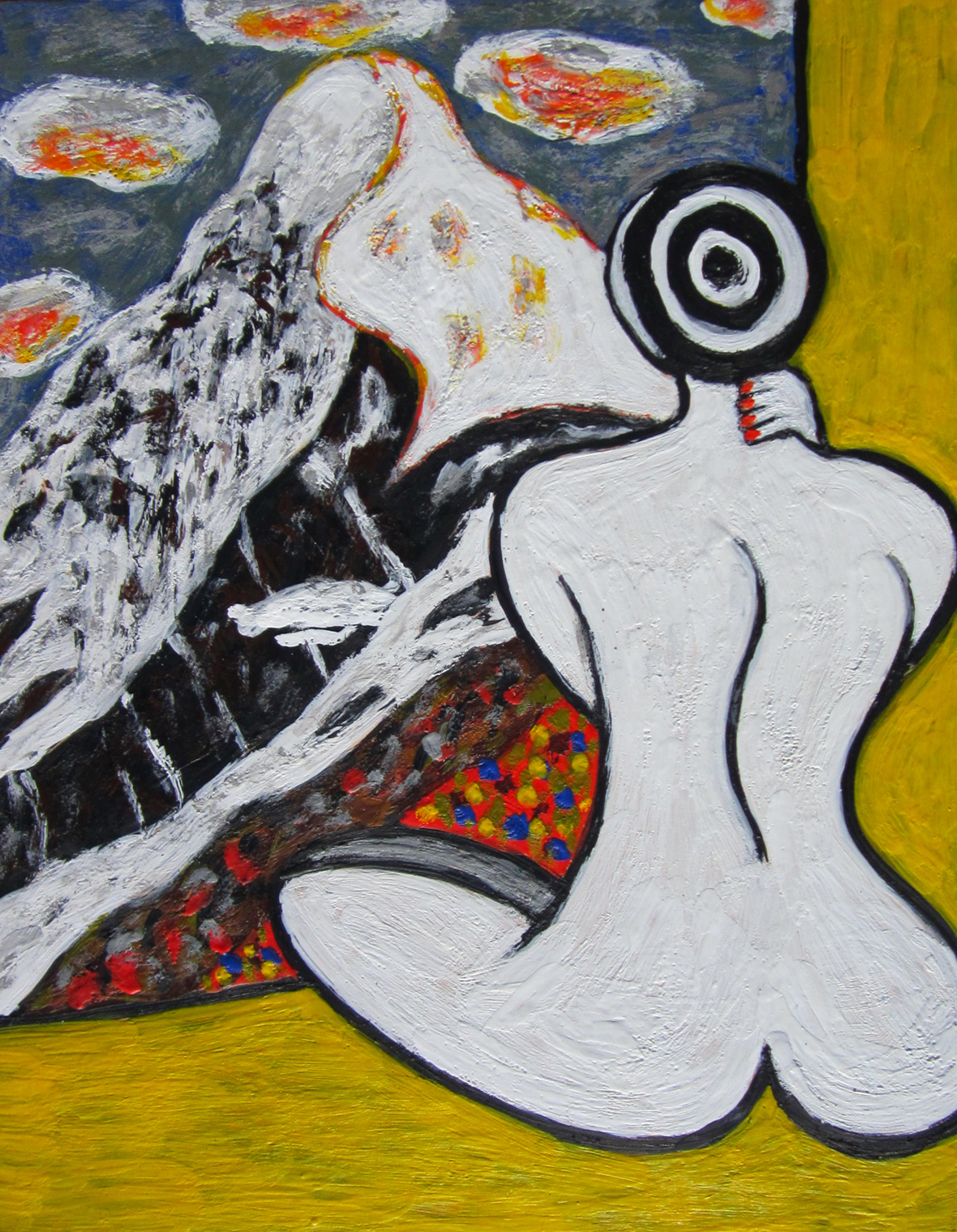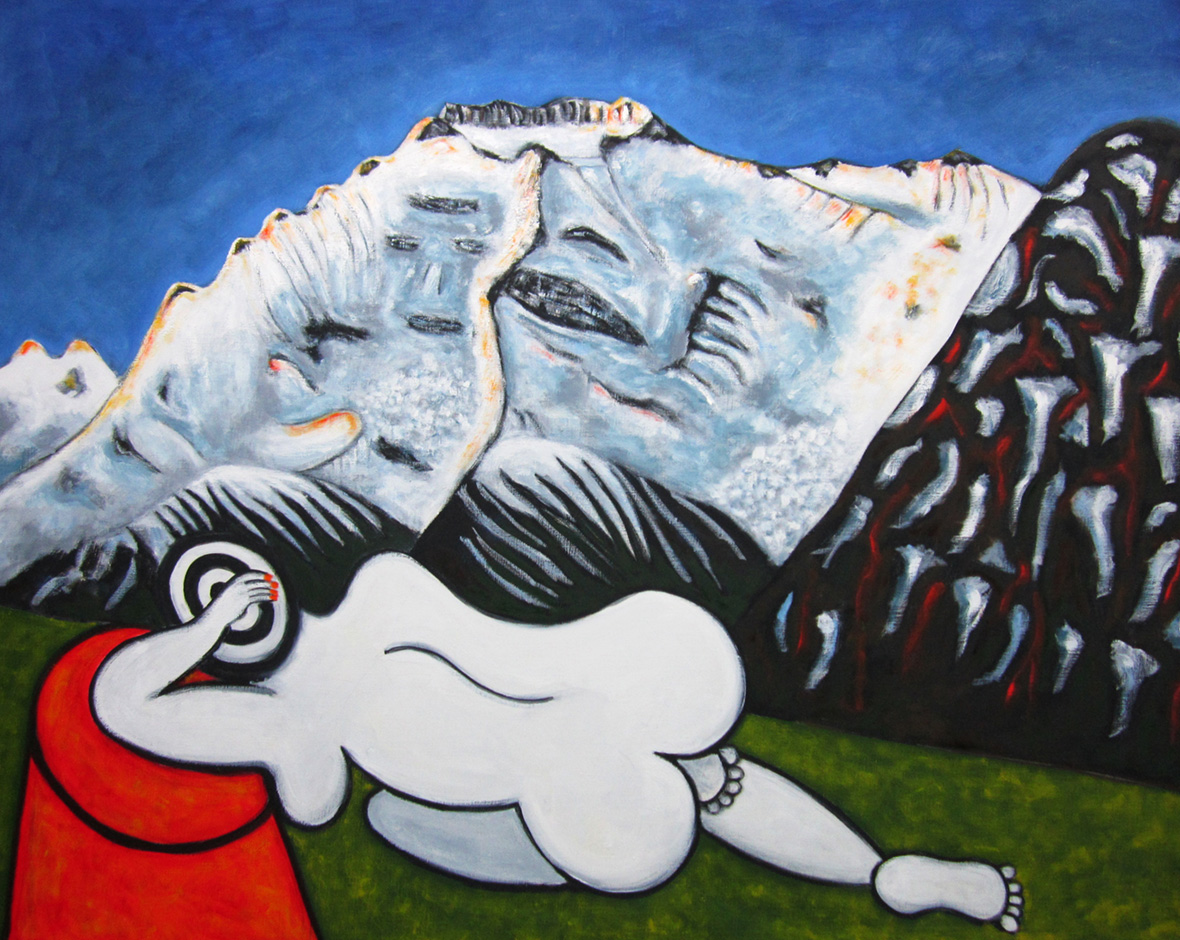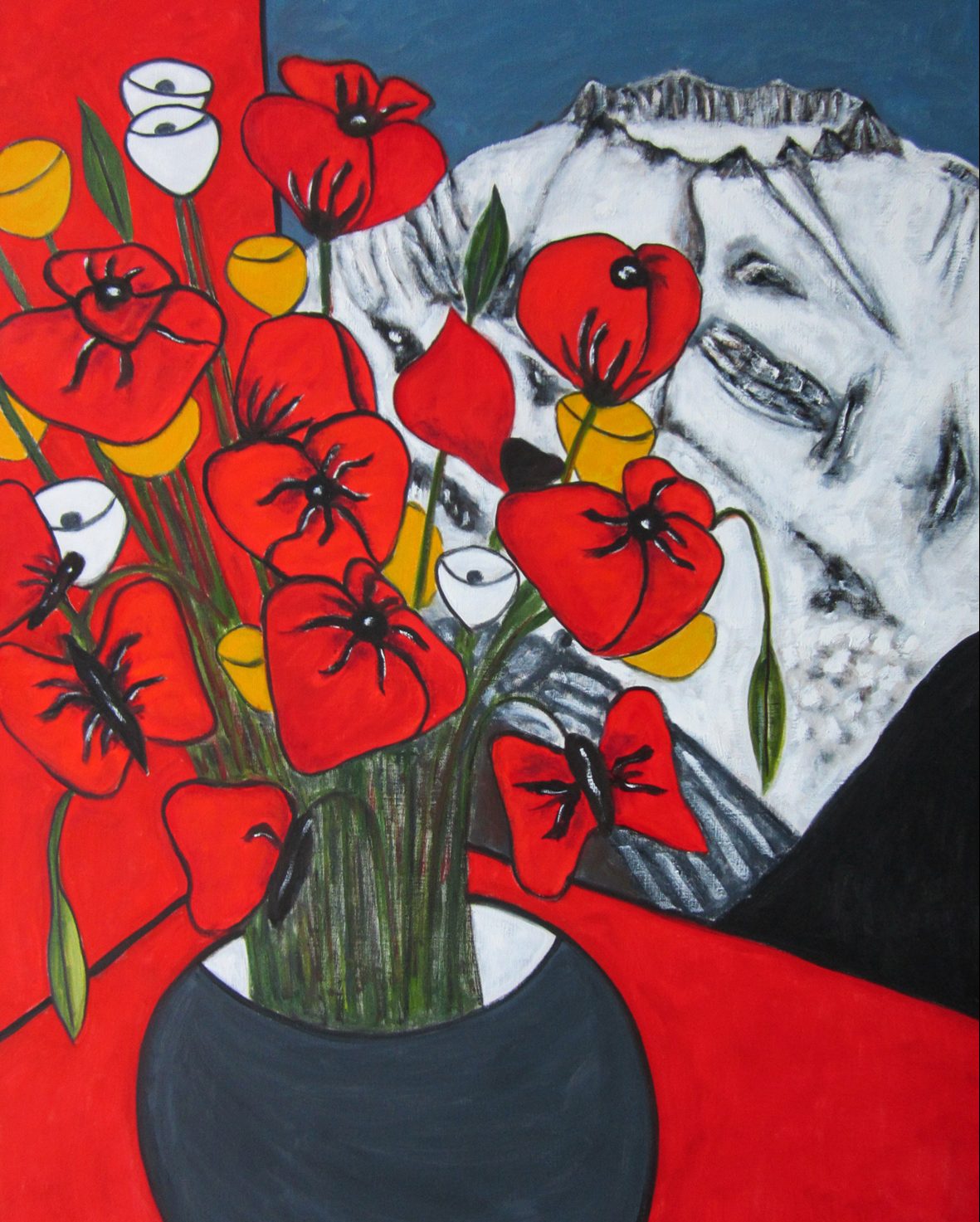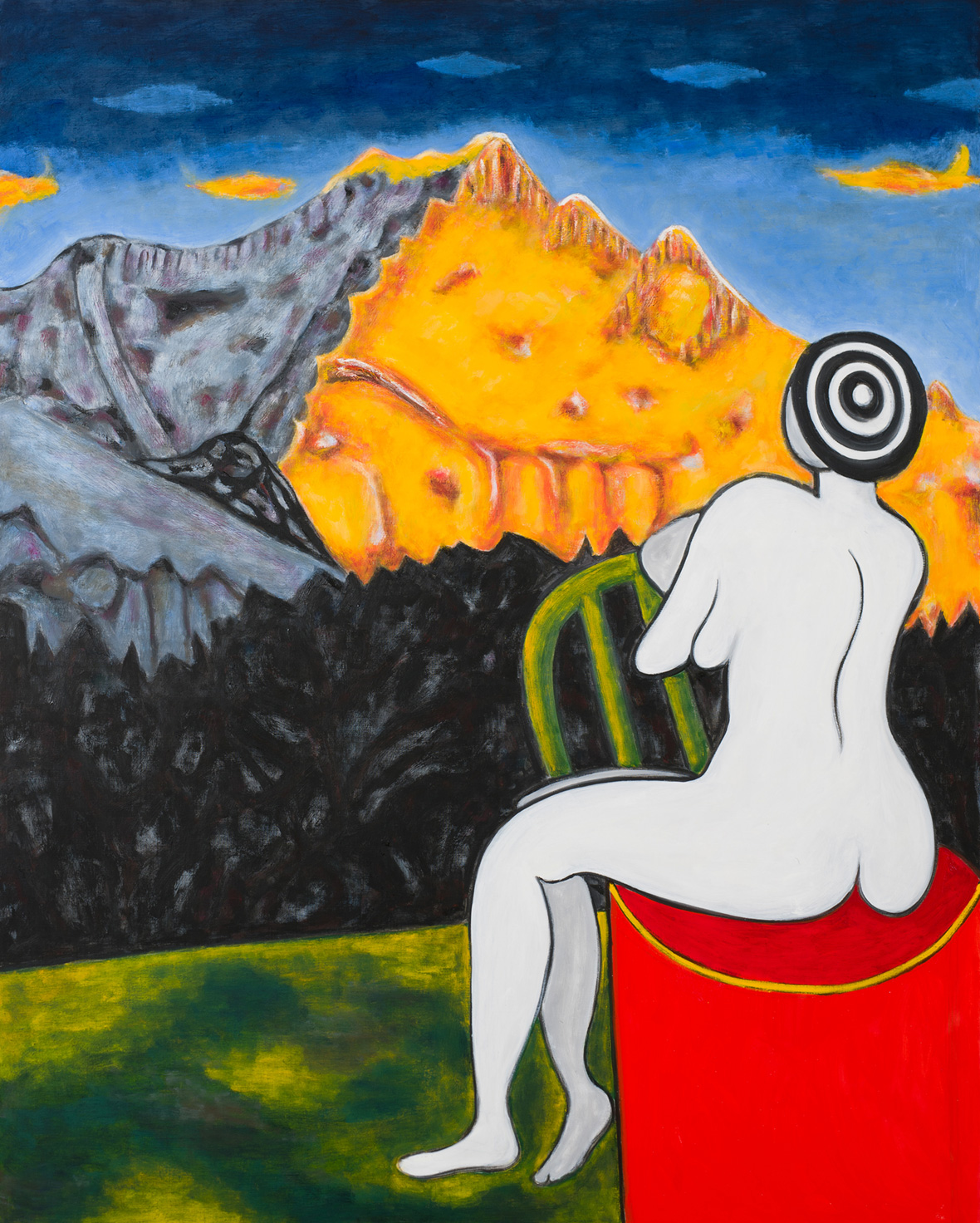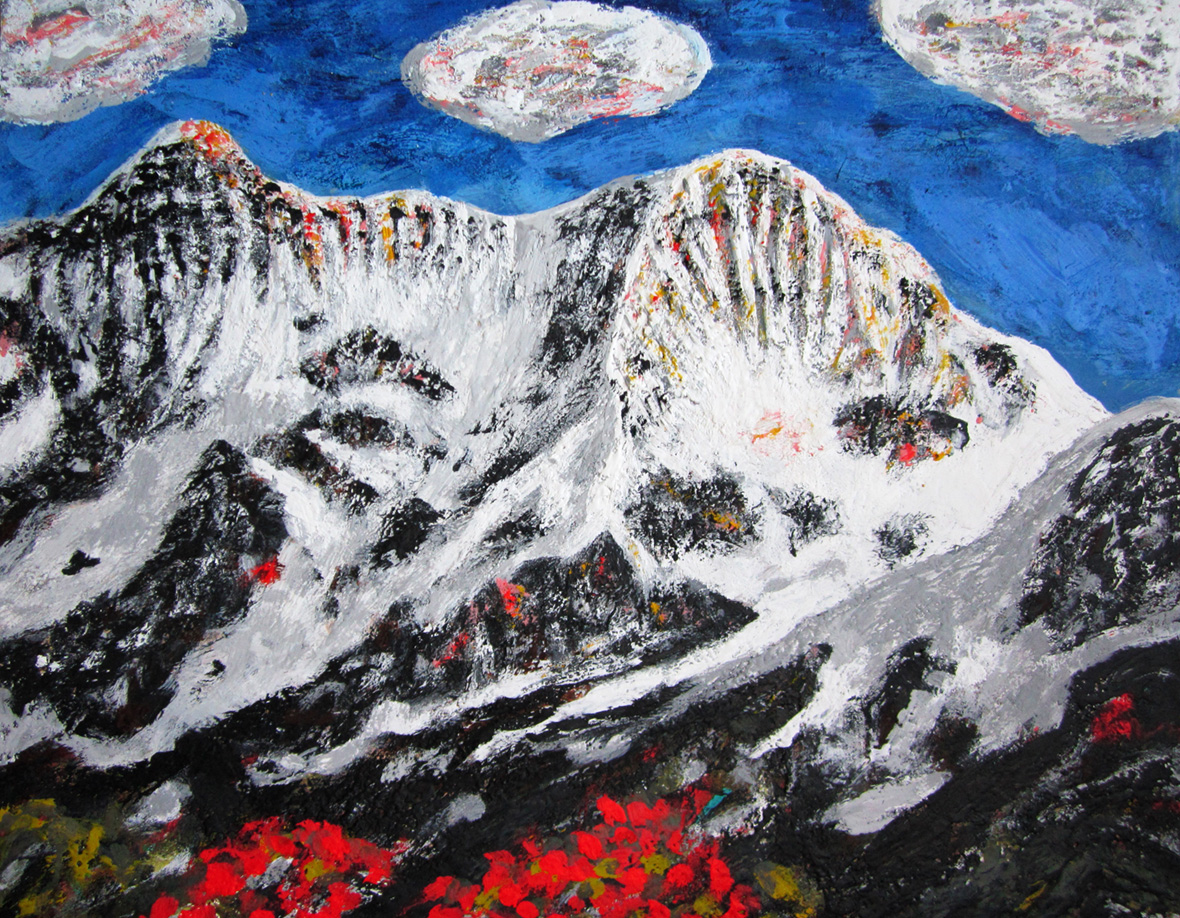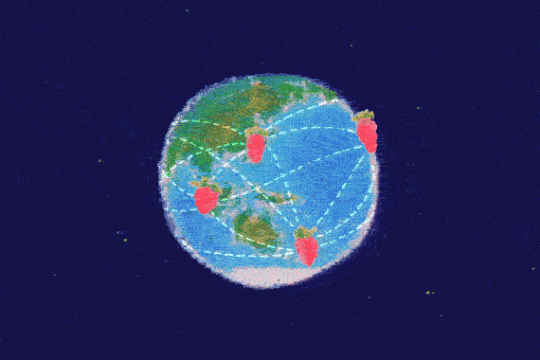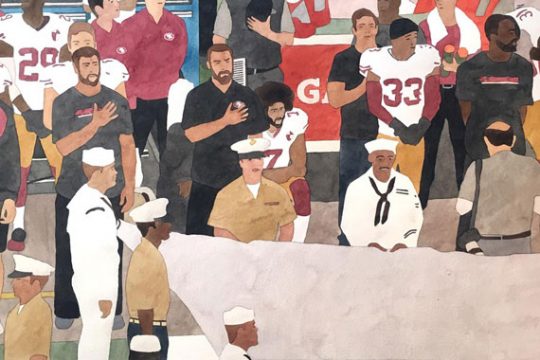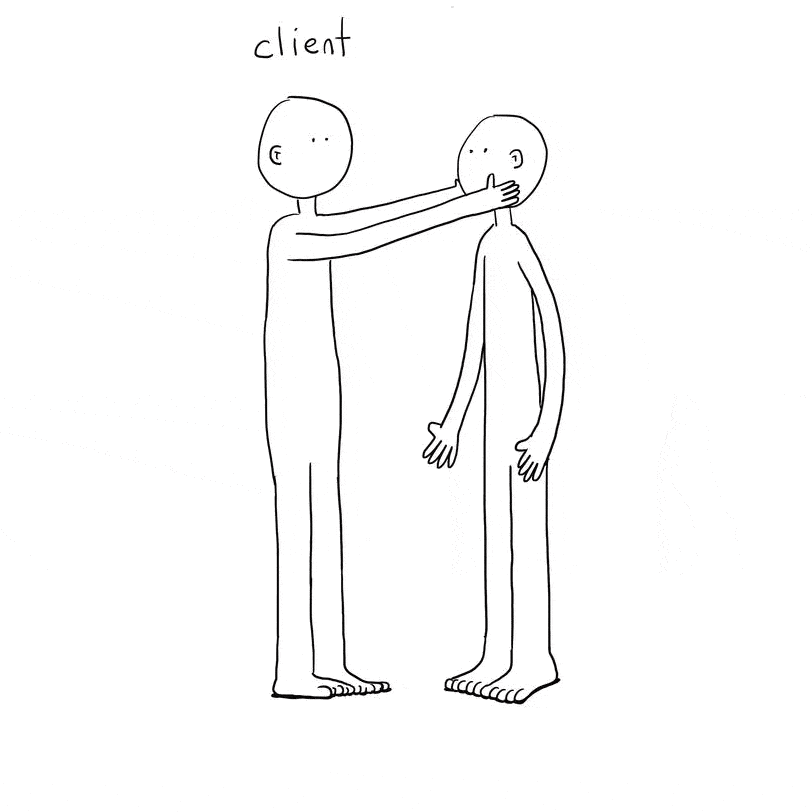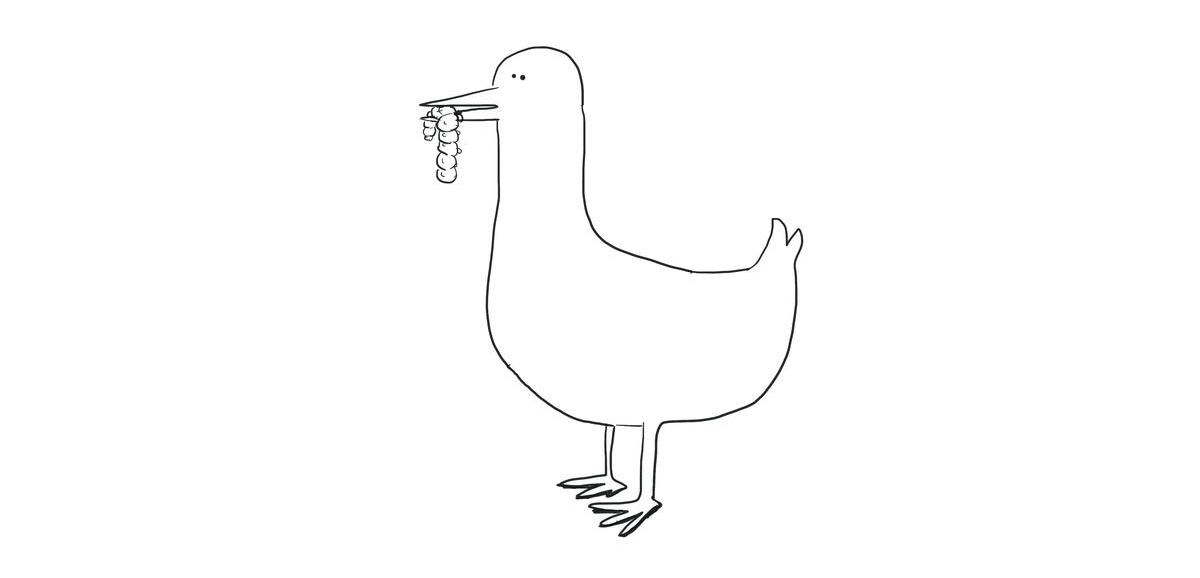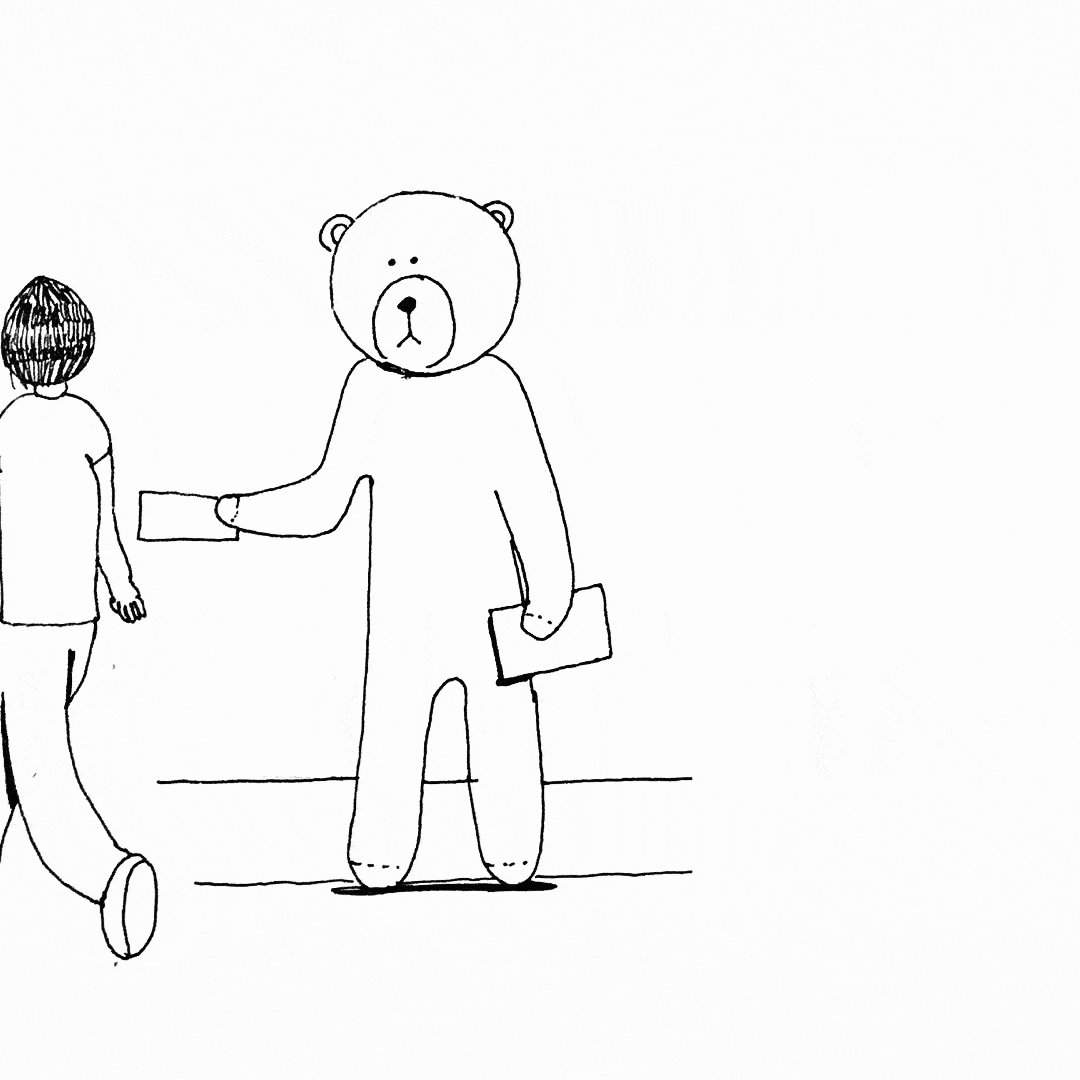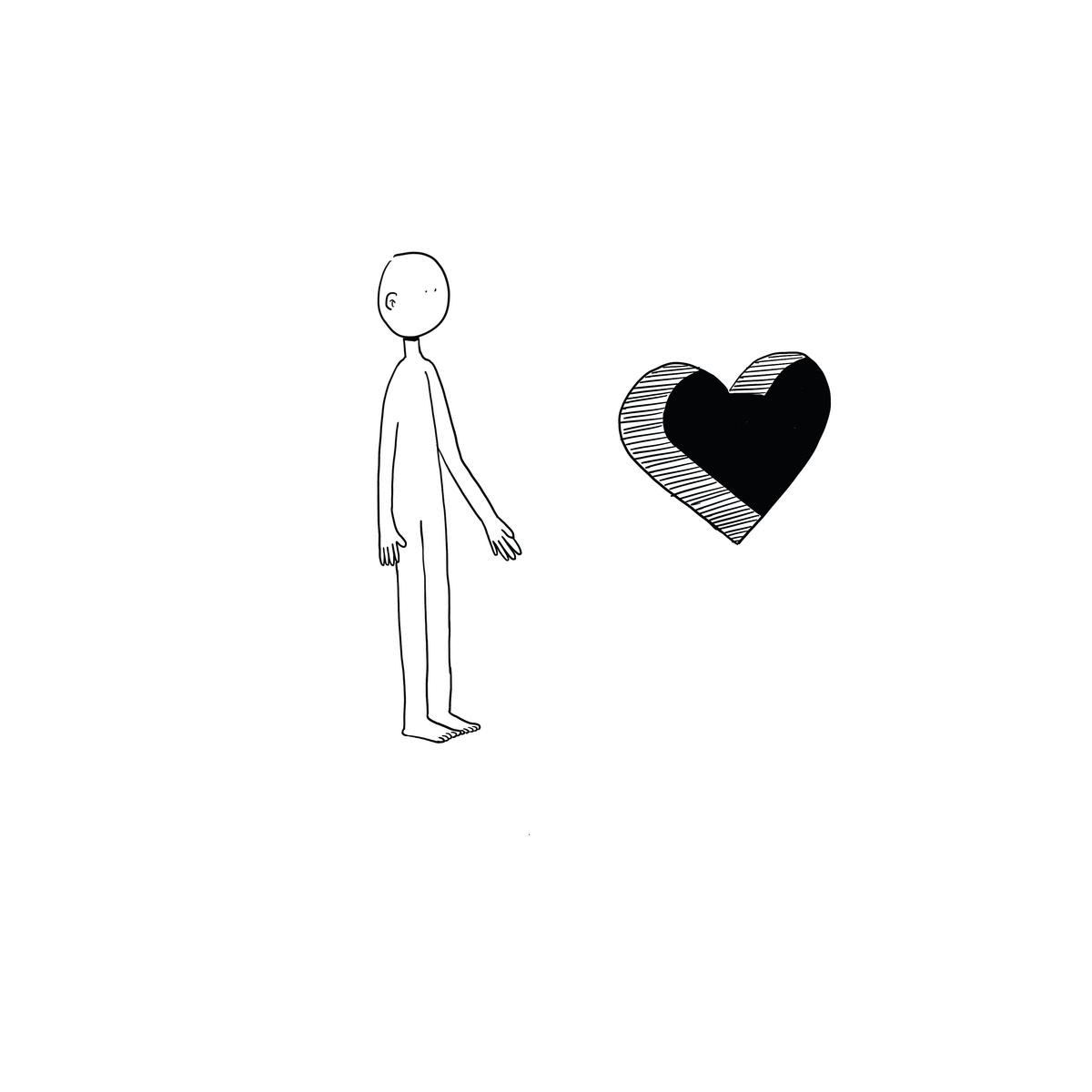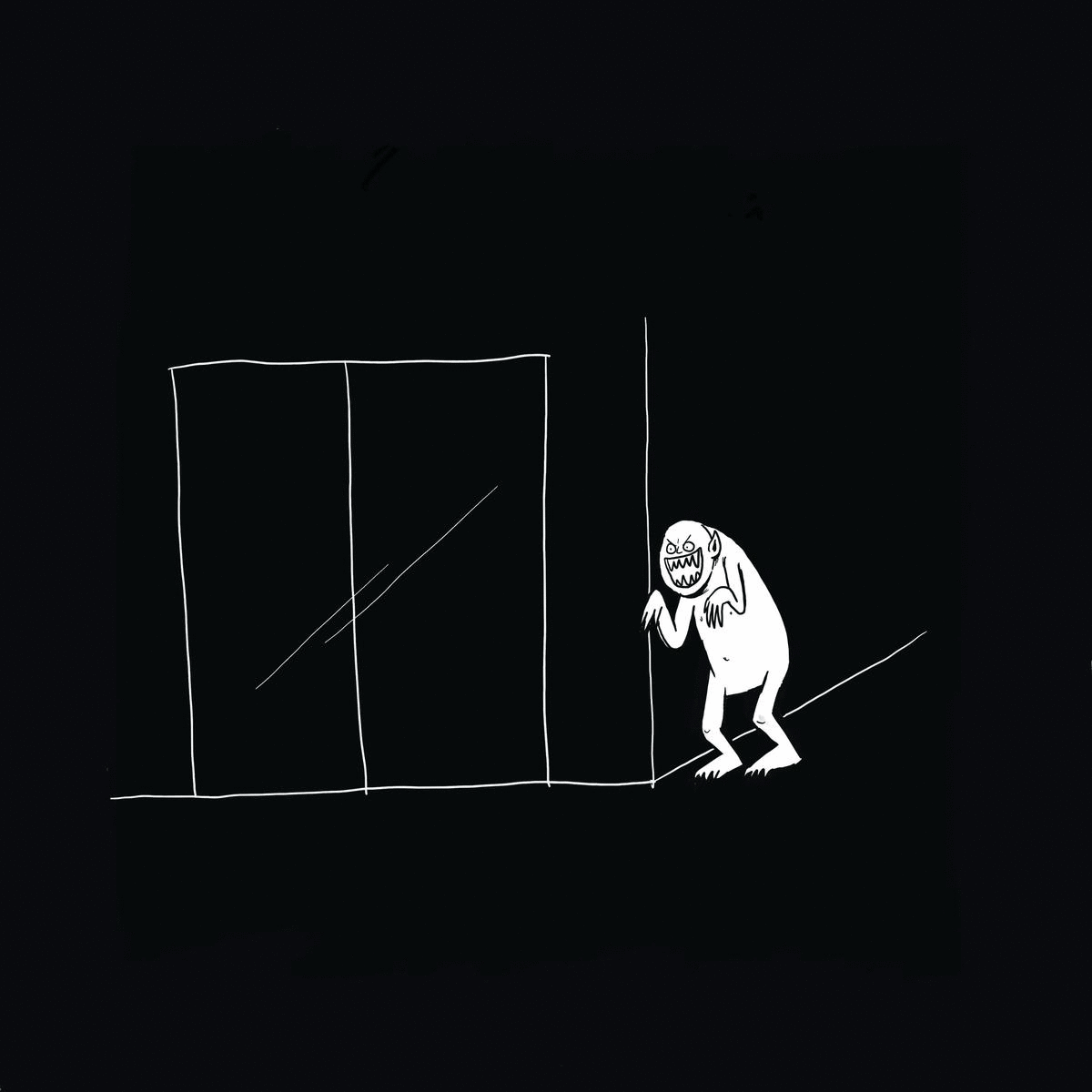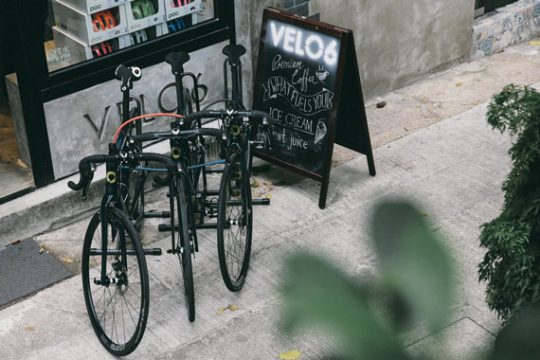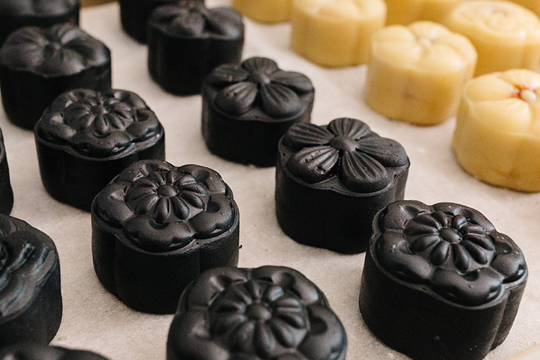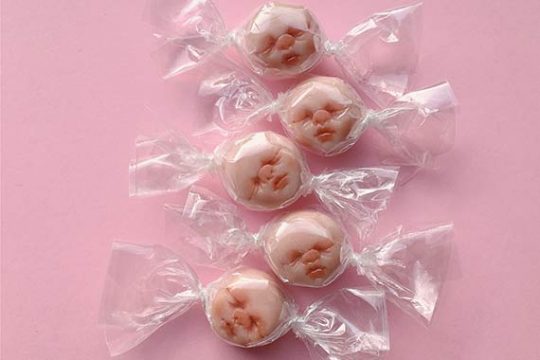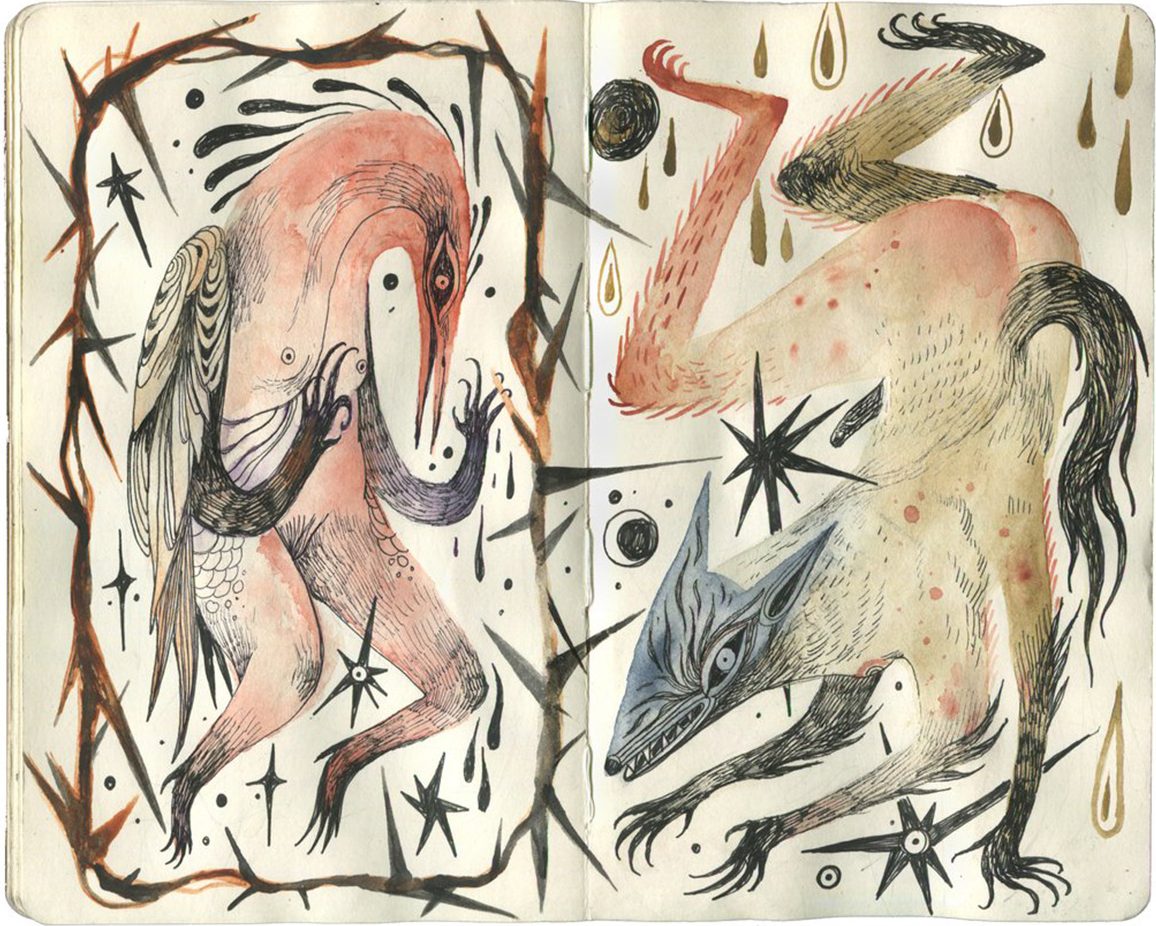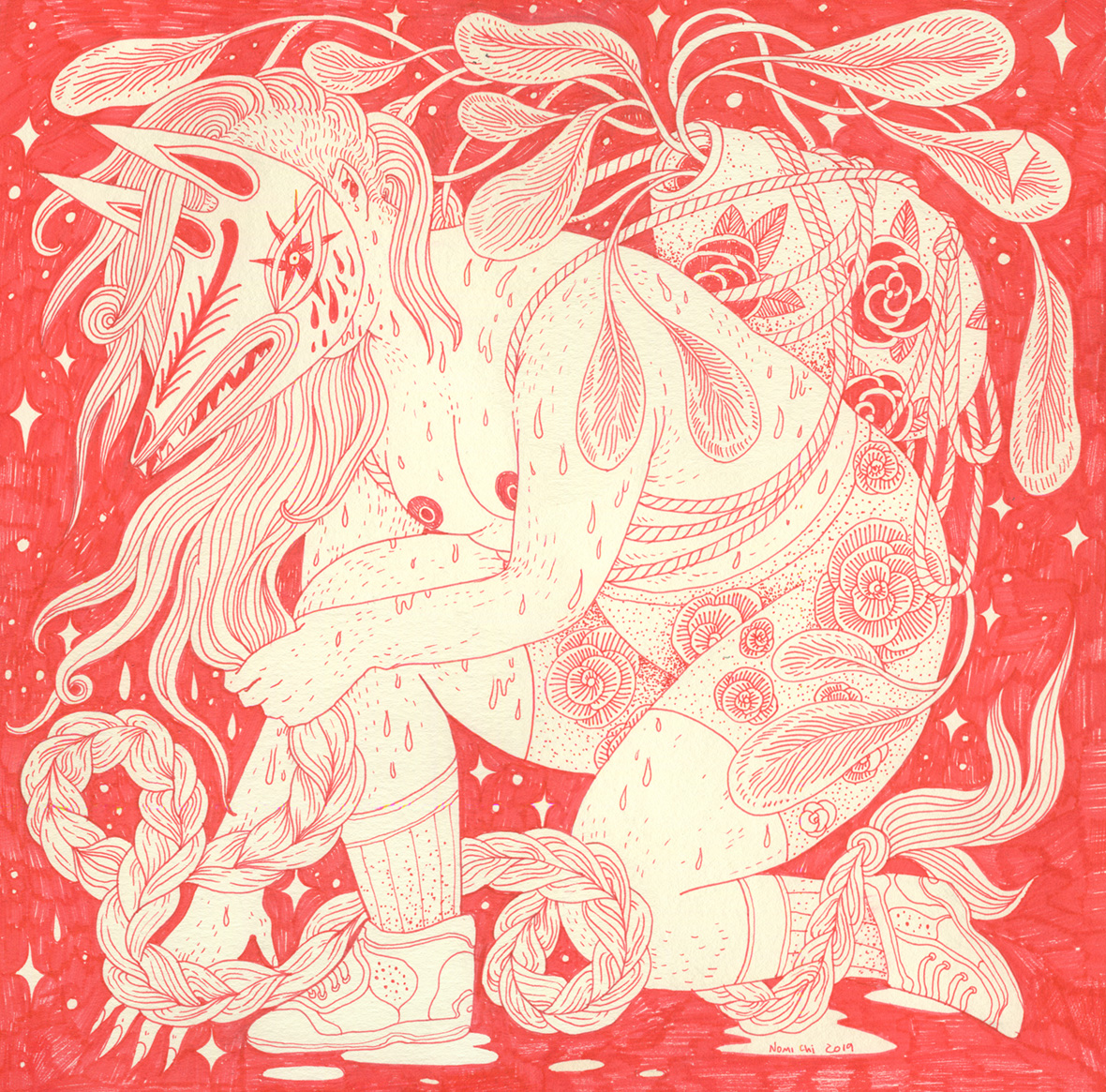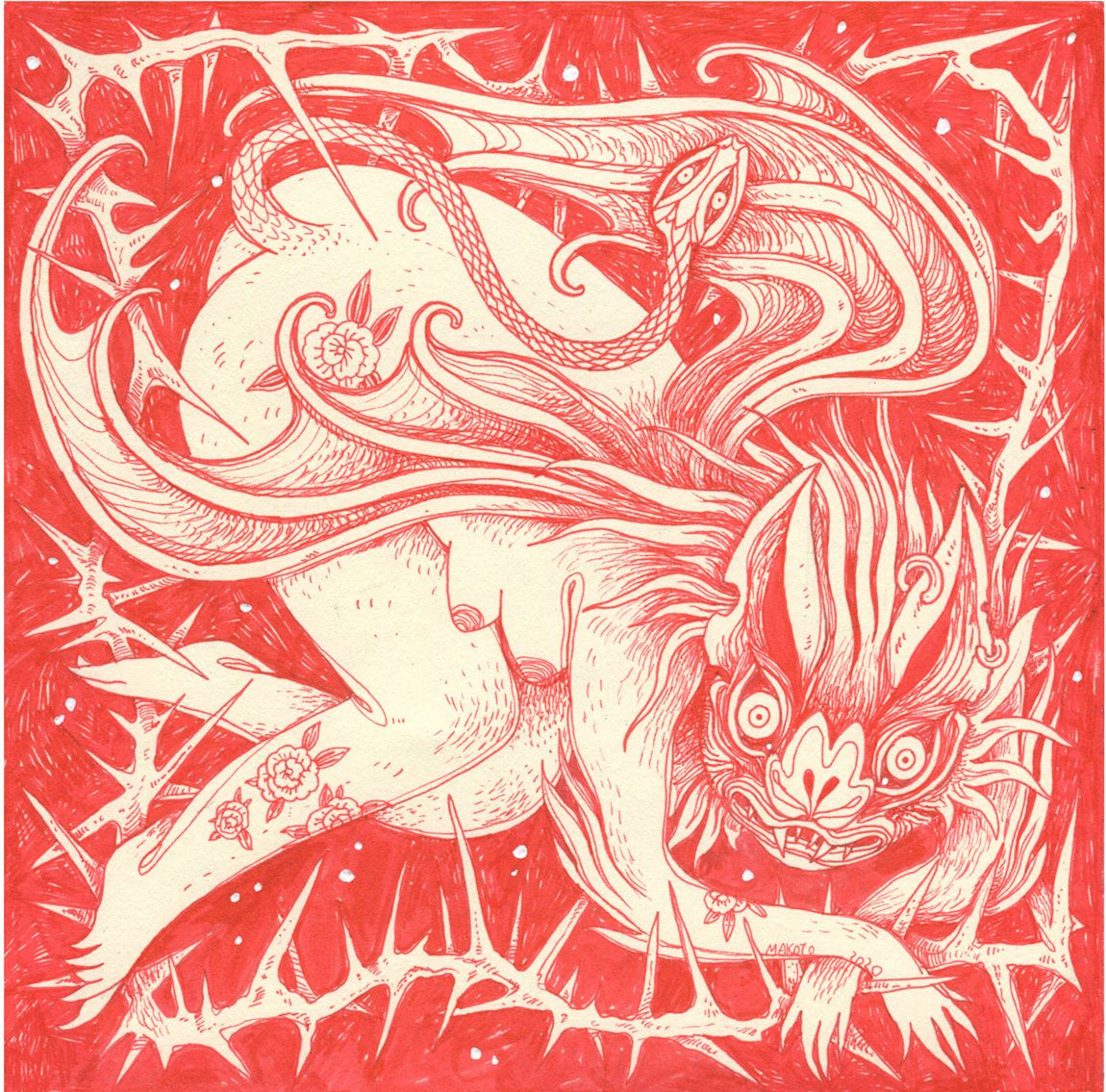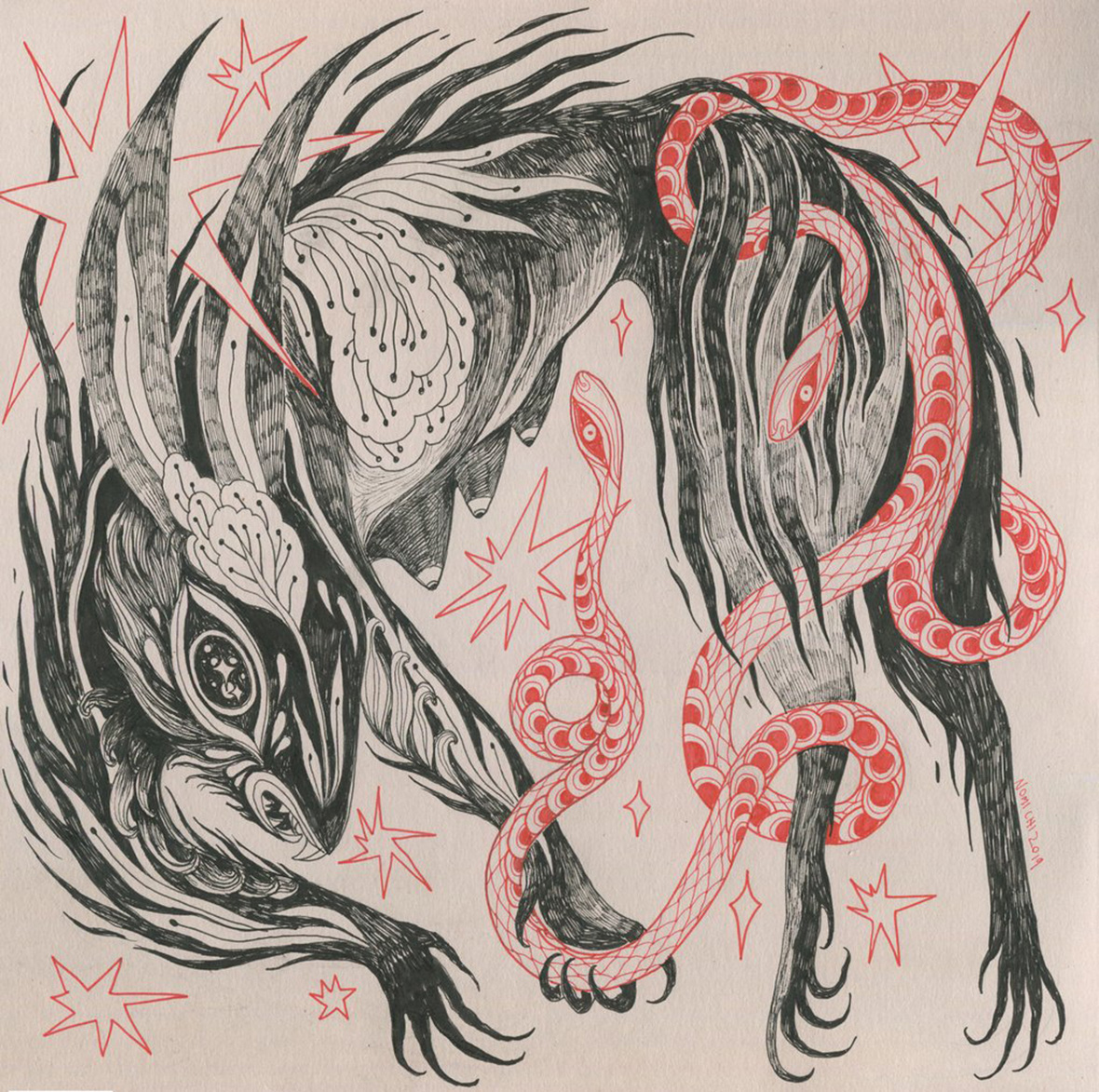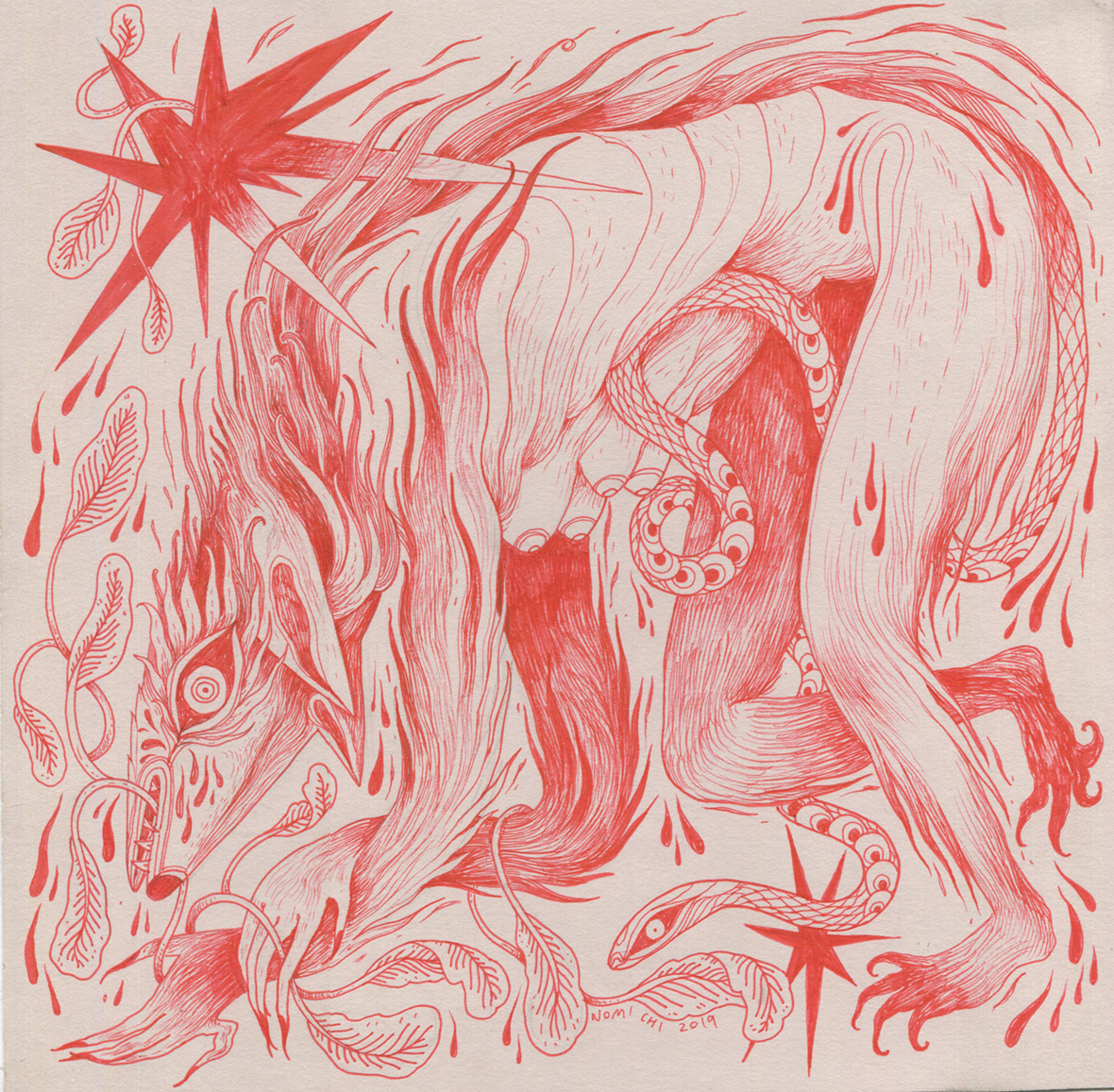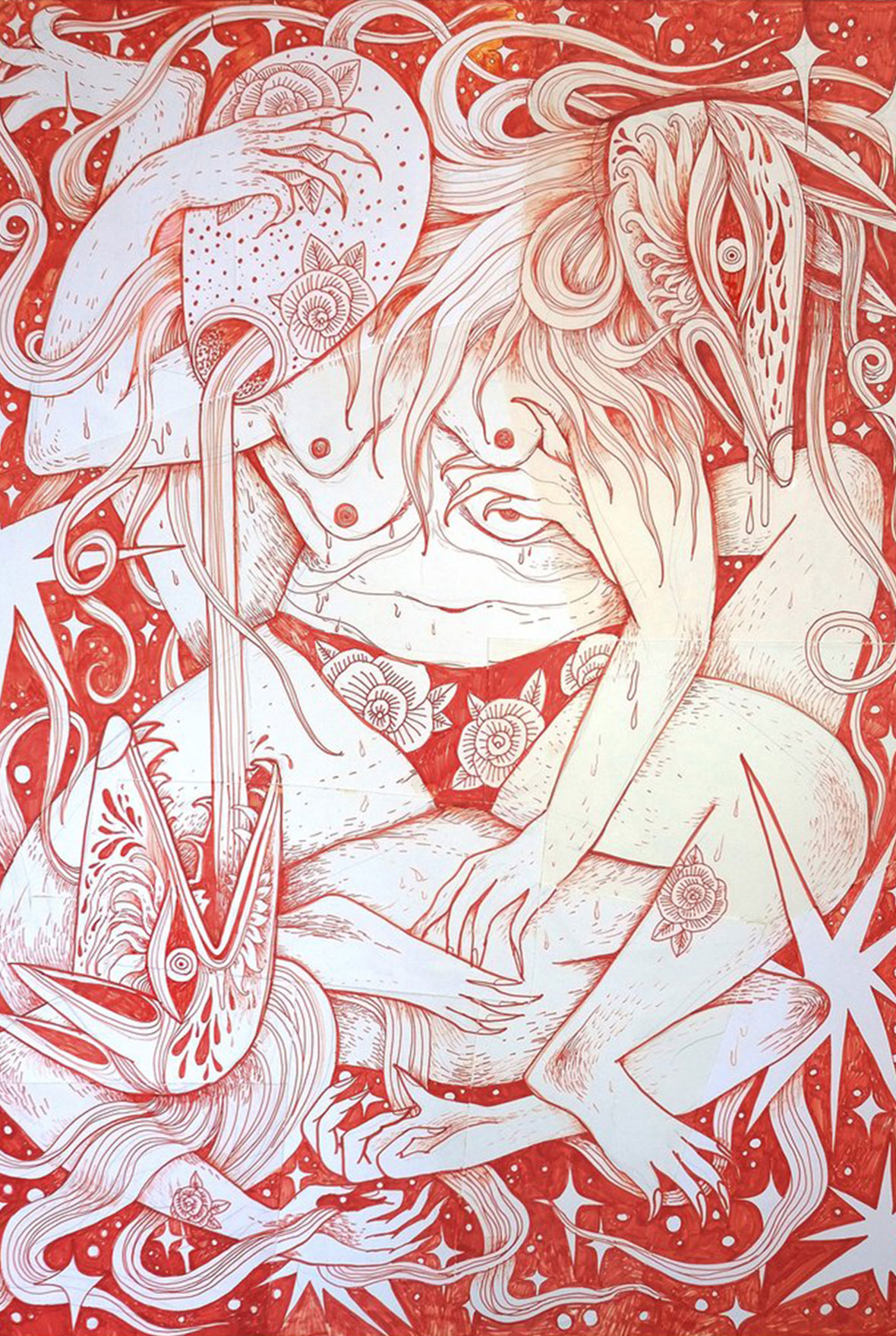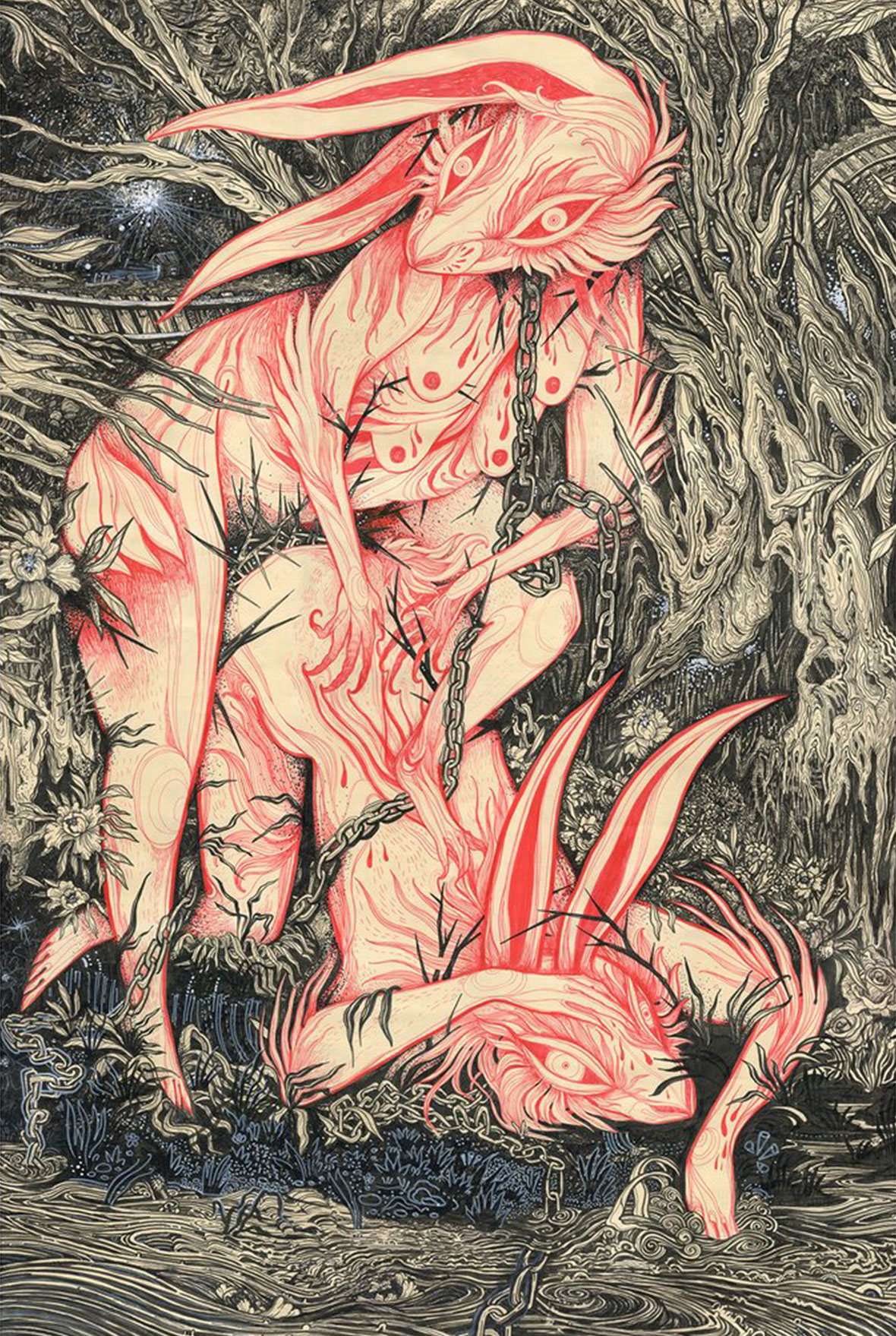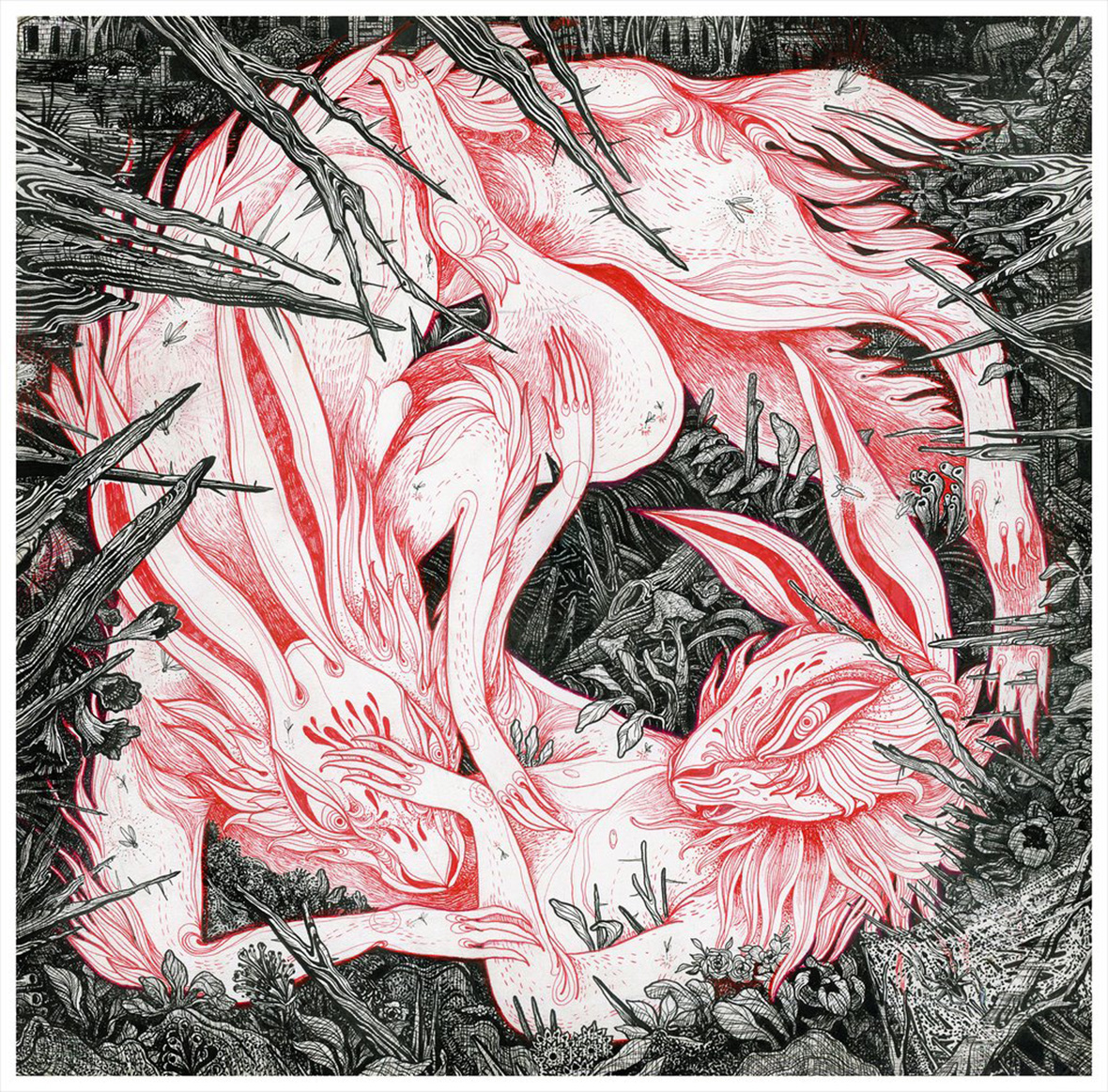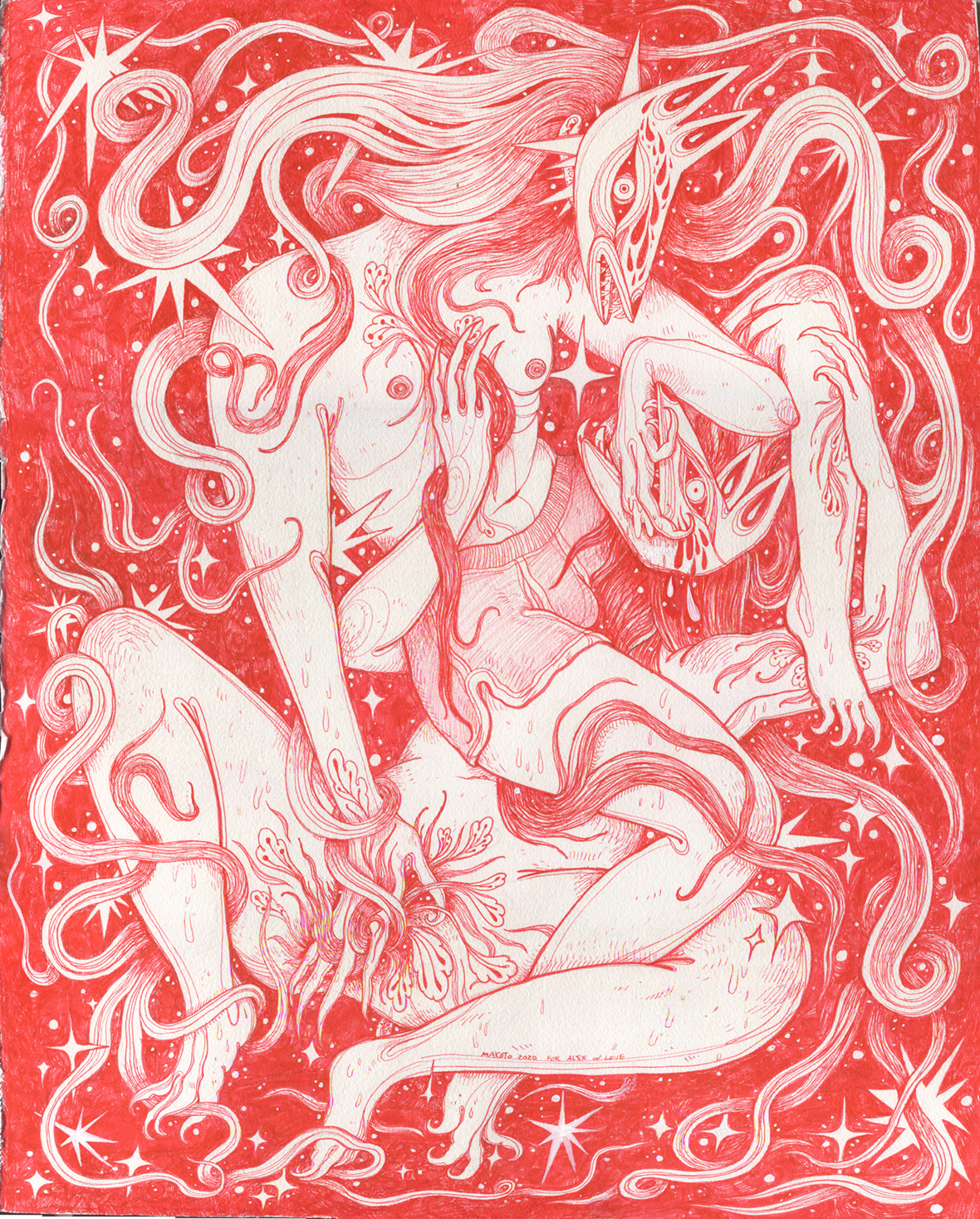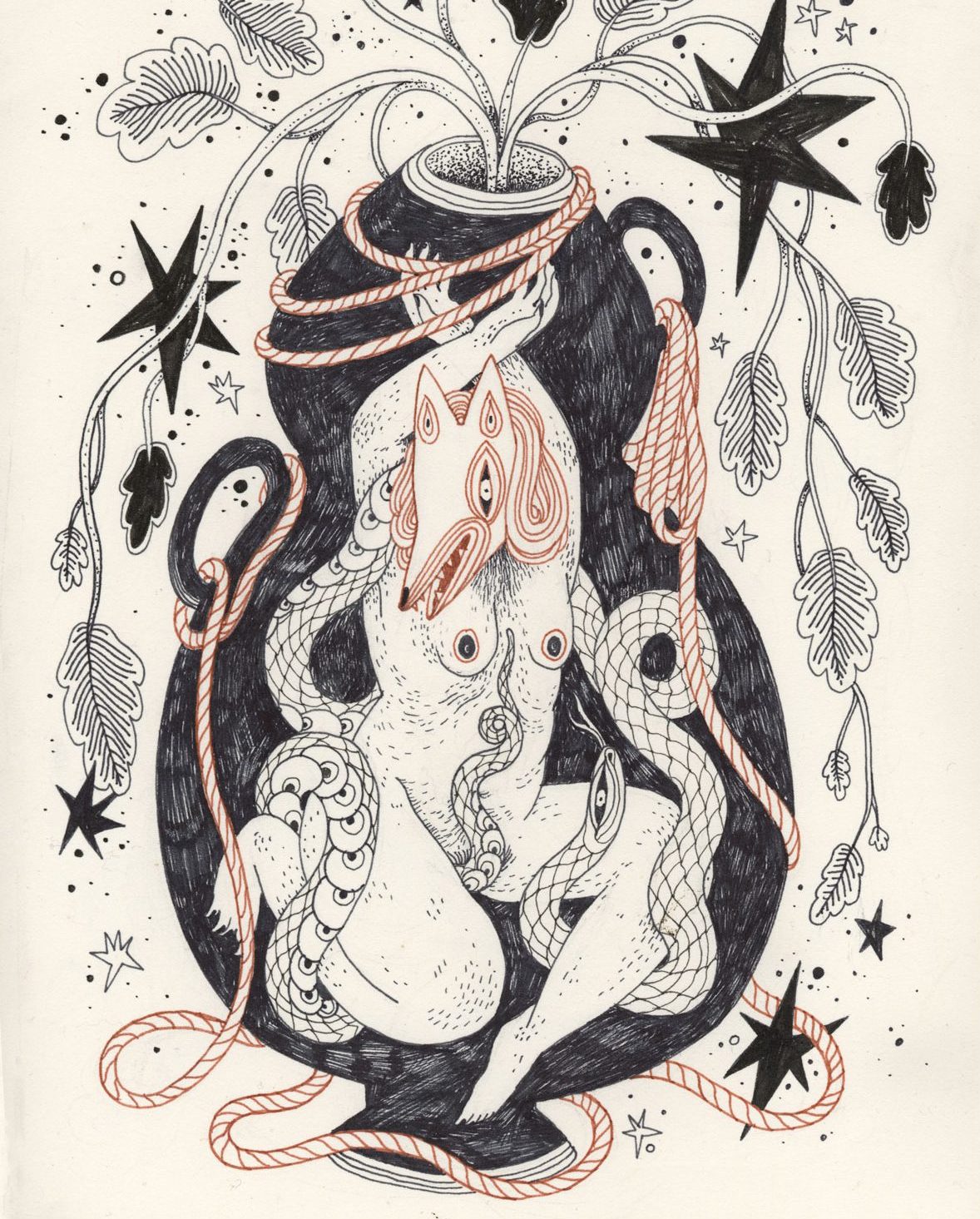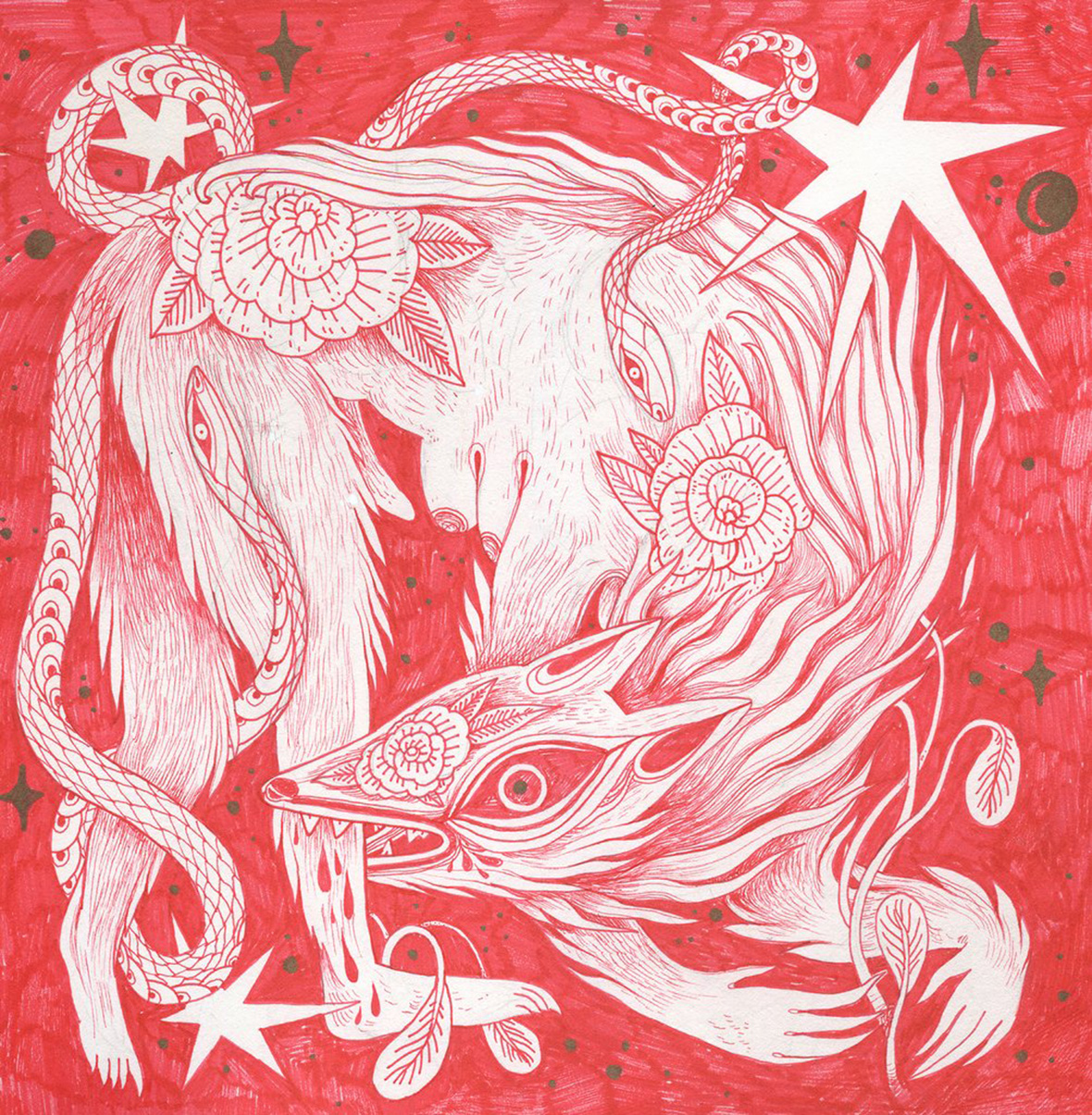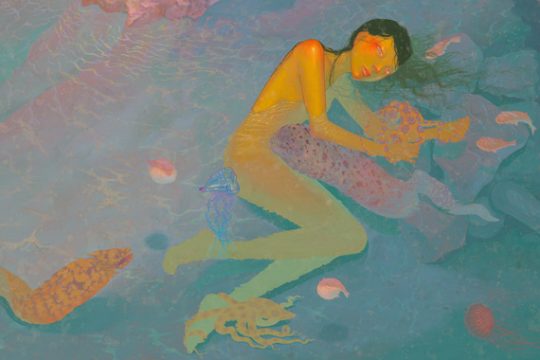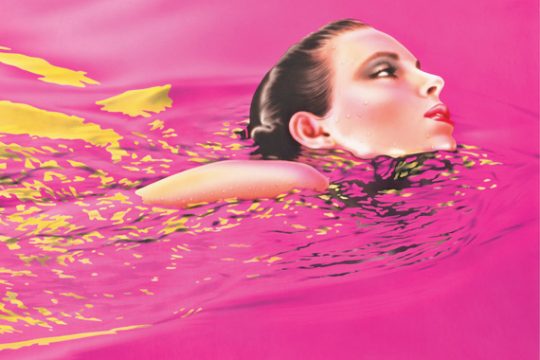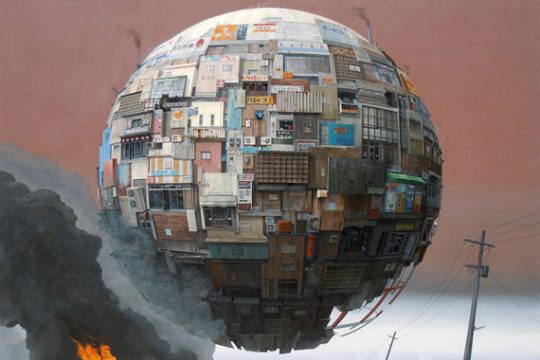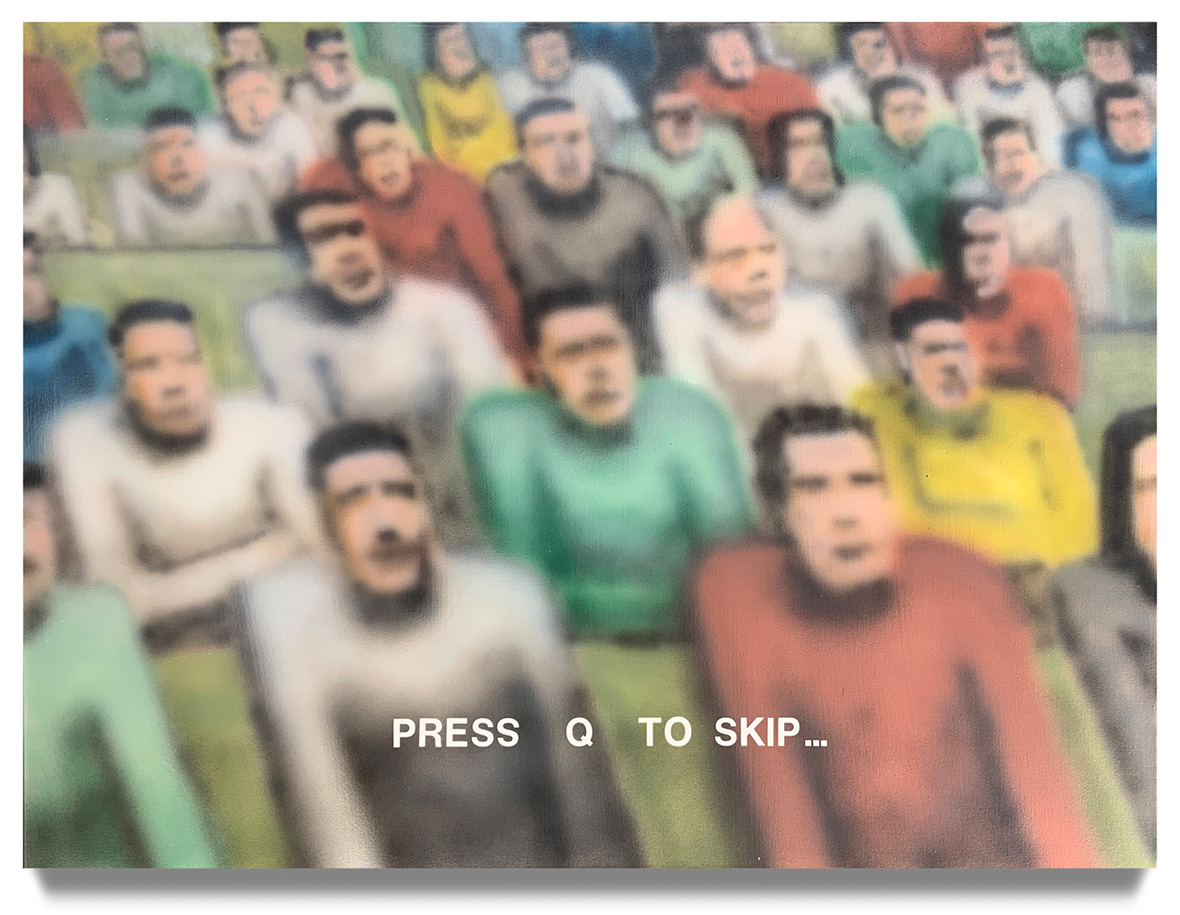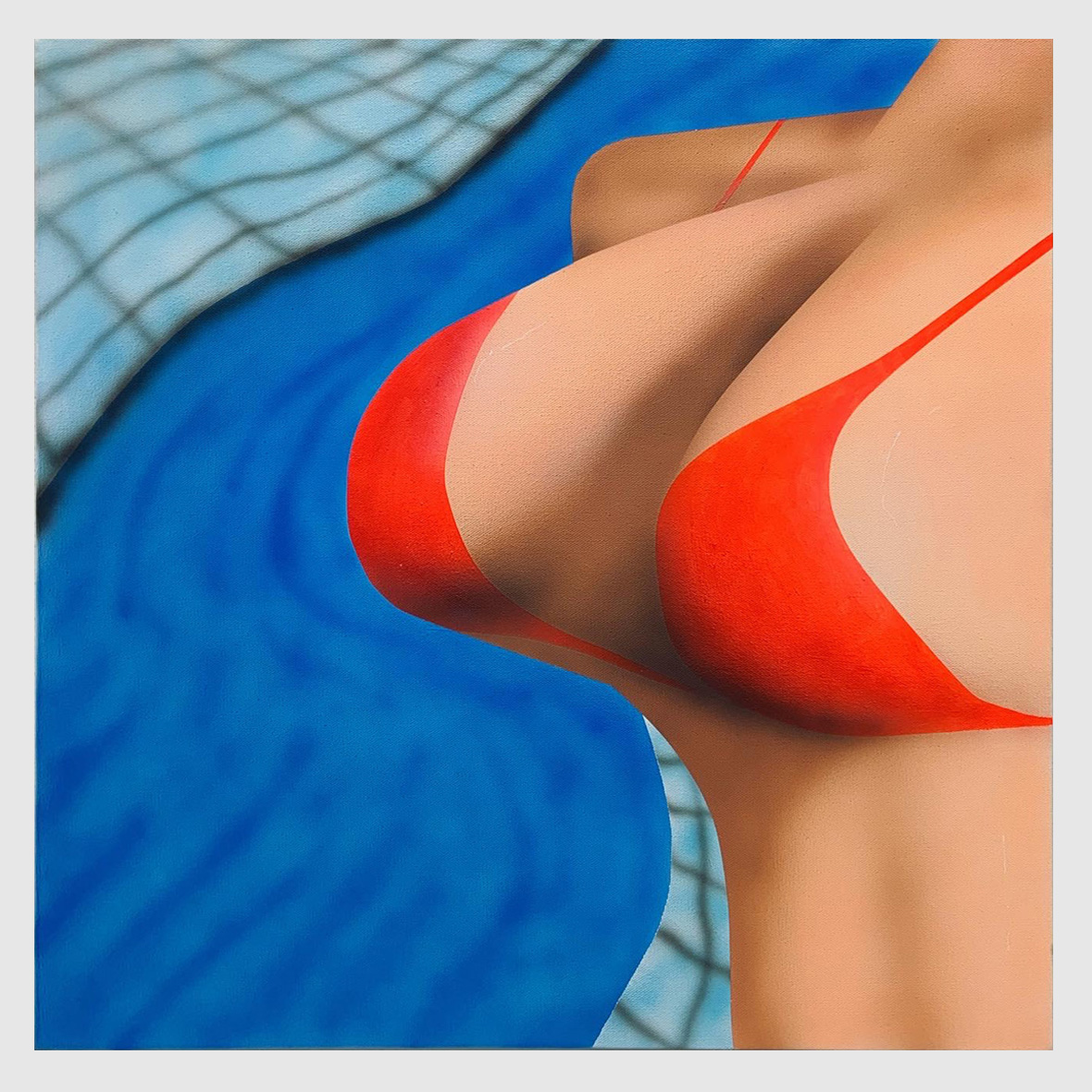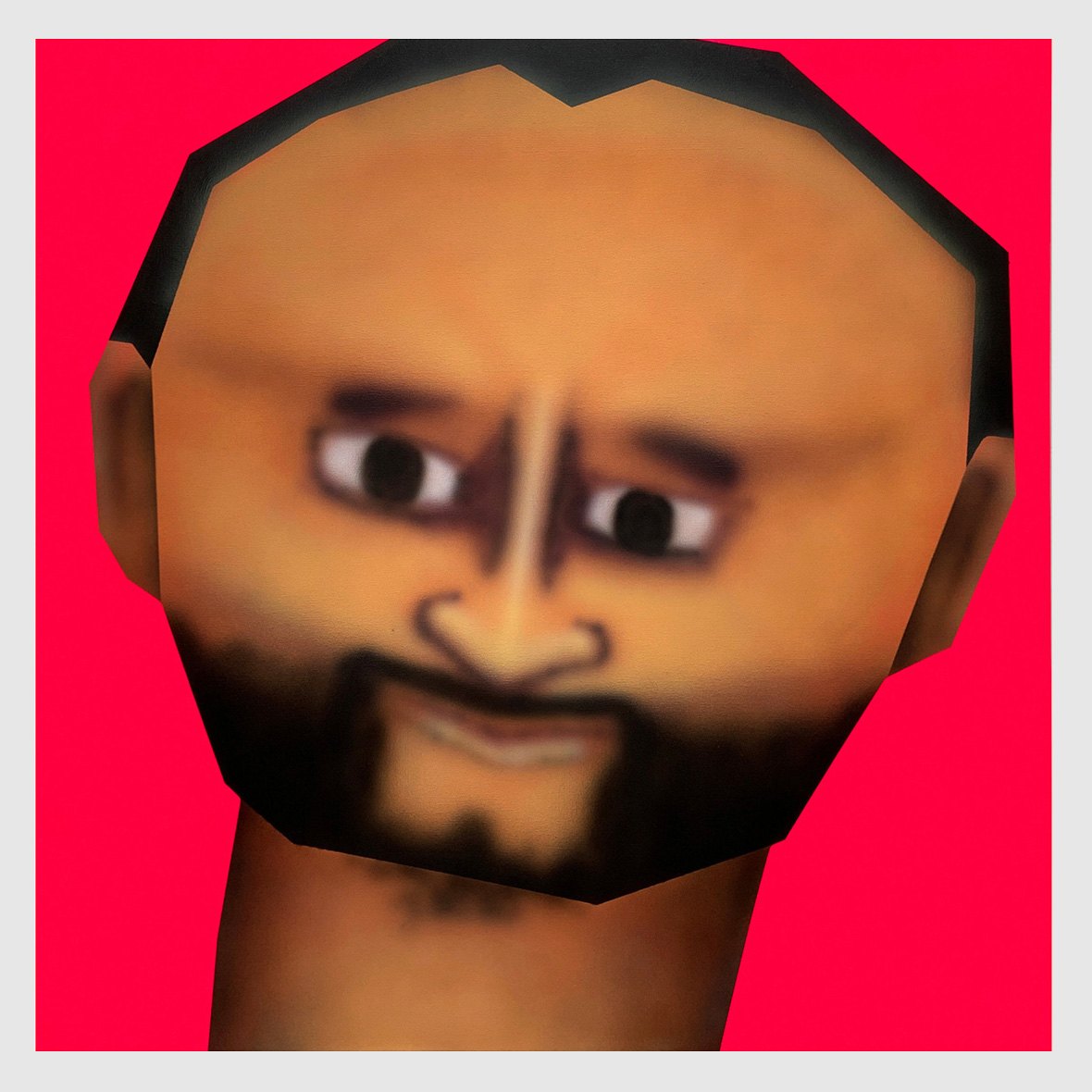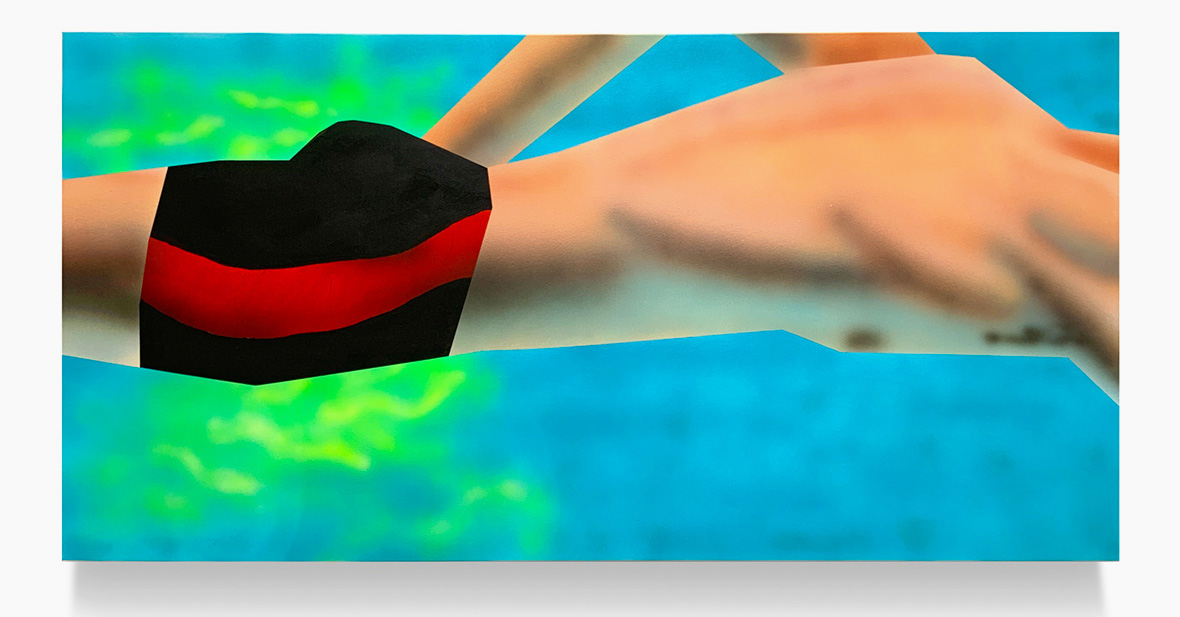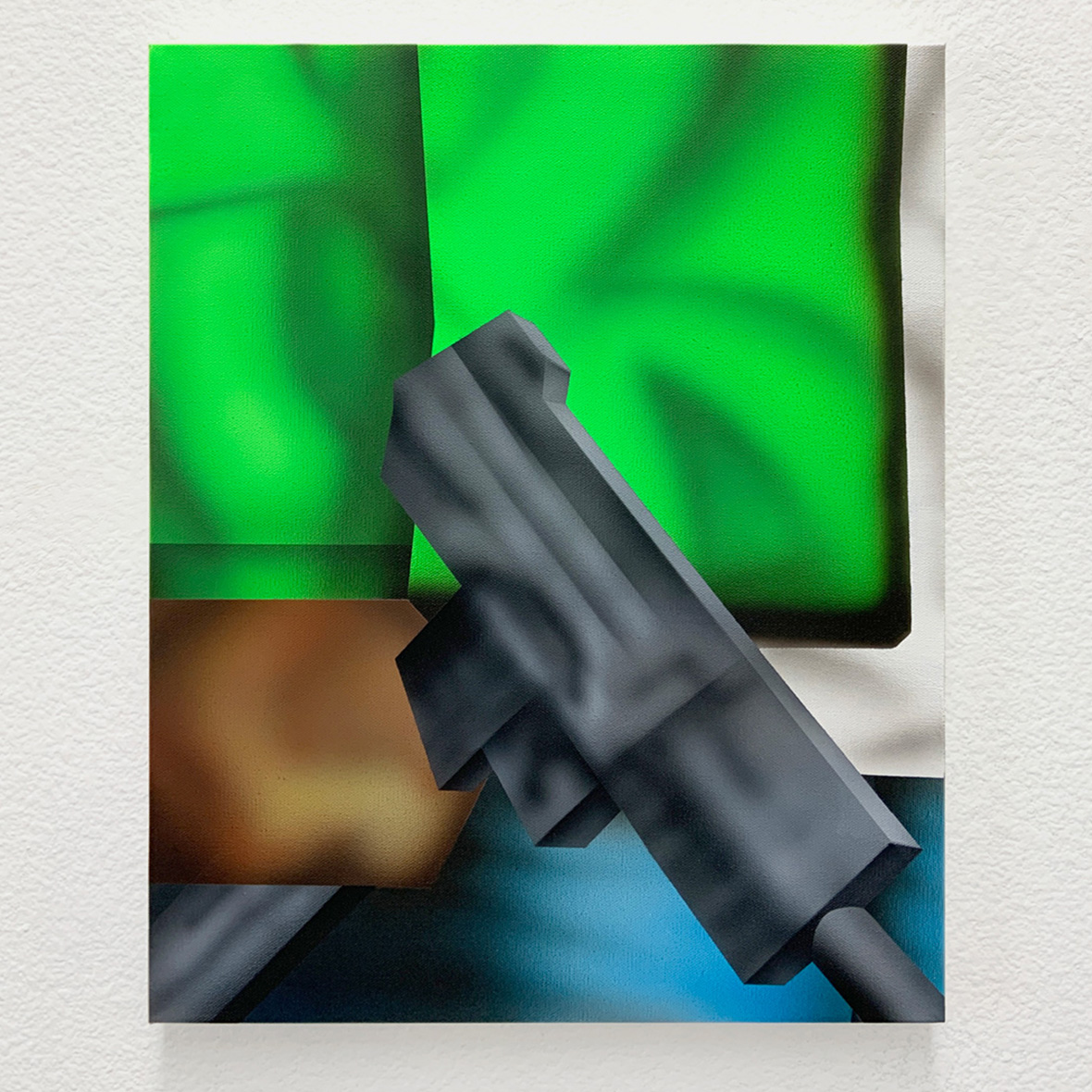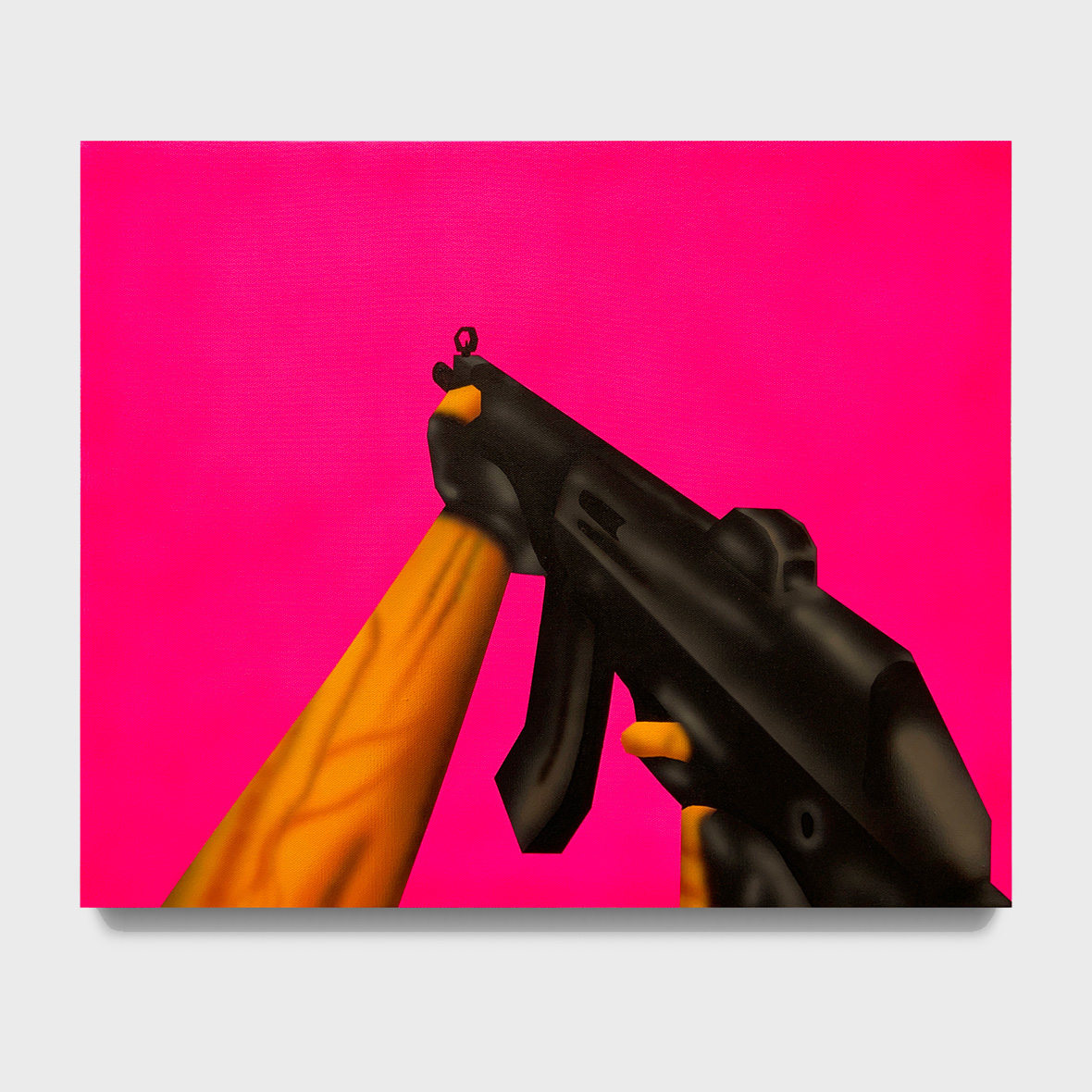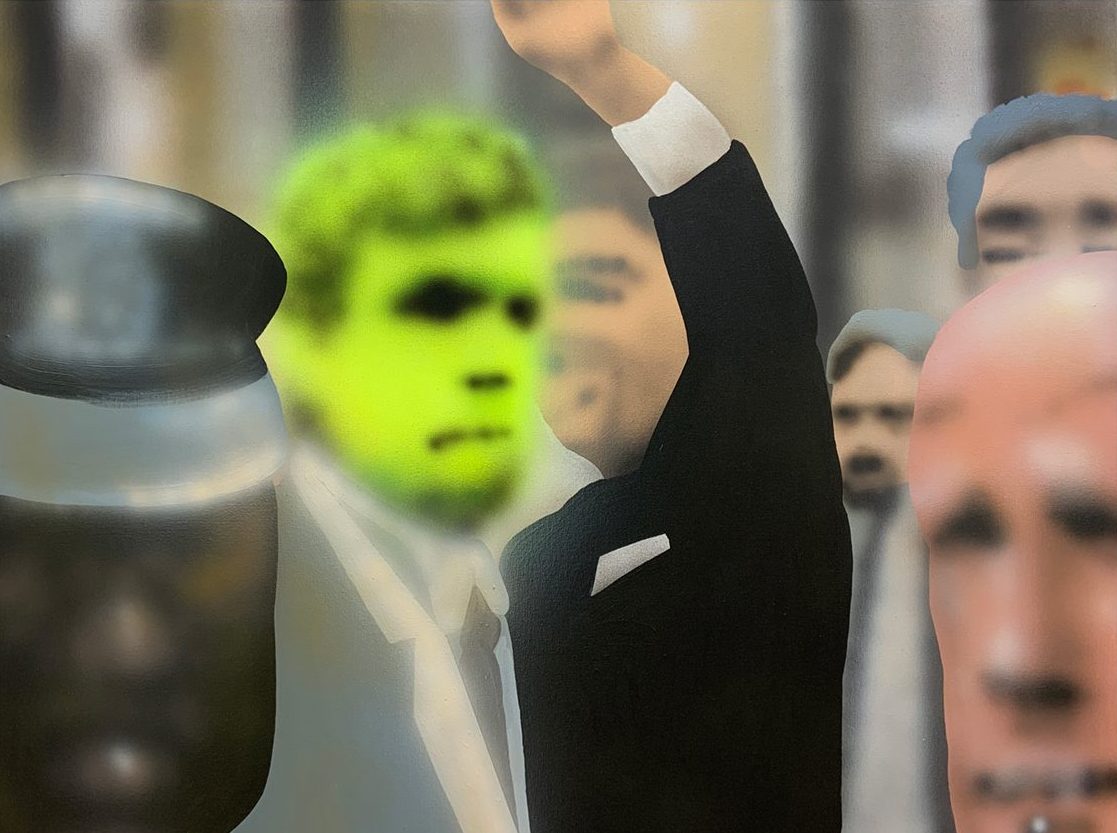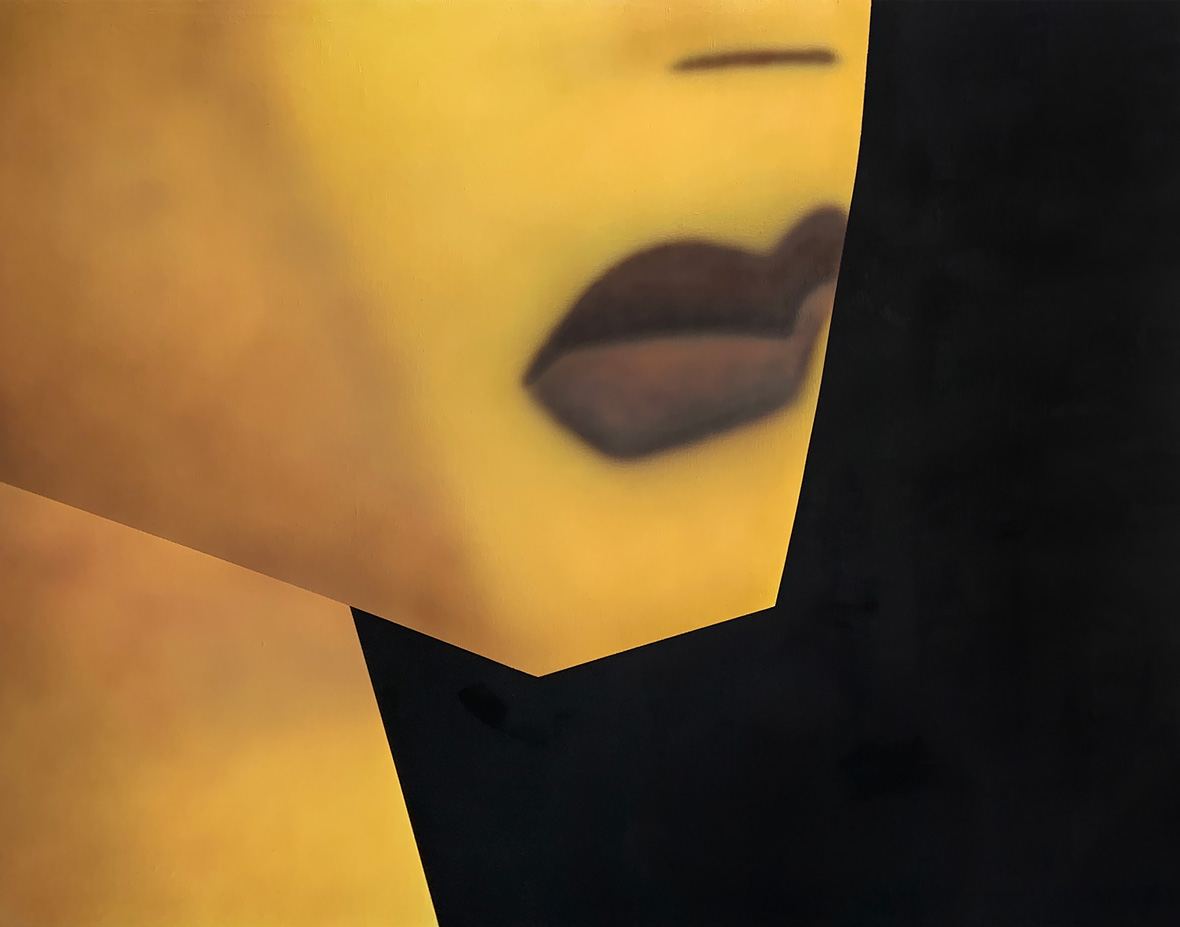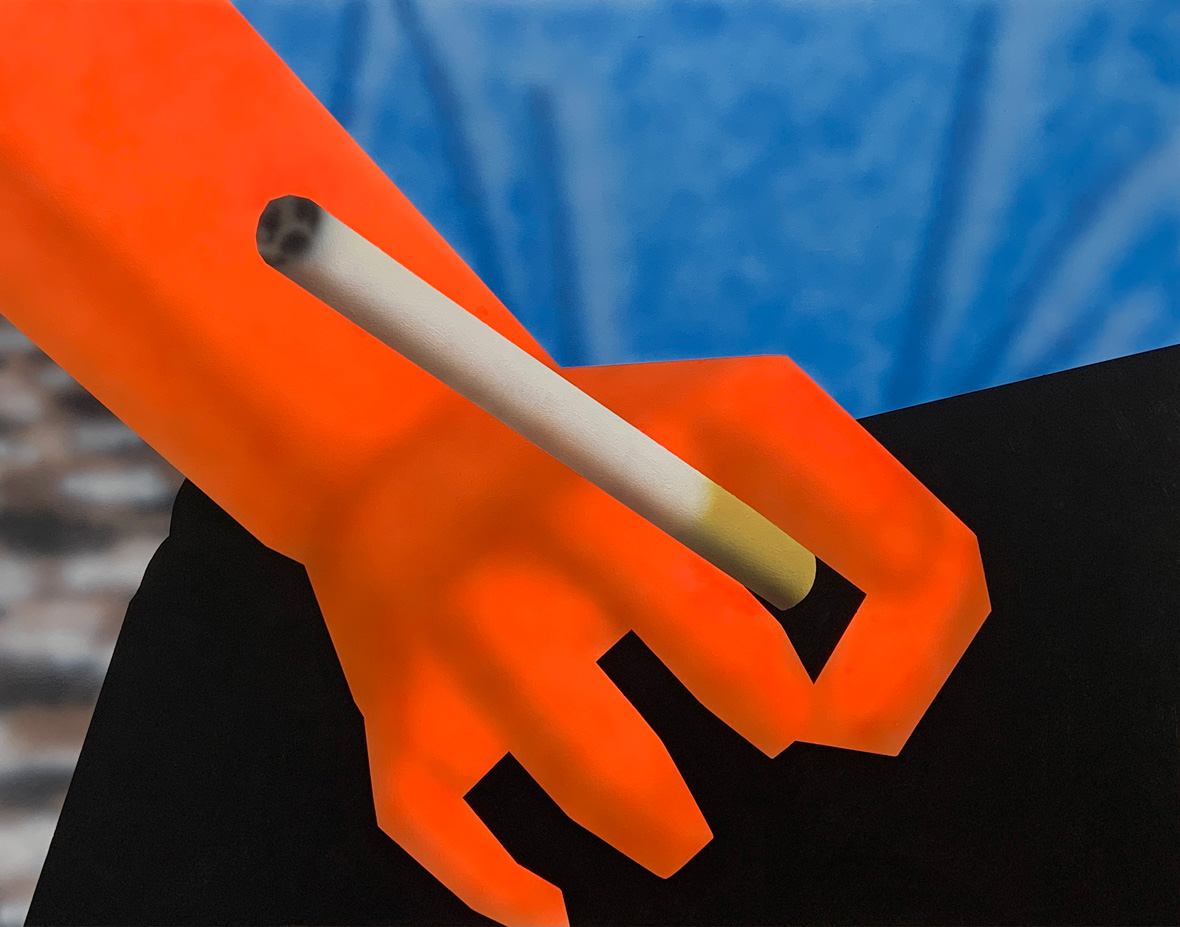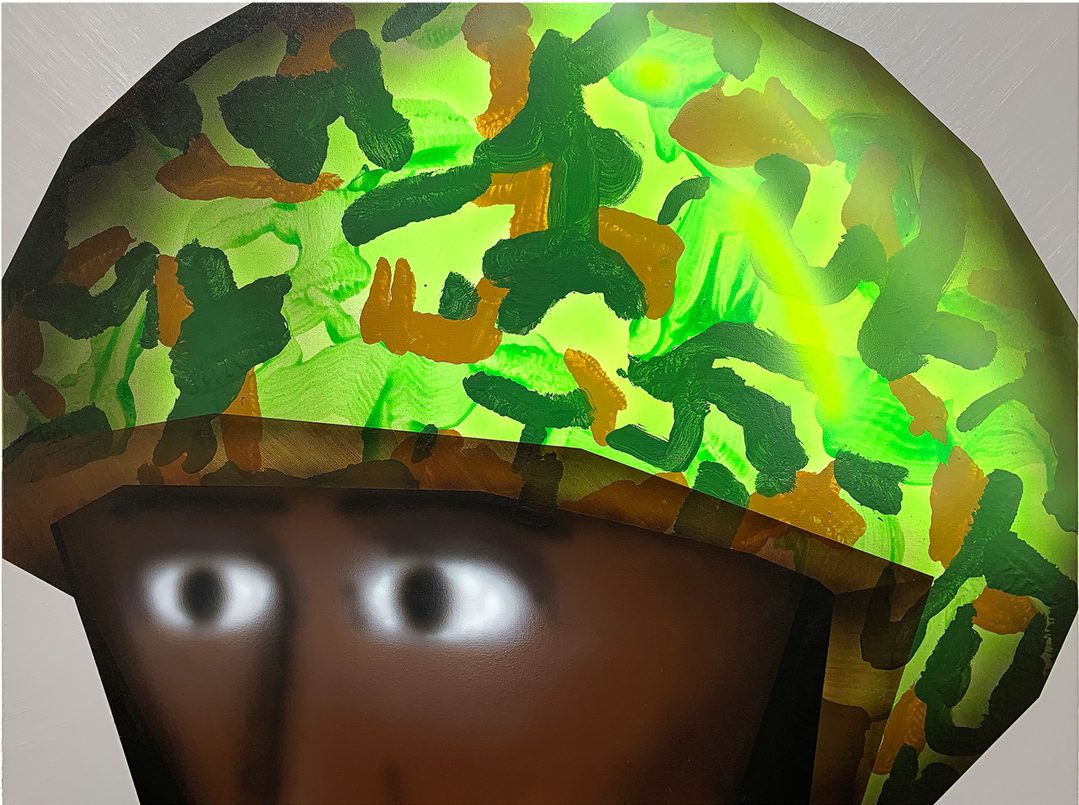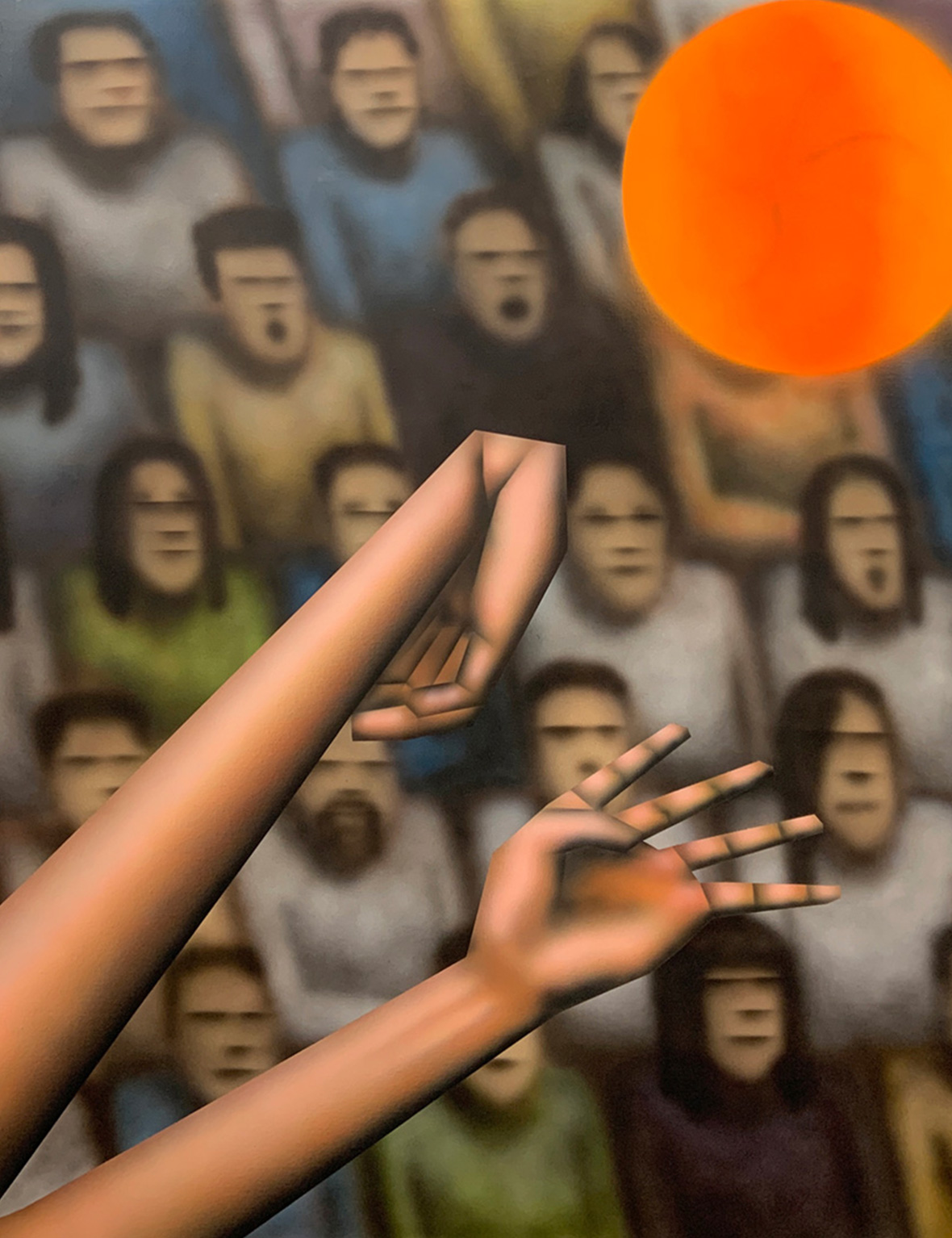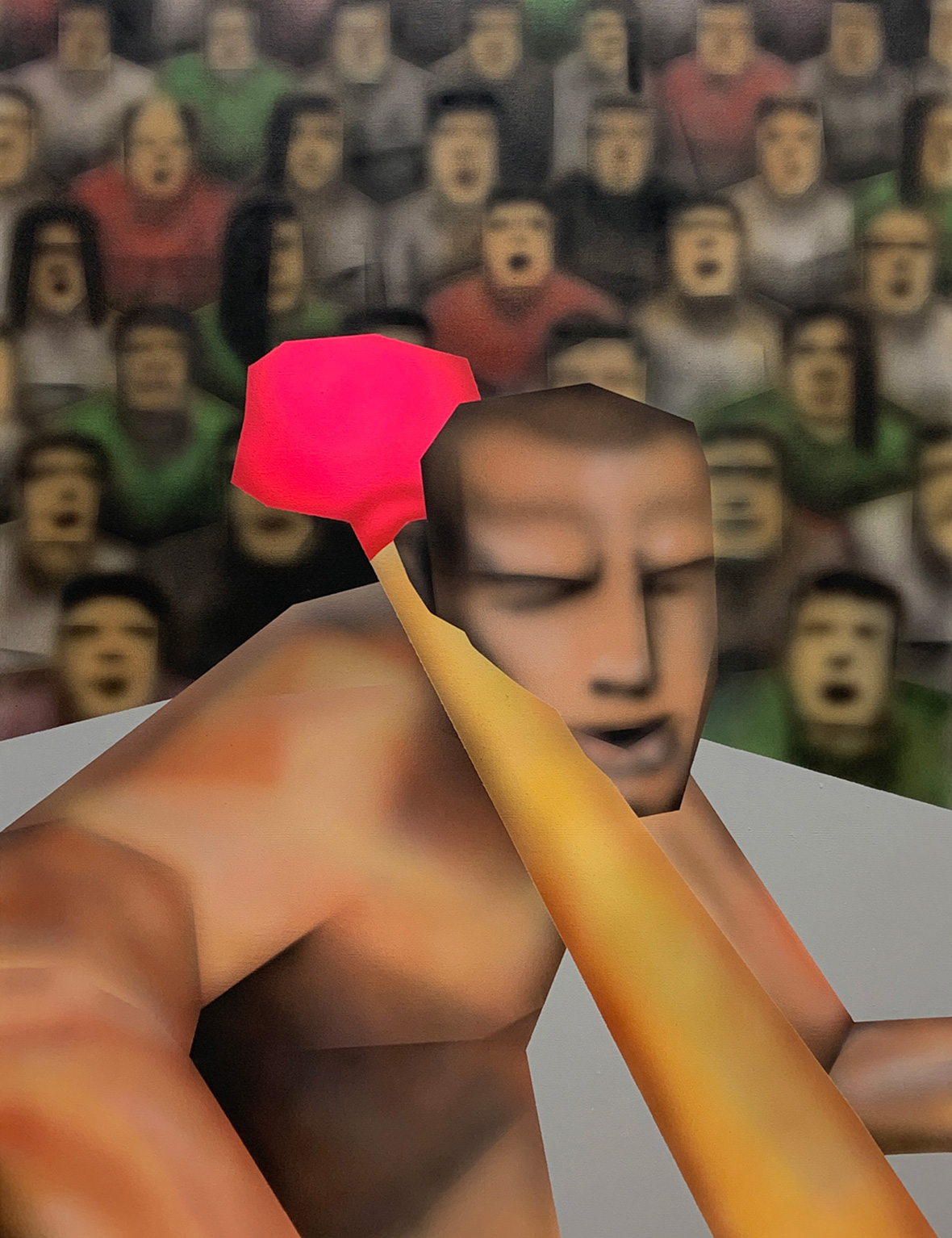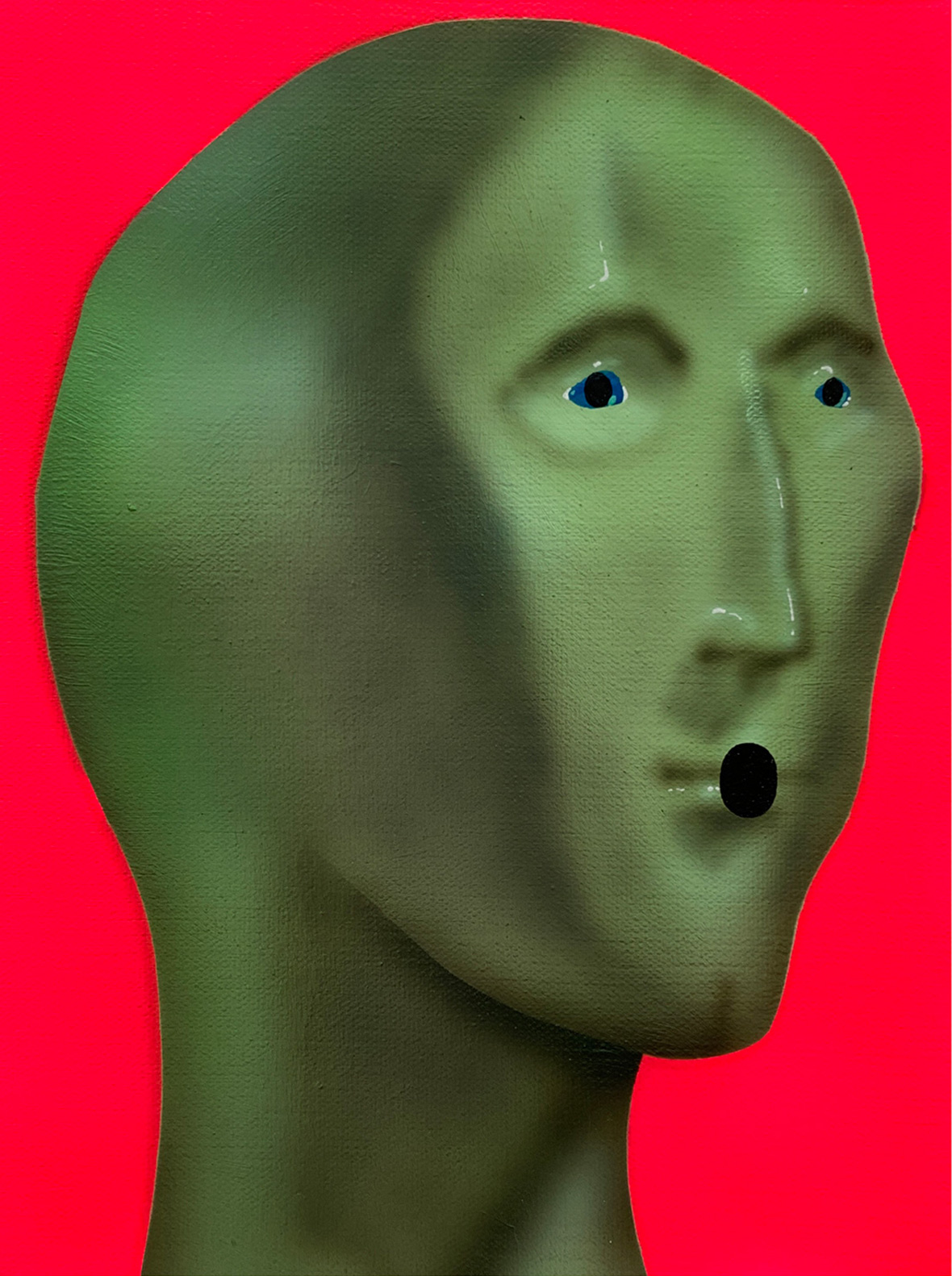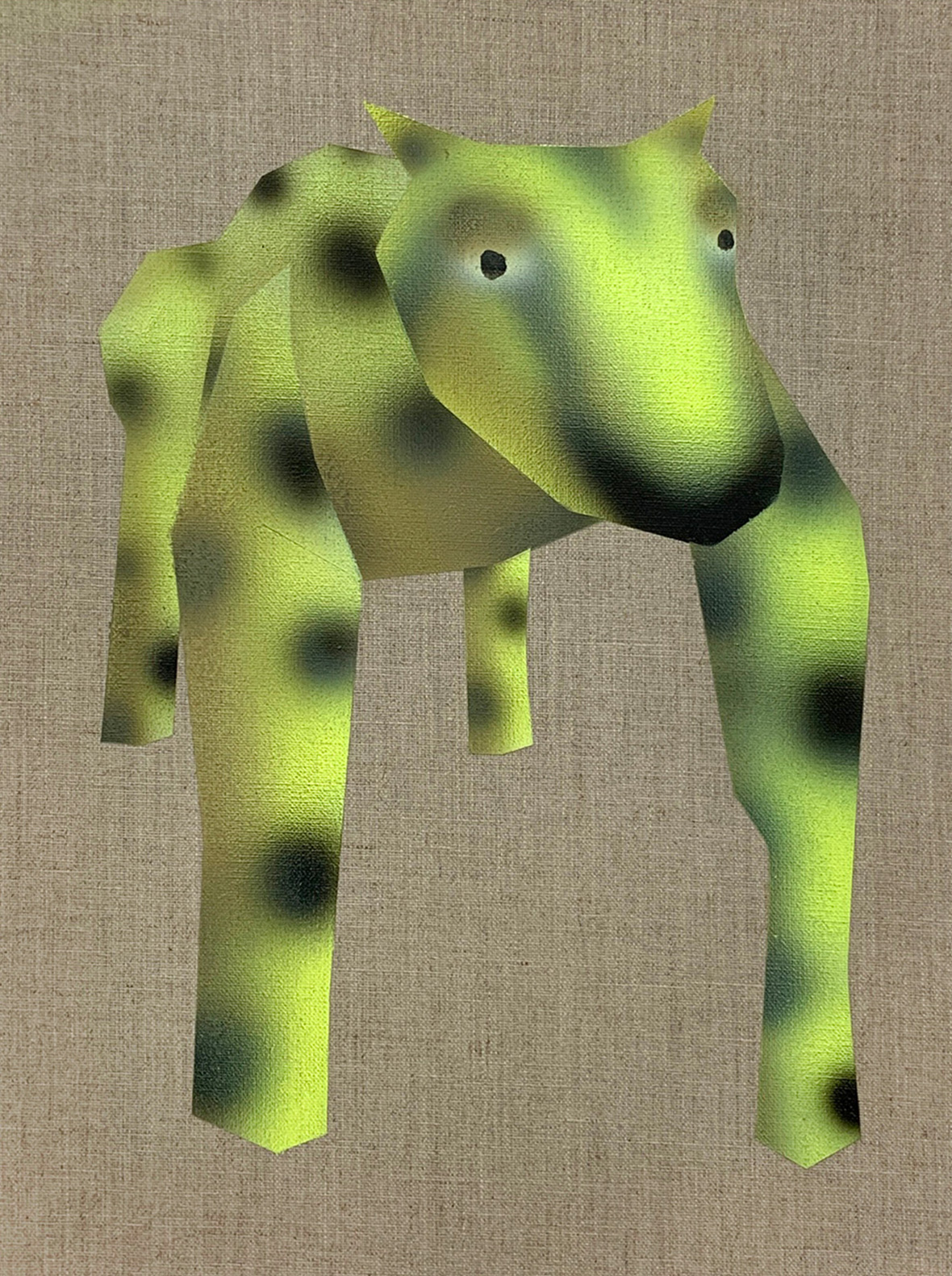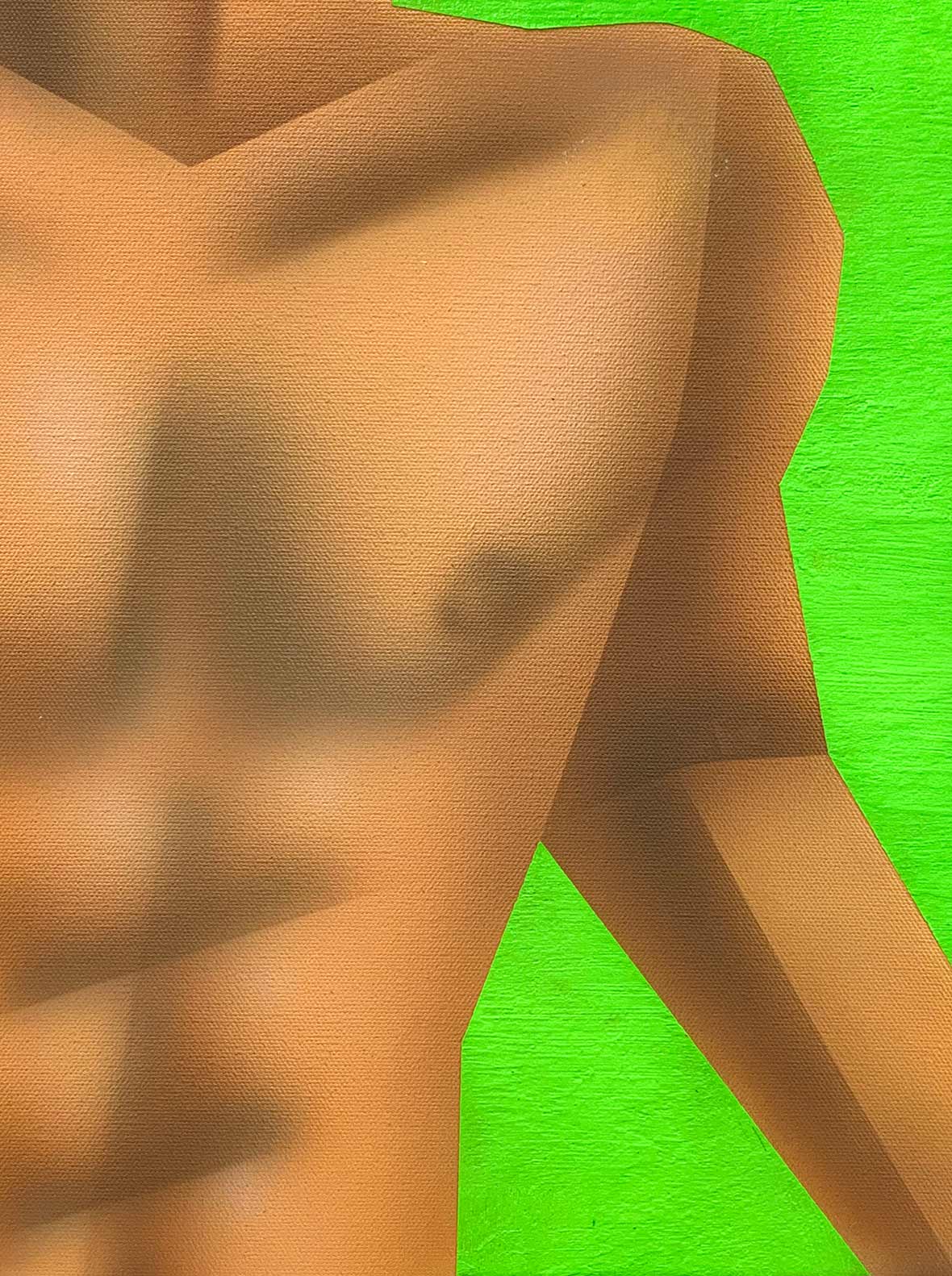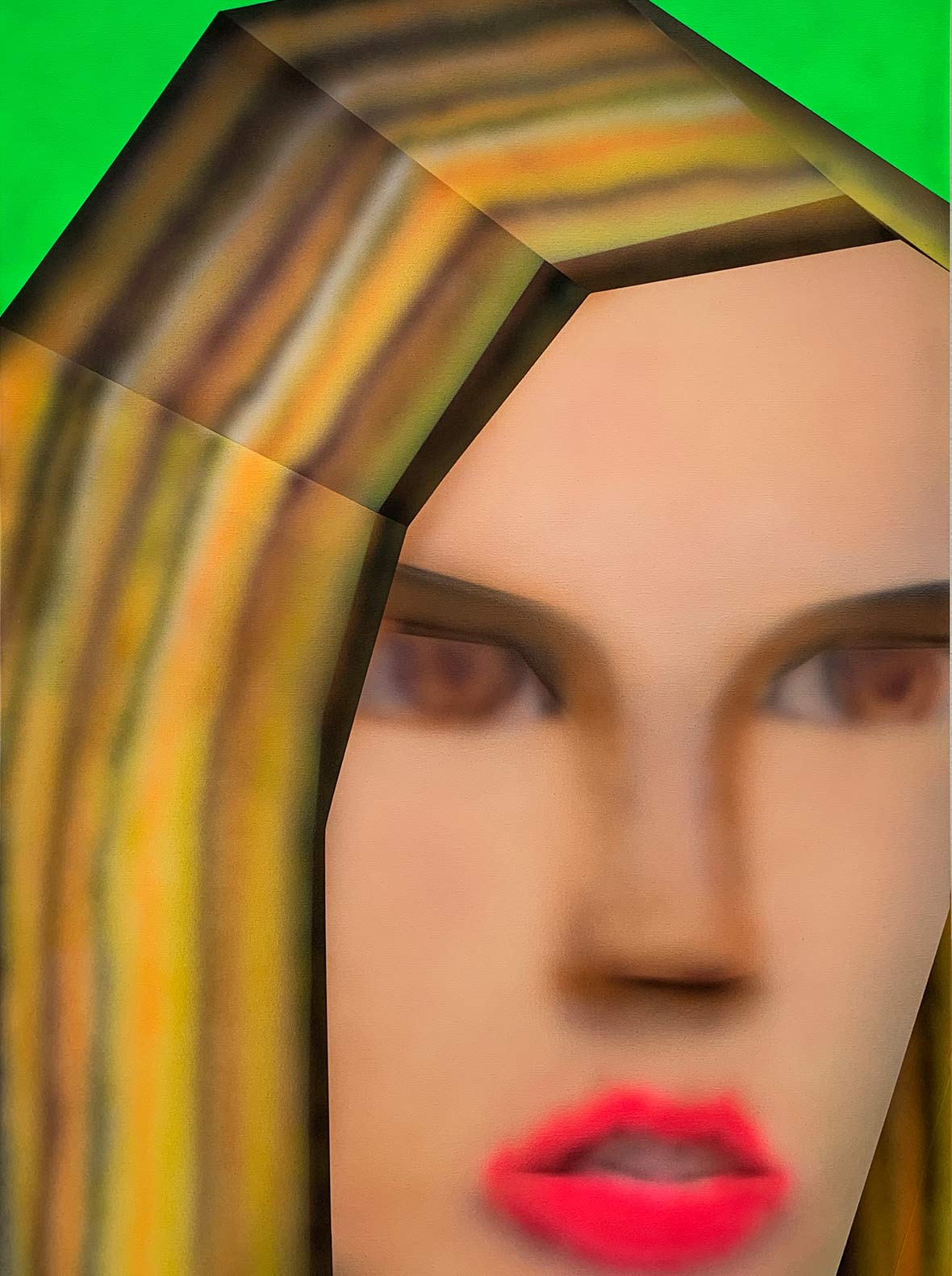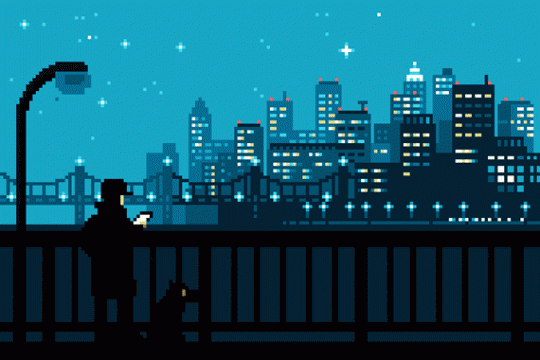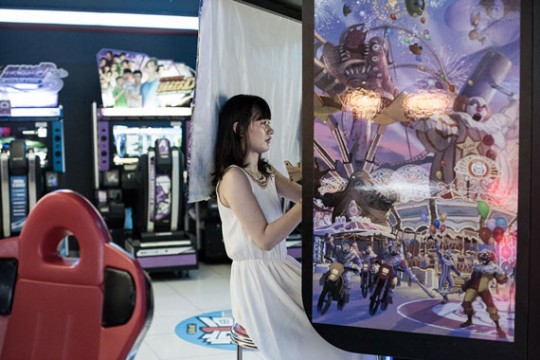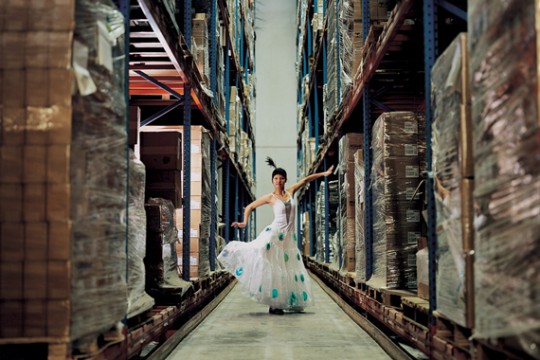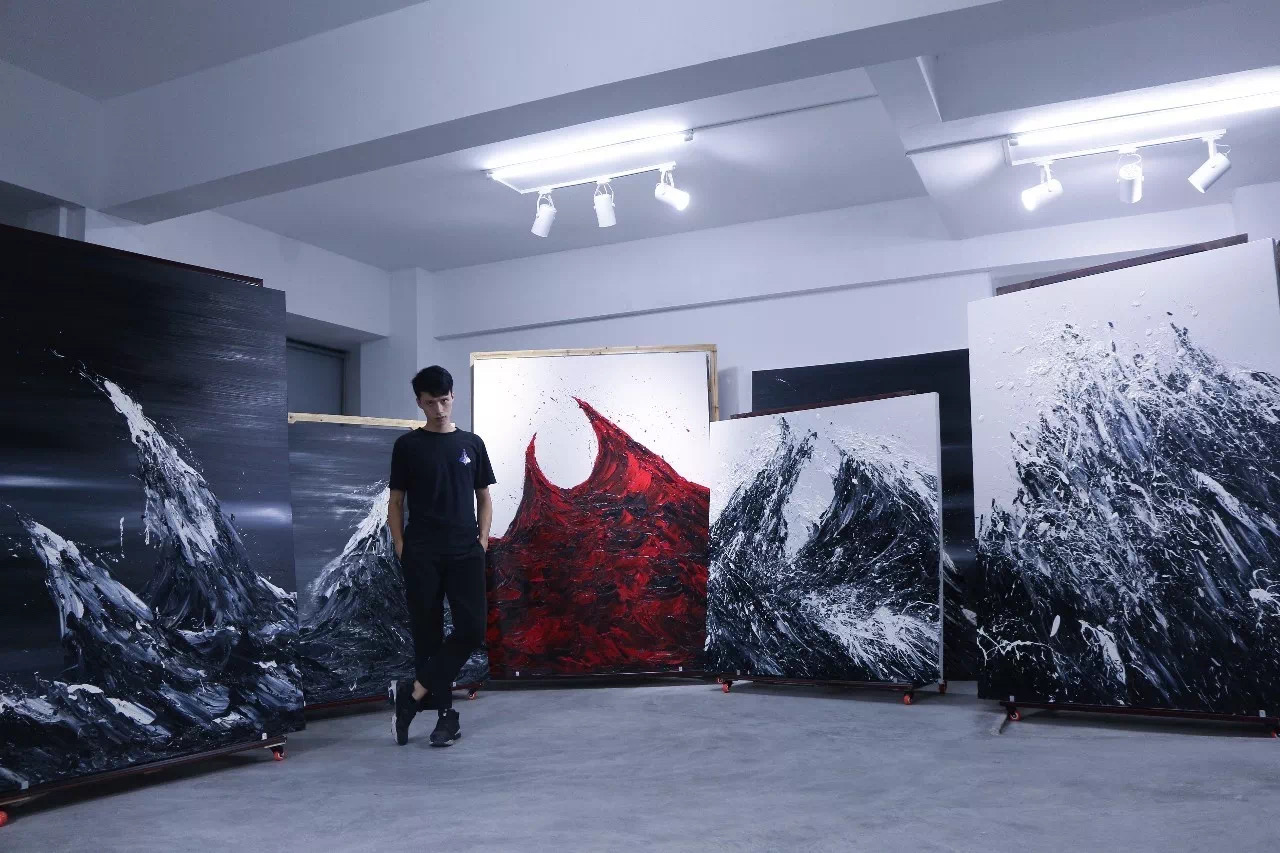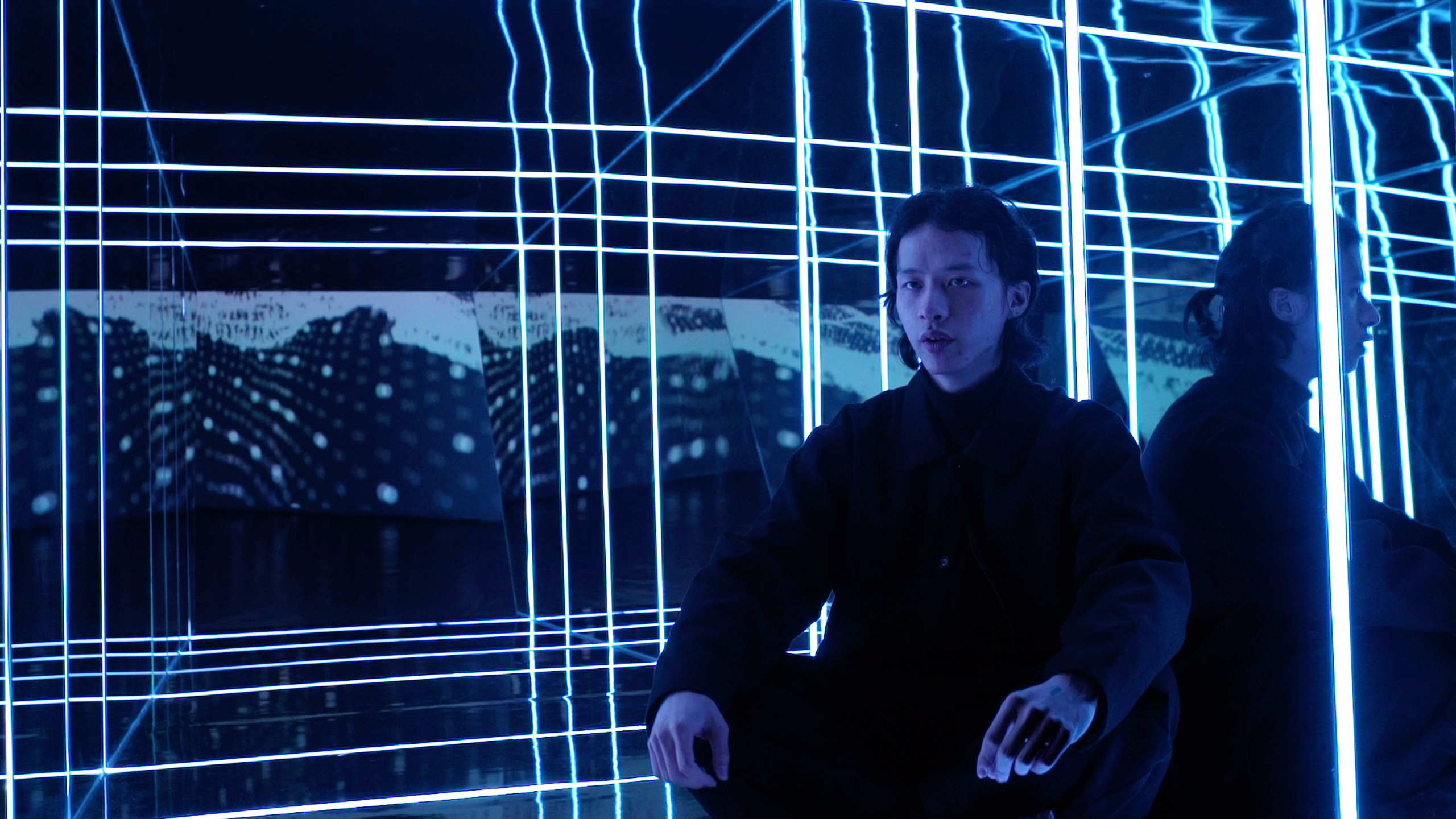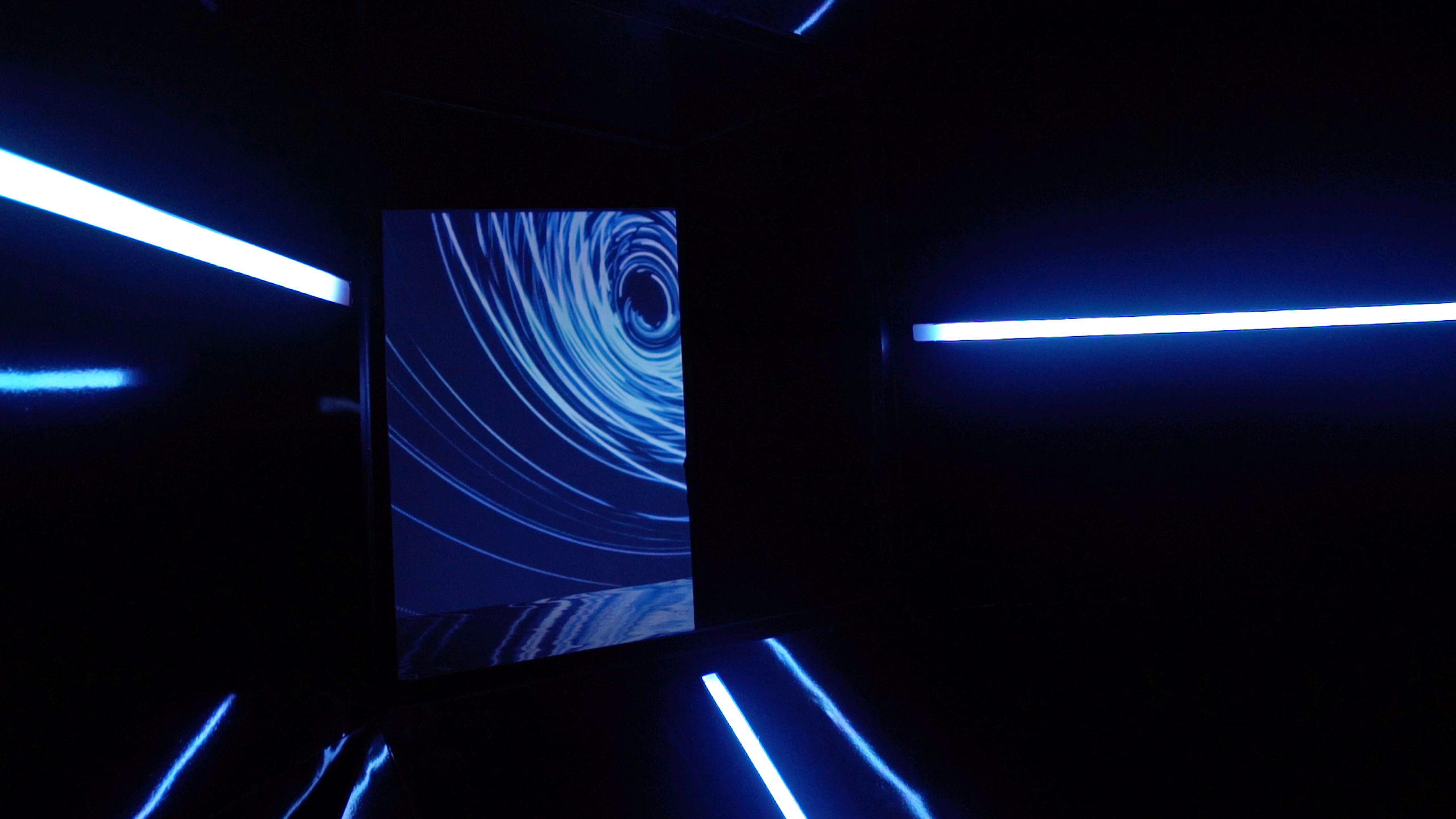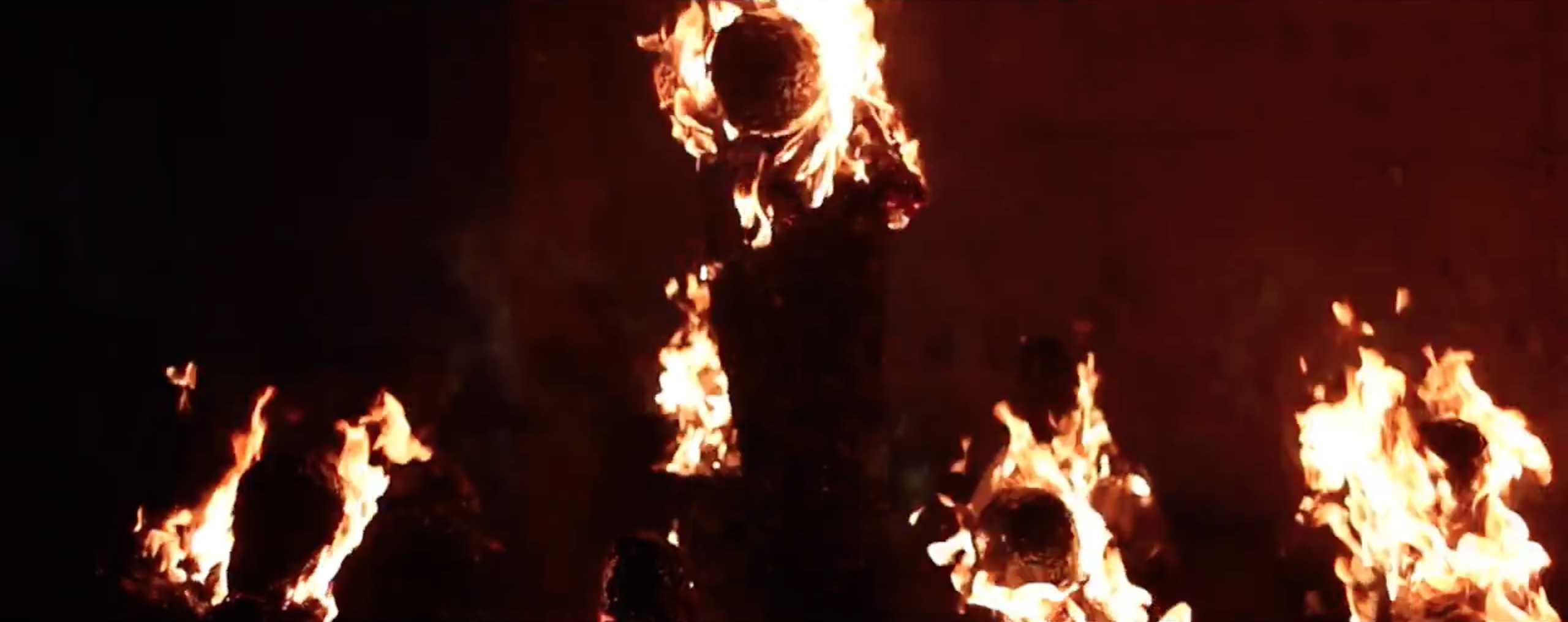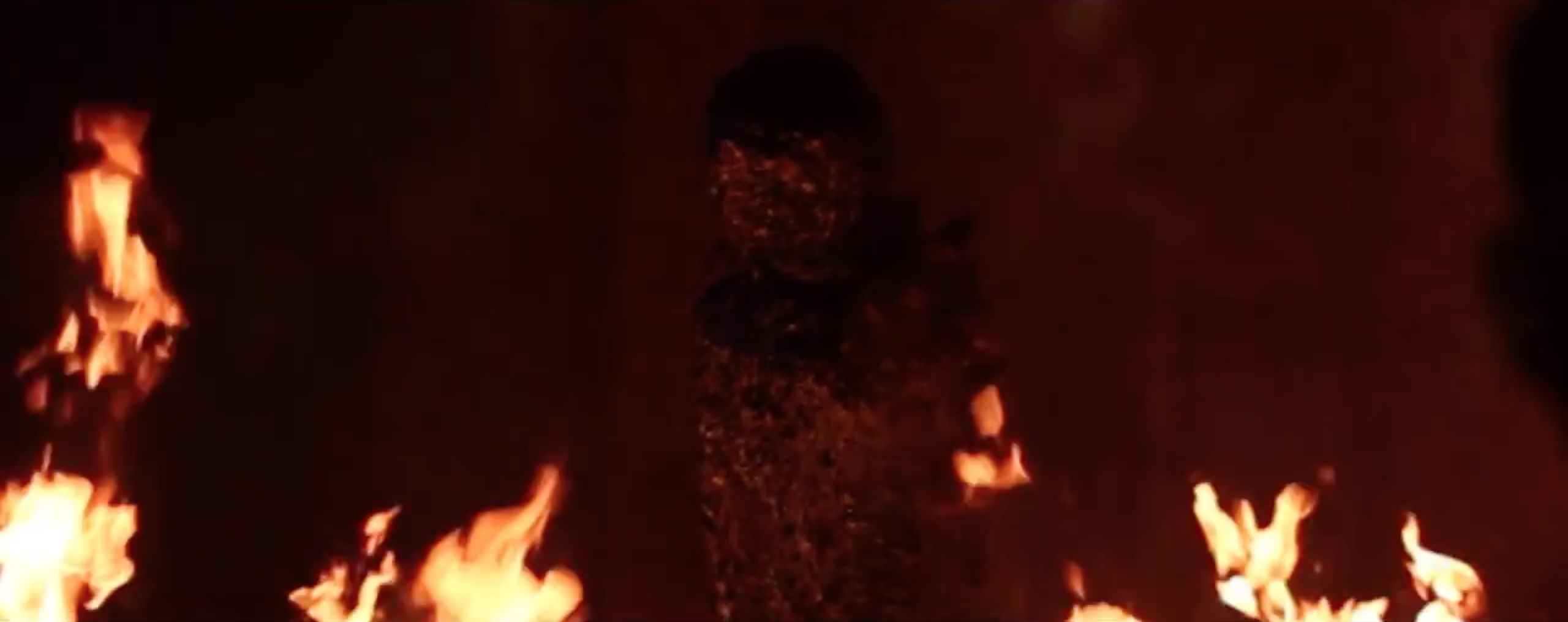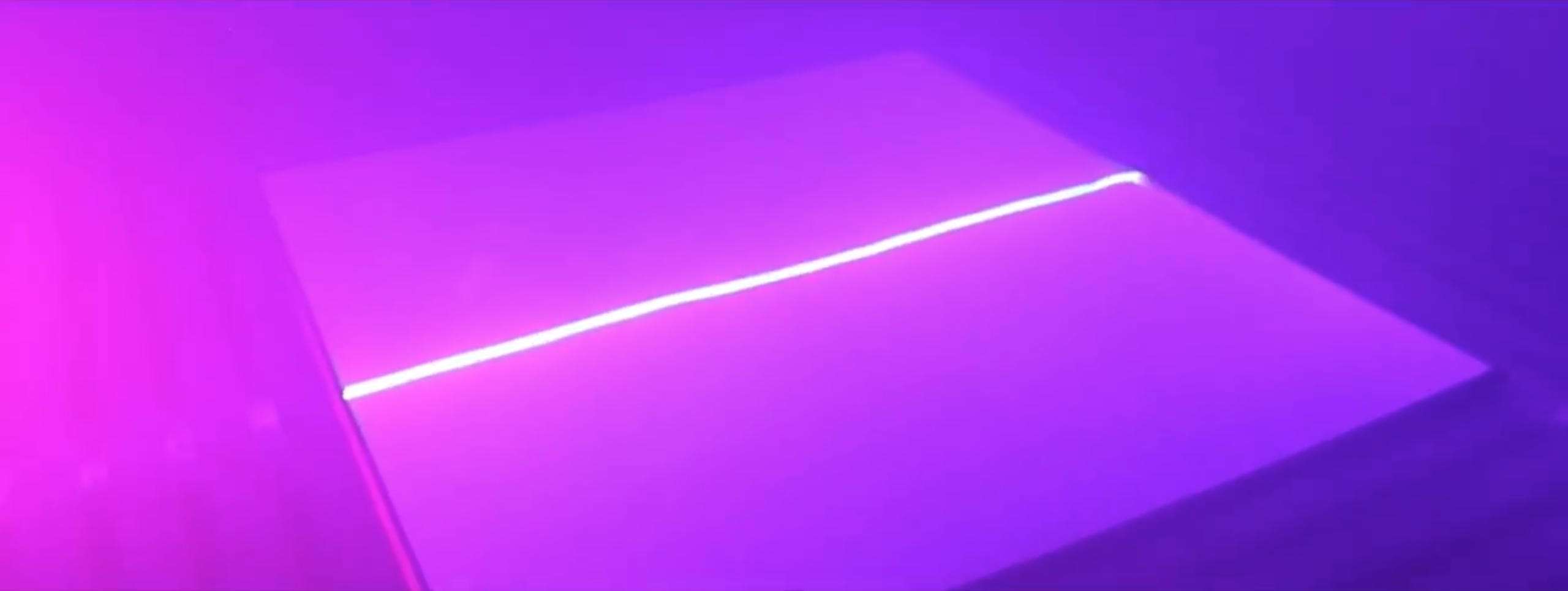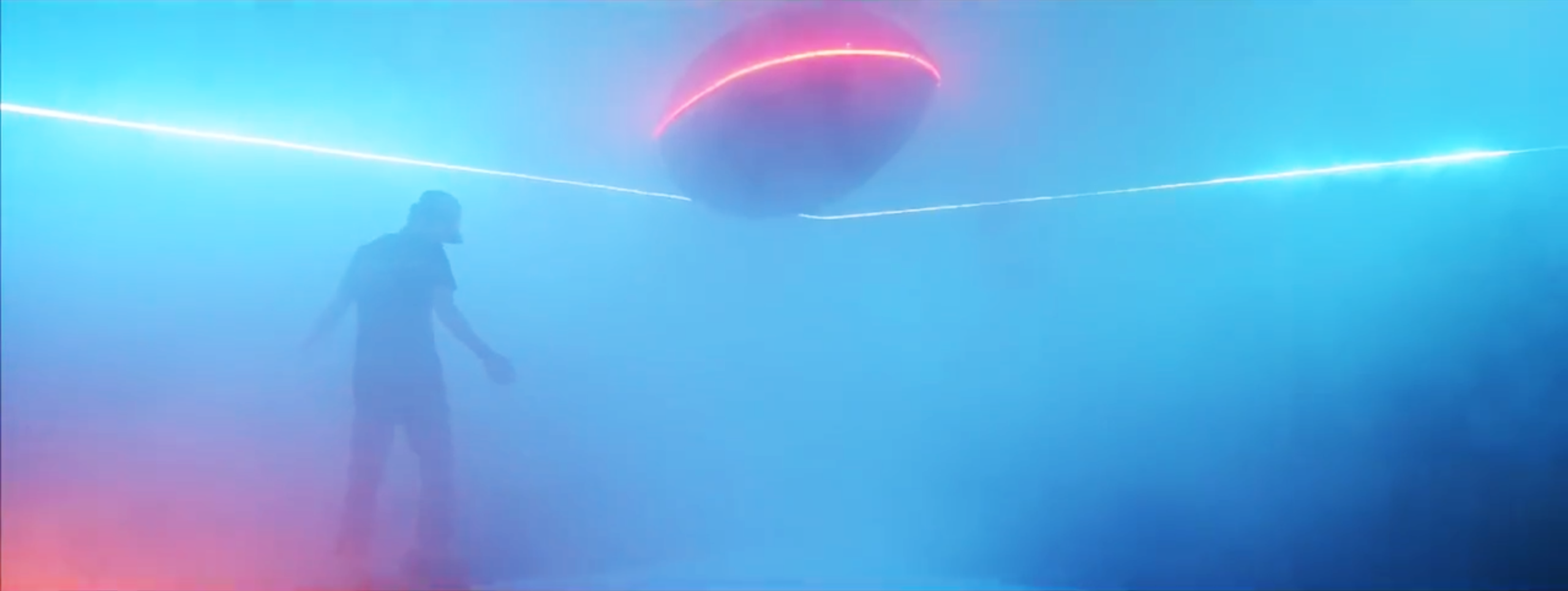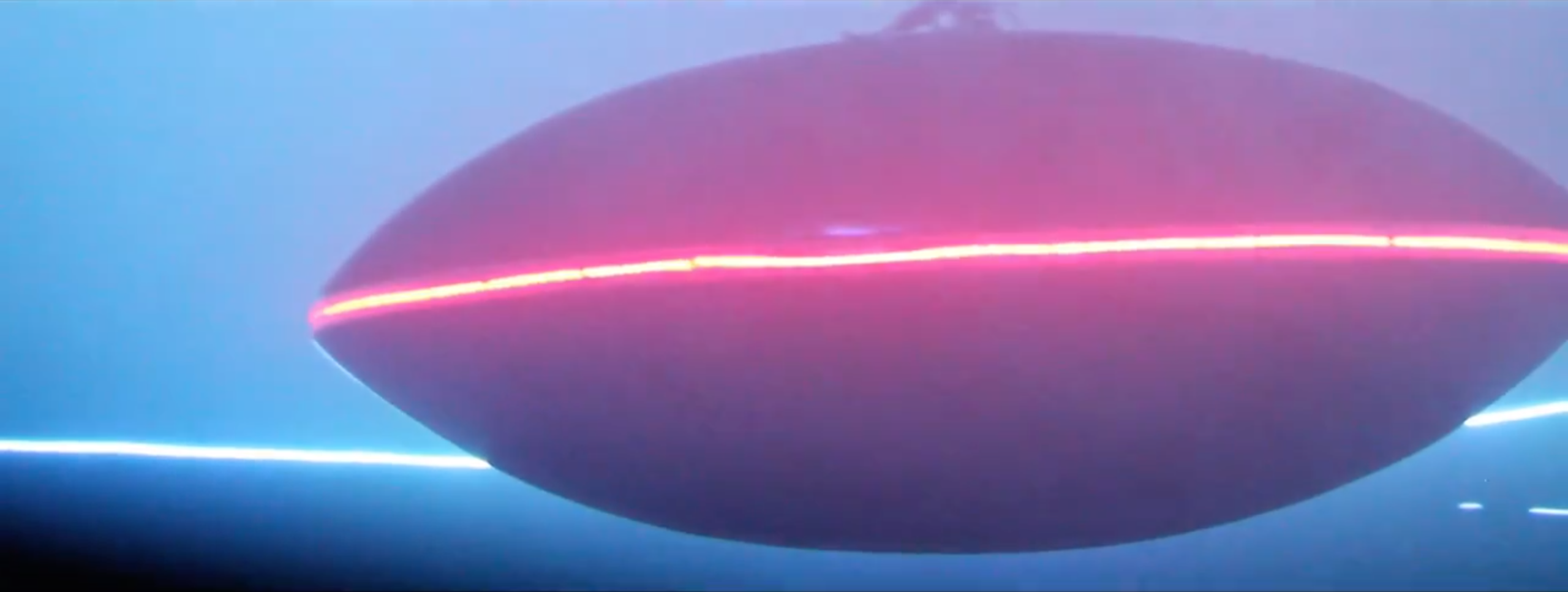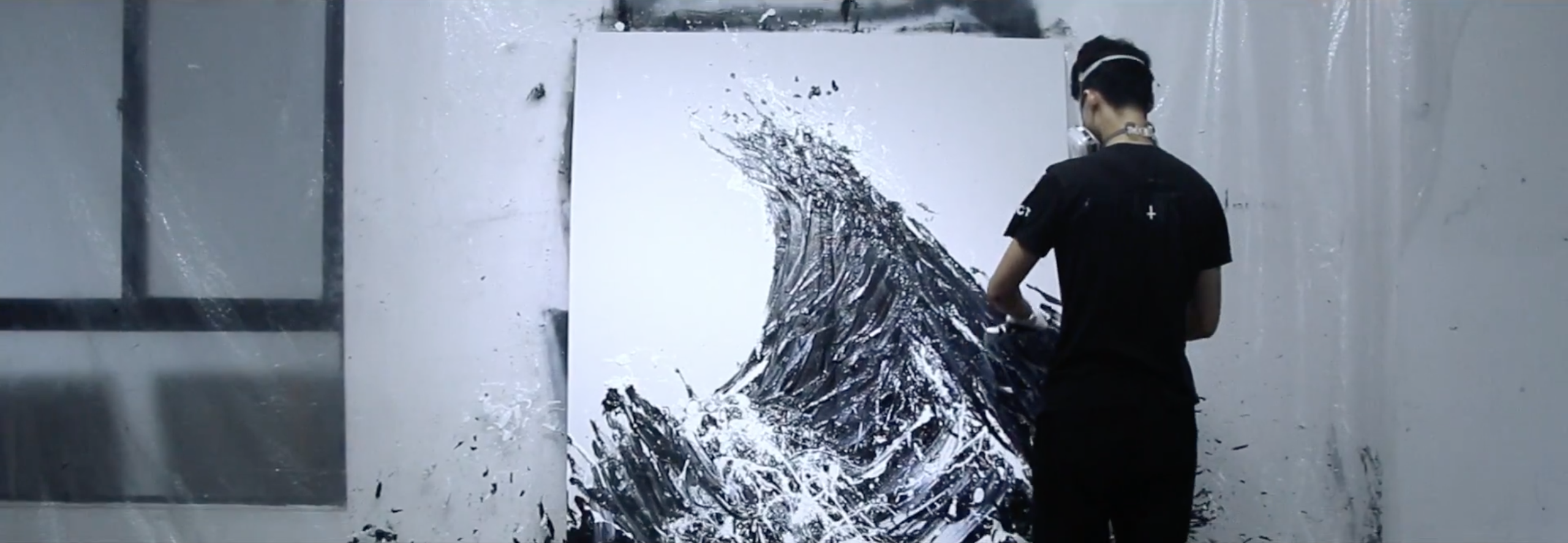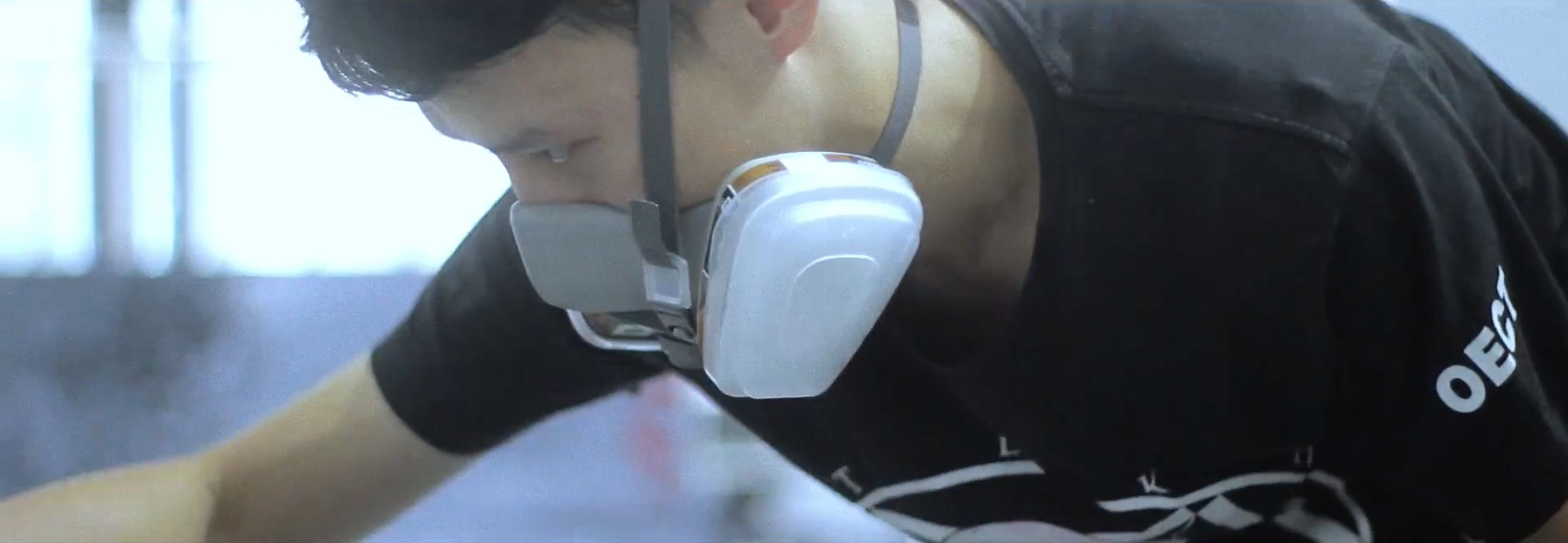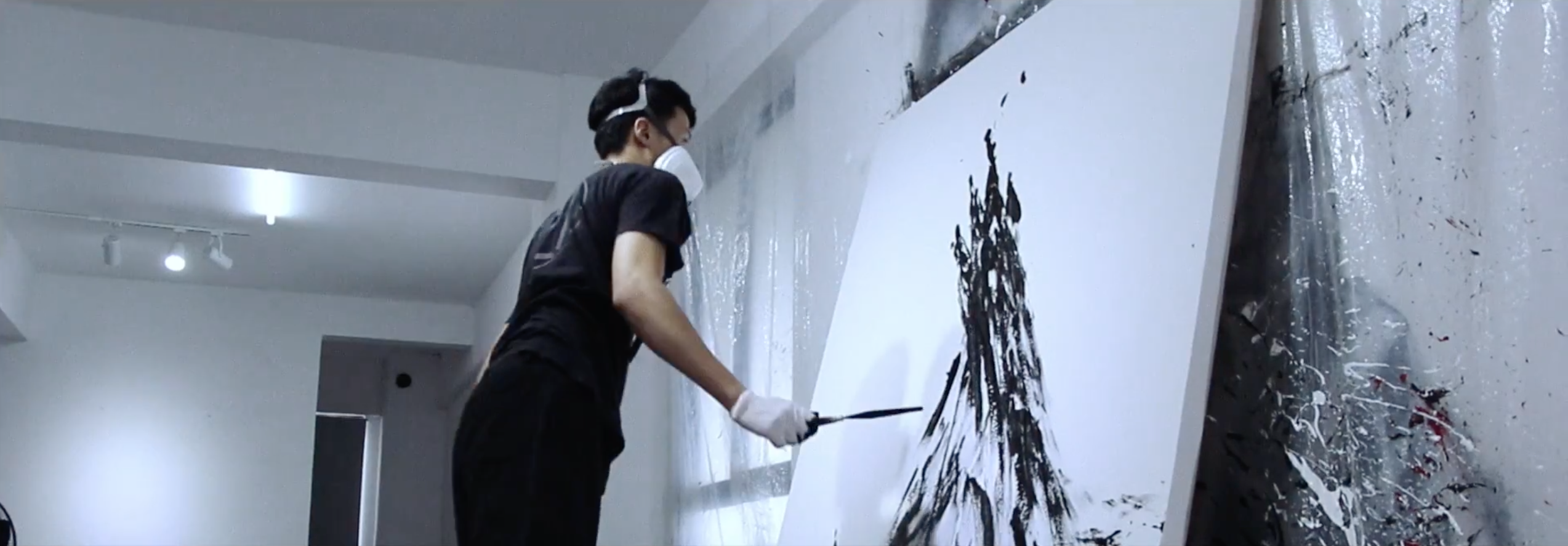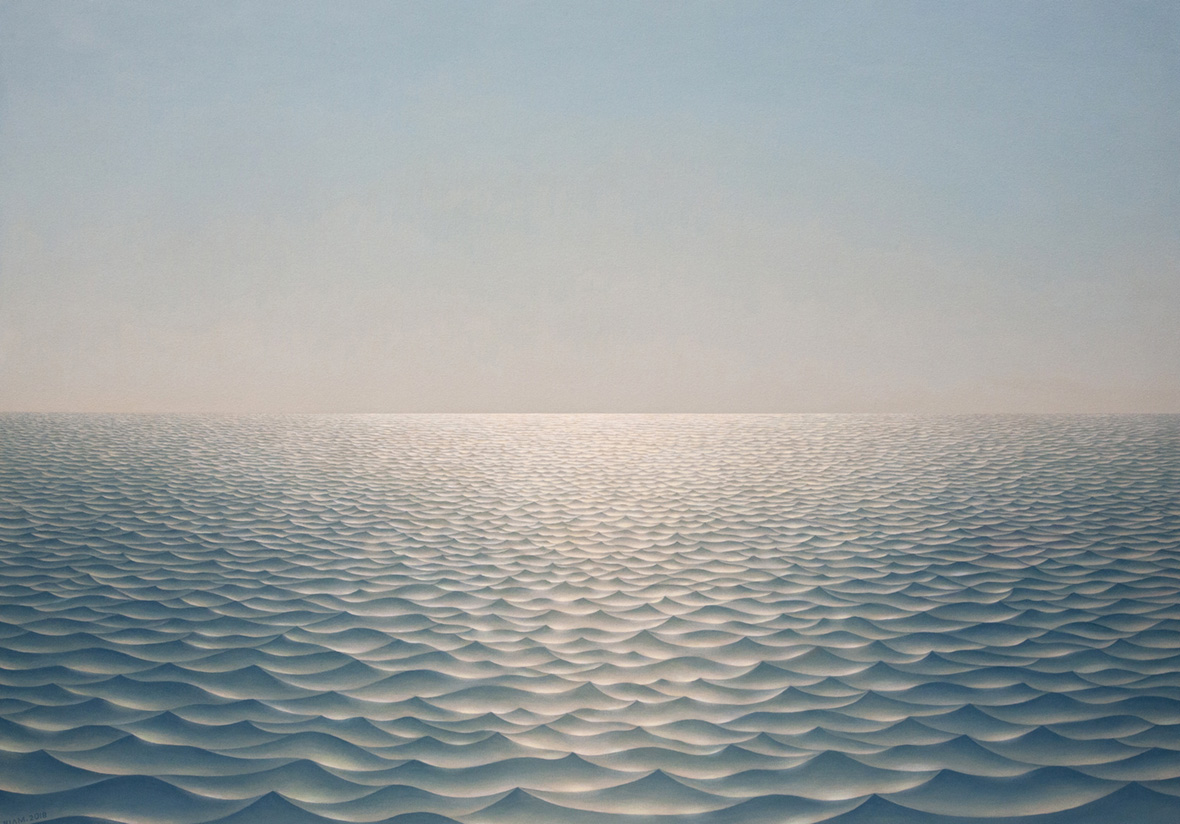
Art often starts with a simple vision, with a more thorough concept only taking shape through different stages of the creative process. On a day like any other, Thai artist Niam Mawornkanong glanced out his window and spotted a shadow on the lower part of a smooth wall. It belonged to a building on the opposite street, and the resulting shadow was cast with perfectly level lines that made him think of the sea horizon. At that moment, the idea for his next series was born.
艺术创作往往起源于一个简单的视觉构想,完整的概念往往是在随后的创作过程中,再逐渐形成的。在某一天,泰国艺术家 Niam Mawornkanong 看向窗外时,发现了光滑墙壁下方的一个阴影,这个阴影来自于对面街道的一幢建筑。平整的阴影线条,令他想起了海上的地平线。就在那一刻,他有了关于下一个系列的创作灵感。
The Sea Remembers Us is the visual expression of Mawornkanong’s subconscious, a series of intricate acrylic paintings of the sea inspired by the grandeur of the ocean and the mystery of what lies beyond its horizon. While this idea first came to mind with the casual observation of a shadow, his fascination for the real sea has grown over the years. “To me, the sea represents greatness and wideness,” he says. “It’s as infinite as a God, and it makes us realize that we are just minor living things compared to it and that our time is short compared to its infinity.”
《The Sea Remembers Us》(《大海记得我们》)是 Niam 潜意识的视觉表达,一系列以海洋为主题的丙烯画,画风精细复杂,其灵感来自于壮阔的海洋以及地平线以外的神秘领域。虽然该系列的创作灵感诞生于偶然看到的阴影,但一直以来,大海都是一个让 Niam 深为着迷的主题。他说:“对我来说,大海代表着伟大和广阔,它和上帝一样,是无限的。看着大海,让人意识到沧海一粟之感;而我们一生的时间,与它的无限相比,也不过是过眼云烟。”
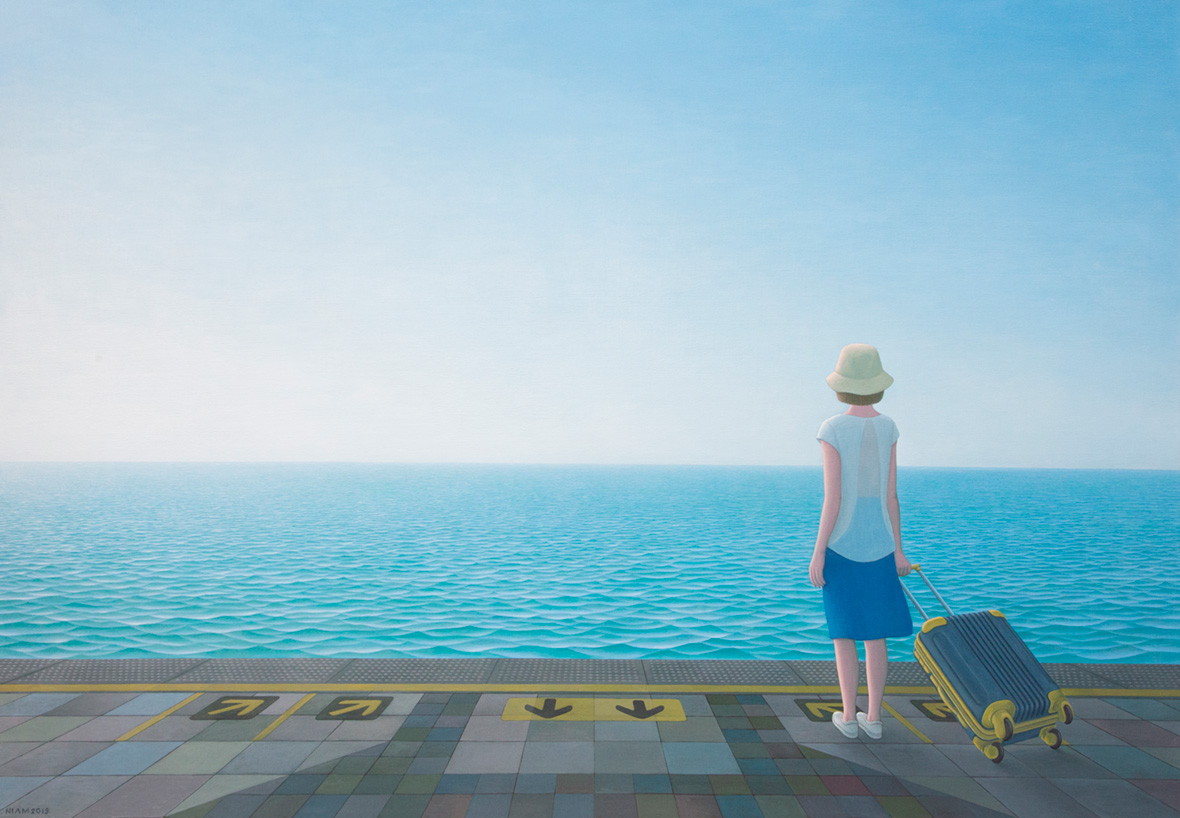
Mawornkanong works in a tiny space—a claustrophobic three-square-meter studio. But when he paints, he feels like the room swells to leviathan proportions. With each brushstroke, an expansive ocean opens up, its briny waters spouting from the canvas to engulf the space. “It can feel like my little square studio was floating alone in the middle of the sea,” he says, a sensation beautifully reproduced in the installation of his solo show last March at SAC Gallery in Bangkok.
Niam 的工作室很小,仅为三平方米的幽闭空间。但是当他在画画时,这个小房间仿佛会随之无限膨胀。一笔一画间,波澜壮阔的大海跃然眼前,海水像要从画布中汹涌漫出,淹没整个空间。他说:“这个小小的工作室感觉就像孤零零地漂浮在大海中。”去年 3 月,他在曼谷 SAC 画廊举办个展,当中的艺术装置完美地再现了这种感觉。
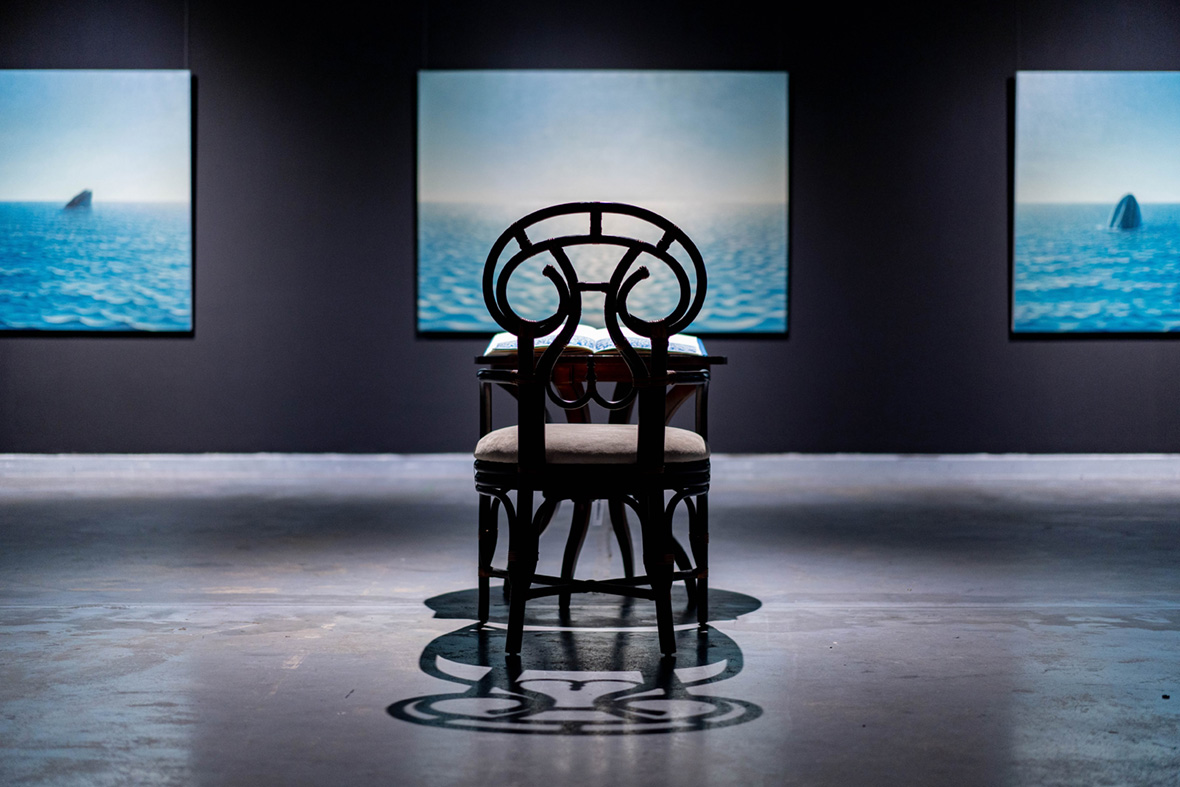
His creative process is often rather meditative. He starts by slowly drawing a smooth horizontal line on the canvas—the horizon. Next, he calms his mind and begins envisioning the surrounding scene. “It’s like when the surface of the water is calm, and we can see some things down there,” he says. Many of the things Mawornkanong “sees” relate to his personal experiences, and there’s a lot to draw from them. Still, he curates from this mental archive, choosing to depict motifs that can resonate with the audience.
“Try closing your eyes and imagining the vast sea; what’s the first thing that comes to mind, emerging from the water? Why is that the first thing that comes to your mind?” he asks. Often, what comes to Mawornkanong’s mind is a whale, which to him, a godlike animal that seems to belong in works of fiction. “It’s a mammal born in the sea that lived on the land for a long time. Then, it returned to the sea and never went back to the land. It’s like a bedtime story.”
他的创作过程是一个充满冥想的过程。他首先在画布上慢慢地画出一条平整的水平线,作为地平线。接下来,他会静下心来,开始幻想周围的景象。“平静的水面之下,才能看得清隐藏的一些东西。”他说。Niam 所“看到”的大部分都与他的个人经历有关,而这些经历带给他丰富的创作素材。他探索着自己的内心世界,选择其中一些能引起观众共鸣的元素,在纸上描画下来。
“试着闭上眼睛,想象浩瀚的大海,你最先想到的是什么,有什么从水底上浮现出来?为什么它会是你想到的第一件事?”他提出这样一个问题。通常,Niam 的脑海里浮现的是鲸鱼。对他来说,鲸鱼是一种充满魔幻色彩的神圣动物。“鲸鱼是一种诞生在海洋中的哺乳动物,曾在陆地上生活过很长时间。后来又回到了海洋,此后再也没有回到陆地上。听上去就像一个睡前故事。”
His paintings capture the sea’s ancient quality through the inclusion of cryptic, religious elements, such as a statue of the vitarka mudra, a Buddhist hand gesture representing wisdom, or the moai figures of Easter Island, all of which emerge from the tides like totems of a lost civilization. “I feel that the sea has a very long history. It exists for a very long time, and it will stay much after we are no longer here,” he says.
他还在作品加入一些神秘的宗教元素,以此呈现大海古老的气息,例如代表智慧的佛教推究手印(Vitarka Mudra)雕像和复活节岛的摩艾石像。这些元素像失落的文明里的图腾一样,浮出海面。他说:“我觉得大海有着非常悠久的历史,它存在了相当长的时间。即使哪一天人类从地球上消失后,它还会继续存在很长的时间。”
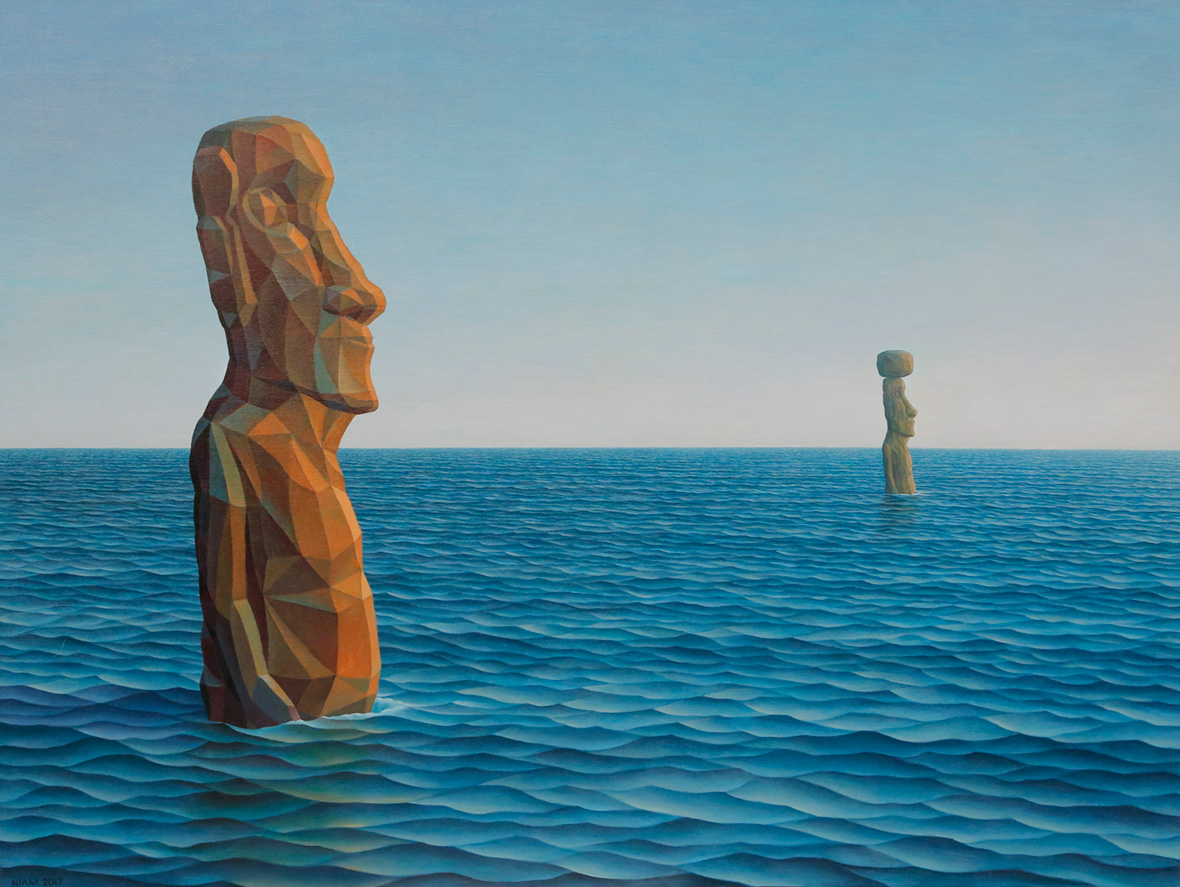
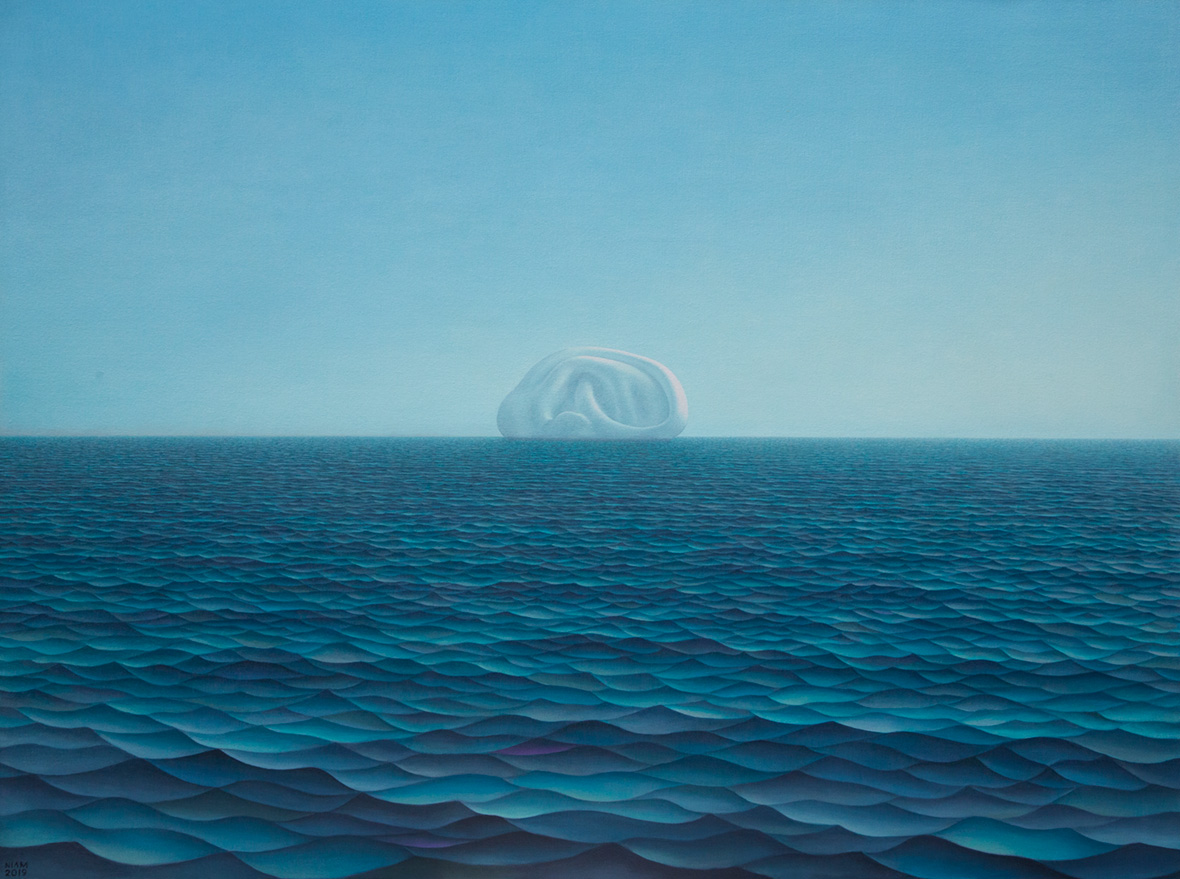
Mawornkanong enjoys working at night, and he often looks out the windows to the unlit landscape, in the hope of spotting strange wildlife in the darkness. “[The night] is quiet, and people are sleeping. It’s the right time for them to come out,” he says. And in many of his paintings, plenty of peculiar creatures populate nocturnal seascapes, floating about in swathes of dark indigos like luminescent sea spirits.
Niam 喜欢在晚上创作,他经常会望着窗外漆黑的风景,希望能在黑暗中发现一些奇怪的动物。“夜深人静的时候,人们都在睡觉,正是动物出来的时候。”他说。在他的画里,各式各样的奇特生物出现在夜间的风景中,漂浮于深邃的靛蓝色调中,仿佛发光的海神。
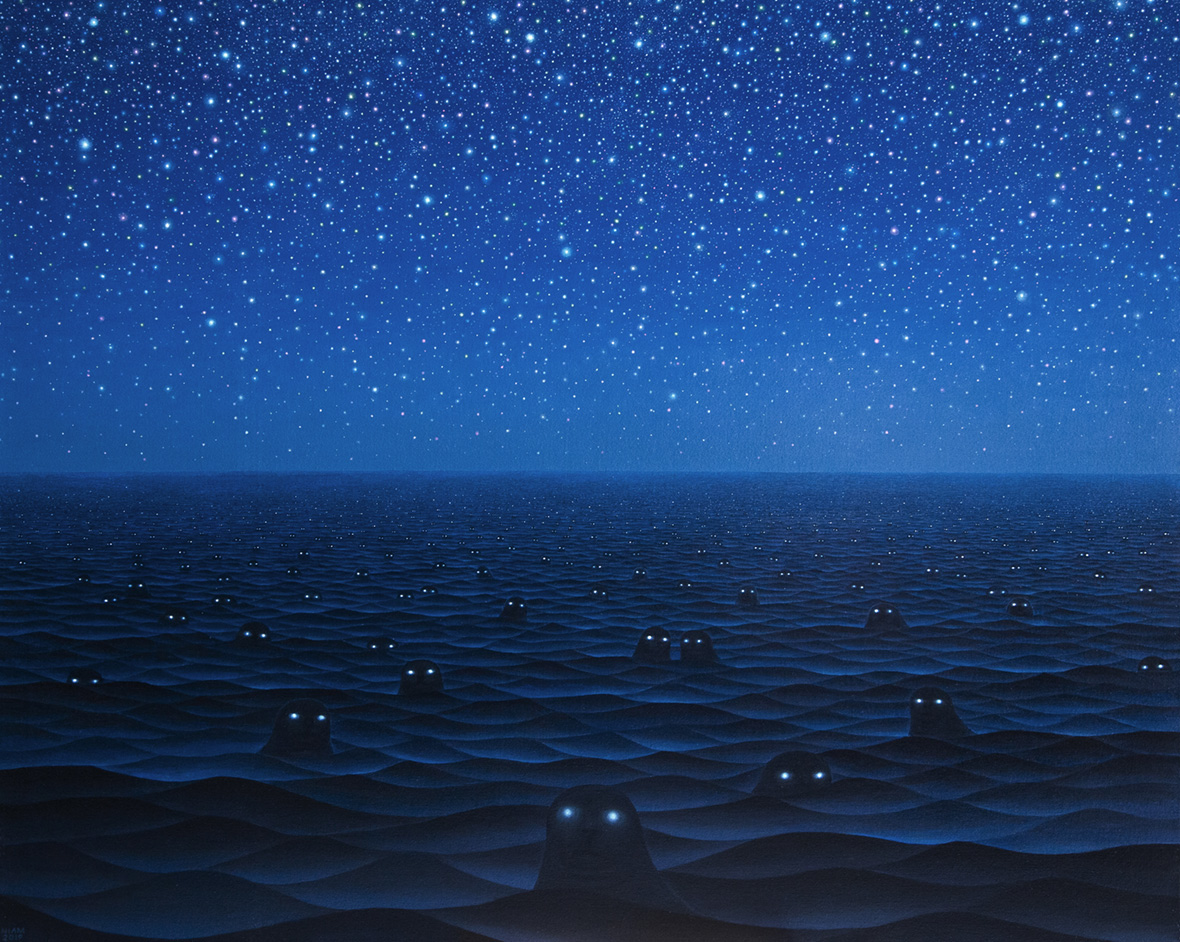
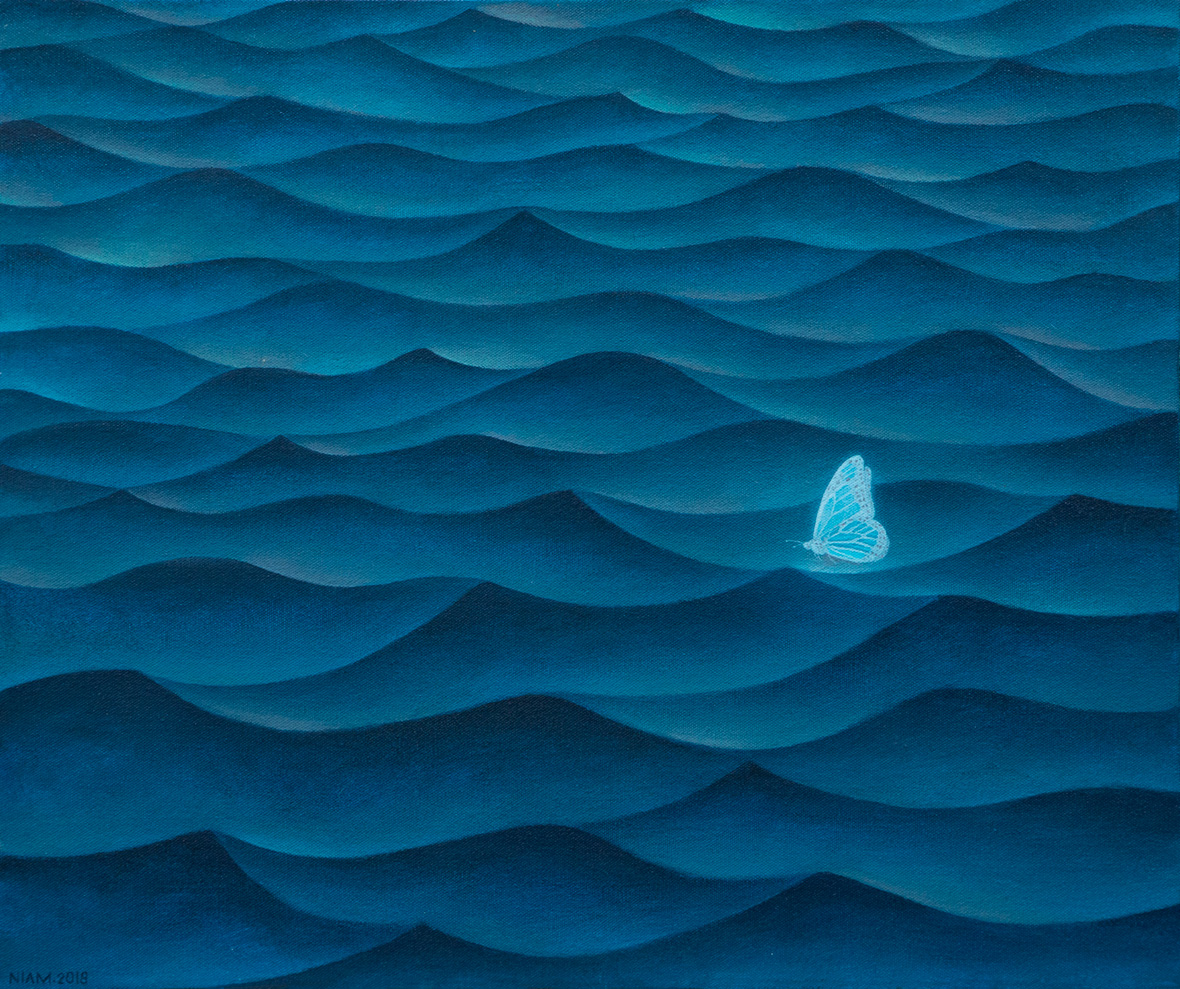
The interaction between the sea and the sky is another frequent feature in Mawornkanong’s works. He often portrays the sky as the sea with flying stingrays and jellyfish, and, in one instance, a diver swimming along with the clouds.
“When you dive, you feel like you’re floating in the air,” he says. “And when the fish swim in the sea, it’s like they’re flying freely in the sky. The water is the sky for them. But there’s a real sky that they’ve never met. I wonder what the stingray would feel in the sky. What about us? What’s up there for us?”
此外,海与天的交互是 Niam 作品中的另一个特征。他喜欢把天空描绘成大海,上面是飞行的黄貂鱼和水母;然后在另一幅作品中,又让潜水员在白云中畅泳。
“潜水的时候会感觉自己仿佛漂浮在空中;而当鱼在海里游动时,它们又像是在天空中自由飞翔,海水就是它们的天空。但它们从未到达过真正的天空。”Niam 说道,“我很好奇黄貂鱼在天空中飞翔时会有什么感觉。而人类呢?我们到了天空上又会怎么样?”
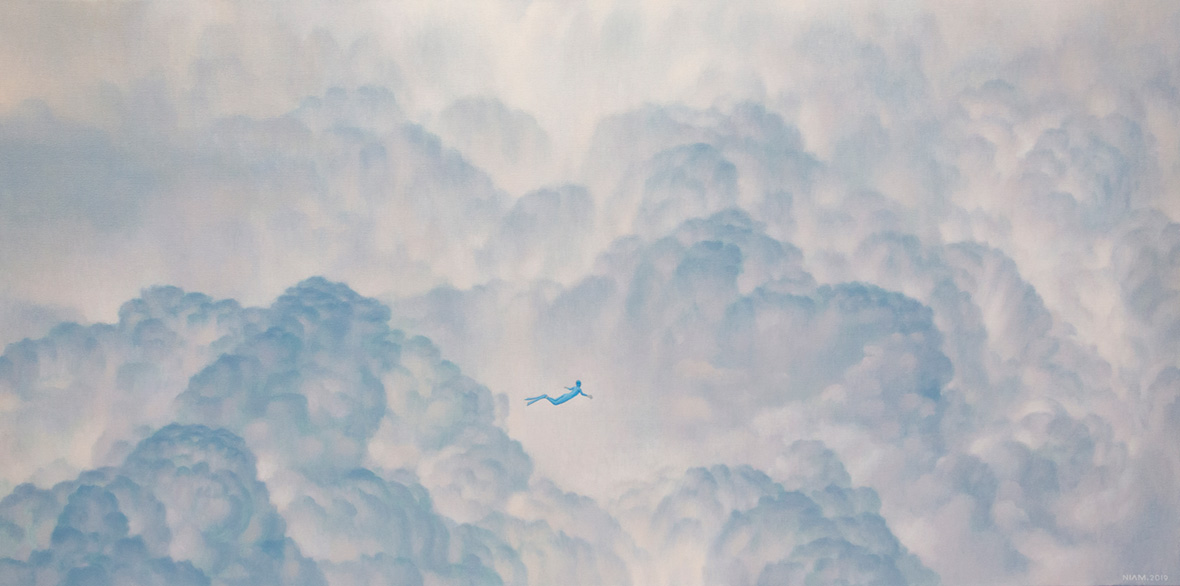
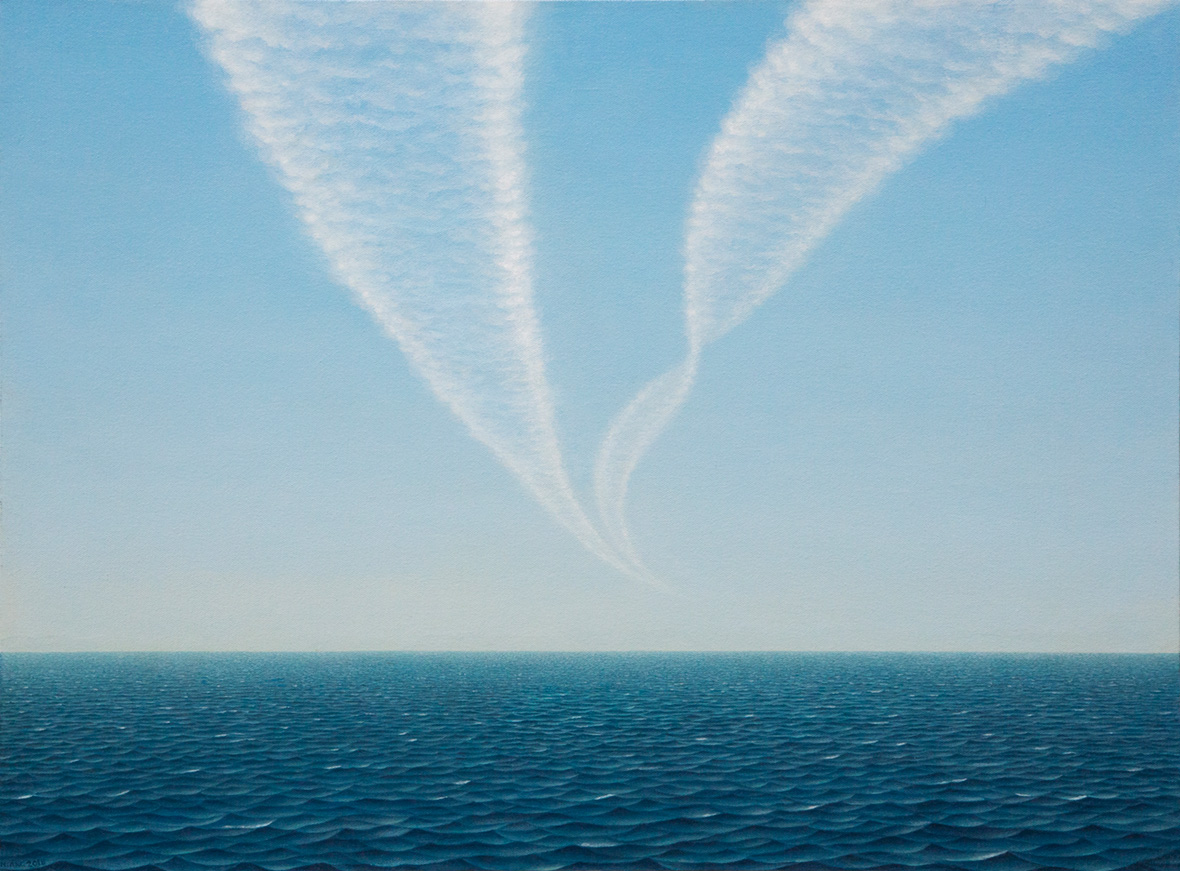
Mawornkanong grew up in Samut Prakan, an industrial town outside Bangkok. He moved to the Thai capital to study art but dropped out of art school to enroll in religion and philosophy courses, or “the sciences that would answer my many questions about life,” as he puts it. His family was never supportive of him becoming an artist. “They saw me as a rebel. It has been my trauma—they still have not accepted me,” he says.
自小在曼谷郊外的工业小镇 Samut Prakan 长大的 Niam,后来去了曼谷学习艺术,但中途又从艺术学校退学,转而修读宗教和哲学课程,用他的话说,这是“一种能解答我人生许多问题的科学”。一直以来,他的家人都不支持他成为艺术家。他说:“他们把我看成是一个叛徒,这是我心结。他们一直都不愿意接受我。”
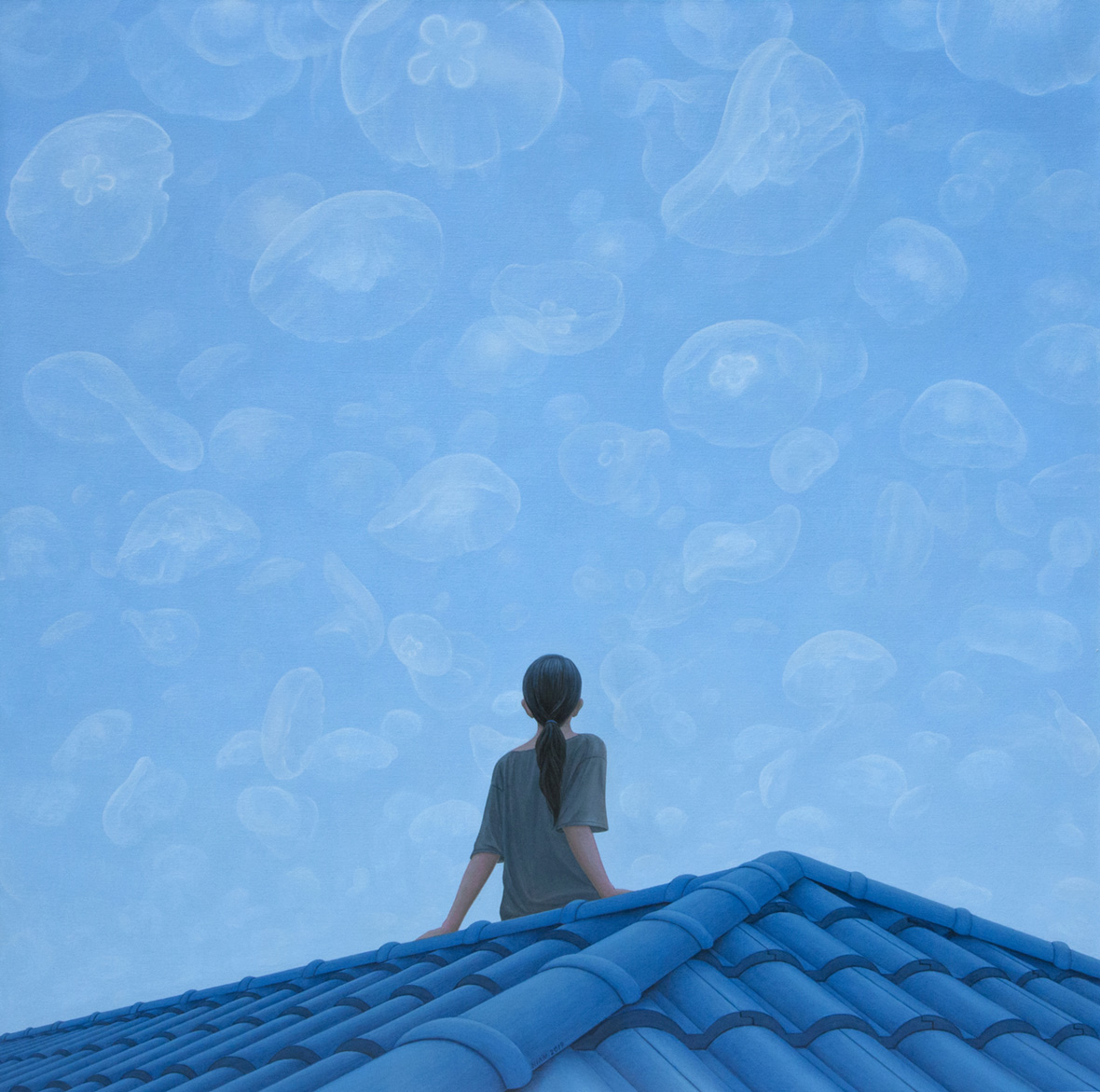
Mawornkanong’s sea is invariably calm. Even when disturbed by natural or unnatural phenomena, it’s always a tranquil sight. His paintings have a soothing effect on viewers, as they had on him while he was painting. His creative energy was liberating and cathartic. “It was like art therapy. It began with helping myself. While I was working on these artworks, I could calmly spend time with the smooth horizon line and live with the deepness of blue,” he says. “I hope that the viewers can also feel what I felt.”
Niam 笔下的大海总是一片风平浪静,即使受到自然或非自然因素的干扰,也总是一派宁静。他的画不仅能抚慰观众的心灵,也能在他创作时平静他的内心。对他来说,创作是一种解放和宣泄。他说:“画画就像是一种艺术疗法,首先得到帮助的是我自己。当我在创作,在描画平静的地平线以及大片深邃的蓝色色调时,我的内心总能保持平和。我希望观众也能和我有同样的感受。”
Like our stories? Follow us on Facebook and Instagram.
Instagram: @niam_al
Facebook: ~/niamal
Contributors: Tomas Pinheiro, Lucas Tinoco
Chinese Translation: Olivia Li

